This blog post contains Amazon affiliate links. As an Amazon Associate, I earn a small commission from qualifying purchases.
Want to check out my favorite Amazon items for the classroom? Check out my Amazon favorites page!

August 10, 2015 – Definitive Proof
I know some people believe that blogs should be 100% personal or 100% professional. I’ve never been one of those people. I love reading about what you guys, my MTBoS friends, are doing in your classrooms, but I also love reading about your adventures outside the classroom. I like hearing about your hobbies, your kids, your shopping adventures, or even what you ate for breakfast on occasion.
The MTBoS. We aren’t a group of professionals sharing best practices. We’re a group of friends sharing what we love. It just so happens that each and every one of us loves math. 🙂 And, along the way, we’ve found out that we have a whole lot of other things in common, too.
I’ve made a lot of friends through the MTBoS. Friends who challenge me to think critically about the way I do things. Friends who support me. Friends who inspire me. Friends who make me laugh. Friends who just naturally “get” me.
This post isn’t about friends in general, though. It’s about one specific friend I’ve made in the MTBoS. A blog reader who became a tweep. A tweep who became a friend. A friend who became my best friend. Now comes the time where I tell you that I’ve been keeping a secret from you since May. A really big secret. The biggest secret I’ve ever kept. The hardest secret I’ve ever kept. The most life-changing secret I’ve ever kept.
You might have noticed a lack of blog posts about Twitter Math Camp. That’s because I wasn’t at Twitter Math Camp. I wasn’t even in the United States.

I guess it’s time to properly introduce you to my favorite member of the MTBoS. Meet Shaun. No, he’s not a kangaroo. But, he is the reason I spent my summer in Australia.
Shaun is a secondary maths teacher in Australia who blogs at The Prime Factorisation of Me and tweets as @theshauncarter. A little over a year ago, he discovered the MTBoS and started blogging himself. He caught my attention when he started leaving comments on a few of my posts and even mentioned me in a blog post. I clicked over to his blog and decided to subscribe.
I left a few comments myself. How could I not when he was blogging about stuff like math games, foldables, and cutting and gluing in math class? Unfortunately, Shaun’s comments weren’t working one day, and I ended up having to tweet him instead of leaving a blog comment. The more we tweeted back and forth, the more we realized just how much we had in common outside of being math(s) teachers. Tweeting led to Skyping. Skyping led to dating. Dating led to Shaun spending his summer in America. And, that led to me spending ten weeks of my summer in Australia. And, on the day I got off the plane, this happened:

My best friend asked me to marry him. Of course, I said yes. You can read Shaun’s version of the story here.
And, there you have it. Definitive proof that Math = Love.
August 14, 2015 – RedditGifts for Teachers 2015
Hey guys!
Super quick post because I’m supposed to be working on getting my classroom ready for students who’ll be showing up NEXT WEEK! Just wanted to let you know that sign-ups are open for the RedditGifts for Teachers 2015 Exchange (LINK REMOVED 1/29/22 – EXPIRED). I participated in this last year, and I was matched with an awesome donor. If you are in need of supplies for your classroom, just sign up and fill out a short questionnaire to be matched with a donor. Be sure to sign up by August 24th!
August 22, 2015 – First Day of School
Day 1 of Year 4 is in the books! I greeted students in the hall before second period. I’m back to having first period plan this year after having last period plan for the last two years. I had planned to give them each a high five, but I chickened out. I’ve never been that outgoing of a person, and I let that excuse win or a little while. When students entered my classroom, the found these instructions on the SMARTboard:
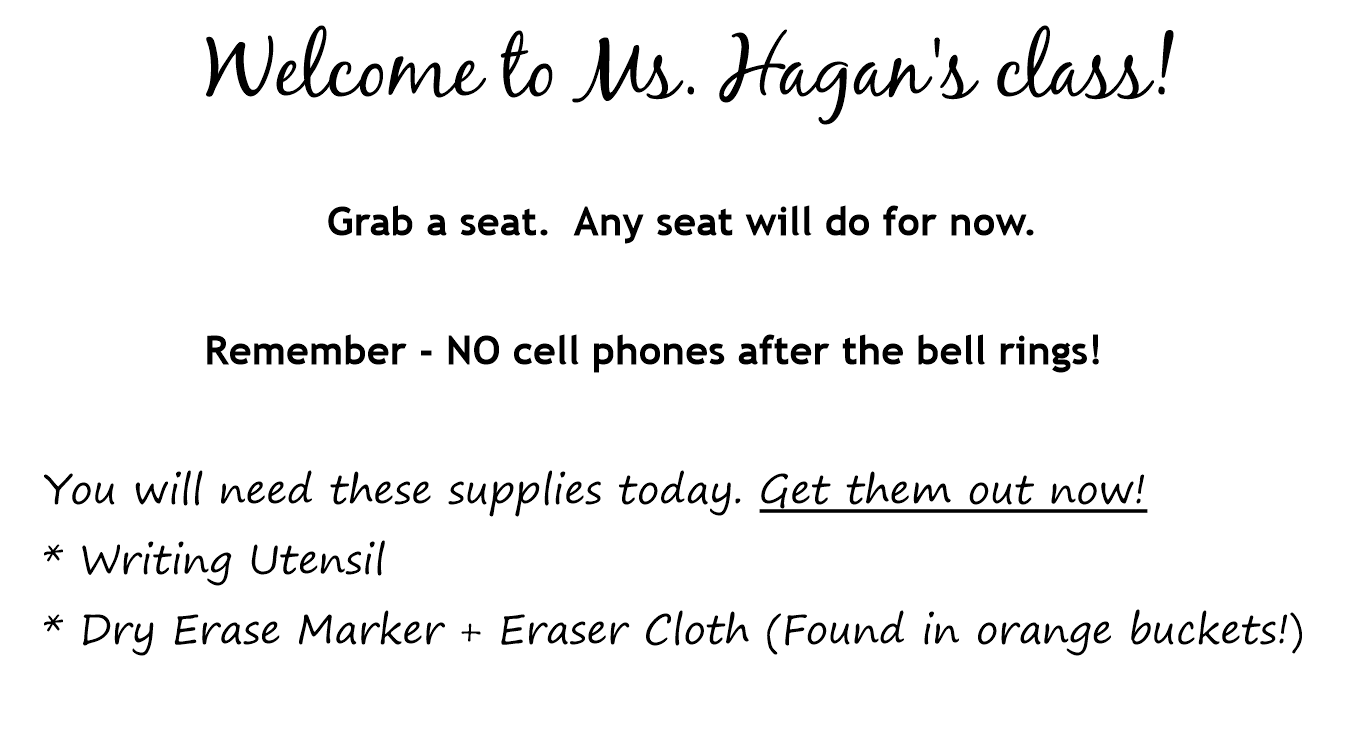
Meanwhile, I kept standing in the hall, having an internal battle with myself regarding the high five thing. I’d told myself I was going to do it. Why wasn’t I doing it?!?
I peeked in the door to see if students were actually reading the instructions and getting the supplies out.
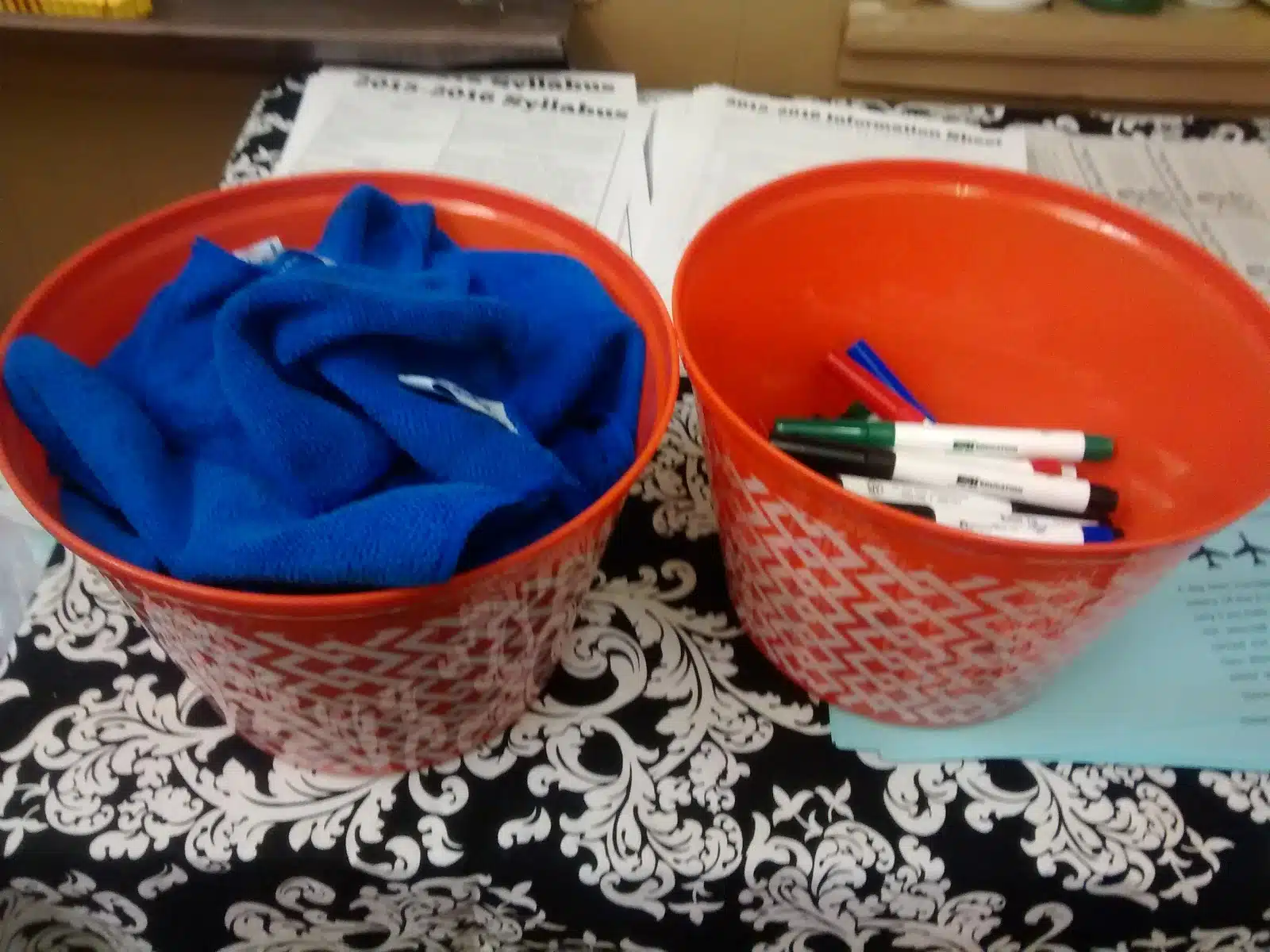
A few students had complied with my request. The others were distracted by talking to their group members. I’ve decided to go back to having my desks in groups of four. Ignore the lack of decorations in various places. I’ll finish decorating. Eventually.
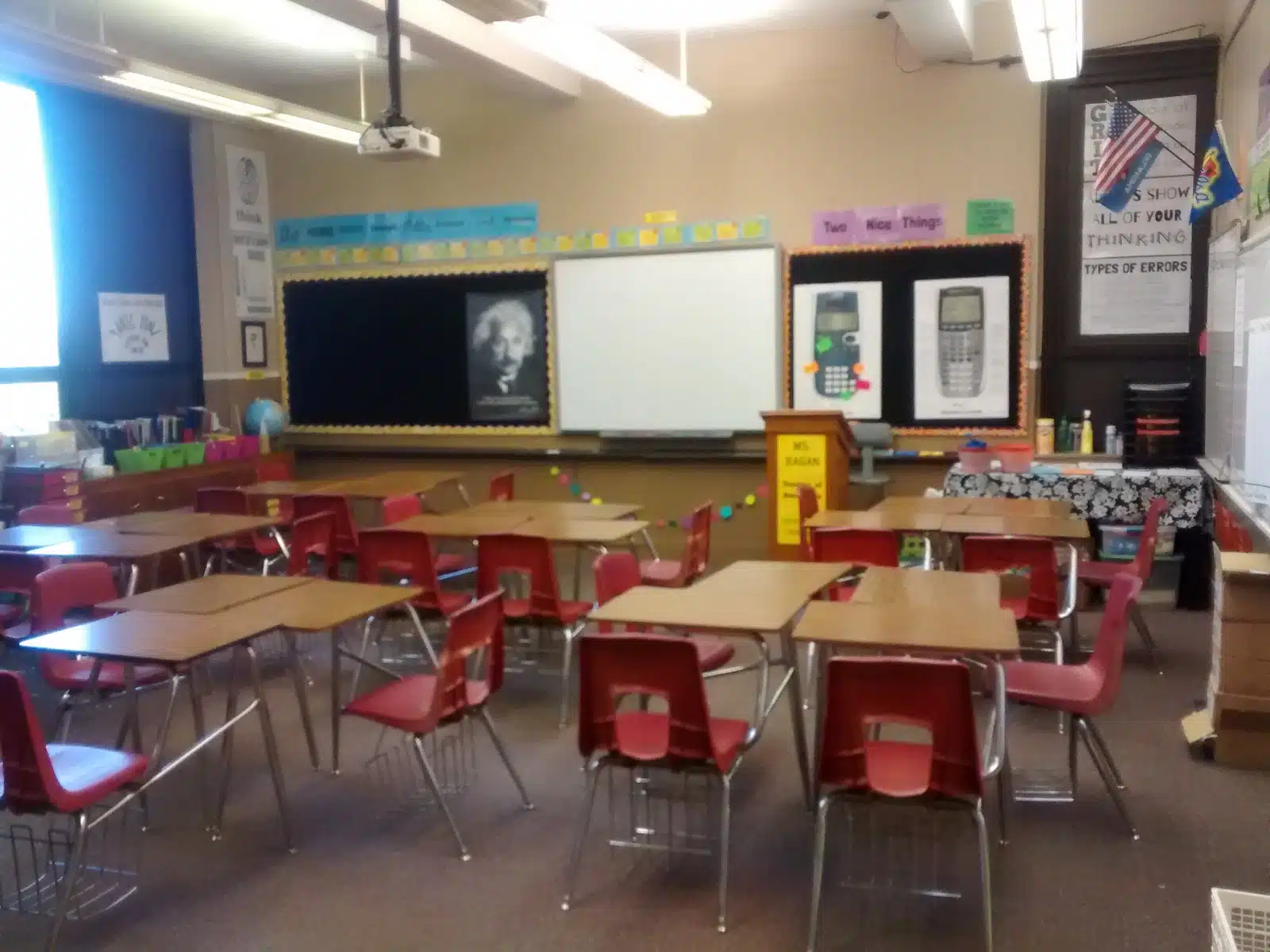
When the bell rang, I decided I was going to walk in the room and high five every single student who had gotten out the supplies like the board directed. The first few students I high fived gave me weird looks. I had trouble getting their attention. These were wimpy high fives. A few students excitedly held their hand up to get a high five, and I refused. Eventually, they figured out that only those with supplies had got high fives. Once the other students got their supplies, I gave them a high five, too.
I did this 2nd, 3rd, 4th, and 5th hour. 6th hour Algebra 1 came in, and not a single student got supplies. So, no high fives. I guess I was feeling a little frustrated because I didn’t end up giving a single high five that hour. I had to tell them to read the board, and even then, it took a long time for anyone to realize they were supposed to be doing something. The next class comes in. Again, not a single student reads the SMARTboard. 🙁 No high fives that hour either.
I wish high fiving students came easier to me. I wish I could say it made a huge difference in my class demeanor. But, I haven’t seen that yet.
Once all the students had their supplies, I announced that they would be taking a quiz. I set the SMARTboard timer for 4 minutes.

They moaned and groaned about having to take a quiz on the first day of school. Though, most of that stopped when they saw the questions.
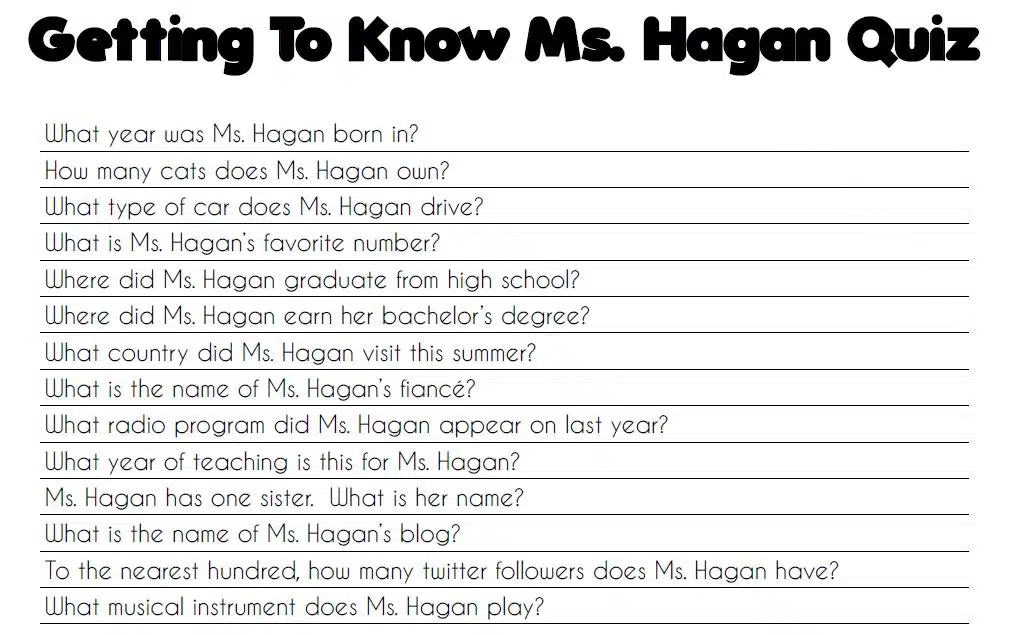
The students who have had me before obviously excelled at this quiz. My incoming freshmen were just guessing. I think both of those scenarios are okay. I gave them four minutes to take the quiz, then I went over the answers.
The student with the highest score got a super star badge sticker to wear for the rest of the day. My high school students are obsessed with stickers. I heard so many times, “Why can’t we all have a sticker? Don’t you think we’re all super stars?”
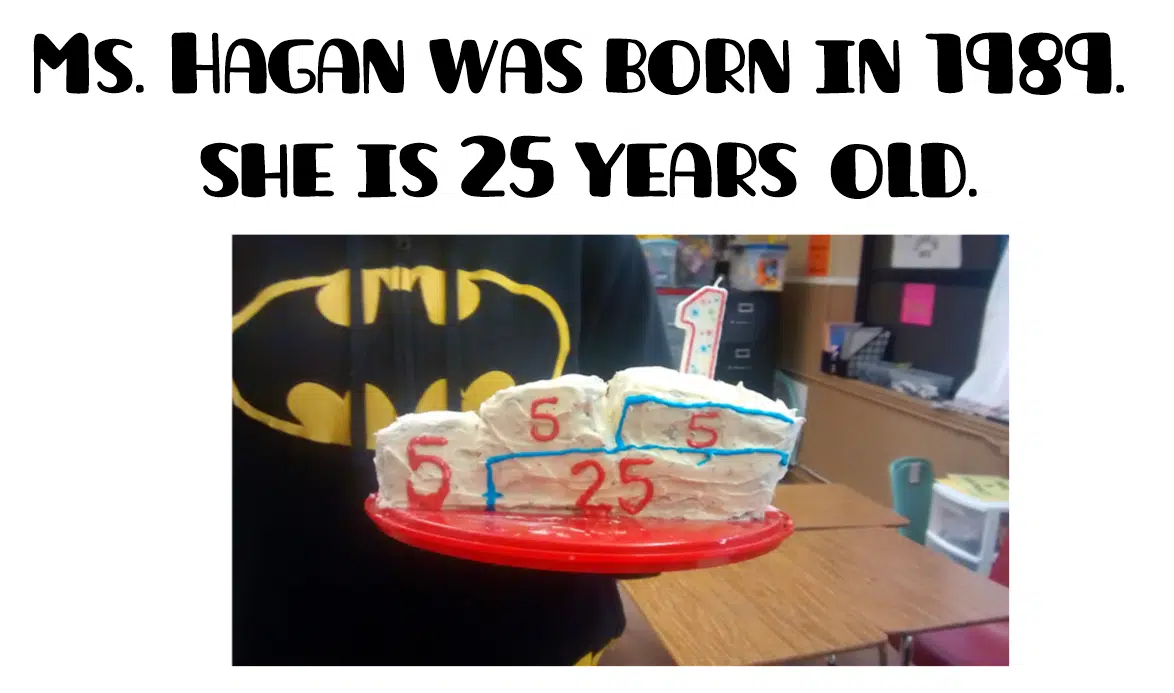
I had to include a pic of my birthday cake that a student made for me last year!
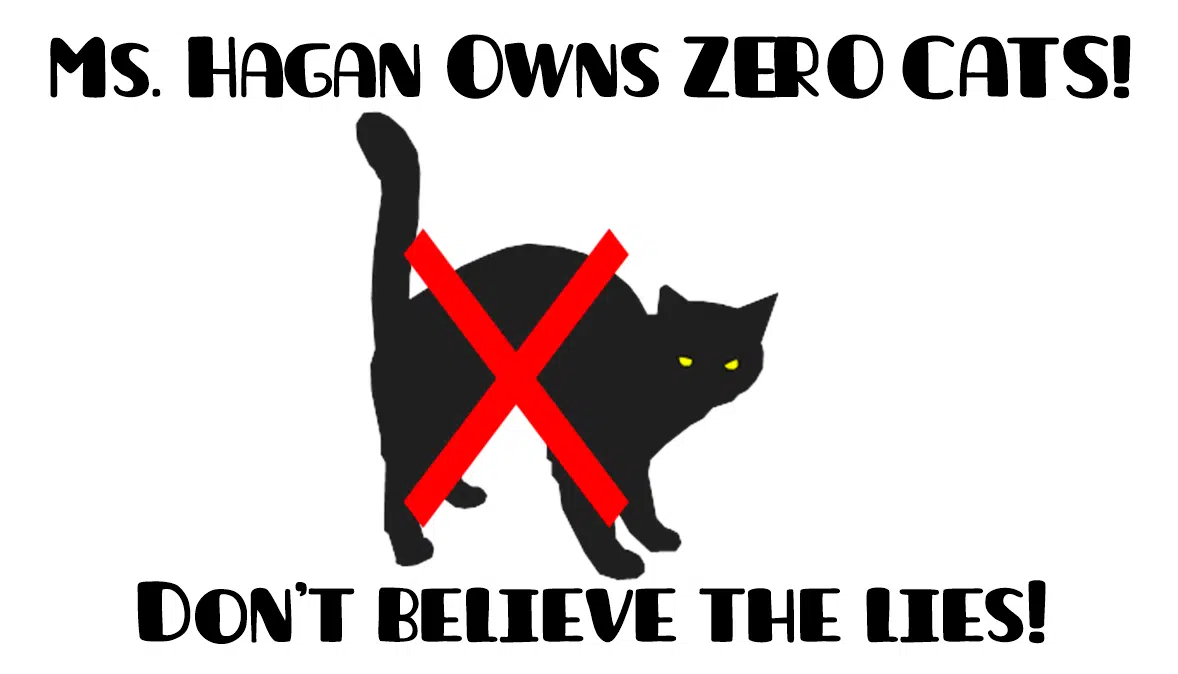
Next, I tried to squelch the rumor that I’m a crazy cat lady. Once student said I had 67 cats on their quiz. This. Is. Unacceptable.
More proof I need to share this fact with the school? I don’t think this picture needs a caption.
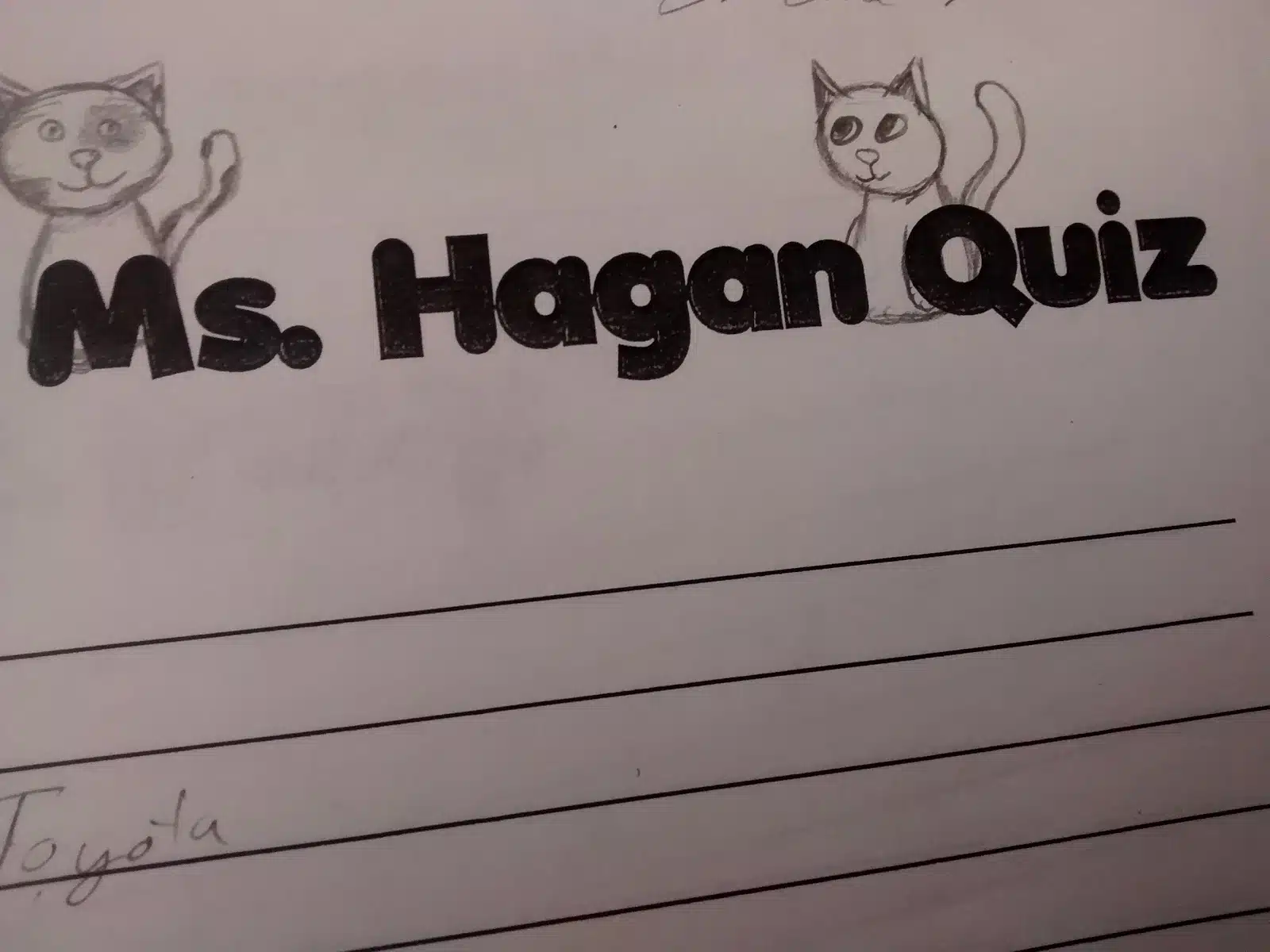
Yeah…

Kids always seem to want to know what kind of car I drive. One student put “Grandma Car” on his quiz. Yeah, I’m not talking to him anymore. 😉
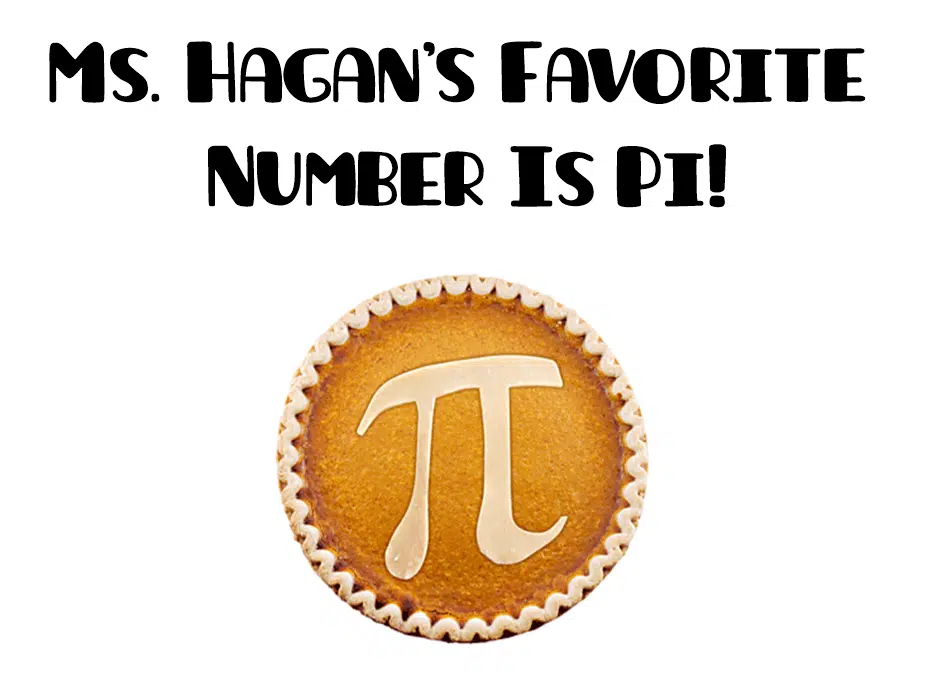
This led to some interesting conversations. Is 3.14 a correct answer? Several students tried to convince me that they just rounded pi to 3. Uhmmmm…no.
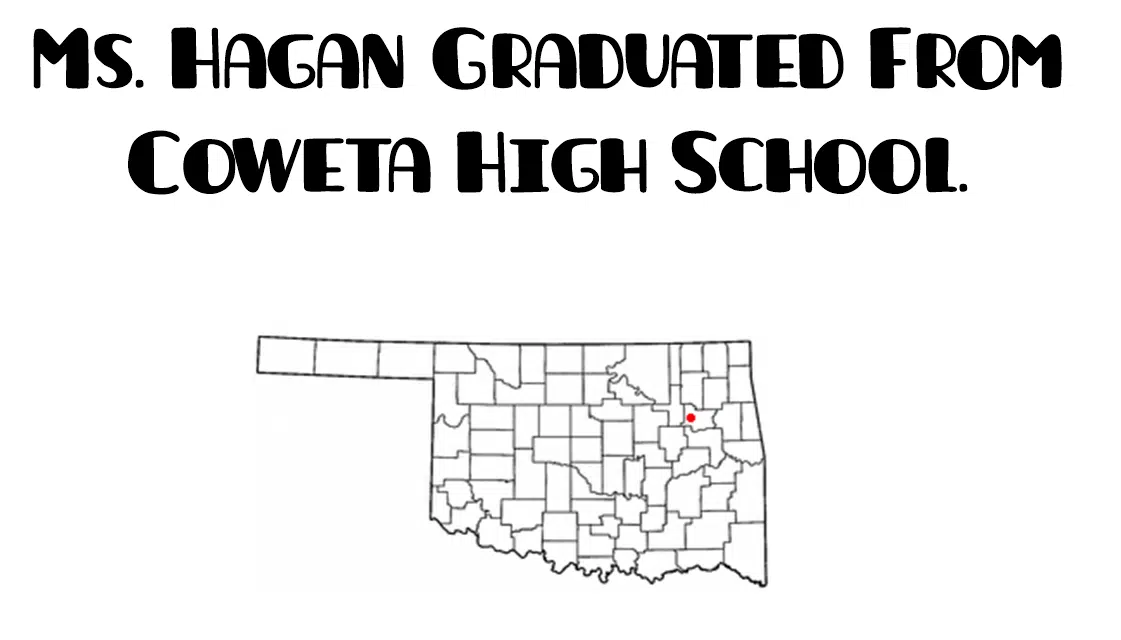
I grew up an hour and fifteen minutes away from where I teach now.

Some observant students used my TU flag that’s hanging on the wall to help them with this question.
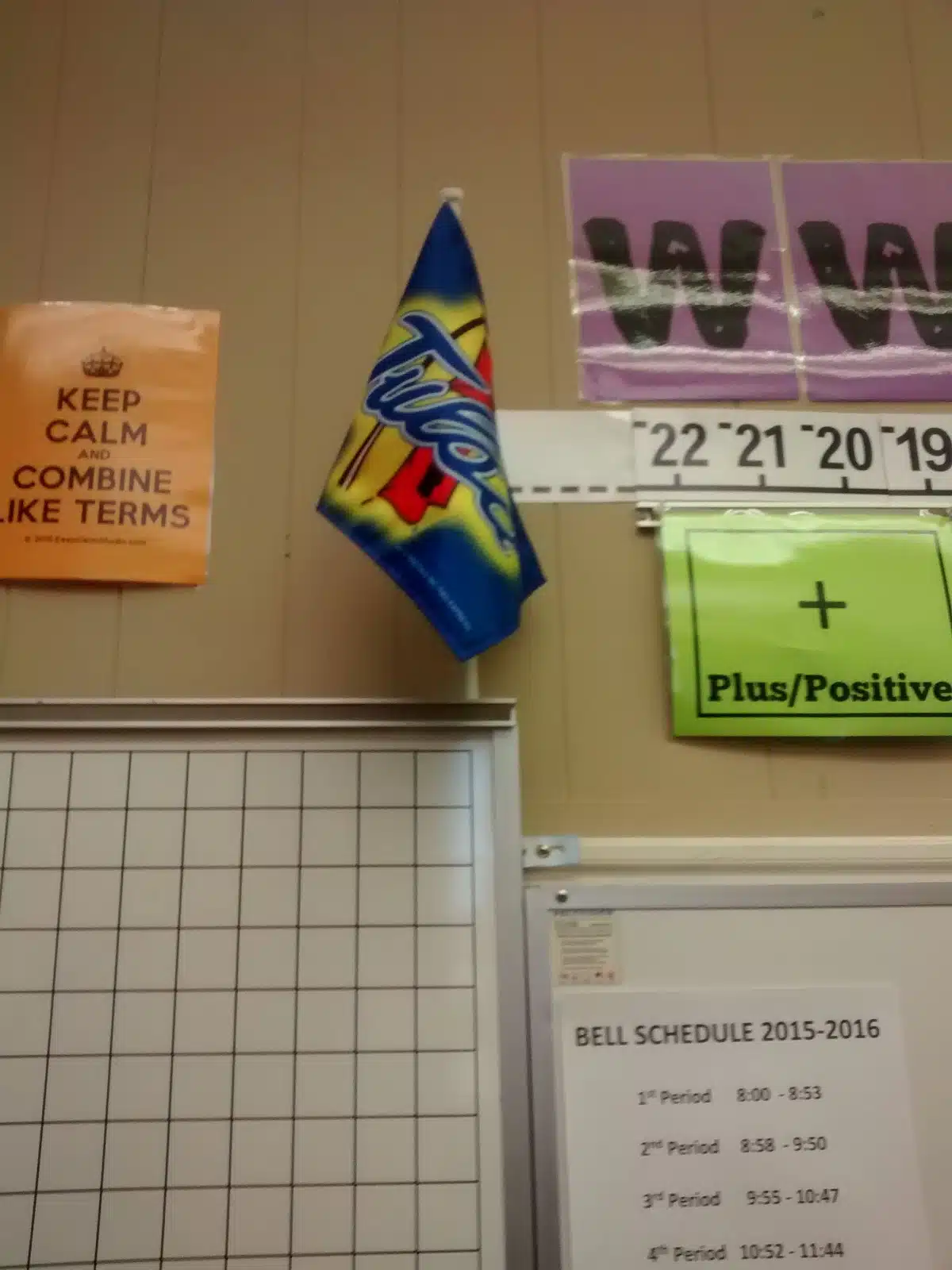
Then, we talked about my “engaging” summer vacation.

Why, yes, I did include this question about my fiance on my quiz because I wasn’t exactly sure how to tell my students I got engaged this summer. #neverhadthatproblembefore #nevergoingtohaveitagain
The kangaroo sitting on my desk could have served as a clue to this one!

It took some students a little while to clue in that my trip to Australia and my fiance were connected… When they did realize it, they started making statements like “You’re fiancee doesn’t look Australian!” And, at least five students asked if he spoke with an Australian accent. Hello, he’s from Australia.

A few students were miffed that they only found out about my engagement today. Sorry! One student told me that another student and her had been talking about how they never expected me to get married because I have so many cats. Yes, the problem is real.
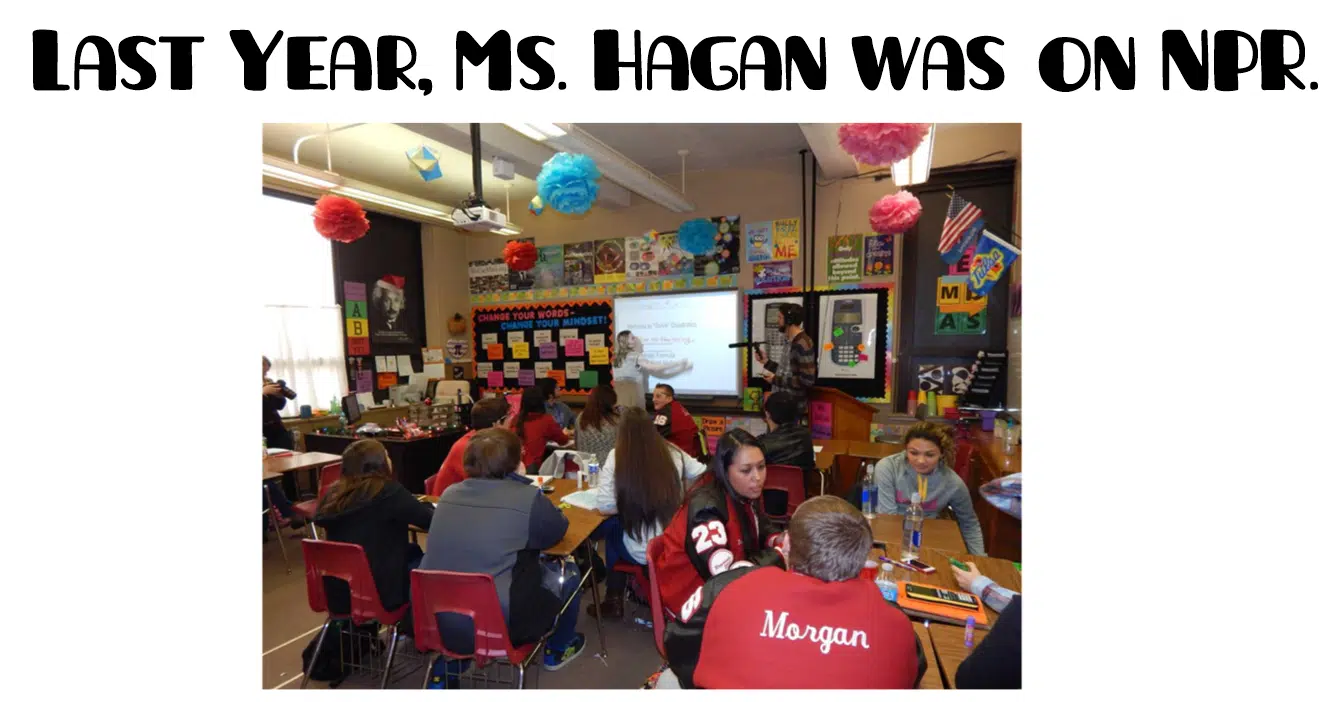
My freshmen had no clue what NPR was… But, my students last year hadn’t heard of NPR either.
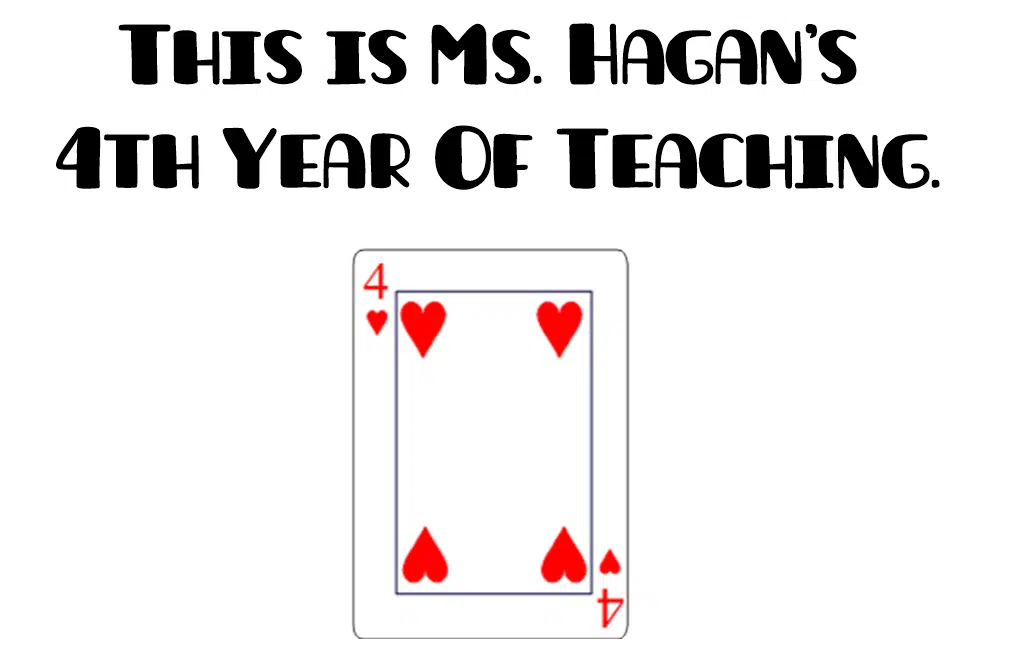
So many of my seniors were my first ever Algebra 1 students. We’ve been through a lot together. I think I’m definitely going to cry a lot at this year’s graduation.
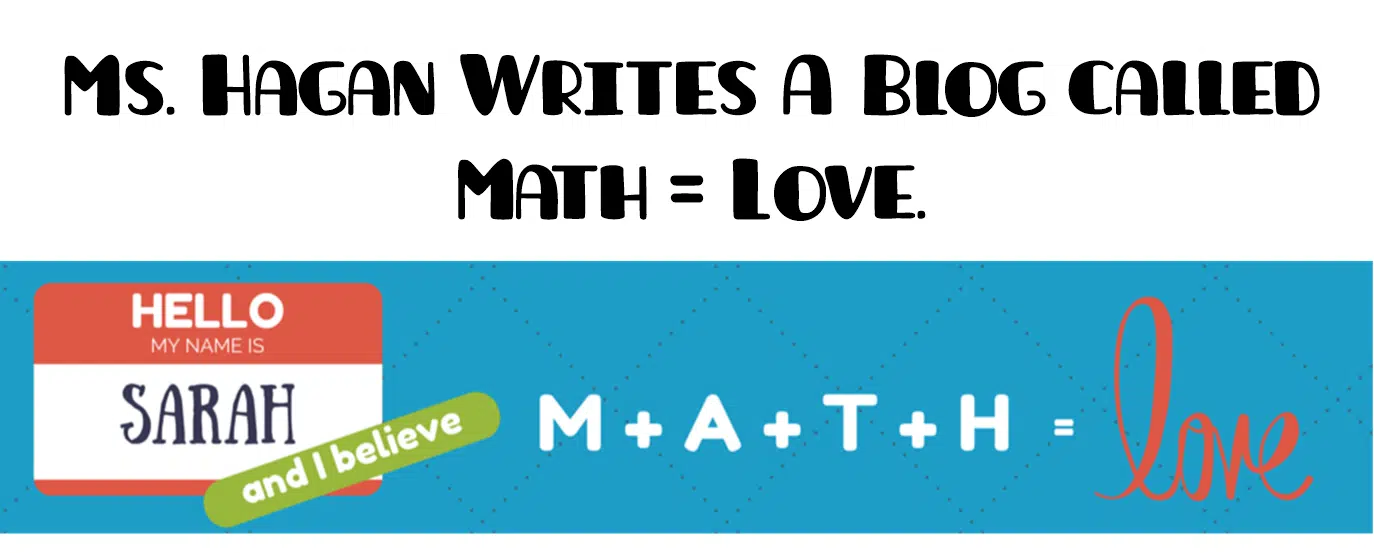
One student thought my blog would be called “Math is Awesome.” I told them that math was awesome. Then, they assured me that was only their guess, not their actual feelings about math. Sad day.
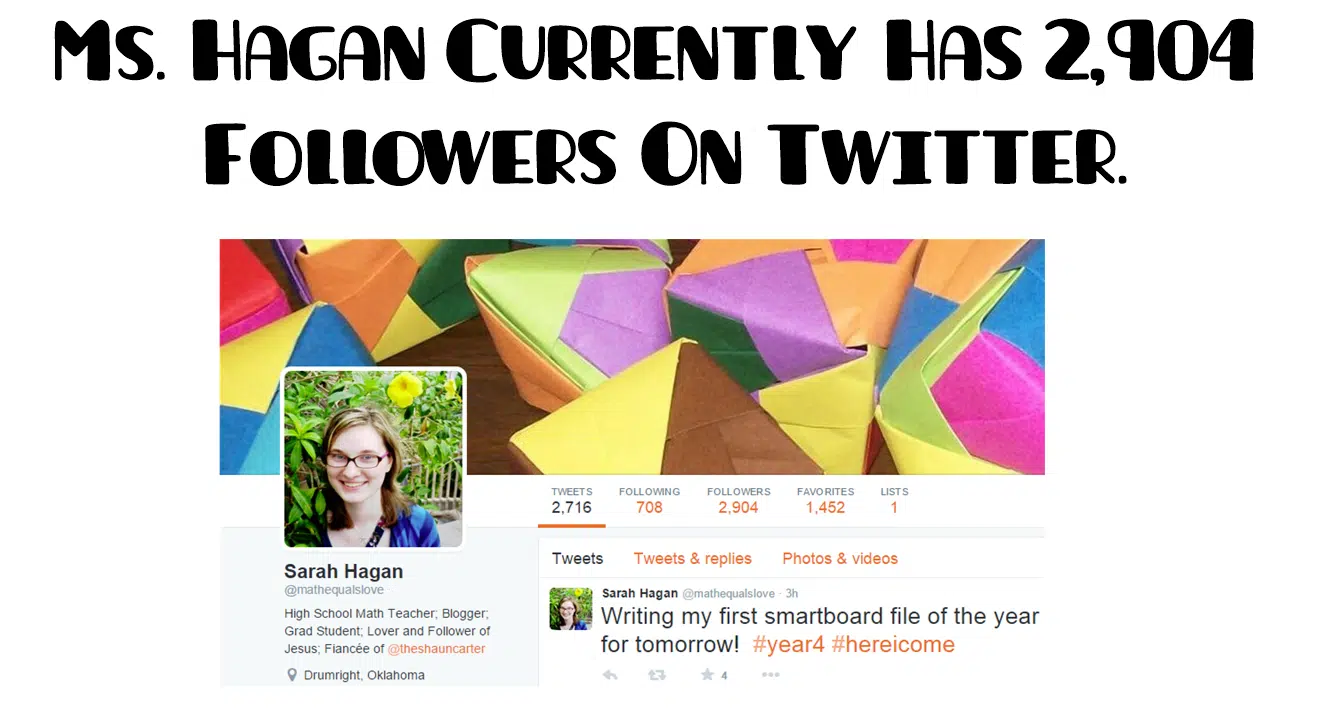
They were a little shocked about how many more followers I have than them on Twitter. “I didn’t think you’d be that popular.” Ouch.
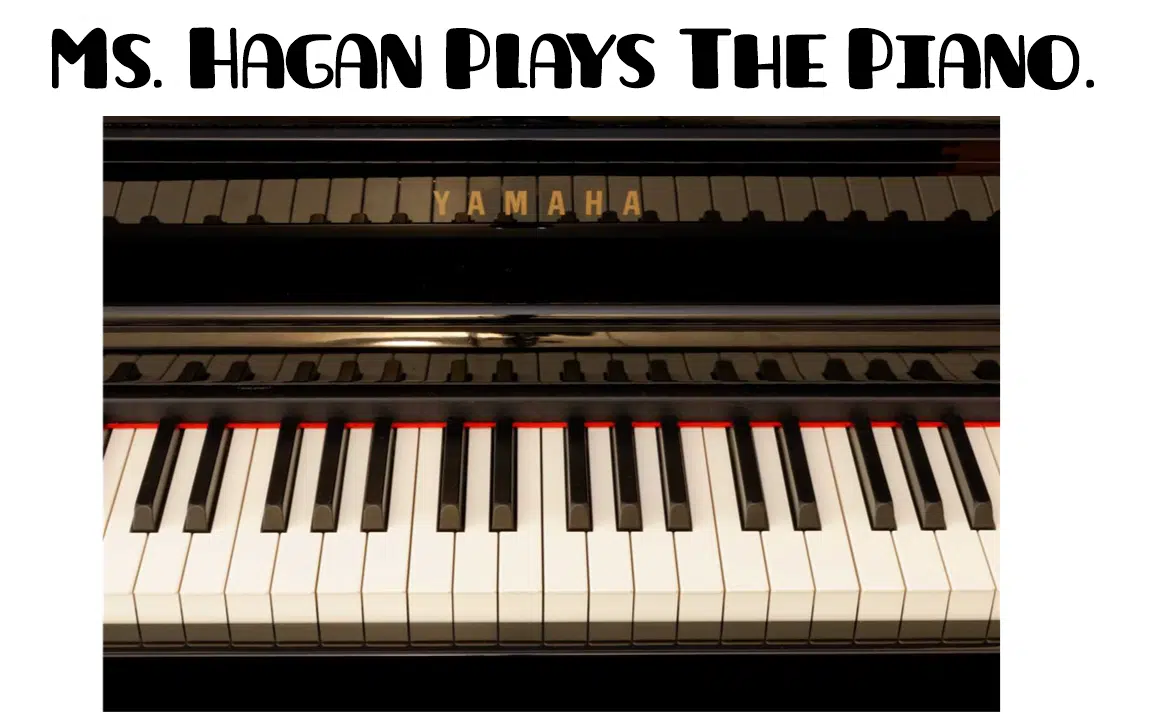
So many students thought I played the flute instead of the piano. Though, one said she was shocked at this question since I didn’t seem musically inclined. Oh, my students are full of opinions!
They turned their quizzes over to reveal a template for them to write a quiz for me to take. Students had to write 7 questions with numerical answers about themselves. They struggled a lot with the numerical part. Once student asked me what their last name was as one of their questions.
To make it easier on me to take 100ish quizzes on the first night of the school year, I had my students make an answer bank for me. They argued that this wasn’t very fair since I hadn’t created an answer bank for them. I was surprised by how much my students struggled with writing seven questions about themselves.
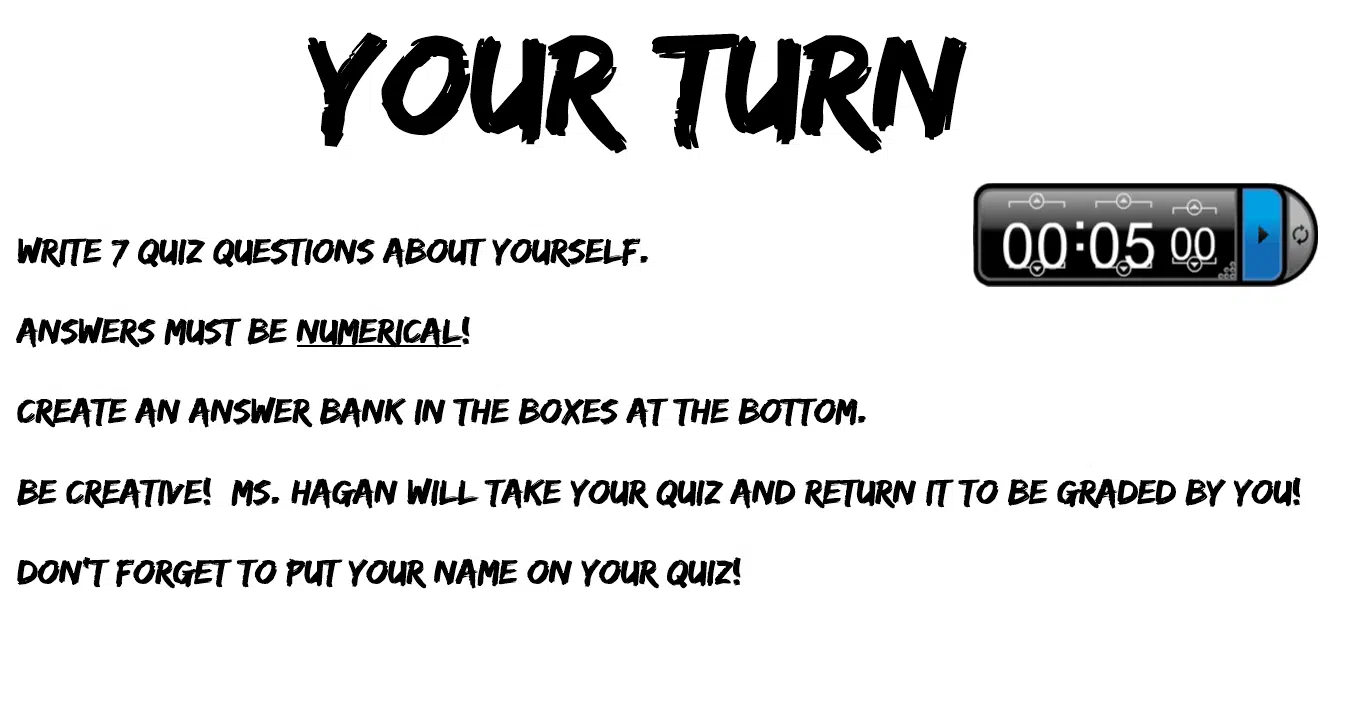
Here’s what the quiz looked like:
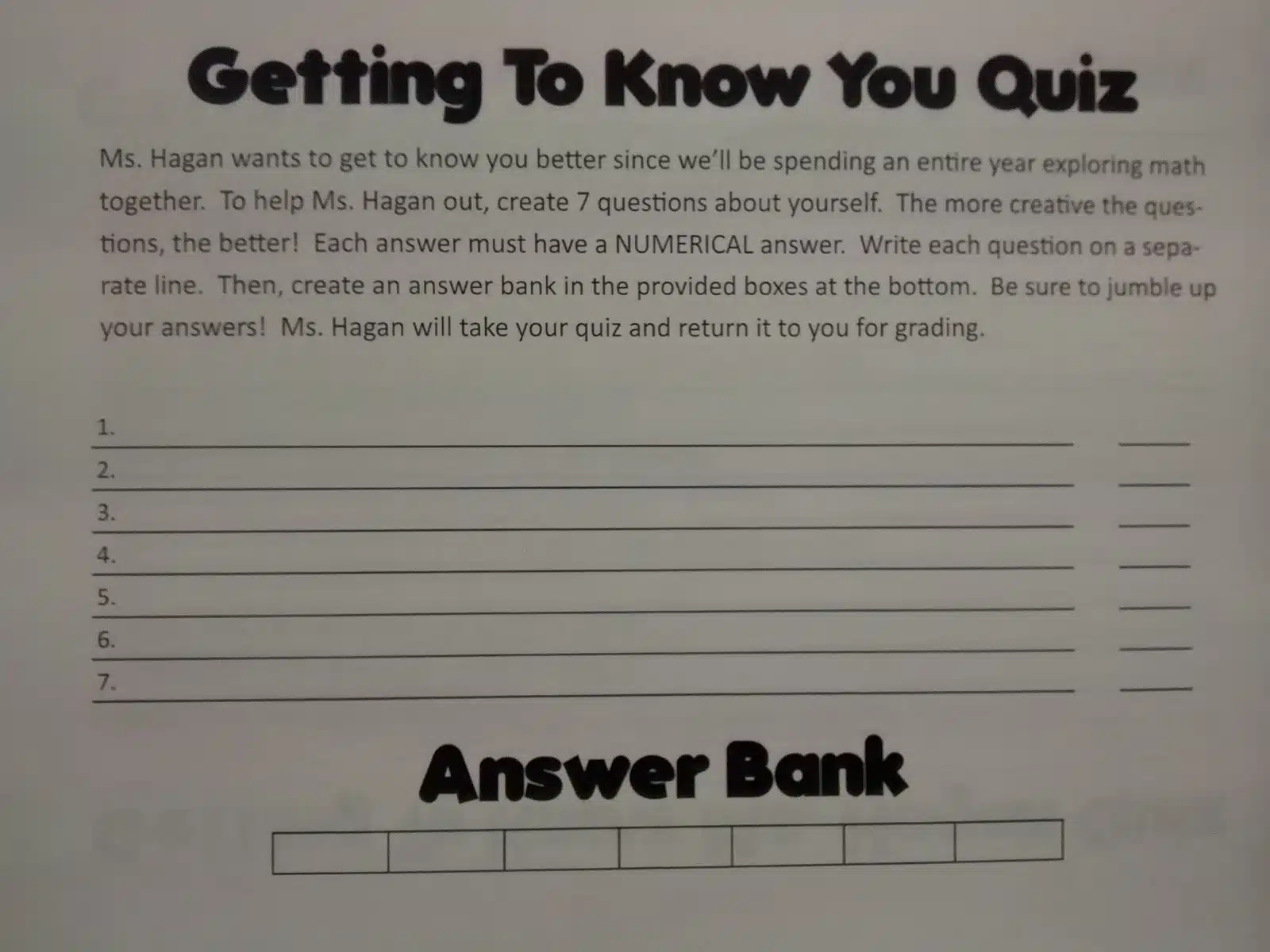
After school, I spent probably an hour or so taking all of the quizzes. I don’t know exactly how long it took because I kept getting distracted by other things! There were questions that made me laugh. Others that made me want to cry. Students wrote questions about health issues and family issues. Others were super silly. I tried to guess how many pounds students could squat and bench. I tried to guess shoe sizes. I found ages and birthdays pretty easy to figure out. But, I struggled with things like soccer jersey numbers and how many shoes they owned.
Next, I gave a short little talk about what my class was going to be like since we weren’t going over the syllabus until Day 2!

My school has adopted a new cell phone policy that all of the teachers were supposed to go over. Ignore the misspelling. They’ve since replaced them with new posters, but I haven’t taken a picture of the new poster.
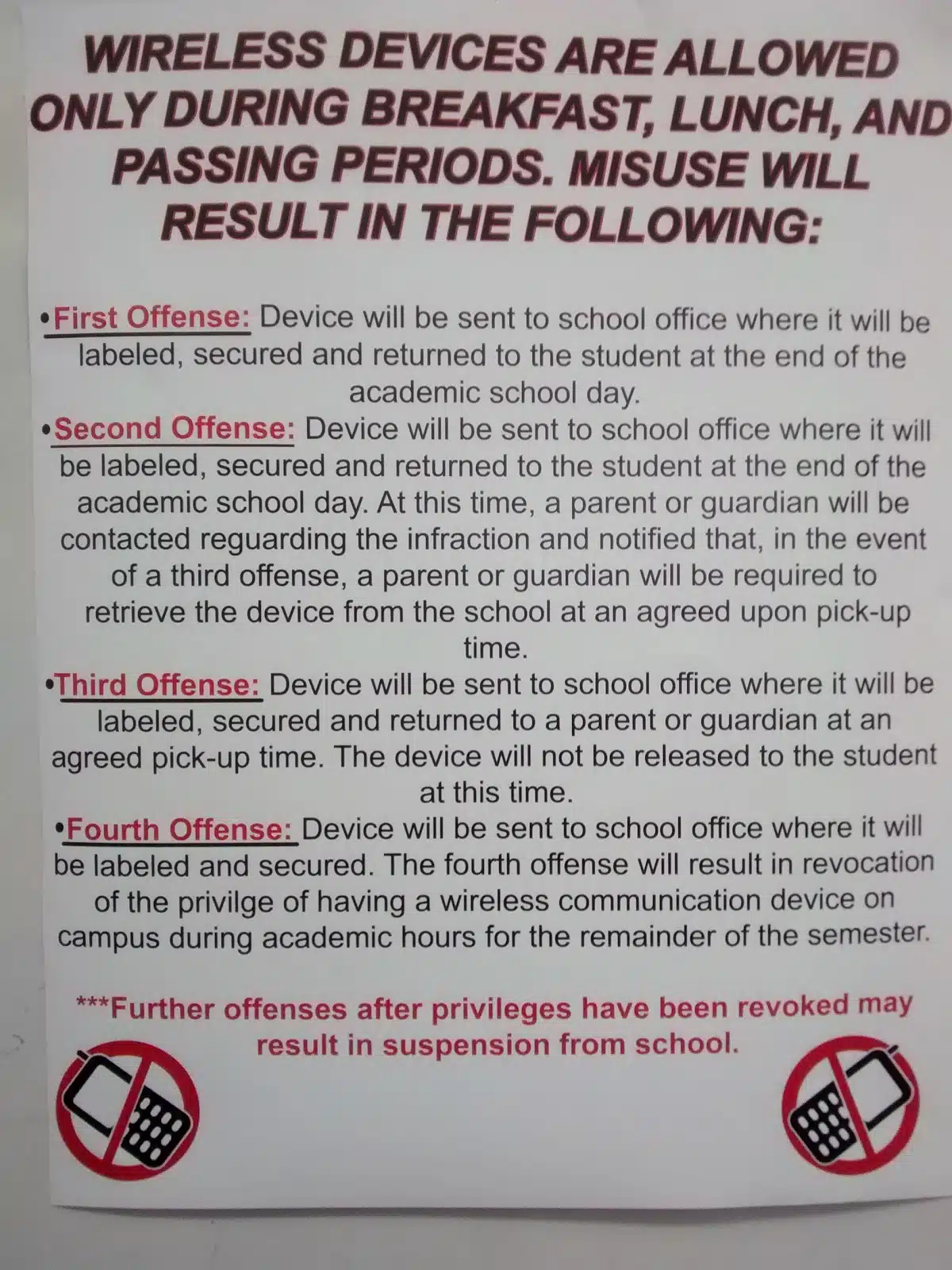
I got new carpet this summer, so that necessitates the no food or drinks policy. I am allowing bottled water.
Next, I let them know that each day we would have a warm-up based on the day of the week. They were full of questions. What’s Taboo? You’ll find out on Tuesday! What’s Witzzle? You’ll find out on Wednesday! I’m so nice…
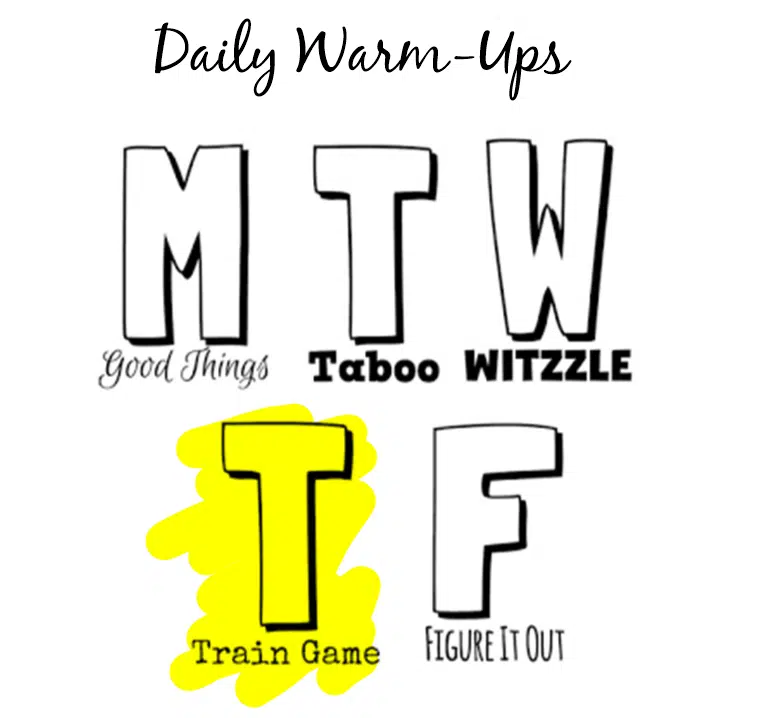
The Train Game is actually called Twenty Express. I got it as a Christmas present this past year from my sister. It’s published by Blue Orange Games. Almost all of my students from last year have played it before, but this year’s Algebra 2 classes are a mix of students who had me last year, students who had me two years ago, and students who have never had me before. The game was all new to my Algebra 1 students. And, I’ve had all my stats students before, but somehow a few of them had been gone every time we played the game last year.
I had a terrible time trying to explain the game last year where students could understand it. So, I changed up my approach.
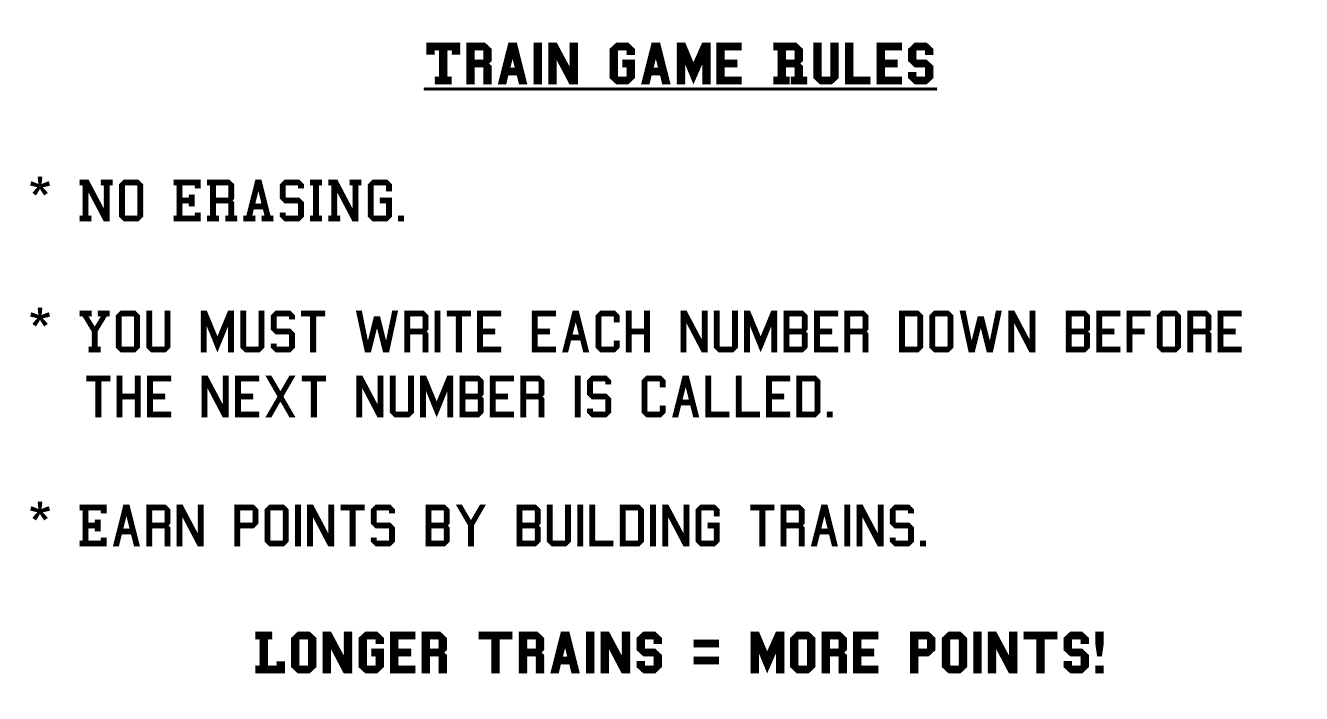
They were confused at this point, but that was okay. We talked about what made a train and what wasn’t a train.
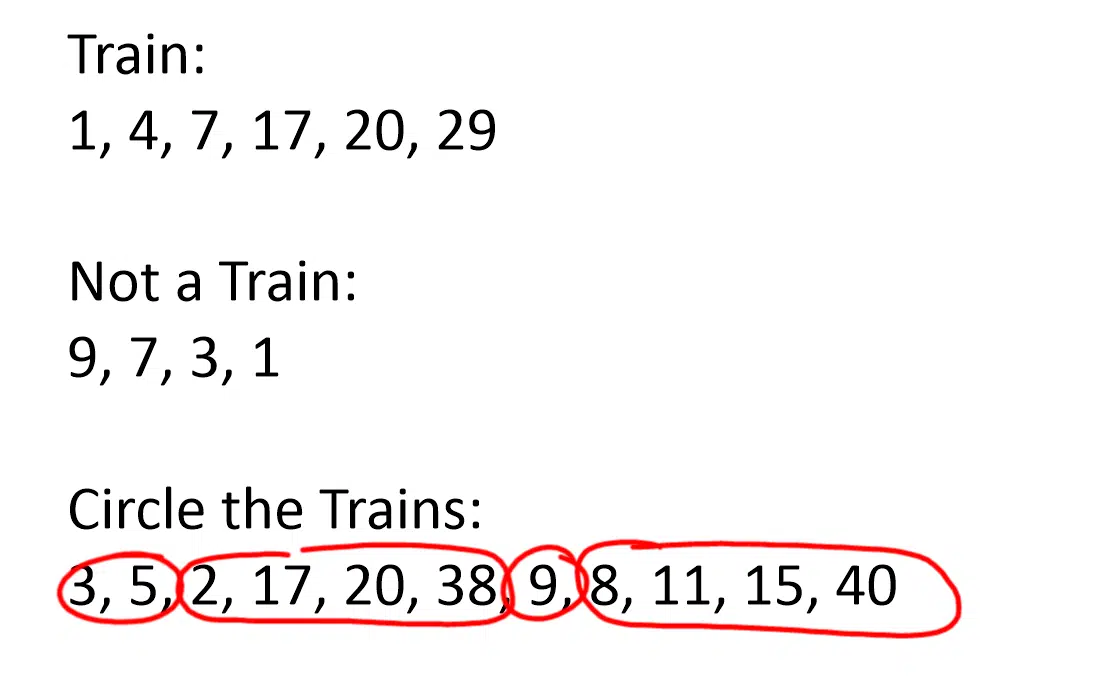
I wish I’d created more examples and non-examples. Oh well. There’s always next time. Then, as a class, we circled the trains from left to right. This cleared up a whole lot of misconceptions that had persisted with the previous year’s explanation.
Next, I gave them some facts that I hoped sparked a REALLY important question.
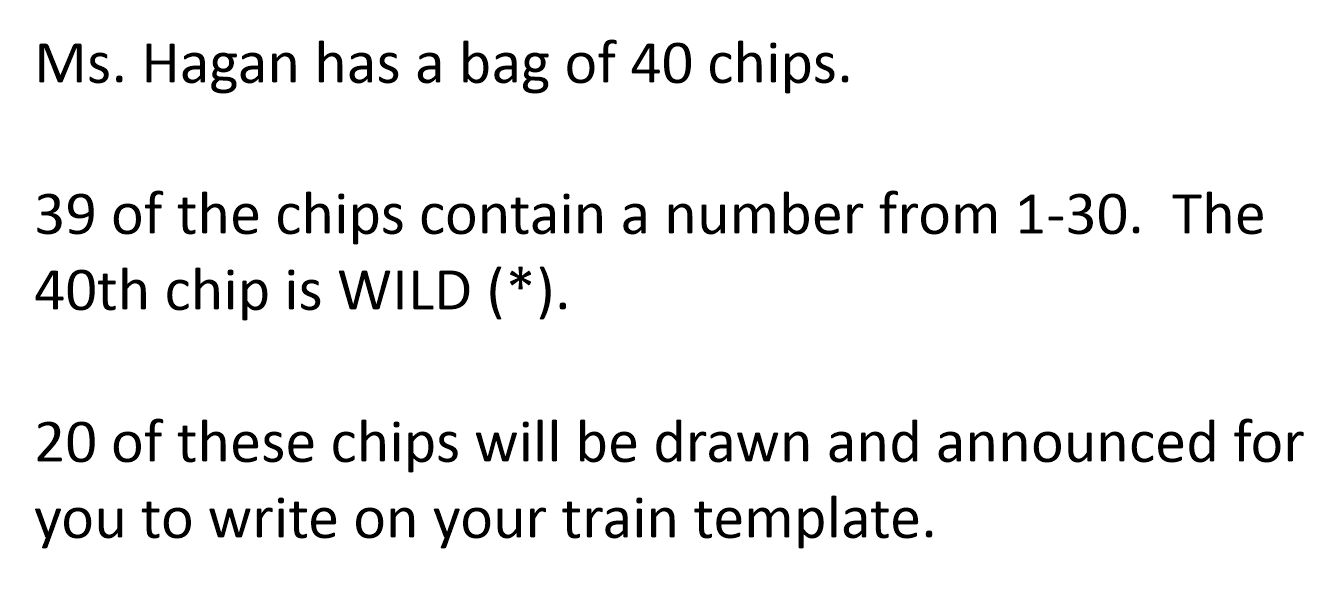
In some classes, the question was immediate. In other classes, the students seemed to except this information without it throwing up a red flag. Finally, someone would always ask, “How can that be?” Or, “Does that mean some of the numbers are repeated?” I told them that the numbers 11-19 were each duplicated. This gave us 39 chips instead of 30.
Since I’m using this in my classroom, I actually wrote the numbers out on bingo chips with a Sharpie so if I lose pieces or kids lose pieces, it’s not the end of the world. I keep my actual copy of the game at home in nice shape. 🙂
Next, I projected a fake game card I had made up for them to analyze/score.
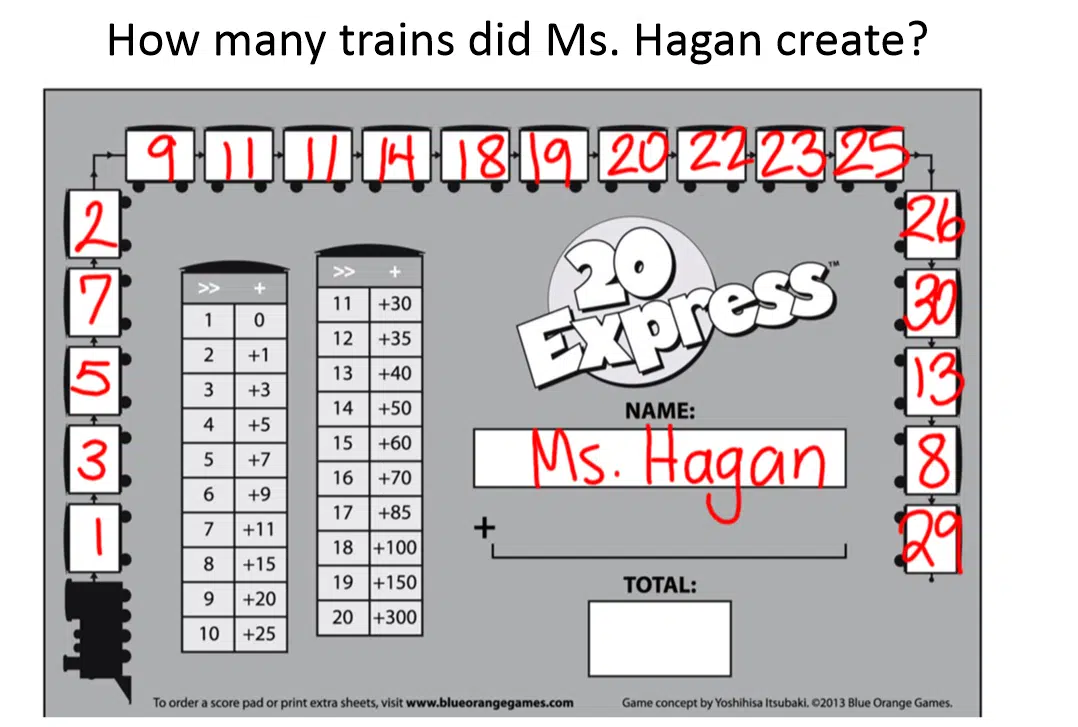
As a class, we circled the trains and calculated how many points each train was worth.

At this point, light bulbs were starting to go off about how this game worked. Next, I challenged them to try to beat my score.
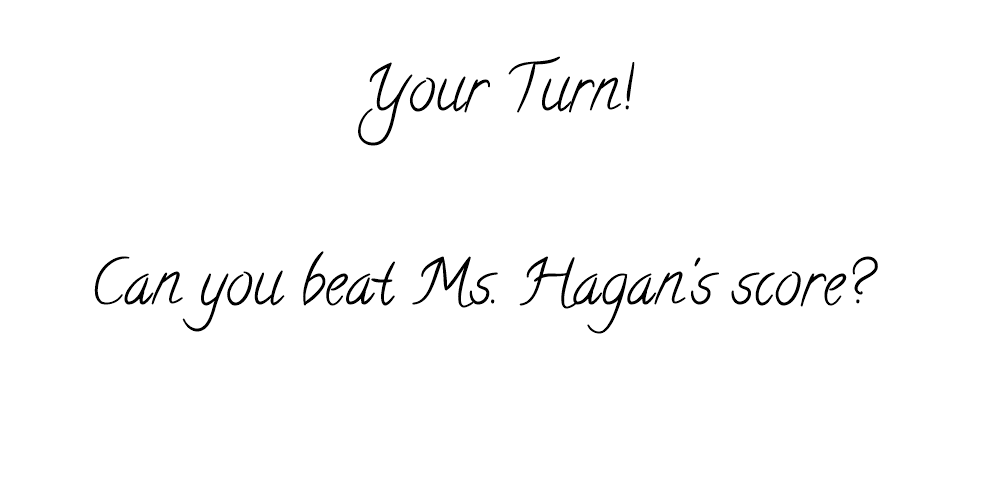
Finally, I passed out the game cards. I didn’t want to pass them out any earlier than this because I figured students would be doodling with the dry erase markers!
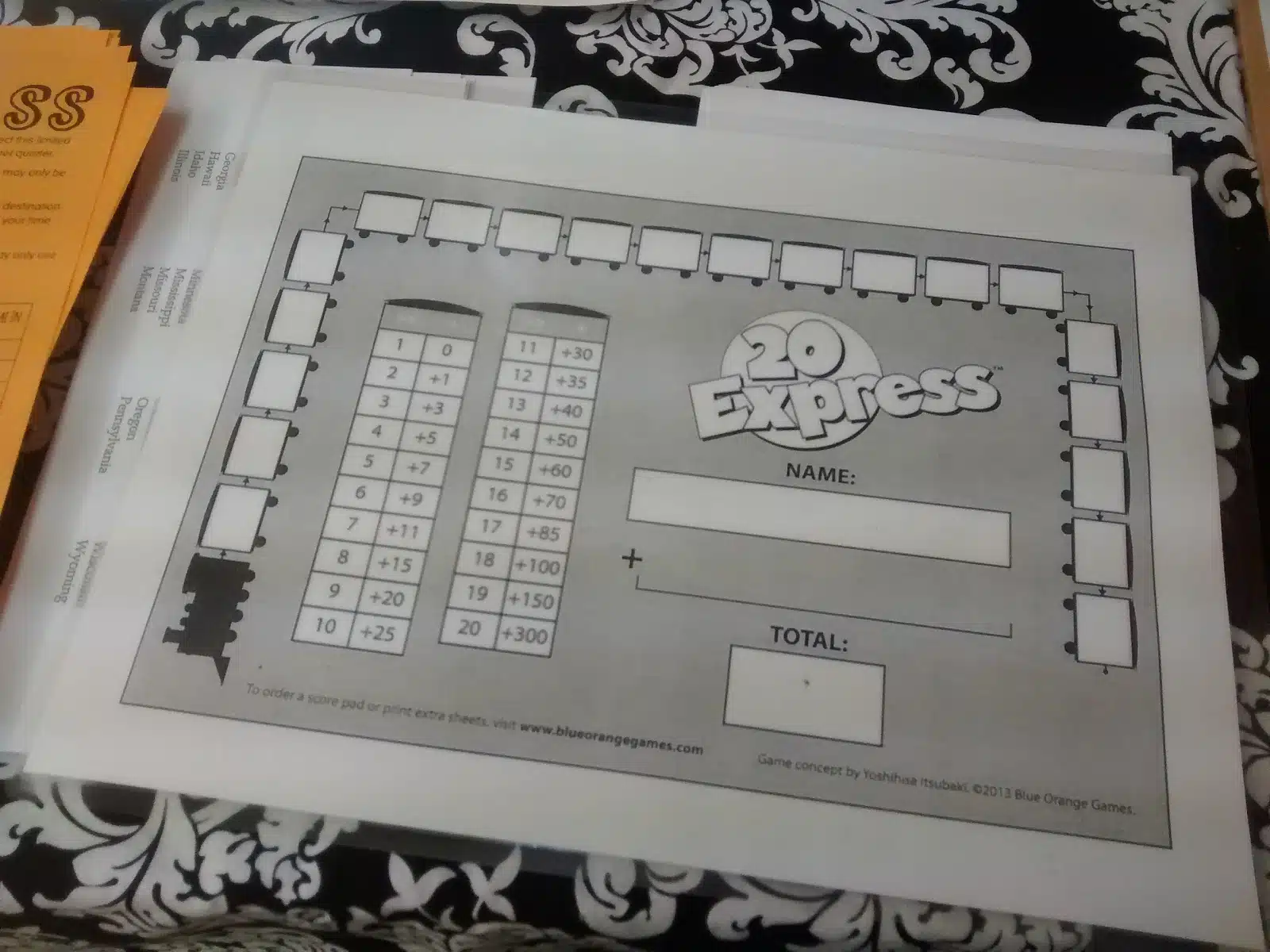
I printed the game cards off the Blue Orange website onto white card stock. Then, I ran the card stock through my laminator. This makes the boards eraseable.
Here they are with my bag of bingo chips I use to call out the twenty numbers.

To play, I pulled twenty chips out of my bag, one at a time. Students wrote each chip down in a train car. Some students seemed confused at this instruction, so I told them to write each number down wherever they wanted. About halfway through the game, they started to realize that there is definitely some strategy involved. They wanted to play again after realizing this. I told them we would. Next Thursday!
After calling all 20 chips, students calculated their score. Because we’d already scored my fake game card earlier, this was a very easy process. I only had to help a couple of students all day long.
The winner in each class received a chocolate or strawberry ice cream cone ink pen that I picked up a dozen of last summer on Amazon Warehouse Deals Clearance for $3. Amazon still sells them, but they are much less of a bargain now. The kids thought they were cute. And, they were very disappointed when I only gave a pen to the student who got first place and not second.
I like this train game because it involves critical thinking and a whole lot of luck. It’s quick to play once you know the rules. I’m hoping we can knock out the entire game from start to finish in less than five minutes when I use it the rest of the year as a warm-up on Thursdays.
The laminated game boards were a little hard to erase, but a quick spritz of cleaner from Dollar Tree got them nice and shiny again. I had students pass the bottle around.
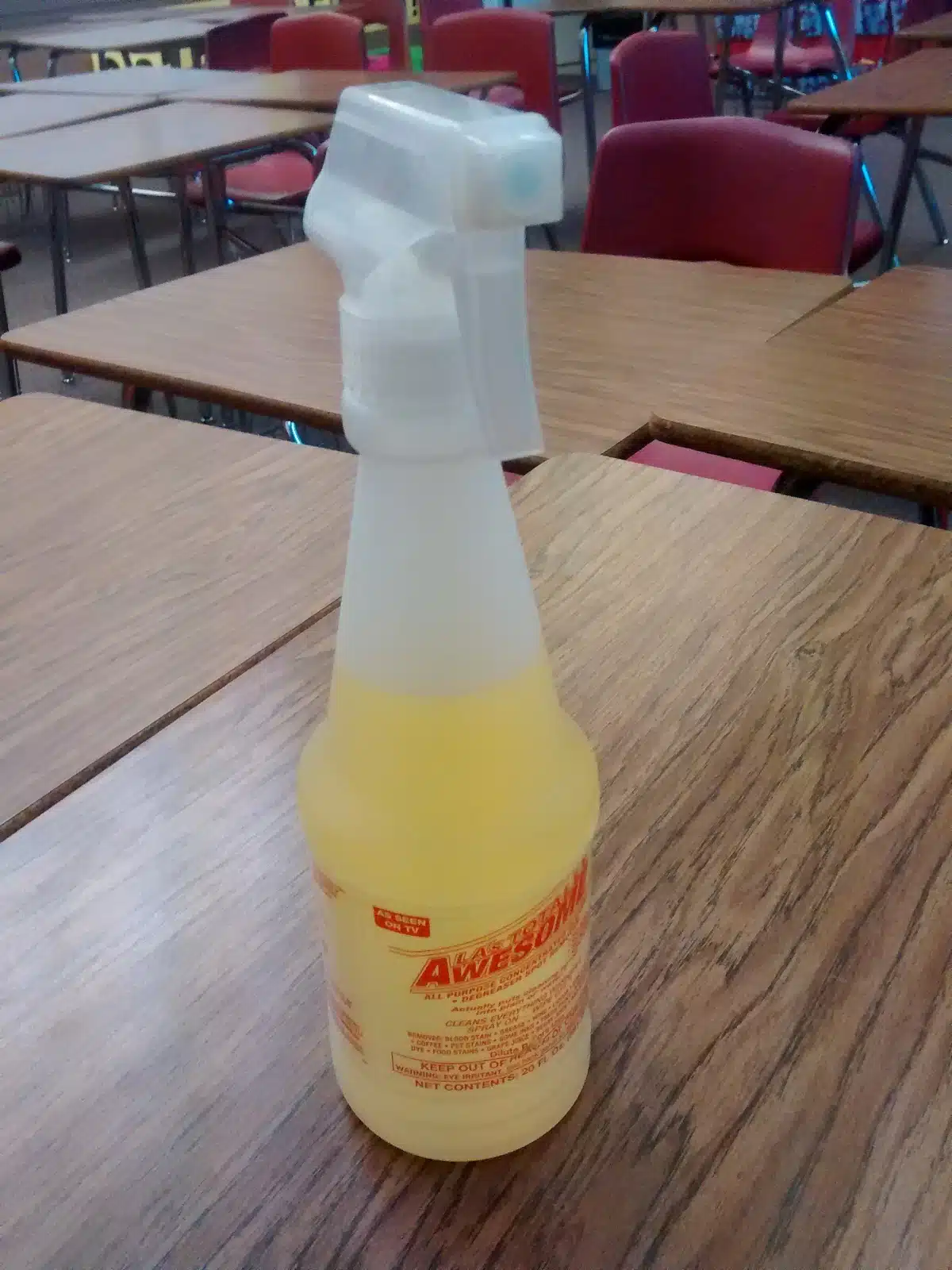
Next, we started discussing supplies for the year since I knew a lot of families go school shopping after the first day.
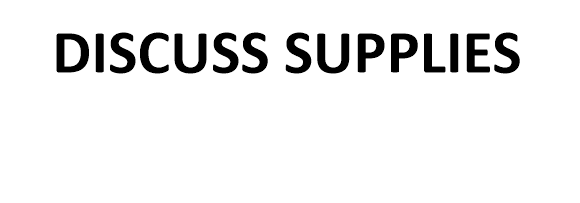
I typed up this supply list for my students. I included a list of suggested (or optional) supplies that I provide students in class. However, I often find that many students prefer to have their own set of highlighters or markers that haven’t been used by twelve other people that same day. I told students that if they chose to use the supplies I provided, they weren’t allowed to complain! I printed these supply lists 4 to a page to save paper. 🙂
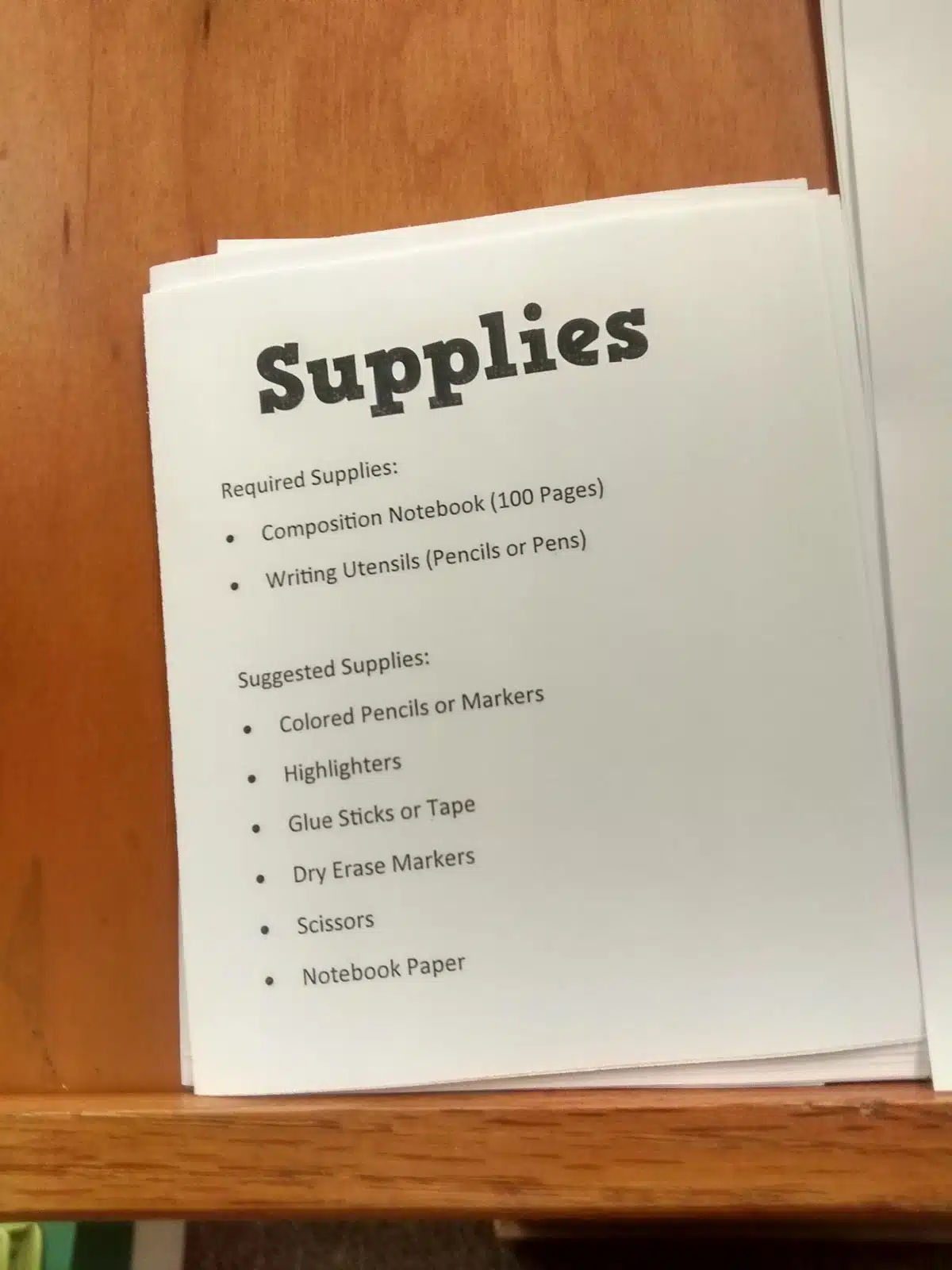
Next, I had students sign up for REMIND. I printed off their posters on green card stock, but I find it’s easier to just have students do it all at once as a class. I like Remind because I can send students messages without either of us knowing each other’s phone numbers. I’ve chosen to turn the chat feature OFF to keep it safer. I can send students messages, but they cannot reply.
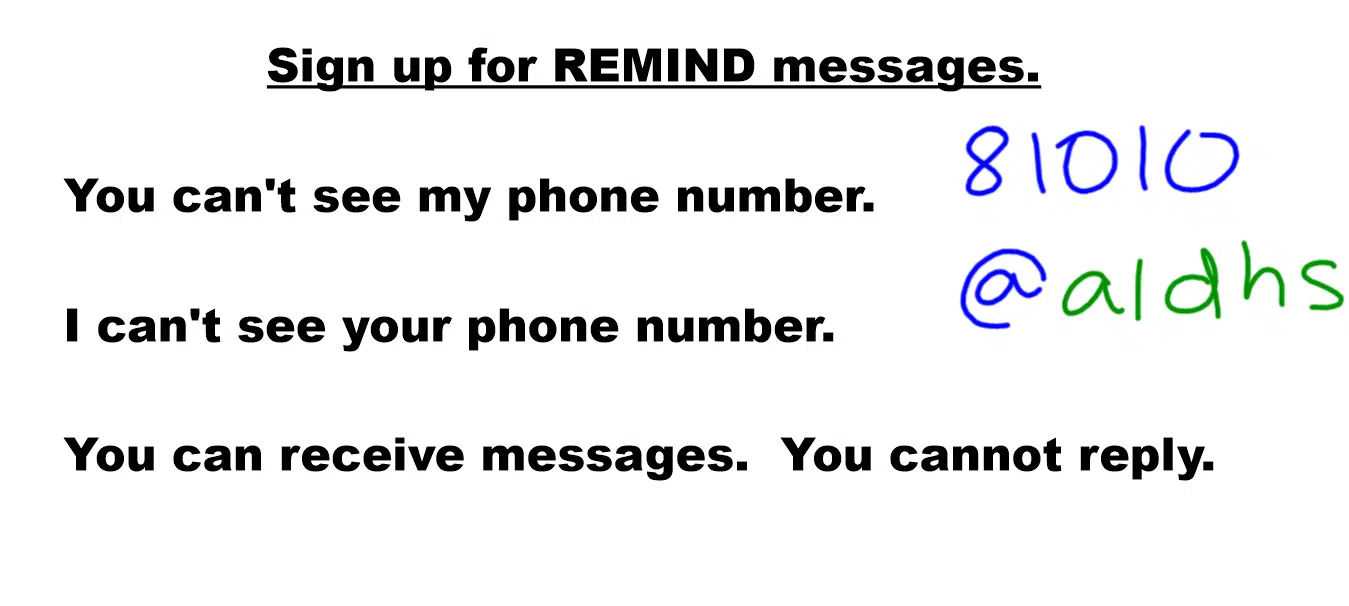
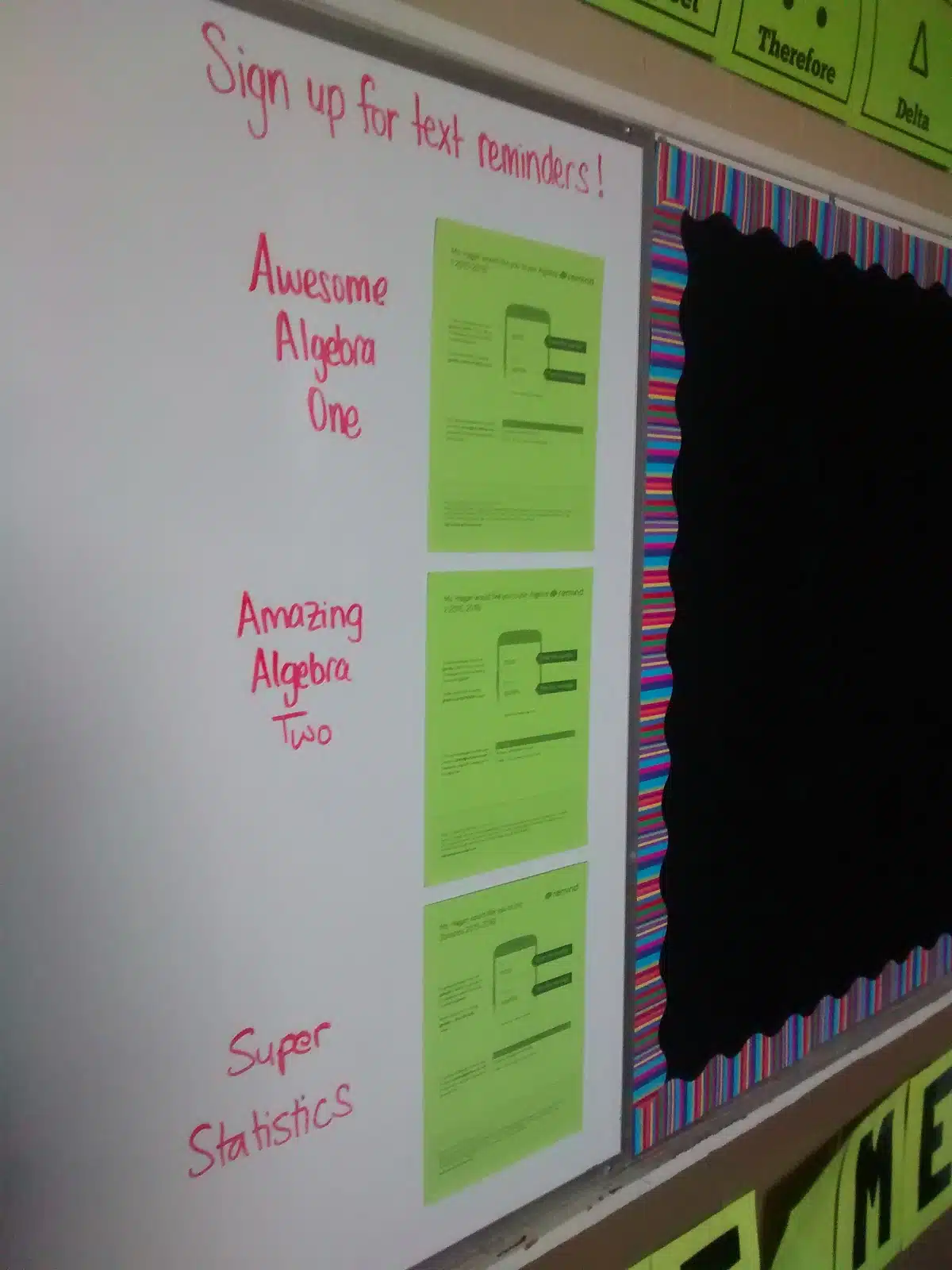
I gave the students a chance to ask questions. A few did. There was dead silence in other classes.

There was about five minutes left in each class period to fill. So, I decided to give my students the Count to 10 Challenge. Tell the class that there is no talking unless they are saying a number. The class has to count from one to ten. Nobody can say more than one number in a row. If two students (or more!) say the same number at the same time, the class has to start over at one.
It’s so fun to watch students get frustrated with this activity that seems so simple. Most of my classes ended up breaking the no talking rule and tried to come up with a strategy to get to ten. I guess that tells me that they are clever problem solvers. 🙂
August 26, 2015 – Petals Around the Rose Report
Three class periods into Day 2, I was worried that I had messed up big time. I’d given my kids a brain teaser to work on. Nobody in second period figured it out. Nobody in third period figured it out. Kids were leaving my room frustrated. I was frustrated. Then, fourth hour happened. And, the whole day turned around.
Day 2 ended up being one of my favorite beginning of the year activities. Ever. Guys, this is a keeper.
Students entered my room to find this on the SMART board.
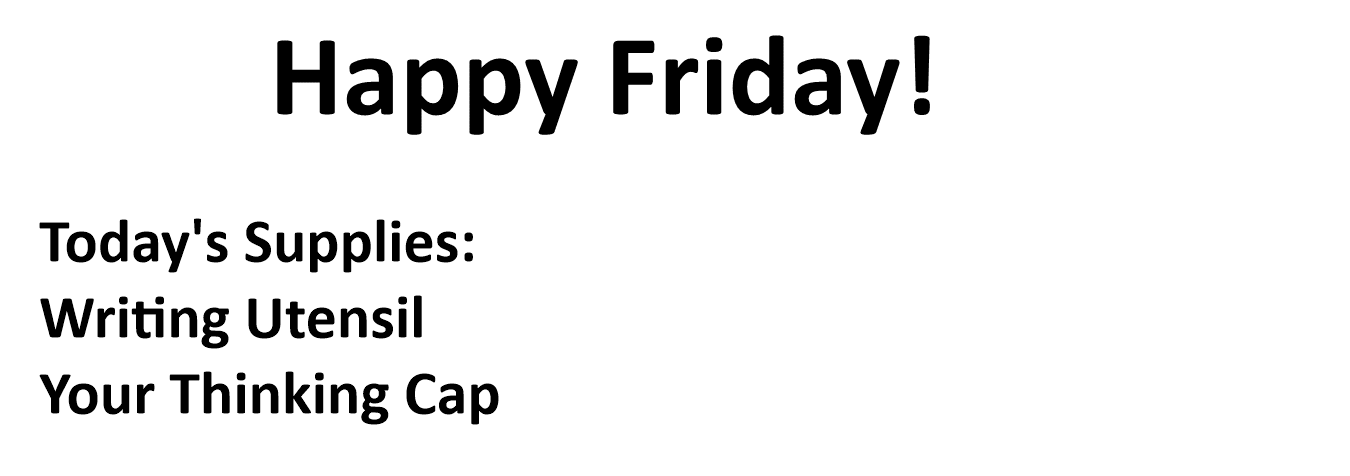
A few students took “thinking cap” to mean “we can wear a hat even though it’s against school dress code.” Nope.
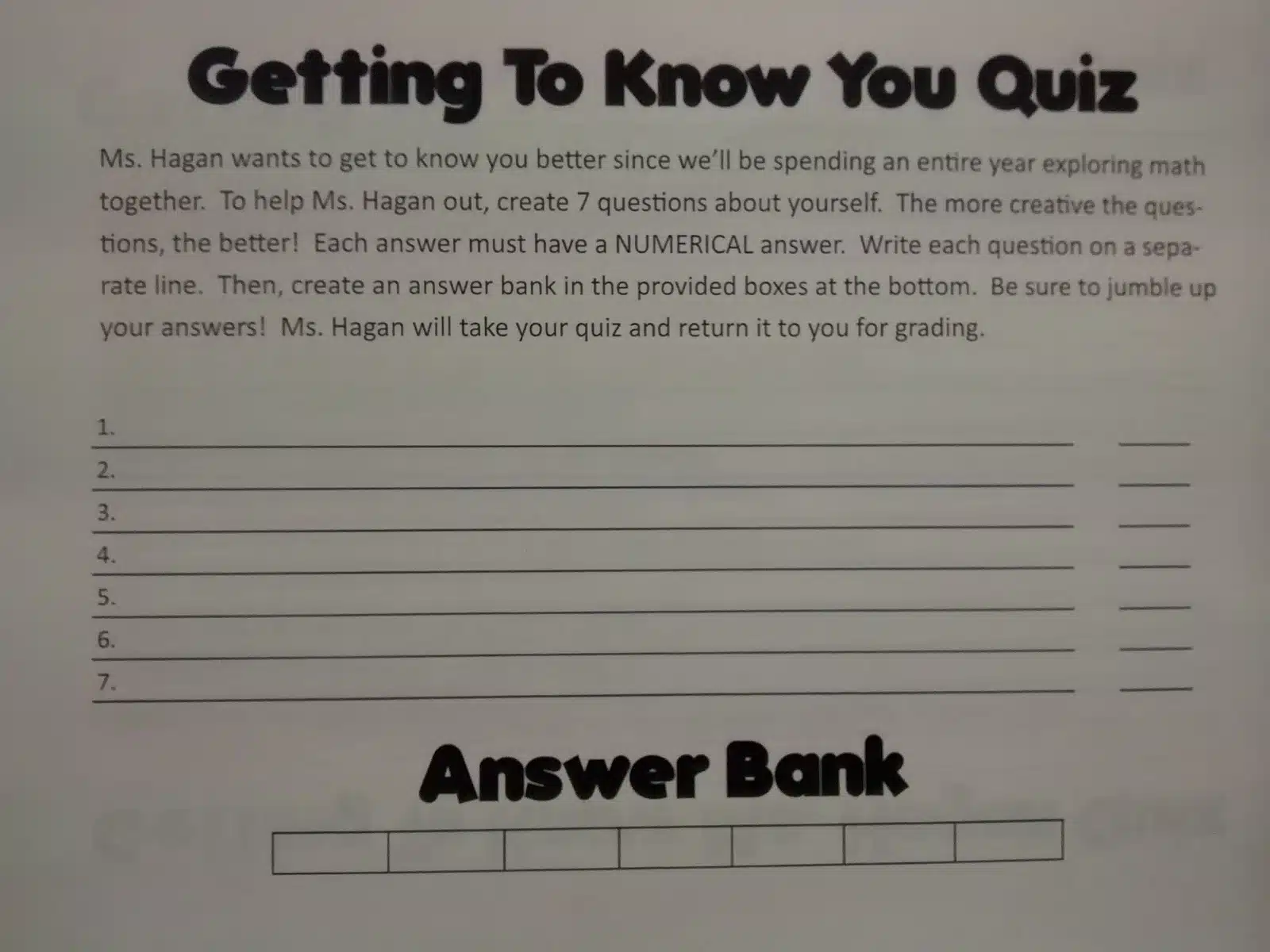
On Day 1, students took a quiz about me and wrote me a quiz to take about themselves. I passed these back along with highlighters to grade with.
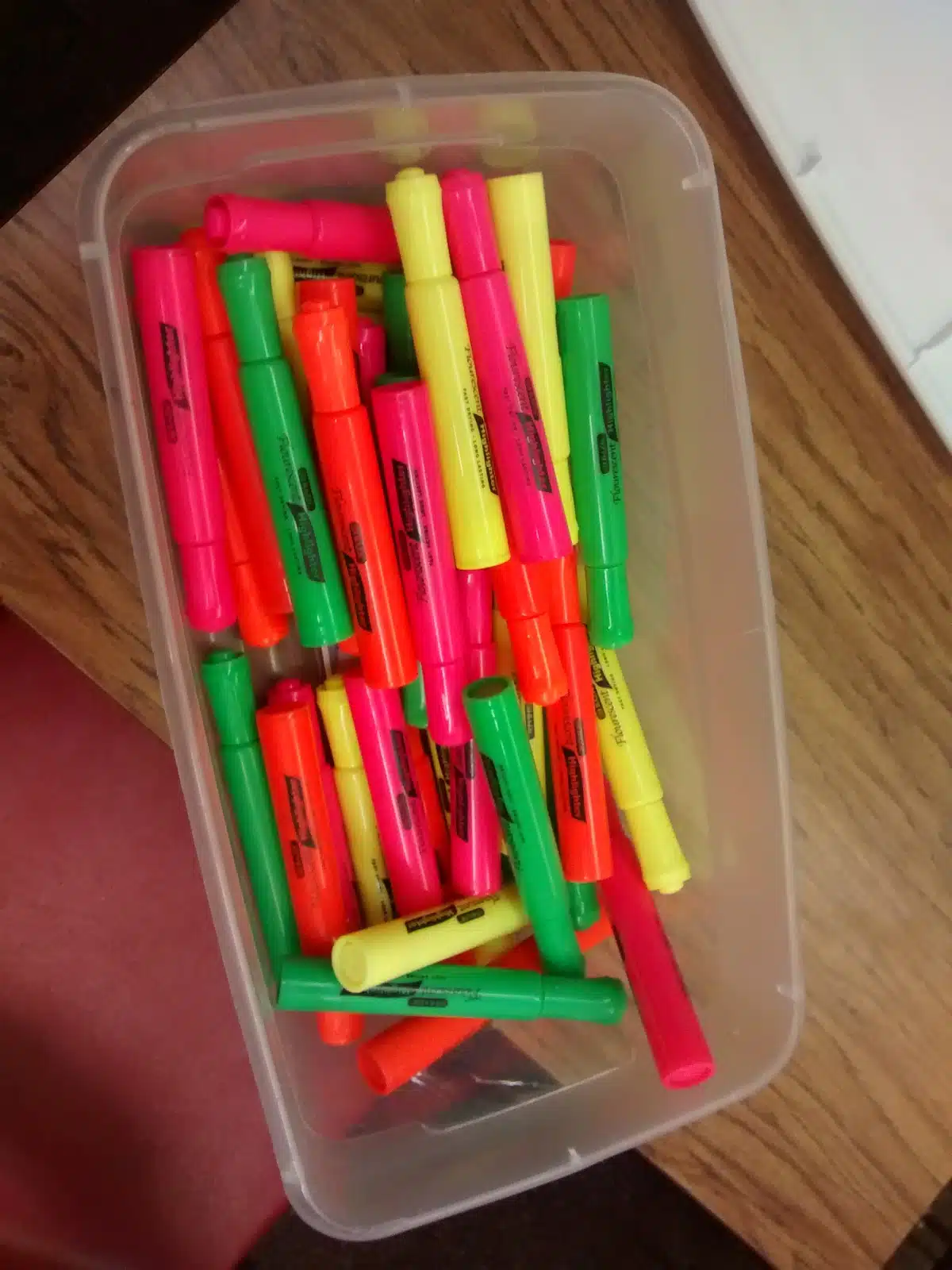
Oh my goodness. The kids had so much fun grading the quiz I had taken. I made a 100% on several quizzes. That freaked those kids out! I made a 0% on some of the quizzes, too. How does one make a zero on a quiz that is matching?!? I did accidentally put that one of my students was 25… She gave me more than a bit of grief on that one. And, answering that a kid has 10 dogs makes you sound a bit crazy. Some of my students realized that the correct answer to their question wasn’t even in the answer bank they made… The kids corrected the quizzes and gave them back to me to study. I wasn’t too sure how I felt about the whole quiz idea at the end of the first day. But, seeing their reactions when I gave their quizzes back was SO WORTH IT! Fridays in my classroom start with a puzzle or brain teaser for students to figure out.

I put the name of the game up on the SMART Board.

Then, I reminded them that the name of the game is important. Really important.
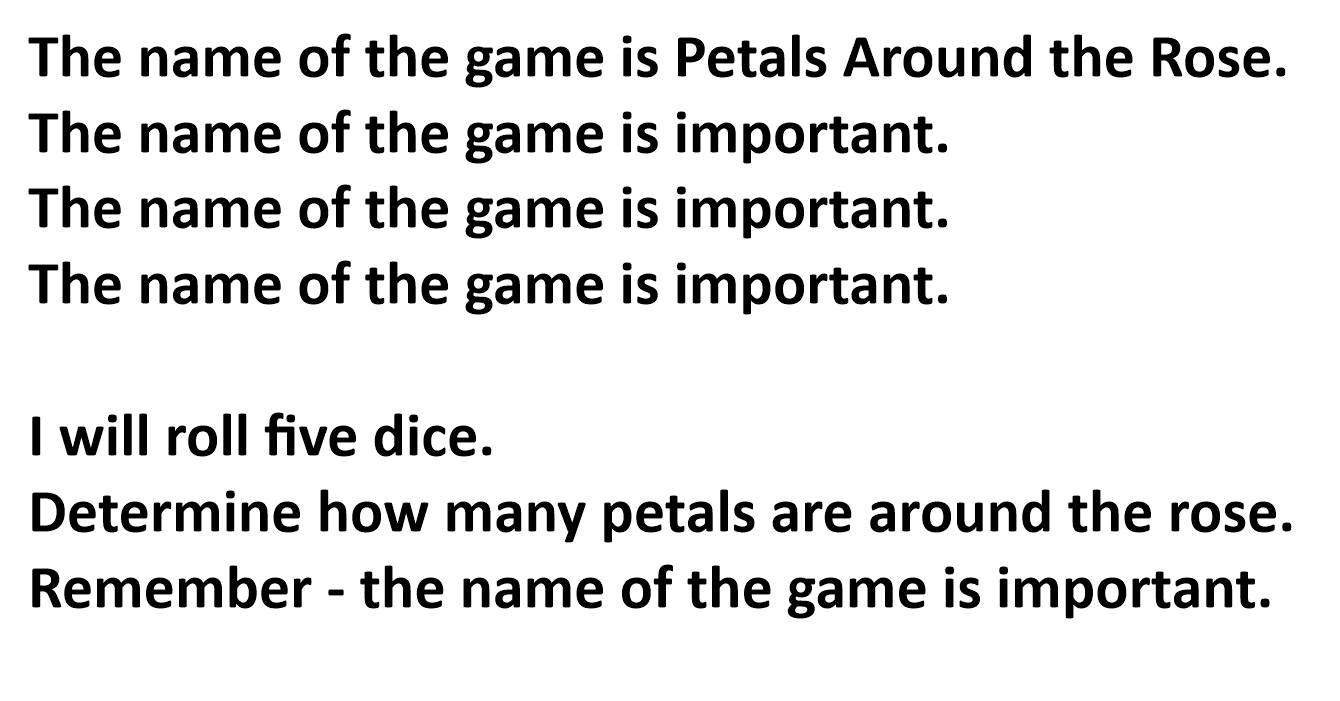
We went over what to do when they thought they had figured out the puzzle.
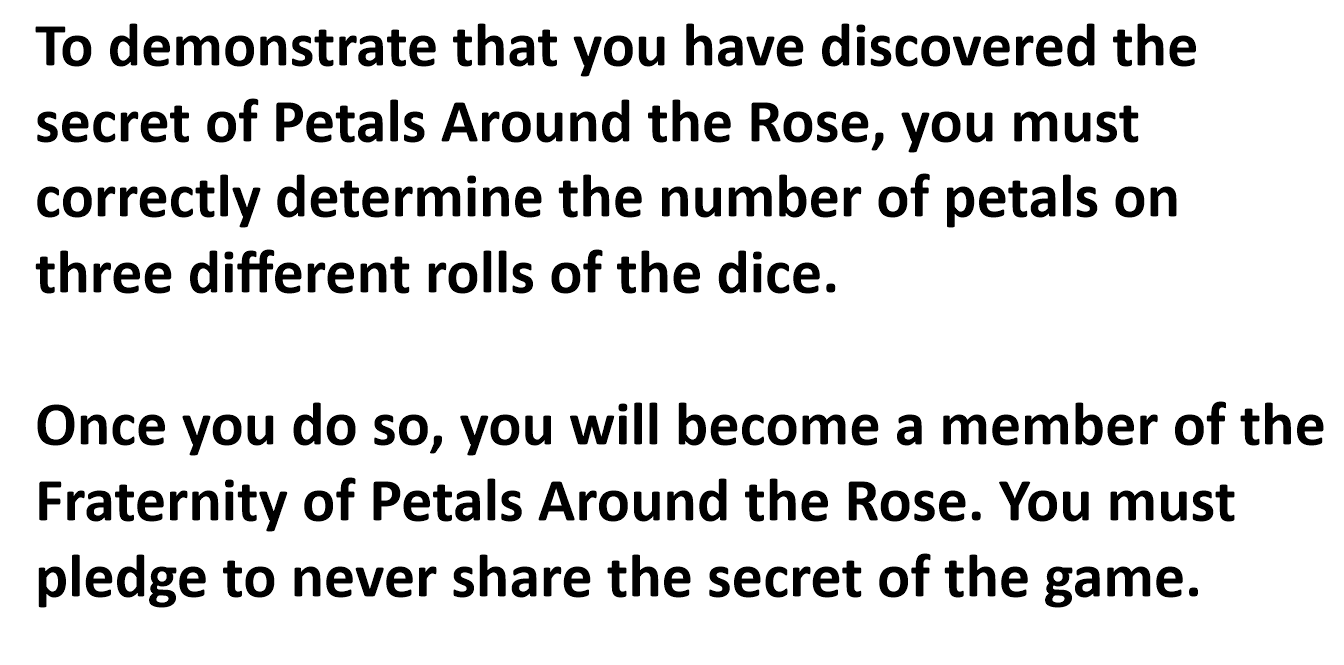
At this point, the kiddos were more than a bit confused.
I used the multiple dice feature on SMART Board to project five dice that roll with just a tap or click.
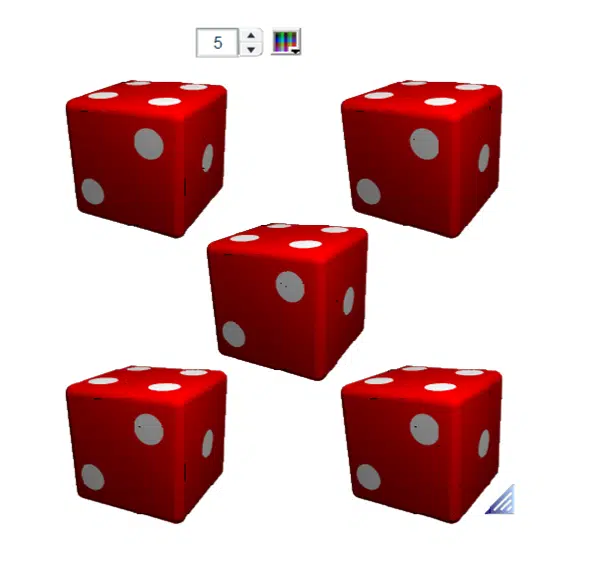
I rolled the five dice. I told the students how many petals were around the rose. I asked them to come up with a theory of why that might be. They shouldn’t tell me their theories. We’d test them in a minute.
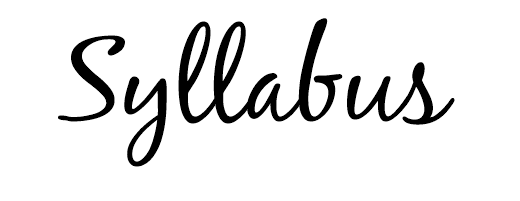
Then, I rolled the dice again and let them test their theories. We rolled. And rolled. And tested. And rolled some more. Like I said earlier, 2nd and 3rd period never figured out the puzzle. We stopped and took a syllabus break in the middle. I passed out my syllabus. Students highlighted key sentences. I gave them this parent information sheet to take home.
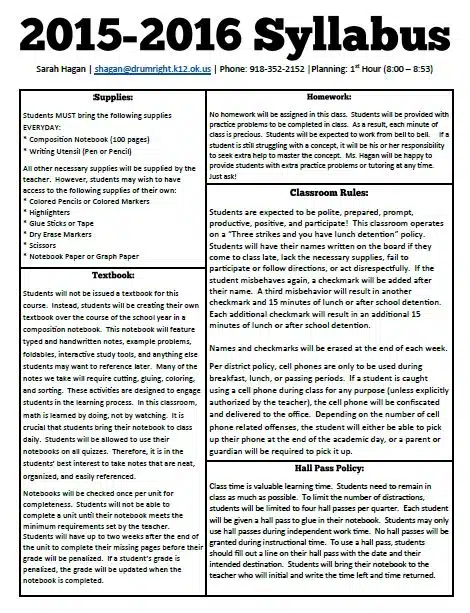
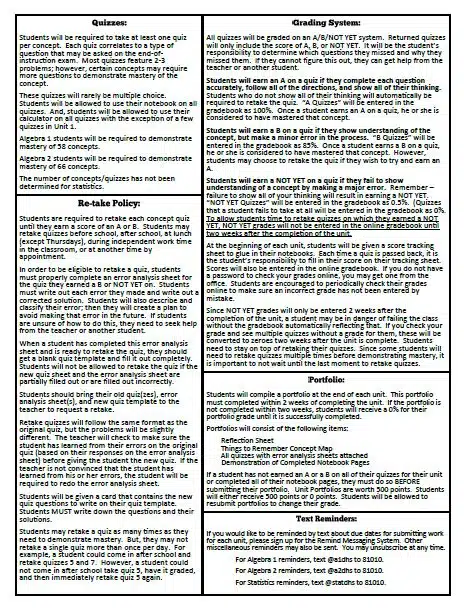
After getting through the syllabus stuff, we went back to Petals Around the Rose. I kept reminding students that the name of the game was important. They kept responding that there was no rose! Or, they would proclaim that the game was wrong because they’d never seen a rose with ZERO petals. 🙂
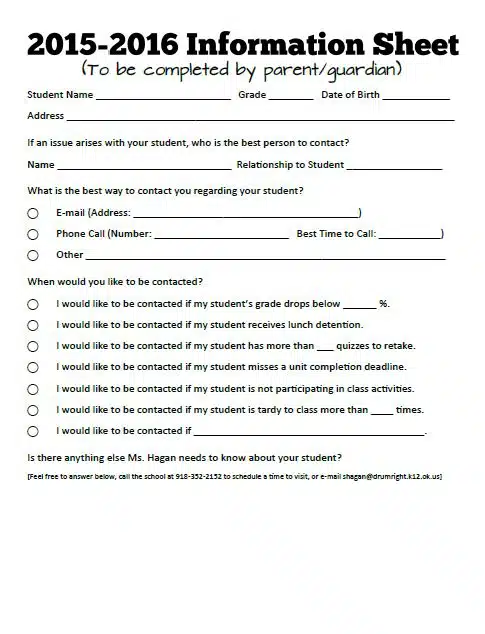
Fourth hour, things started to turn around. One of my stats kids had seen this puzzle on youtube before. So, he answered the first three rolls correctly. This wowed his classmates. And, it let him earn a Fraternity of Petals Around the Rose membership card. He also got to sign the Fraternity poster.
You can see the poster in this picture of my posters that will not stay stuck to the wall. Ugh… This is pre-signatures.
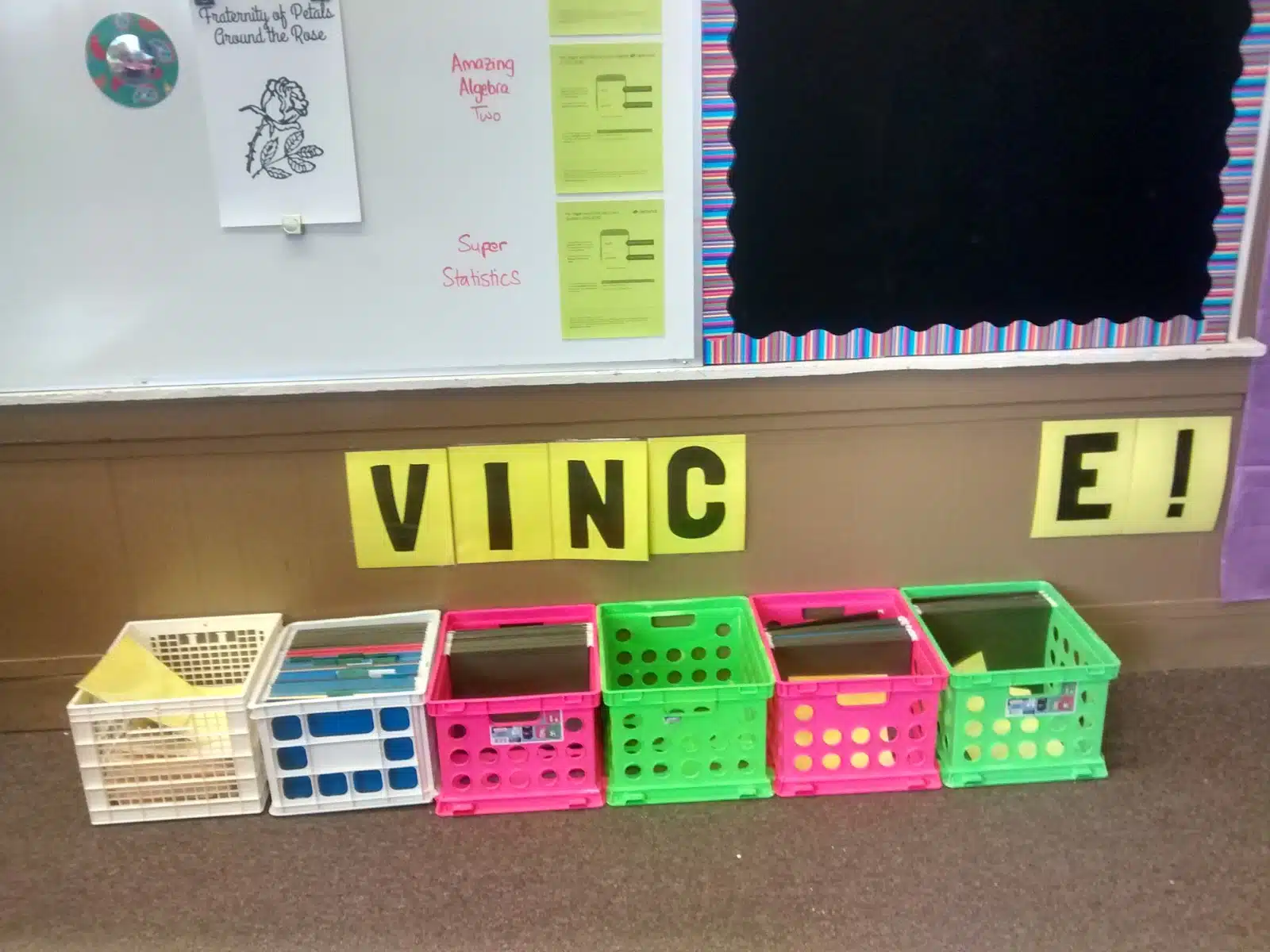
Here’s the membership card:
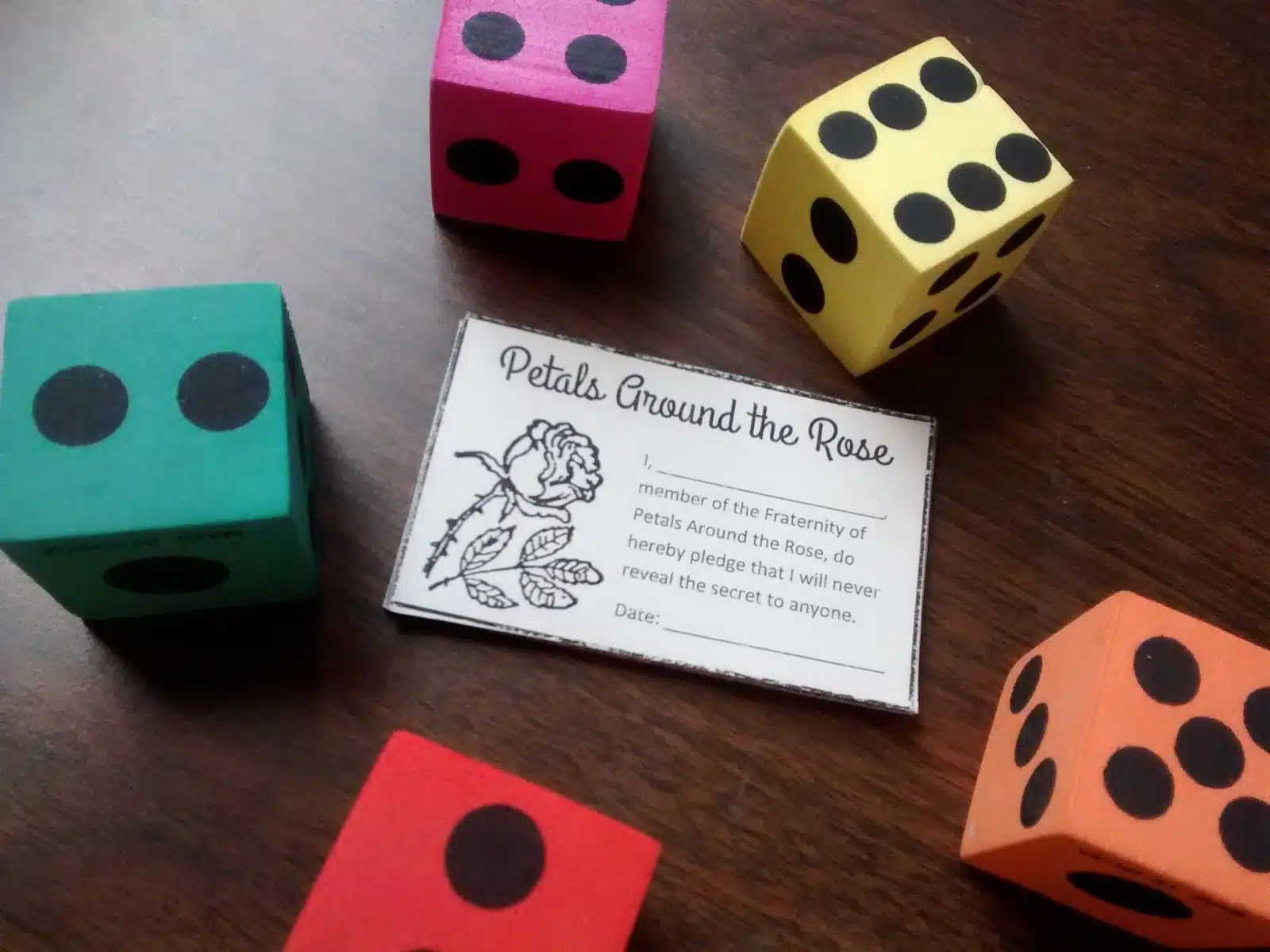
The first student to get his name on the Petals poster just happens to be a twin. And, his twin just happened to be in the same class. Now, when one twin knows how to solve a puzzle and the other doesn’t, this can be some super-motivation. Let’s just say it was only a minute or two before the twin brother joined the Fraternity of Petals Around the Rose. The rest of the class now knew that the puzzle was possible to figure out. Within a few more minutes, there were multiple new inductees.
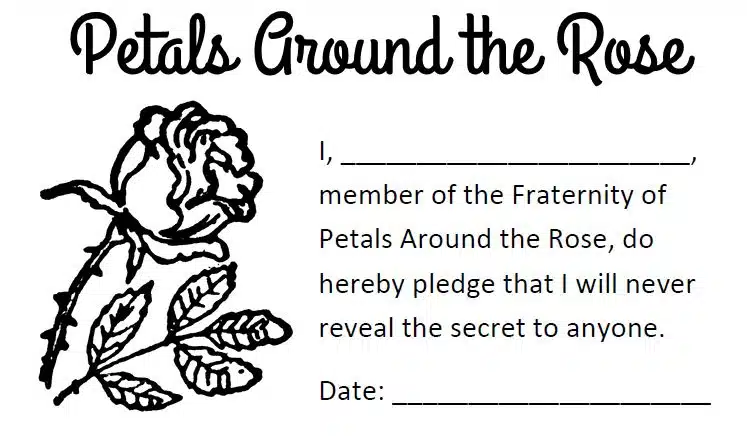
You could tell that some of their classmates were becoming quite frustrated. Those who understood the puzzle kept reminding those who didn’t understand it YET that the name of the game was important. Some even took to yelling “Petals AROUND the Rose!!!!” in their neighbors’ ears. That helped. Not.
One of my students left class so visibly frustrated that people in the hall were asking him what was wrong! By the time lunch was over and fifth hour rolled into my room, talk about this petals game was all around the school. There was something powerful for these kids about seeing names on the Petals poster. Students knew the puzzle was possible because the names of their peers were on the poster for them to see.
More names were added to the poster. More students left frustrated. Same thing happened seventh period. A student who doesn’t even have me this year came by to ask about the puzzle because he had heard some friends talking about it and wanted to look it up online and try it.
One student pulled out his wallet during class and tried to bribe other students to tell him the secret. That’s dedication to a puzzle! Another student told me that this is the type of puzzle that leads people to commit suicide. I hope he was exaggerating.
On Monday, I had students report that they had spent hours playing petals that weekend trying to figure it out. One girl even downloaded a Petals Around the Rose app to her phone! Students reported showing this game to their families and coworkers. One even told me that they made a version using playing cards. A former student/sibling of a current student has been trying to figure it out for days now. Let’s just say having a sibling figure it out is a pretty big motivator! (Let’s be honest. My boyfriend figuring out the puzzle before I did was a huge motivator for me.)
Kids were begging to play again on Monday to show off their Petals skills so they could get their membership cards and sign the poster. I’ve just never seen kids so excited about a brain teaser before. I guess I’ve never made such a big deal out of a brain teaser before, though.
August 31, 2015 – This Year’s New Bulletin Board
Gave my first SBG quizzes of the year on Friday. When I hand them back, I write a score of A, B, or Not Yet on them. I actually grade on a 4-point SBG scale, but I’ve renamed 4 to “A” and 3 to “B” since I enter a score of 4 as 100% and a score of 3 as 85%. Any score of 1 or 2 is a “Not Yet” because students are required to reassess until they earn a 3/4 (A/B).
Those students who get an A the first time will get a sticky note stuck to their quiz. They will write their name on the sticky note and staple it to this board. I can’t wait to watch it fill up!
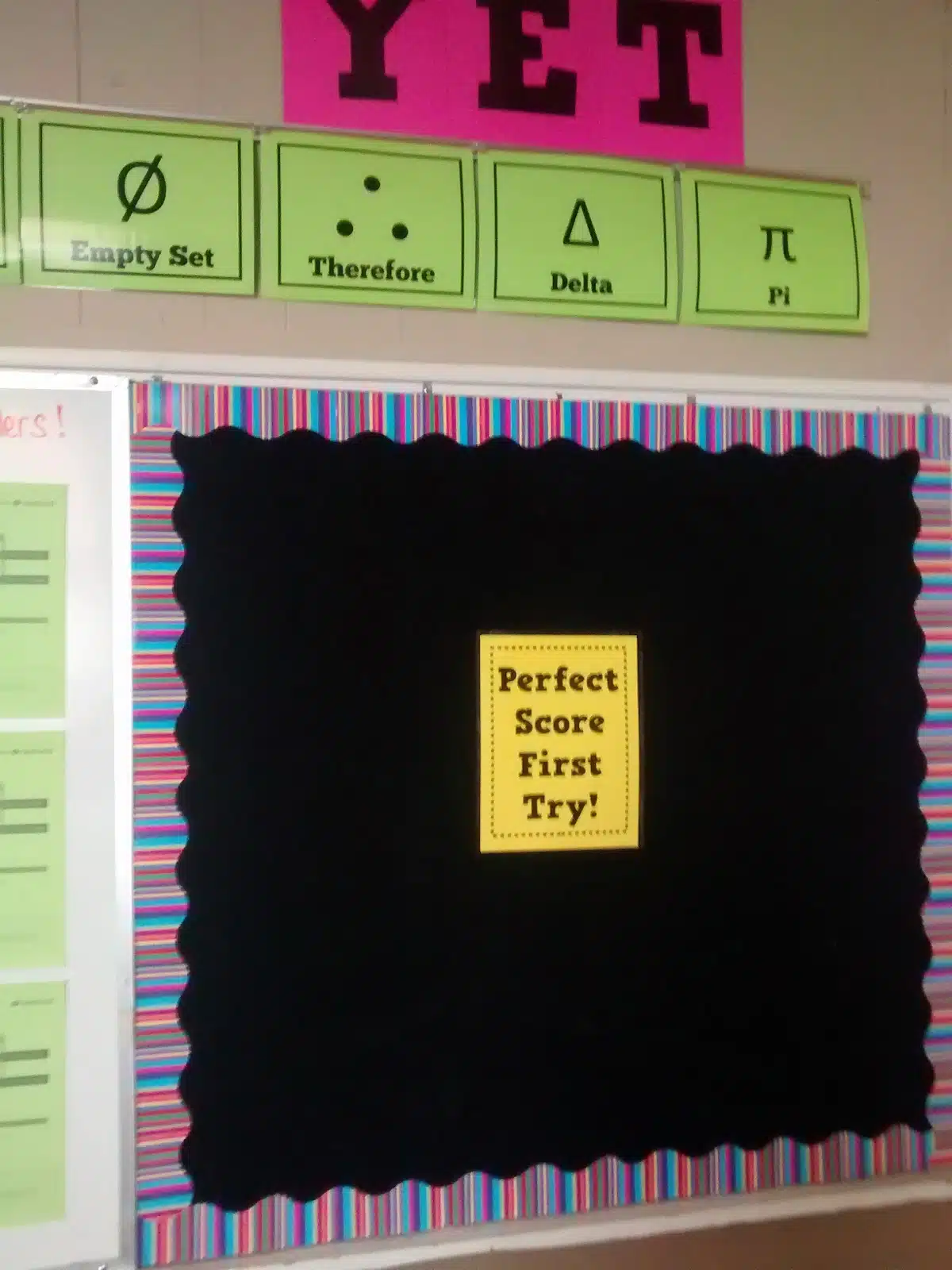
Here’s the link to the Perfect Score First Try! Poster.
And, here’s a link to my math symbol posters that are hanging above it.
Also, if you want the YET posters, click here.
Other Note: Eventually, I will finish decorating my classroom and post it for all the world to see. There’s so much stuff I didn’t get done this summer. And, I’m still paying for it. I can still be an effective teacher with blank bulletin boards. They do stress me out, though…
September 2, 2015 – Labeling Turn-In Trays
I finally got my turn-in trays labeled with the class periods. After having last period plan for the last two years, I’m back to having first period plan.
My labels aren’t anything fancy. I took some colored index cards from Dollar Tree and cut them in half.
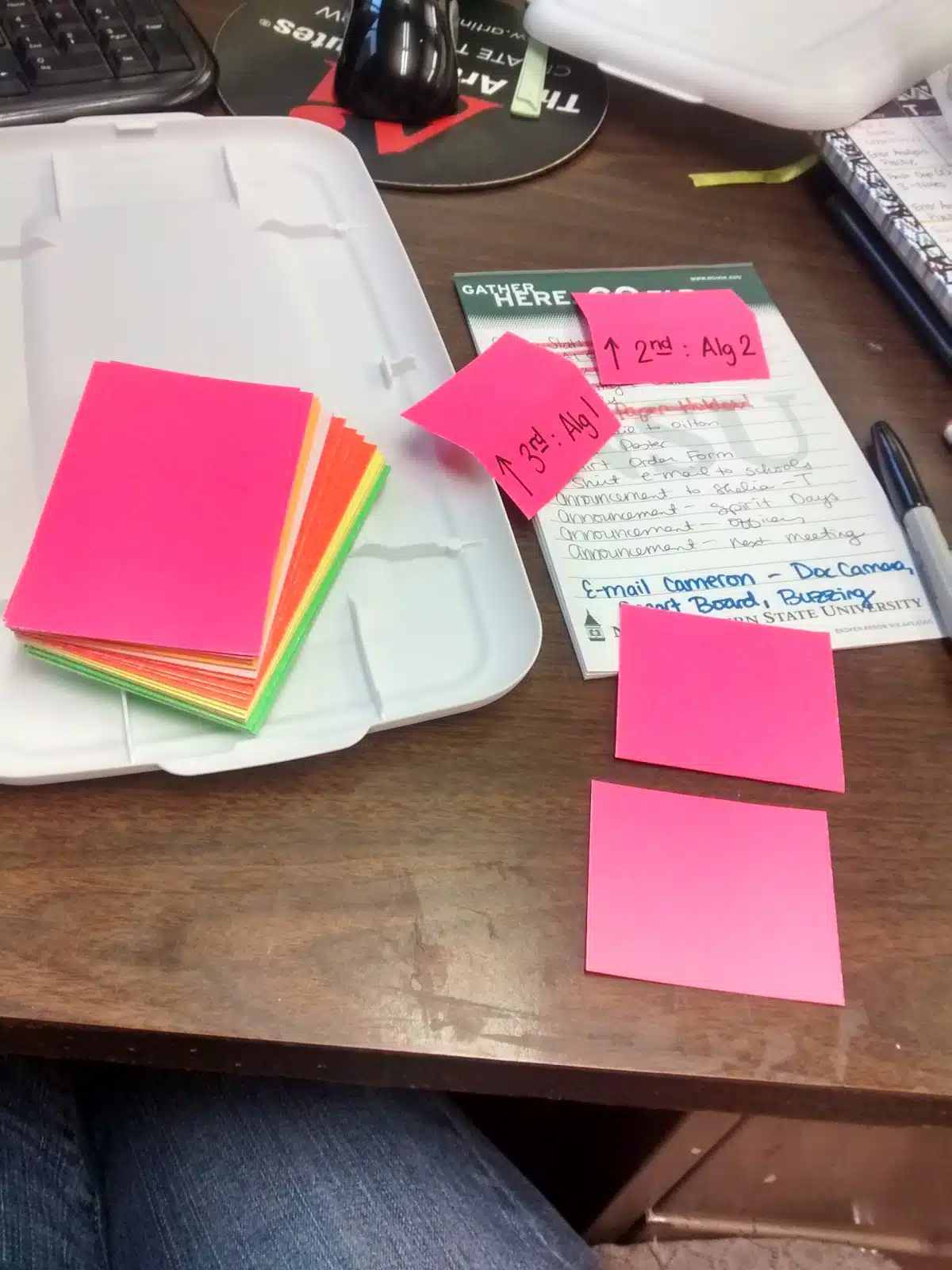
I folded each half in half and labeled them with the class period and what I teach that hour.
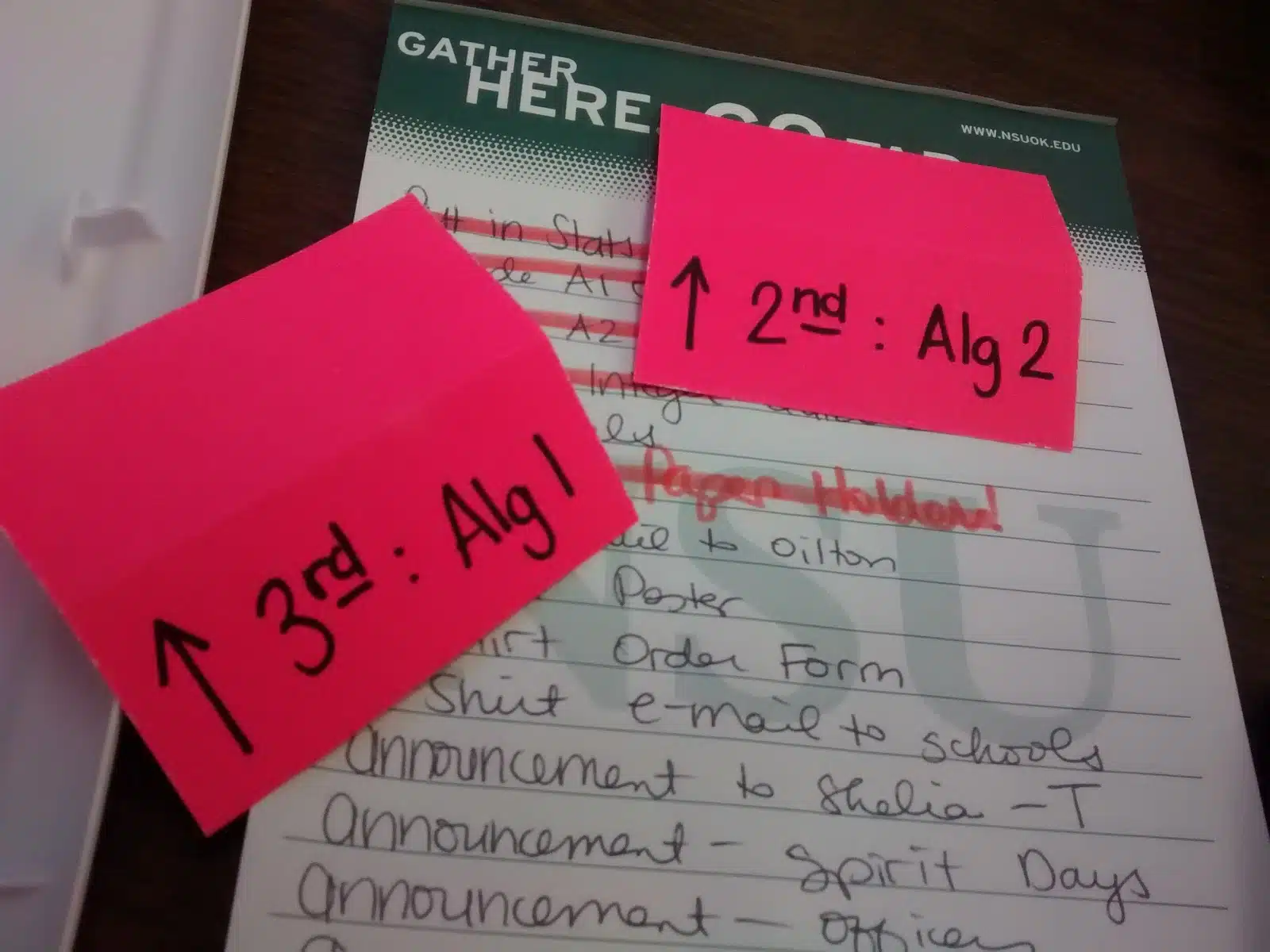
The arrows are my new addition this year. Last year, quite a few students struggled with whether their papers belonged in the tray above or below the label. With a little critical thinking about how the trays are made, I think they could have figured this out. But, students rushing to turn things in before heading out the door to their next class meant papers in the wrong tray all the time. So, arrows it is.
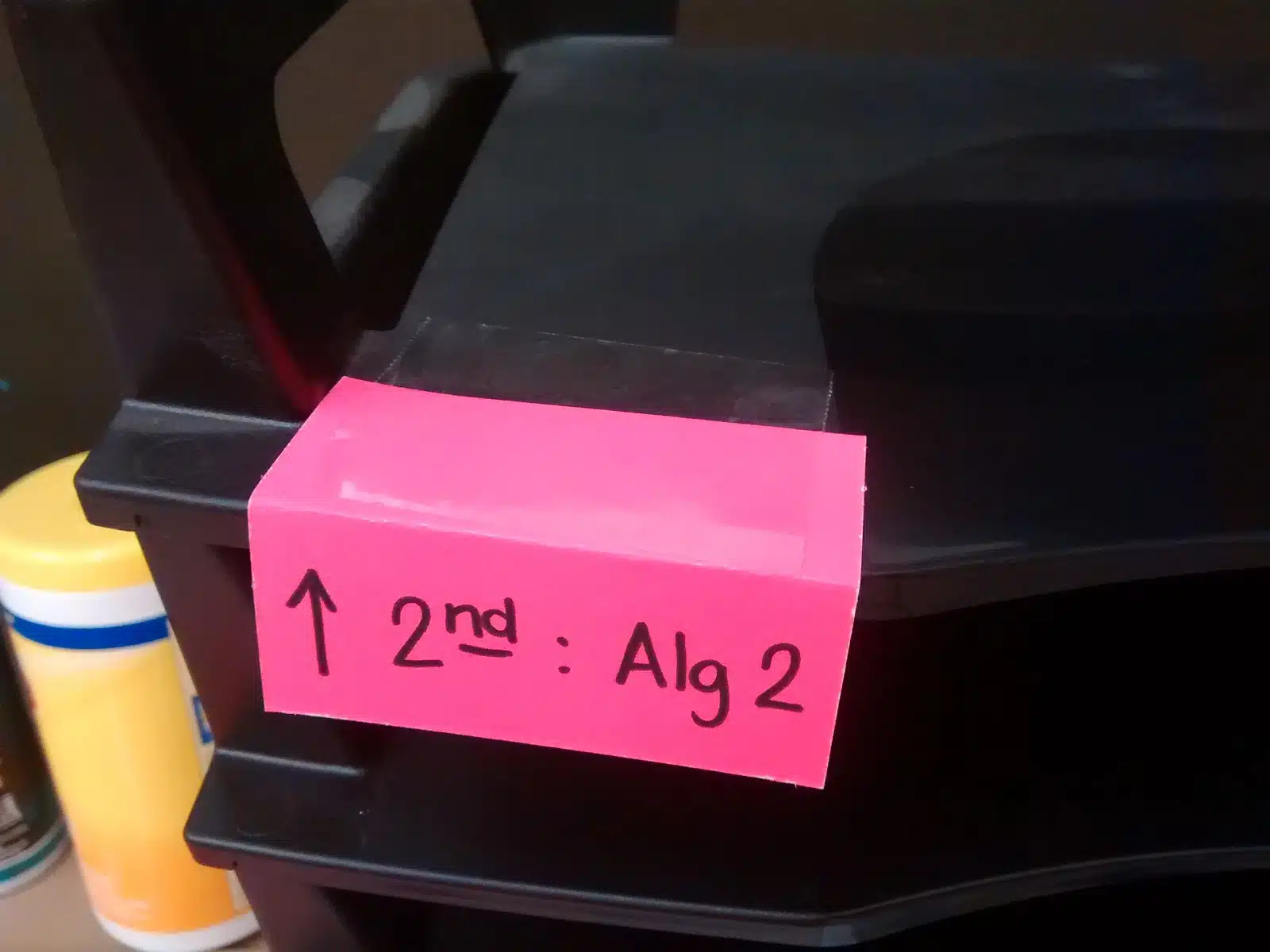
I taped them to the tray with some handy dandy packing tape. I use this stuff for seriously everything.
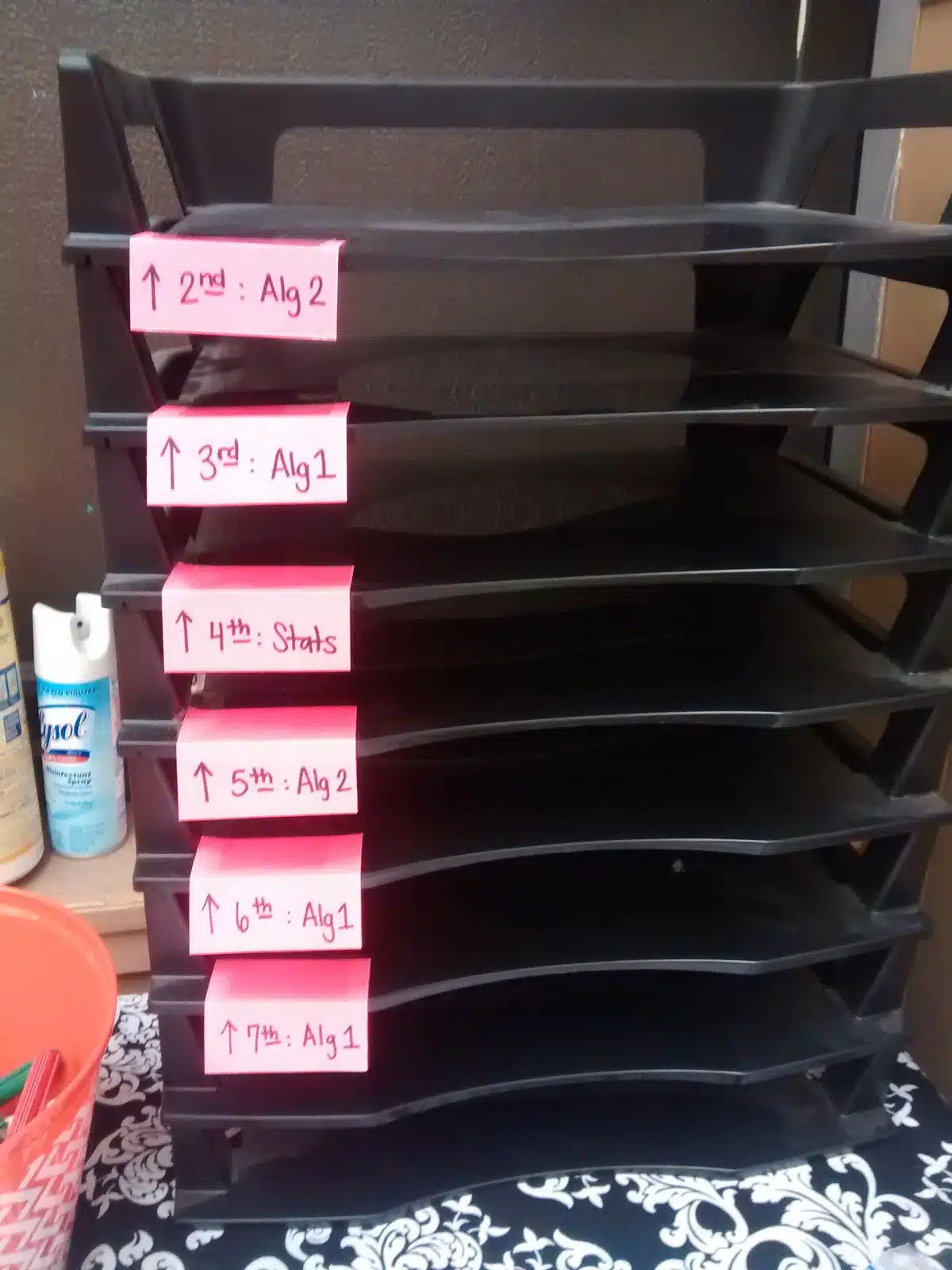
Finished trays. I have two empty trays at the bottom. Wait, make that one. I decided to store my laminated train games that we use on Thursdays on the bottom shelf.
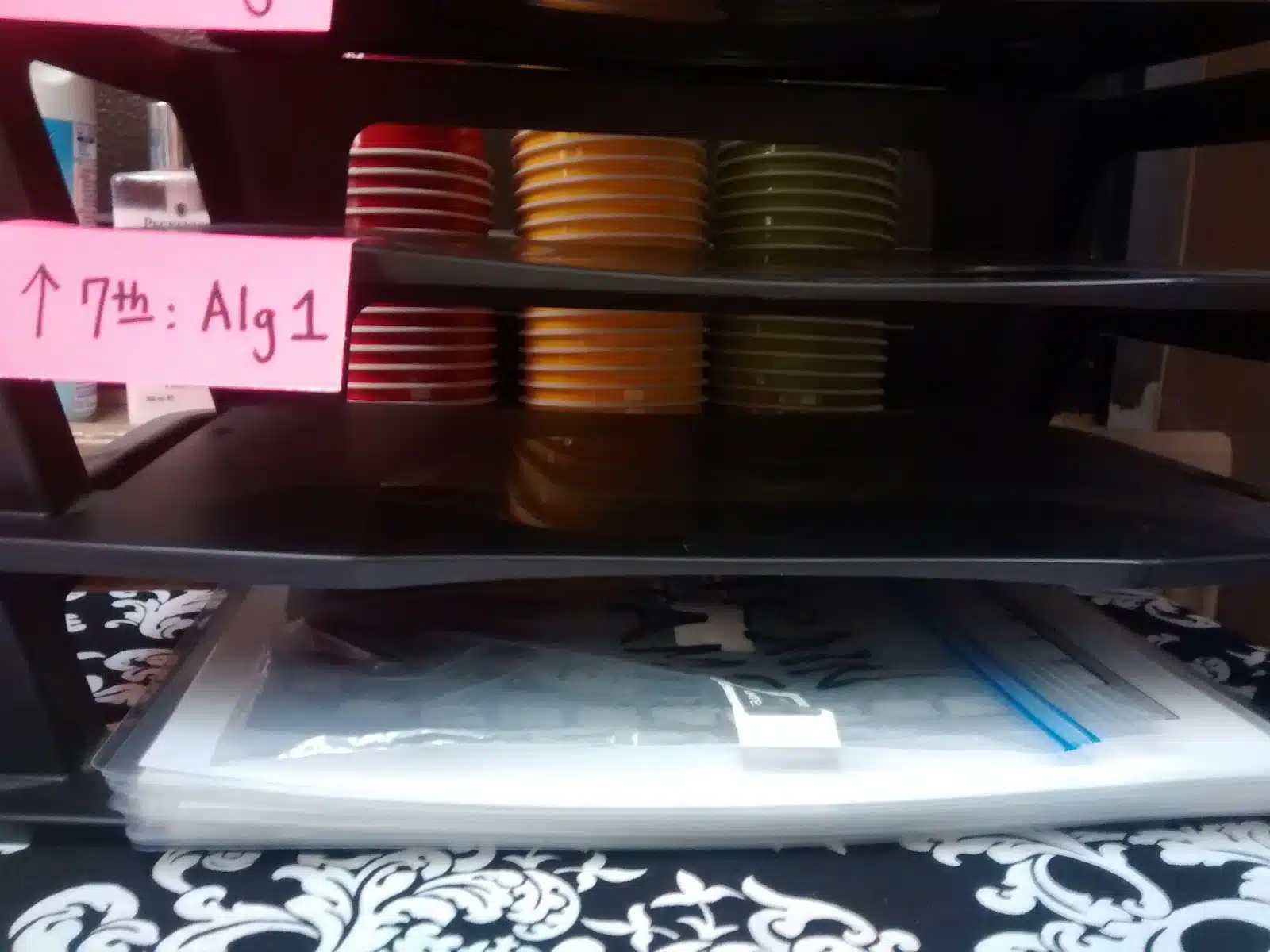
September 4, 2015 – Things Teenagers Say Volume 34
It’s a new school year which means new things teenagers say! Welcome to Volume 34! You can check out previous volumes below.
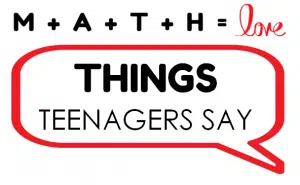
—
If I’m warmed up appropriately, I sound like Whitney Houston.
—
Me: It’s kind of a catch up day since so many people are gone.
Student: What about mustard day?
—
One student to another: Don’t take the taboo game. I’ll kill you.
—
Ms. Hagan’s got this. She’s the origami master.
—
Student: Did you and your fiance meet because of math?
Me: I guess you could say that.
Student: That’s cute.
Me: We think so.
—
If my brain had a facial expression right now, it would be that.
Said while pointing to my Einstein poster.

—
I don’t even understand what you are saying. Are you speaking cursive?
—
A clue given during taboo for the word “pillow”: It’s what you suffocate dying people in the hospital with.
There are no words for this…
—
Ms. Hagan! You’re engaged! That means I can’t marry you. I can’t even date you…
#awkward
—
I wouldn’t think Ms. Hagan would be the type to want to get married since she has all her cats and stuff.
—
Ahhh! Where are your What Would Satan Do Seriously posters? Did you take them down?
For the record, WWSDS stands for What Would Slope Dude Say?
—
Student: Can I just write IDK?
Me: NO!!!
Student: Oh, can I write IDC, then?
—
Student while licking paper: It doesn’t taste like tree, you know.
—
Student: Can you please just tell us the secret of Petals Around the Rose?
Me: I took a pledge that I would never share the secret.
Student: You don’t have to tell us the secret. But, you could pretend like you’re talking on the phone and just slip the secret in there. Then, we’d overhear the secret, and you wouldn’t get in trouble for telling us.
—
Me: Coffee. This isn’t cool. [No food or drinks allowed in my room except bottled water.]
Student: No, it’s not. It’s very warm.
—
After learning about my research project for grad school:
Student: Since we’re your guinea pigs, do we get celery?
—
I’m going to tell people in Wal-Mart, “I like your breathing pattern. Here’s my number.”
—
Can you hide me so I don’t have to go to the dentist?
—
Flirting is bad for your health.
September 5, 2015 – Christmas in August
Recently, I had a Christmas in August moment. Last year, I received an e-mail from my school saying they had grant money that needed to be spent before it was forfeited. Did I need any instructional resources for my classroom?
I e-mailed in a wish list in three stages. Really need for next year. Kinda need for next year. Would be nice to have for next year. I headed off to Australia for the summer and quickly forgot about it. I never heard anything back from the school, so I assumed nothing was going to come out of it. Oh well. It never hurts to ask.
However, I returned to find several huge boxes waiting for me! It was definitely like Christmas! Here’s what I received:
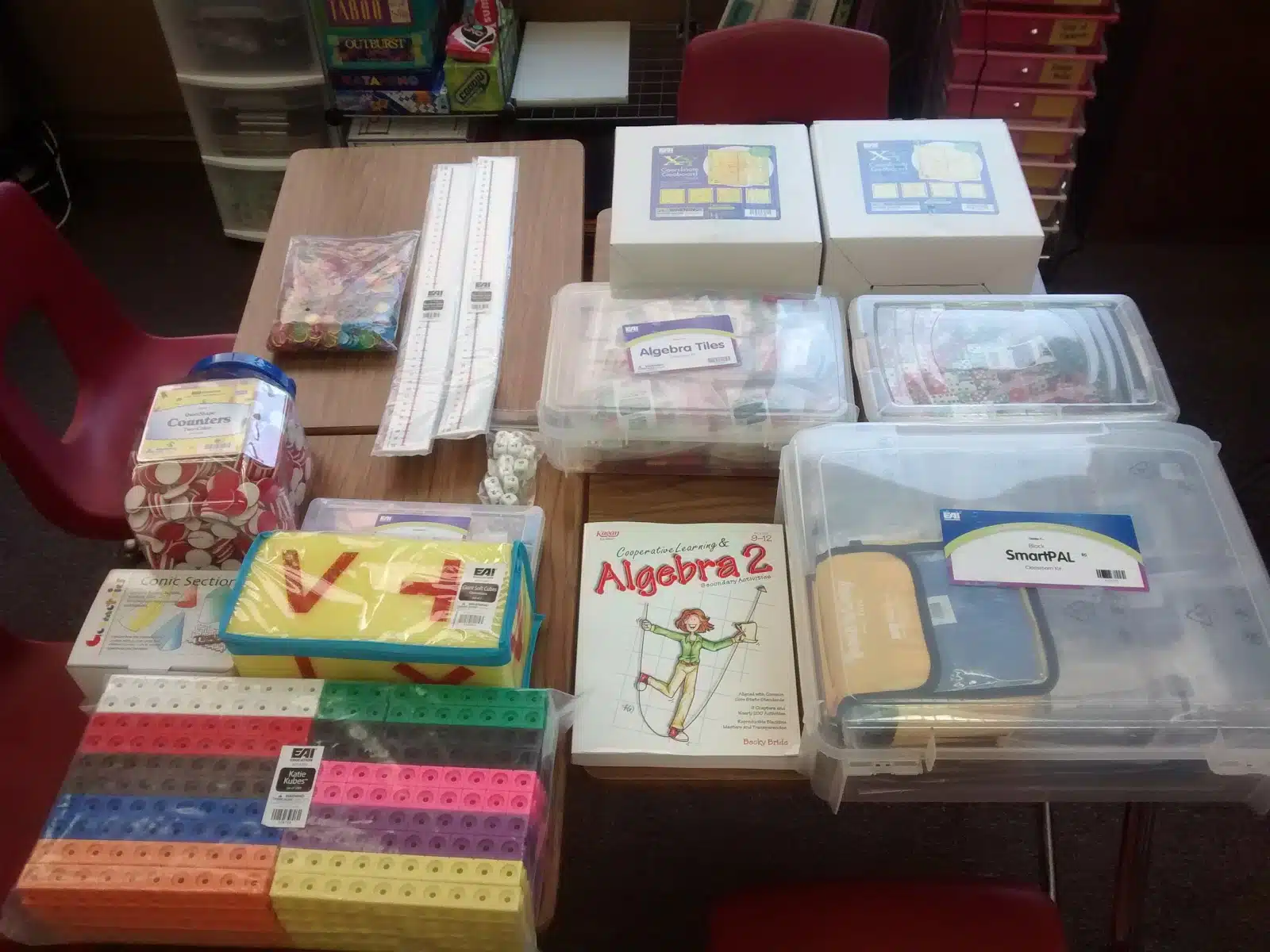
SmartPAL Kit with dry erase sleeves, markers, and eraser cloths. Sadly, I only remembered the pic of the markers and erasers. Oops. Previously, I was using these dry erase pockets from Amazon. You really can’t have too many of these!
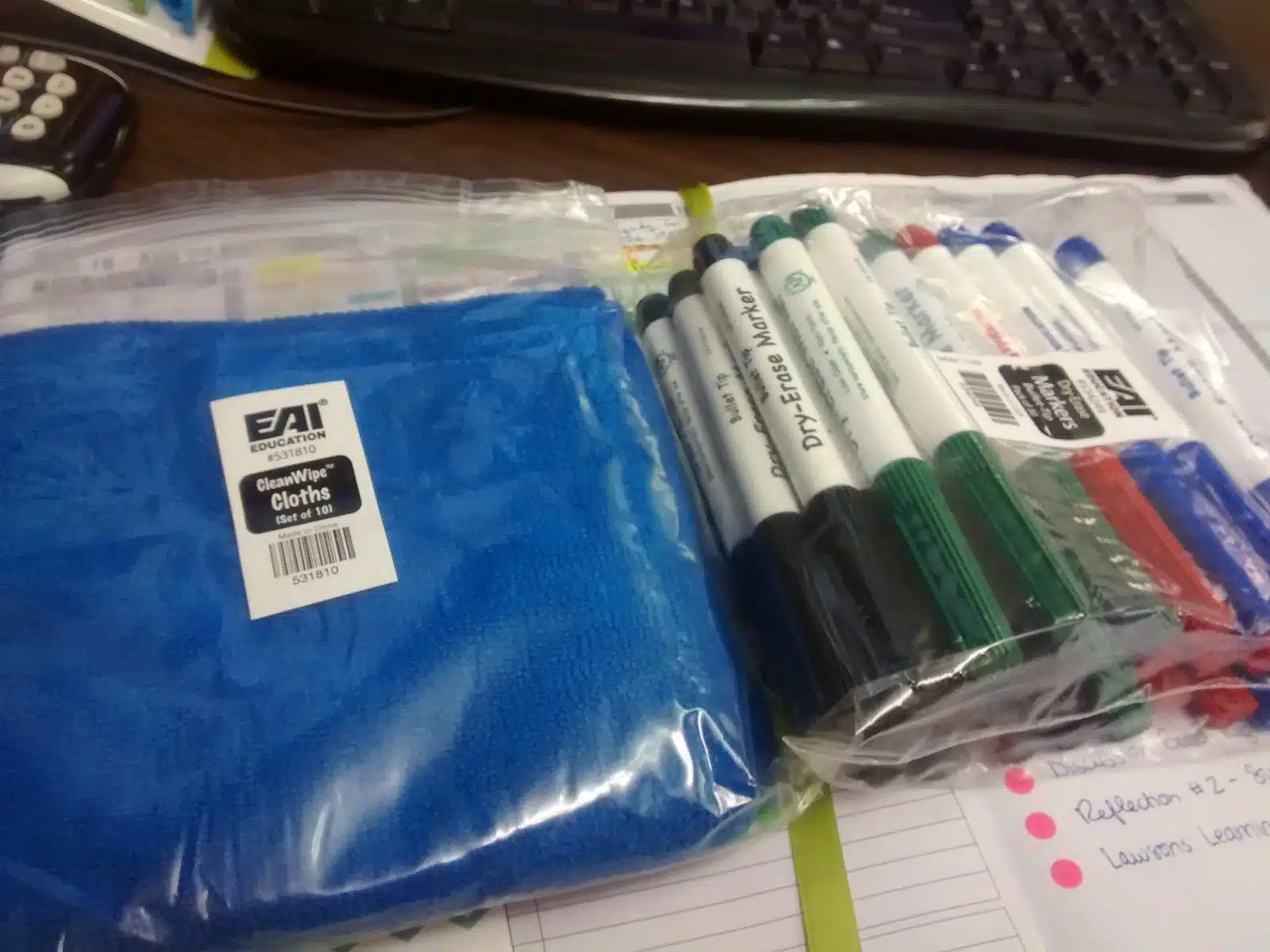
X-Y Coordinate Geoboards – I’ve never used these before, but I’m excited to try them out this year! When I complain about rubberbands being everywhere, remind me that I brought this on myself!
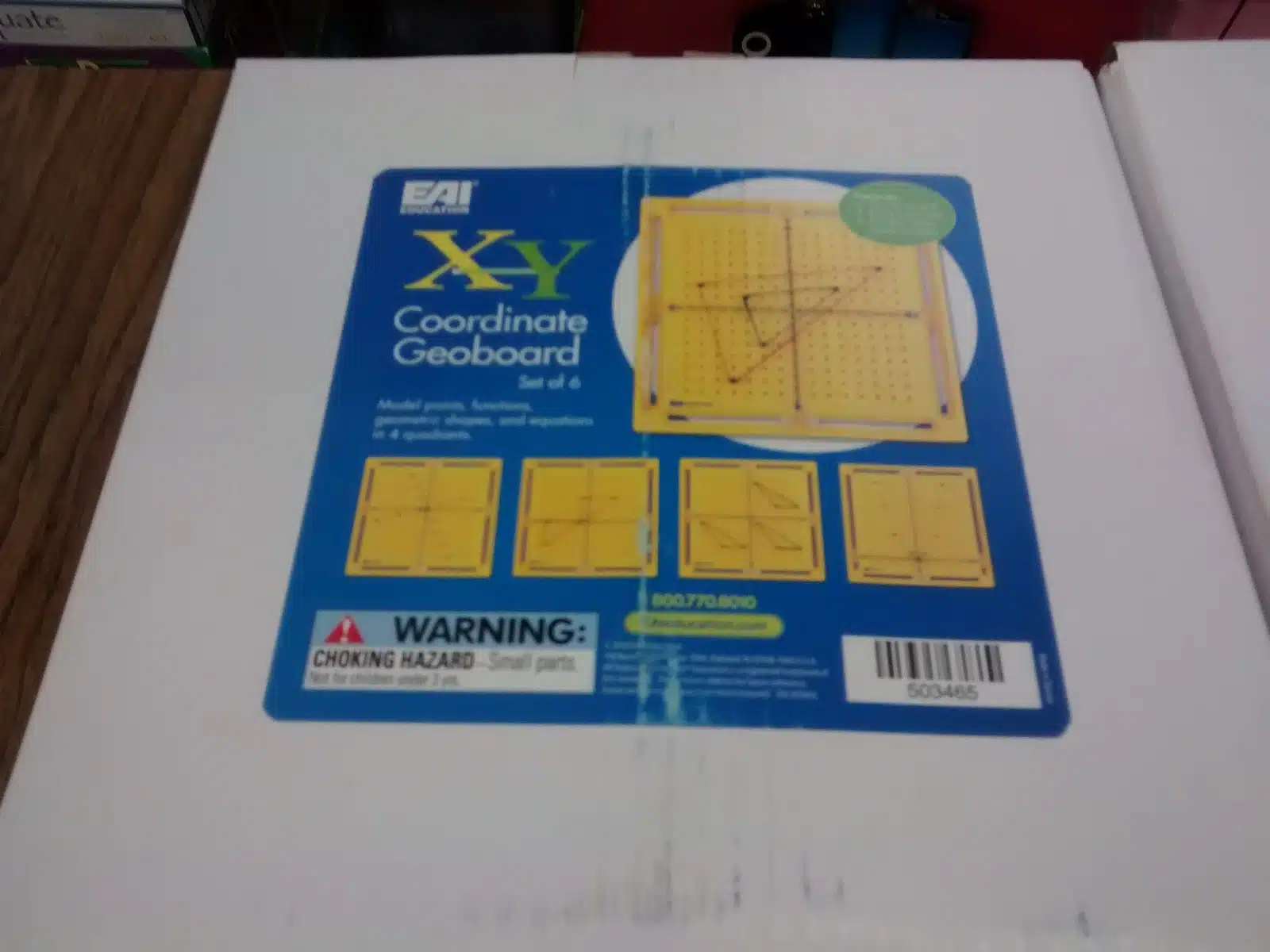
600 Dot Dice. I can’t wait to use these with my stats class. And with my Algebra 2 students when we study exponential growth and decay!
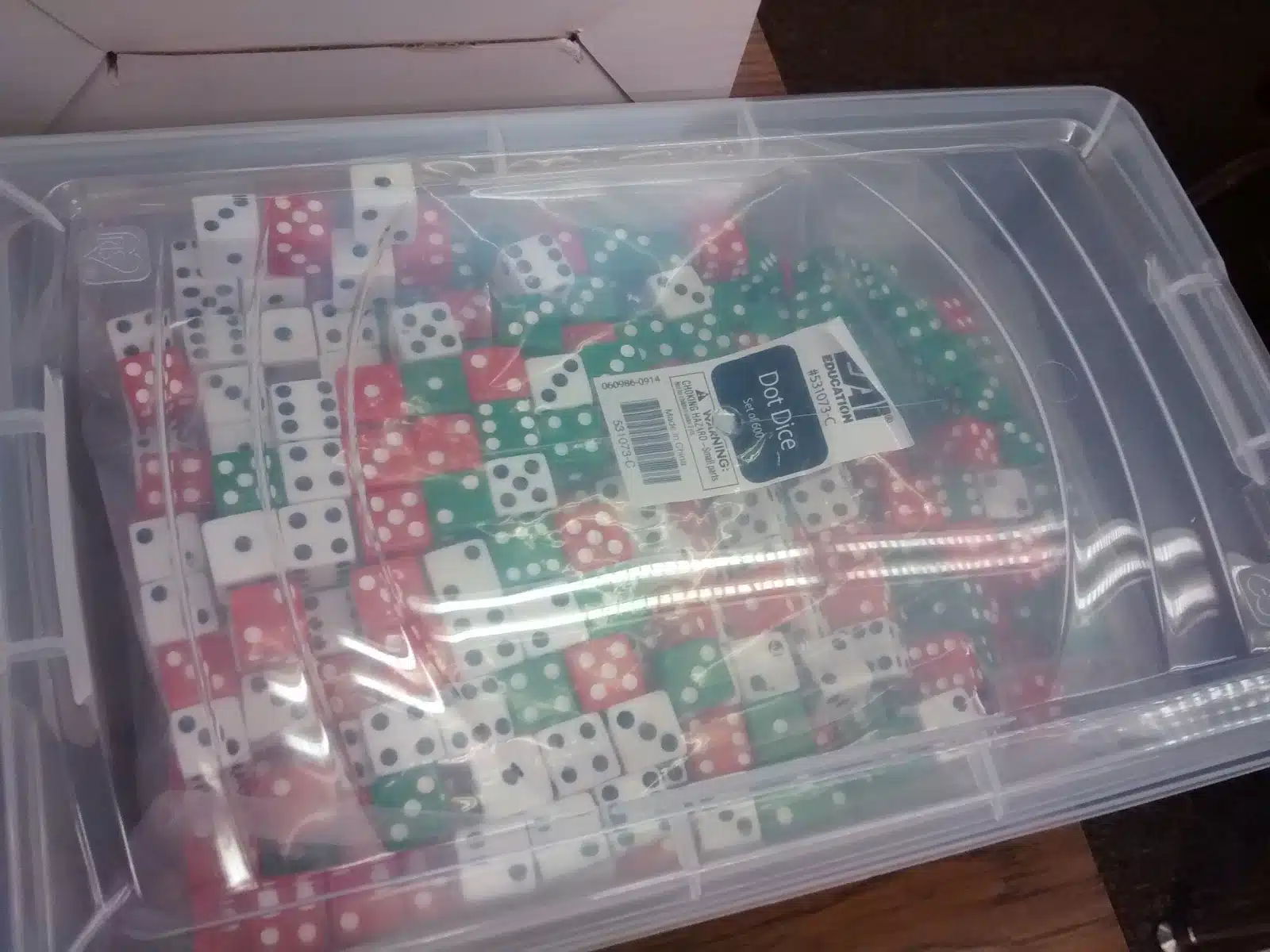
Algebra Tiles. I wrote about my plan to organize these here. I love using these to illustrate completing the square!
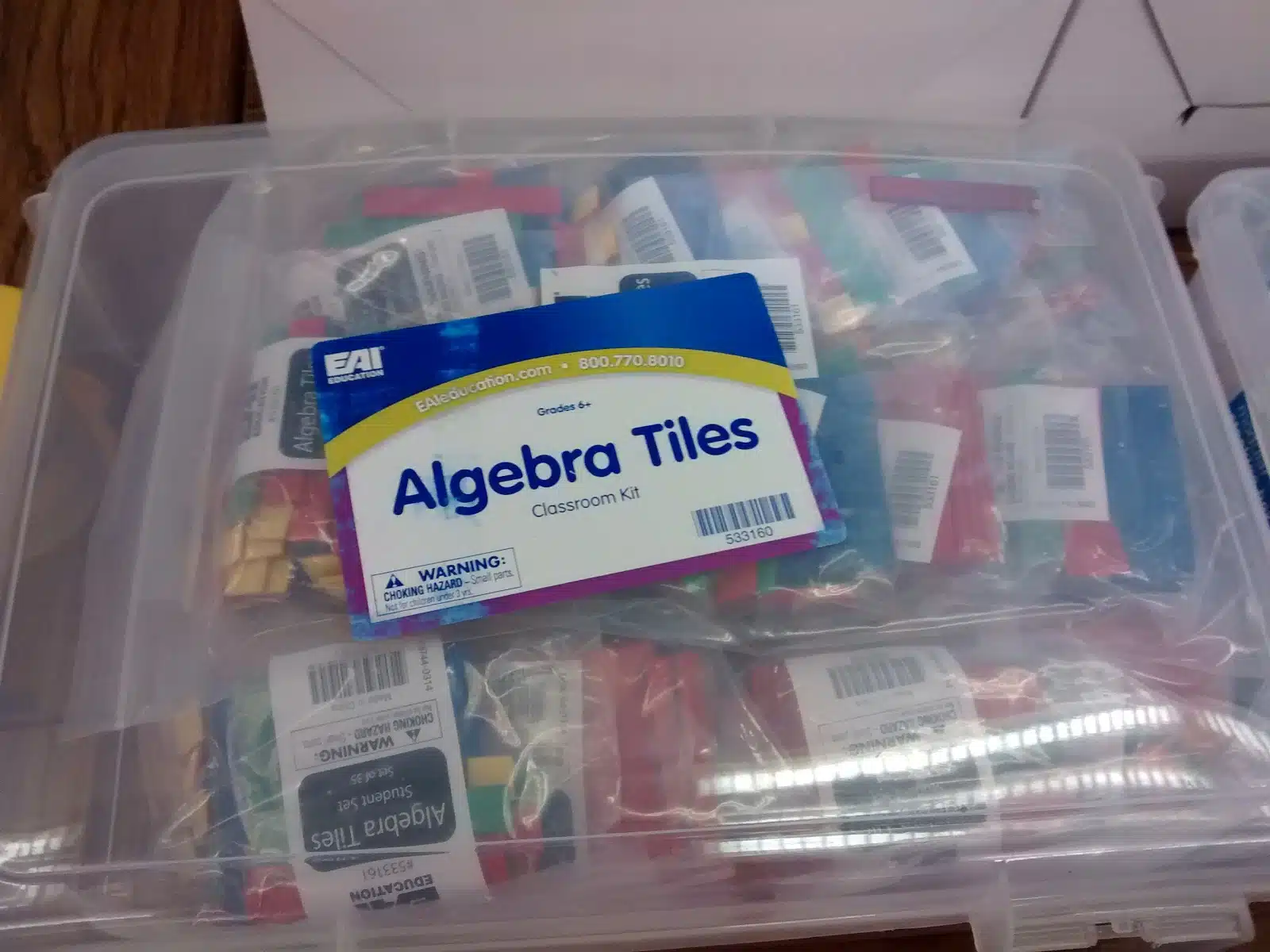
Bingo Chips. Or transparent counters if you want to be more generic. We use these for tons of activities. And, I think they’ll get a fair amount of use in stats!

Number Lines. One per student. I’m using these for my grad school project that is focusing on remediation of integer operations. Still need to blog about this…
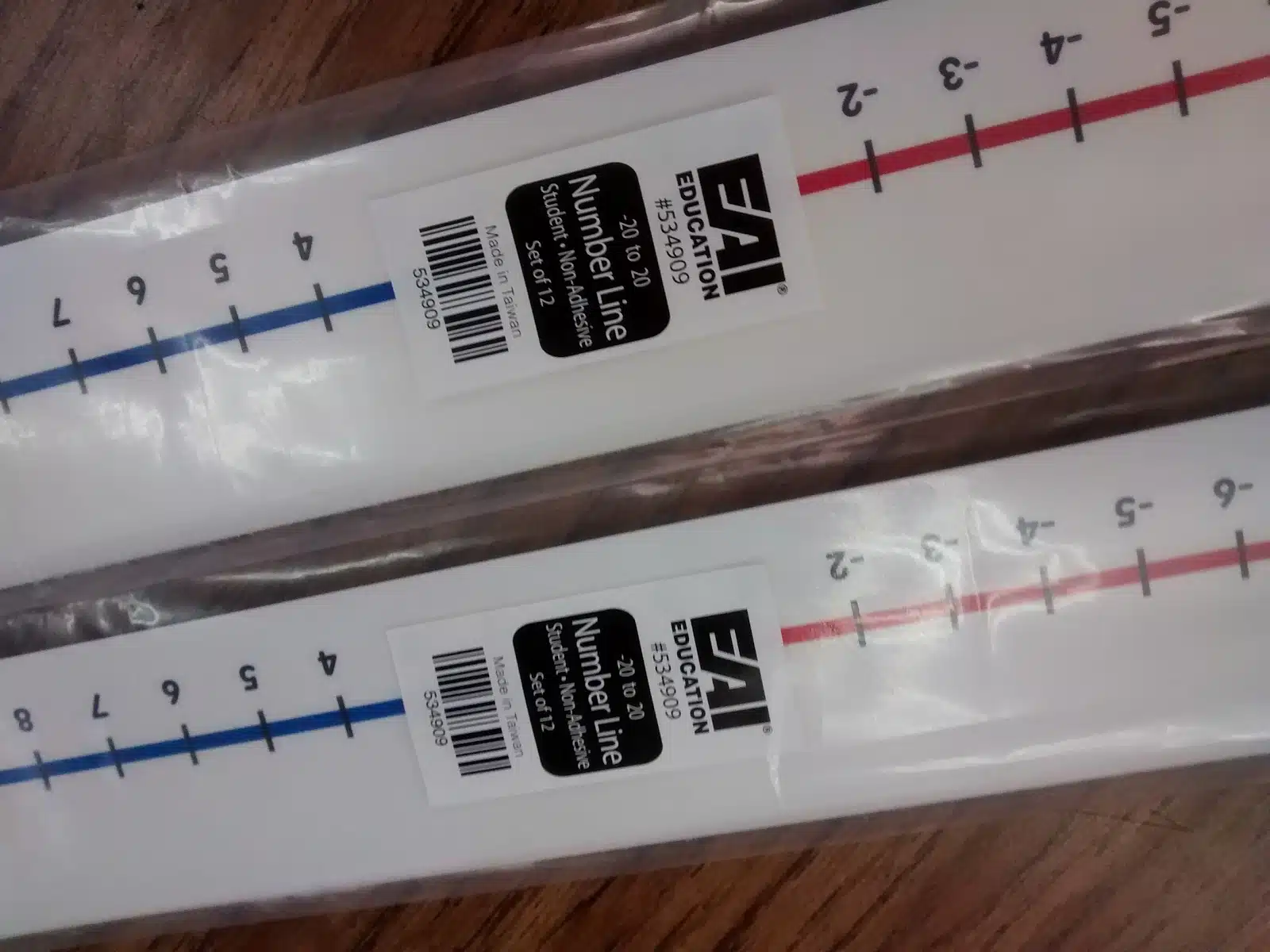
Integer Dice. So excited to make an activity that uses these!
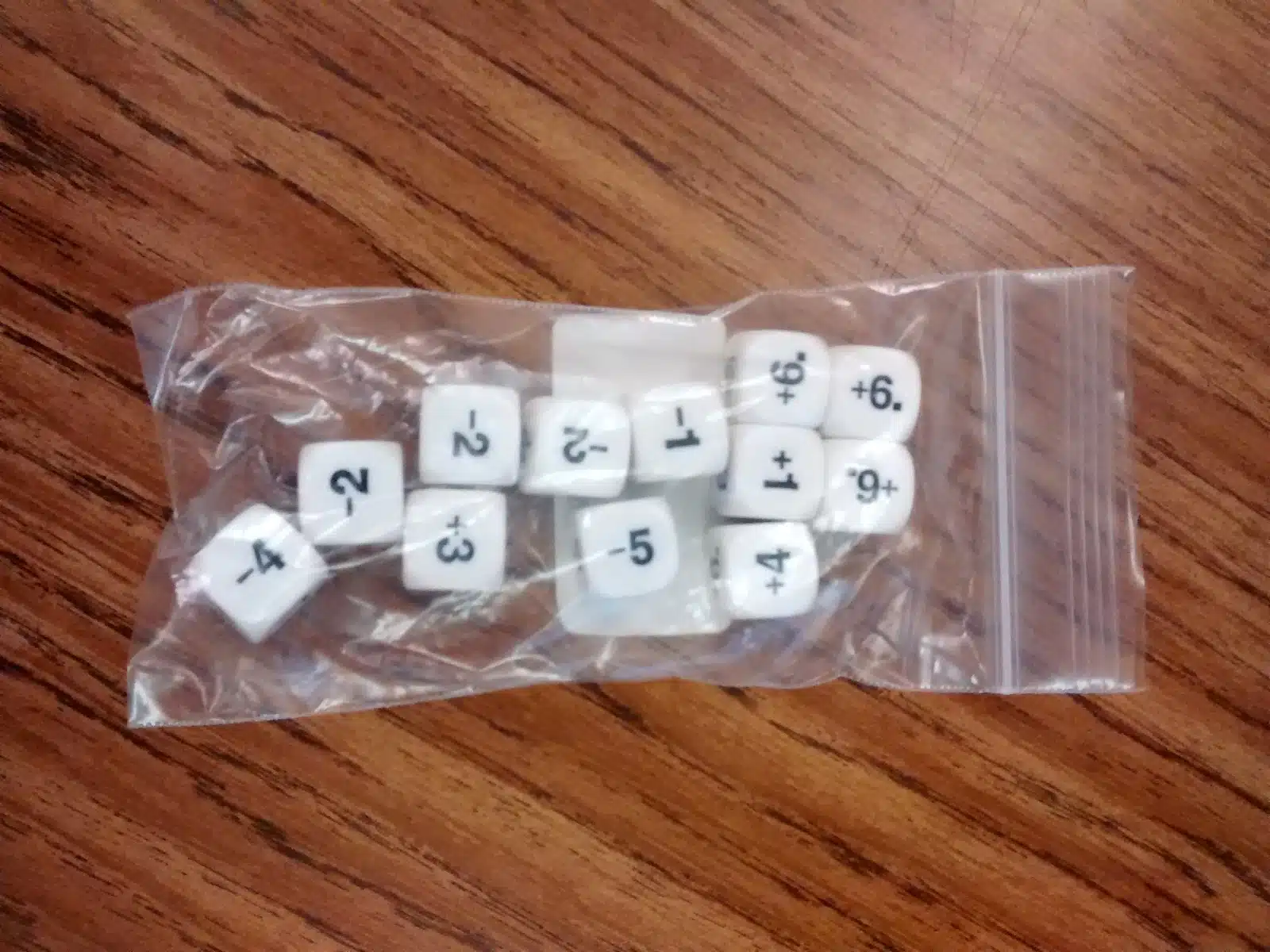
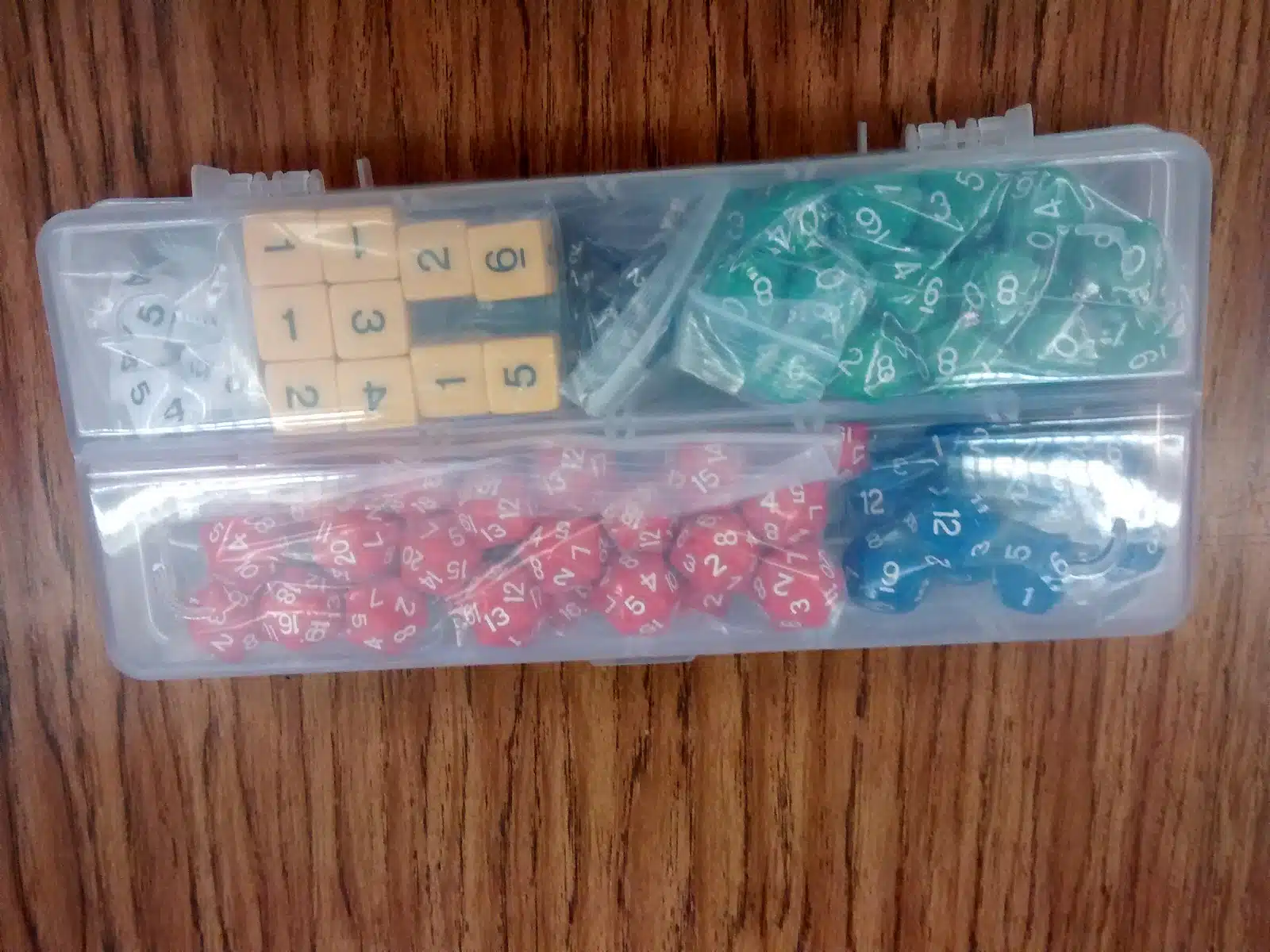
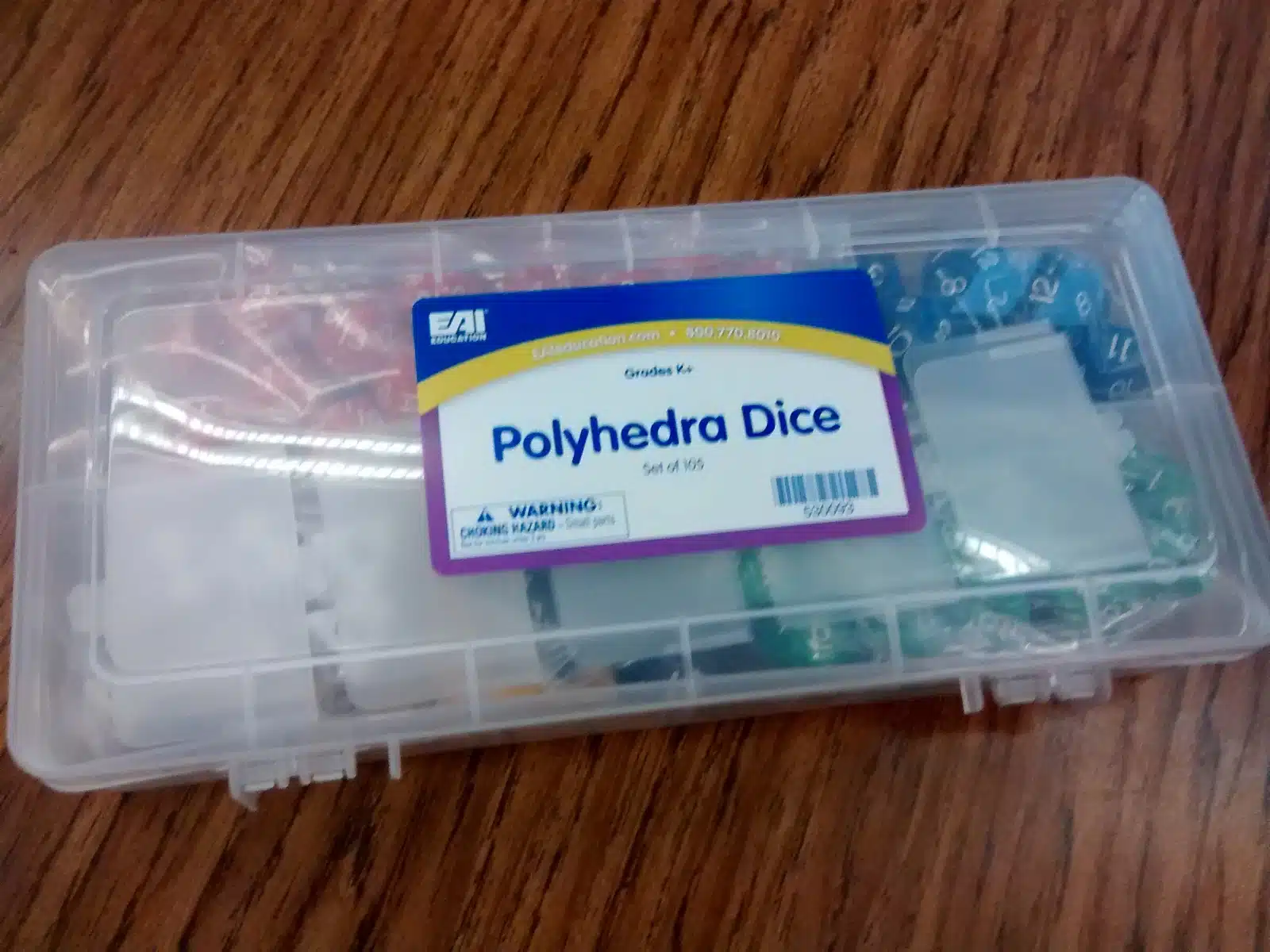
Two Color Counters. I’ve always had to use bingo chips because I didn’t have any of these. Excited to have some of these at last!
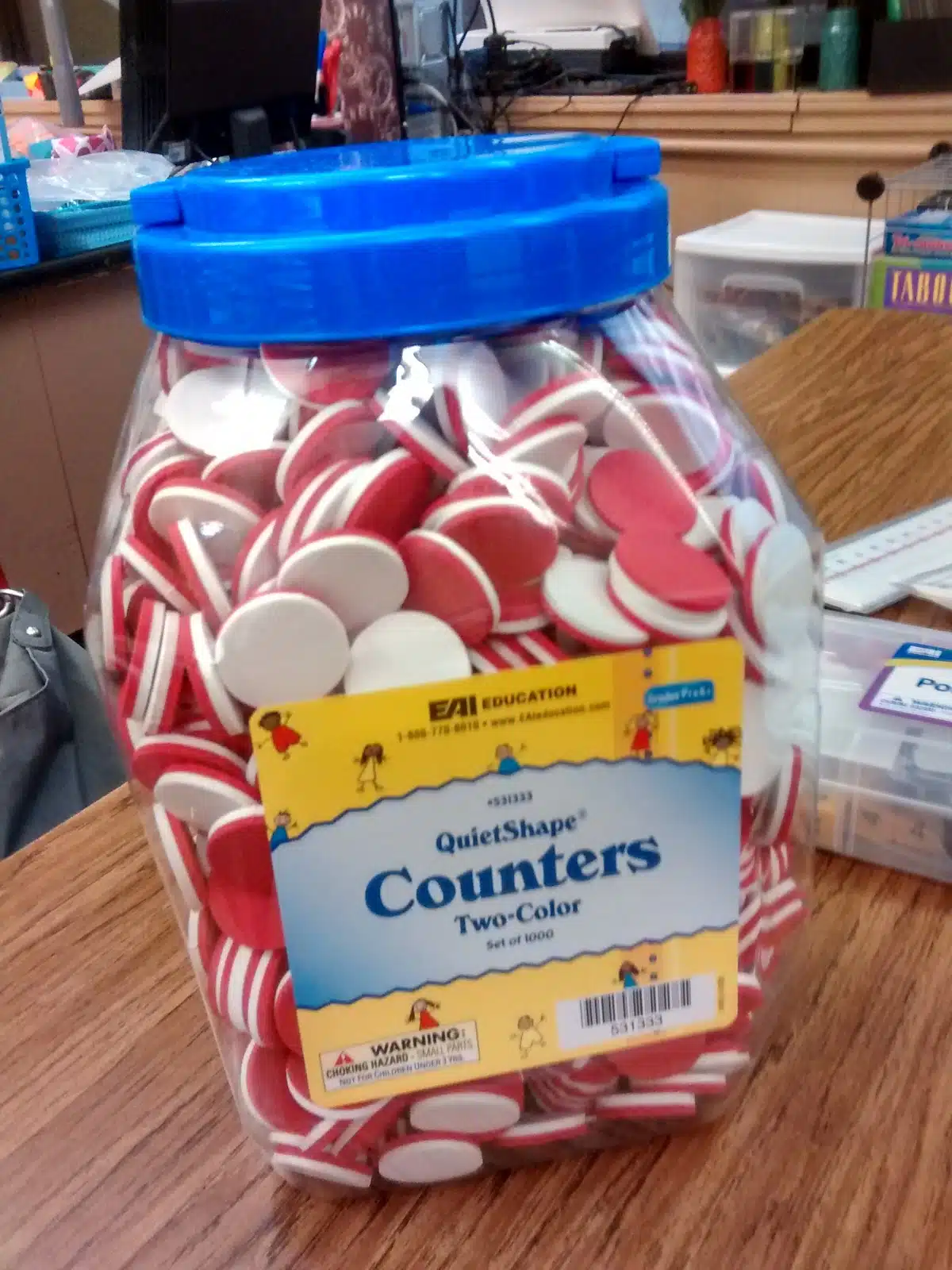
Kagan Cooperative Learning & Algebra 2 – I bought a copy of the Kagan Algebra 1 book myself during my second year of teaching. They’ve just recently come out with an Algebra 2 version. I’m so excited to dig in and see what activities I can use with my students. It’s aligned to CCSS which is a bit annoying for me since Oklahoma decided to back out of Common Core. I will still be able to use a lot of the lessons, though.
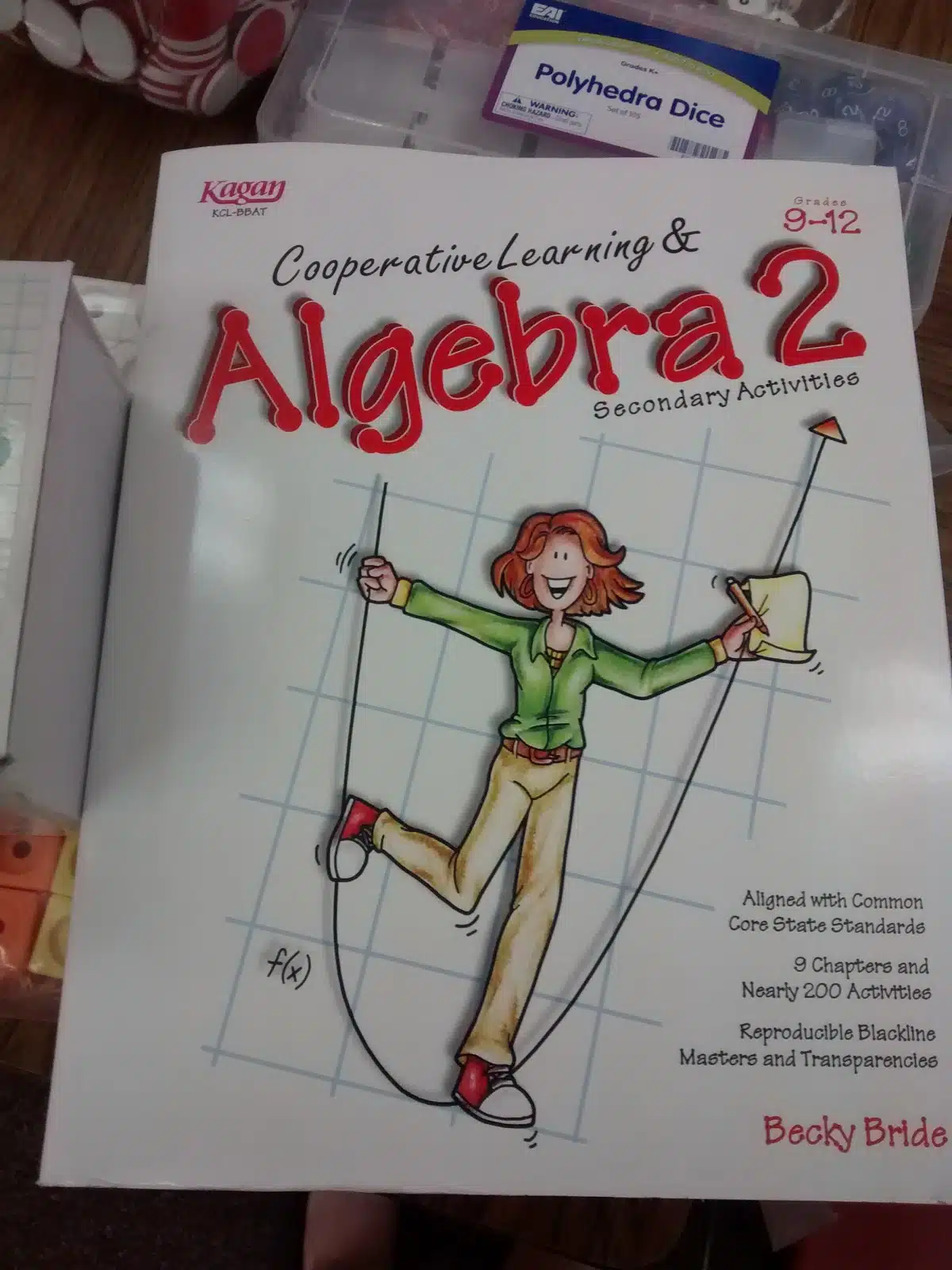
Giant foam operations dice
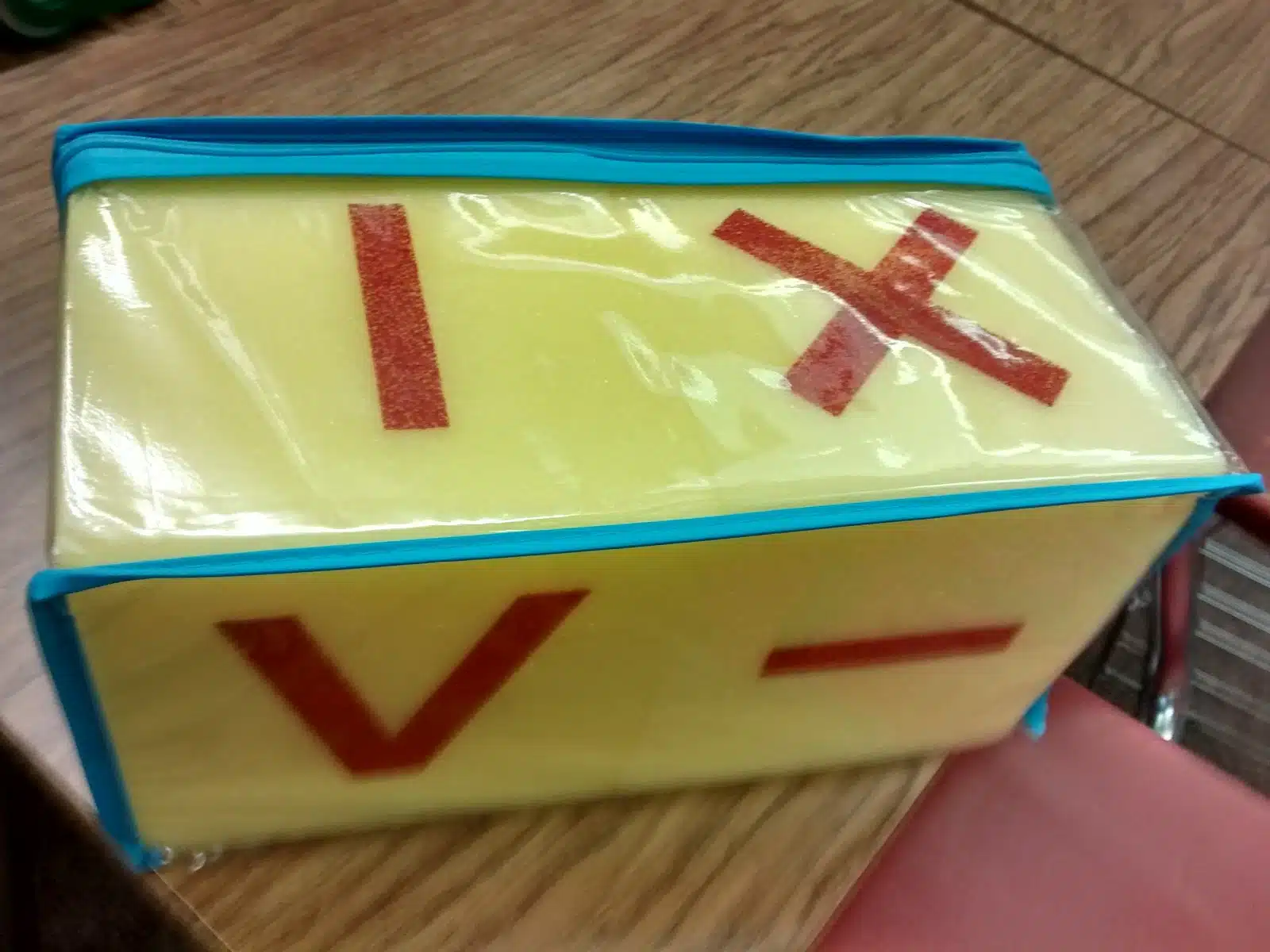
Foam Conic Sections – These will be awesome to illustrate conics in Algebra 2!
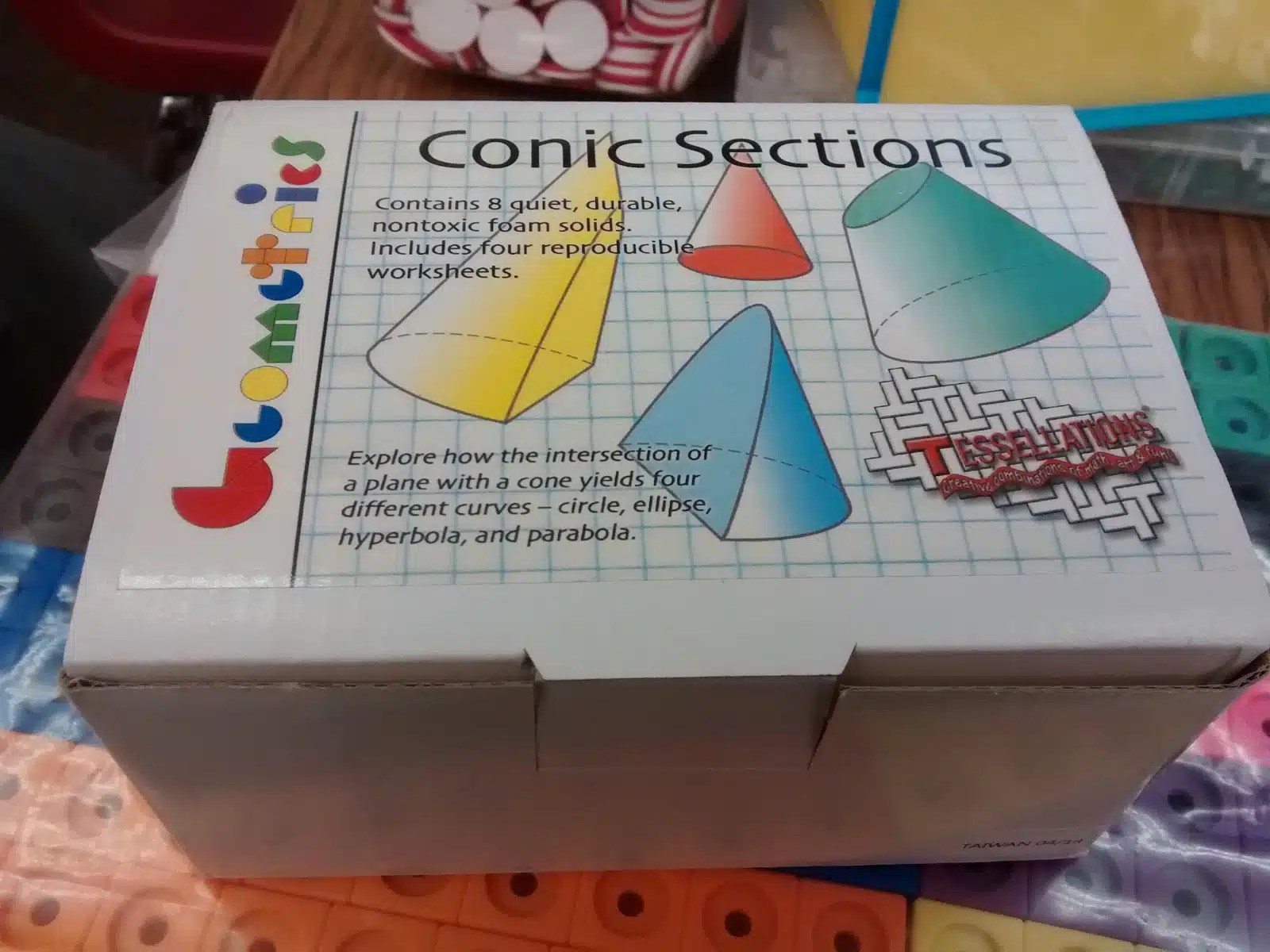
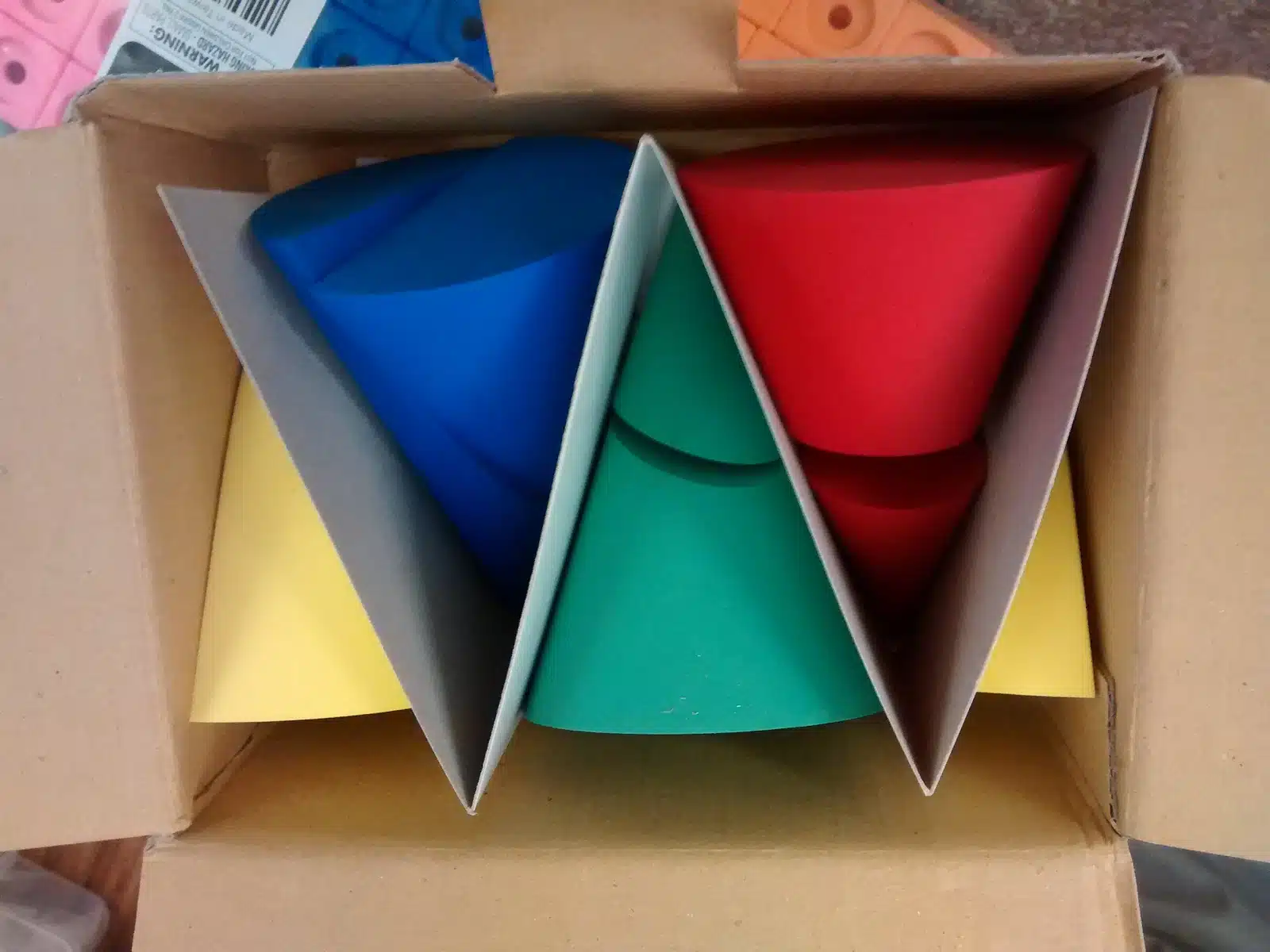
Linking Cubes – Is it bad that my main motivation in asking for these was so I could do Hotel Snap with my students???
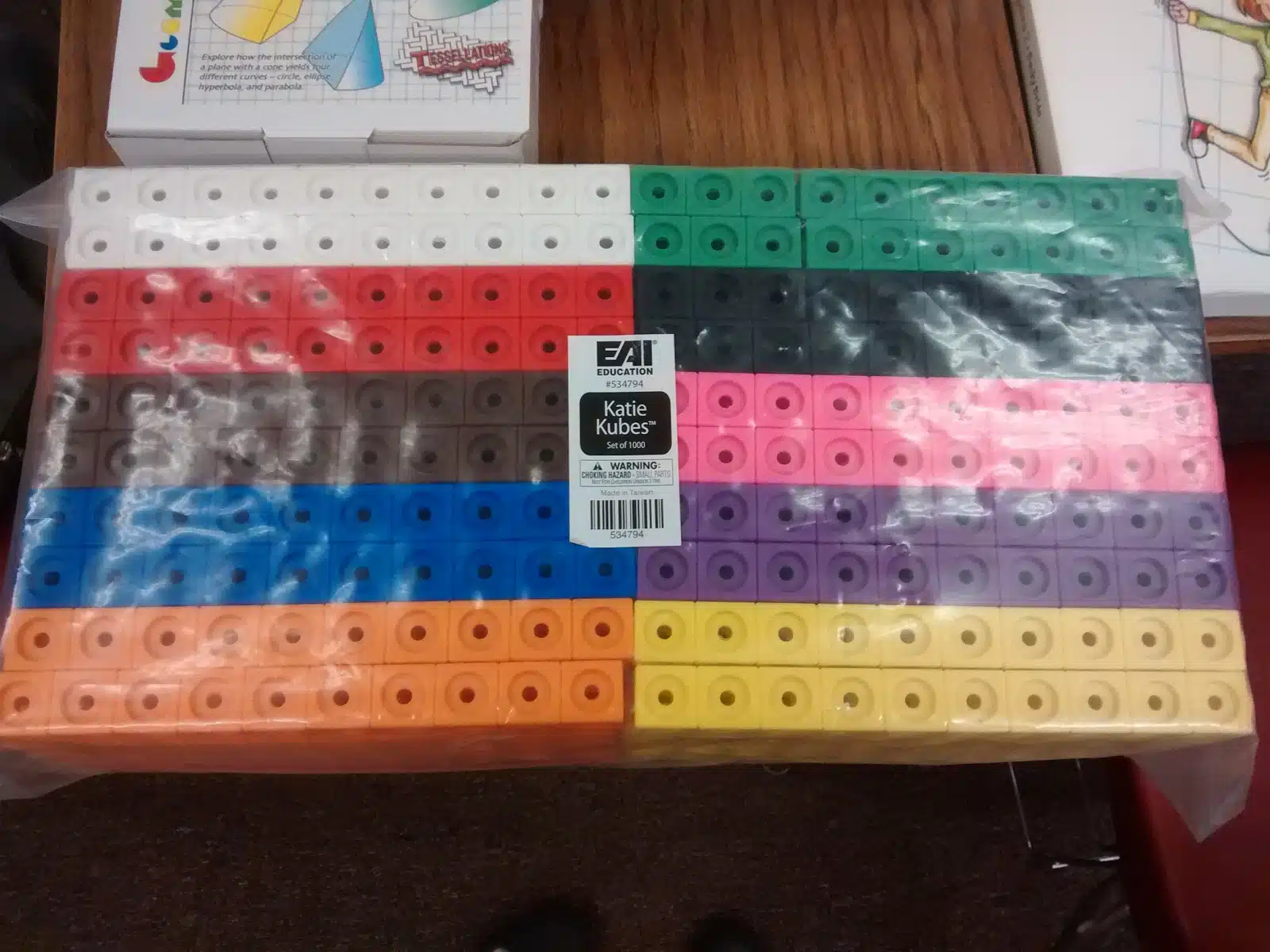
I’m so thankful for all my school does to support my work in the classroom!
What’s your favorite math class resource? Tell us in the comments!
September 12, 2015 – Mind-blowing Facts About Derivatives and Spherical Geometry
So, I mentioned in my previous post that I recently had my first experience with spherical geometry at math teachers’ circle.
The session was called Lunes, Moons, & Balloons. You know when a session starts off with balloons and sharpies being passed out that it’s going to be a good one!
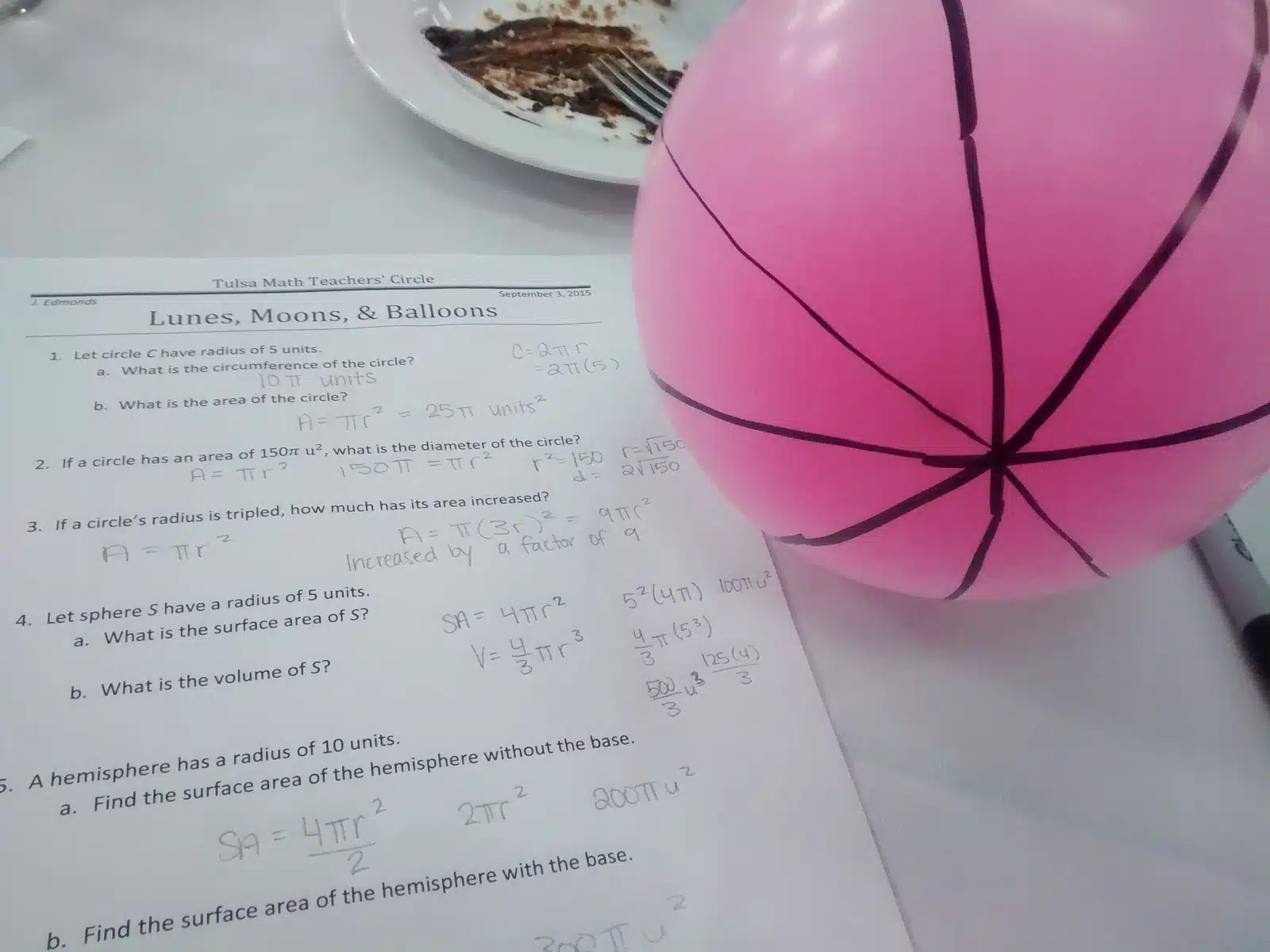
We began with a pretty simple worksheet to jog our memory of circle and sphere formulas.
I was coasting along pretty well until I hit question 4. I don’t teach geometry. I’ve never taught geometry. I don’t remember the last time I needed to calculate the surface area of a sphere. What in the world is the formula?
Now, I knew the formula for the volume of a sphere. That’s ingrained in my brain. Probably from being on the academic team in high school. The table I was setting at had an interesting mix of people. 1 elementary teacher. 3 middle school teachers. 1 high school teacher. 2 college professors. One of the college professors remarked that this was so nice because it was the easiest math she had dealt with all day. The elementary school teacher remarked that this was the most difficult math she had dealt with all day.
I mentioned to my table that I couldn’t figure out the formula for surface area of a sphere. One of the middle school teachers asked me if I knew the formula for volume of a sphere. Of course! Then, she asked me why I didn’t just take the derivative of the volume formula.
Oh. My. Goodness. The surface area of a sphere is the derivative of the volume of the sphere. How did I not know this?
Another person at my table immediately recognized another derivative relationship. Circumference of a circle is the derivative of the area of the same circle. #mindblown I excitedly messaged my fiance to ask if he knew about this relationship. He did…
This is just a reminder to me of how awesome and beautiful math is. I was a math major in college, but I still have so much more math to learn and come to appreciate.
Next, we moved on to the hands-on aspect of the meeting. We drew lunes on our balloon. And, then we ended up drawing a triangle. A triangle with angles that add up to more than 180 degrees or pi radians. Again, mind blown.
Actually, most of my table was solving the problems in their heads. But, I decided I needed to draw it out to see it.
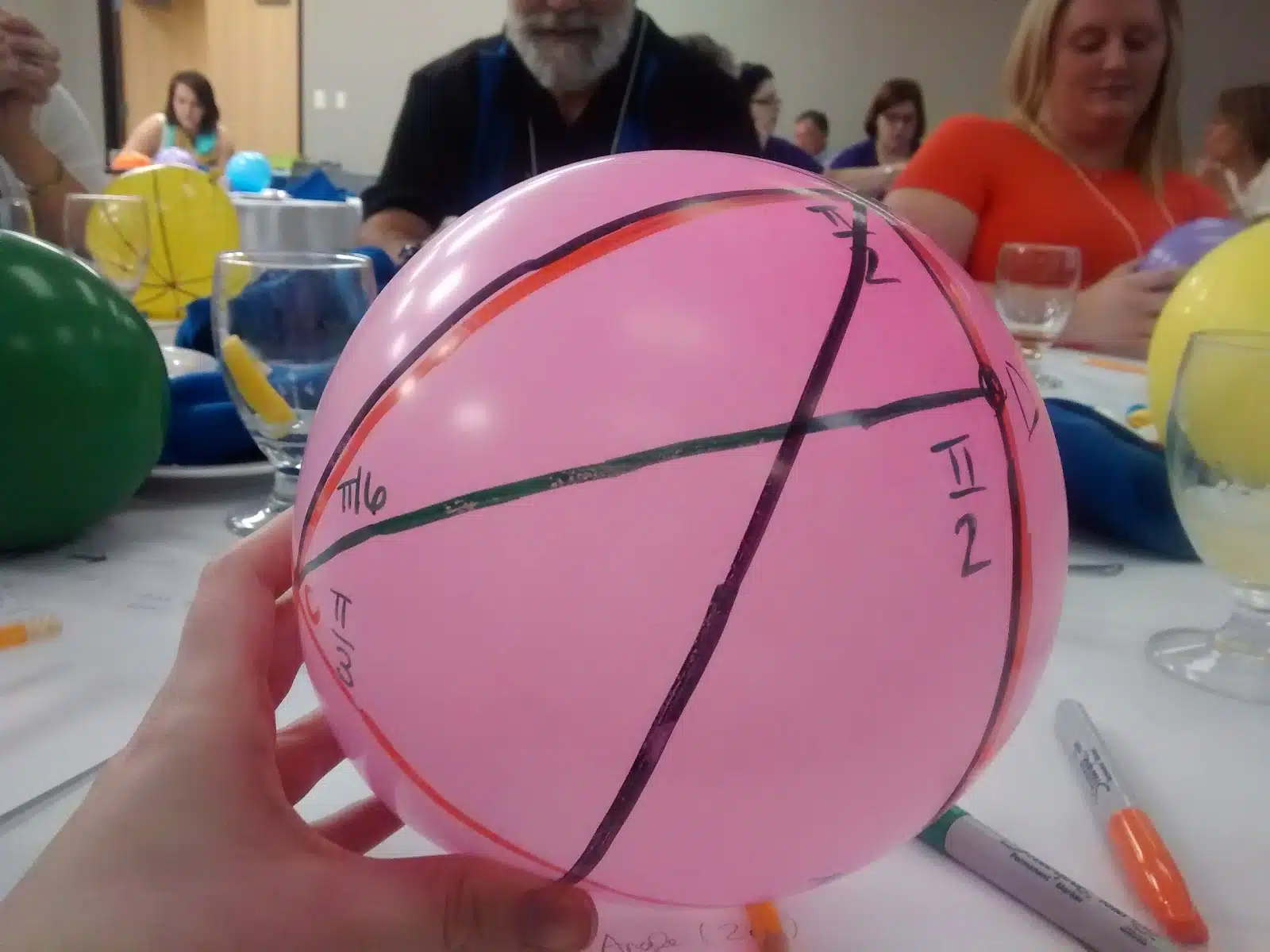
I’m glad I did because the problem became more and more complicated and soon everyone was crowded around my balloon. They were thanking me for illustrating the problem because it helped them to see how to solve it. It was just a reminder that visuals are important. So often, my students don’t think they are because they can do simple problems without them. Maybe this is a sign I need to do more extended problems that eventually need a visual to help solve them???
So, the point of this post? Math is cool. And, I’m still learning. I hope I never stop learning.
What’s the most recent thing you have learned about math?
September 13, 2015 – Homecoming T-Shirt Epiphany

This isn’t a math-y post. It’s a student council-y post. This is my fourth year as student council sponsor. That means this is my 7th time to organize the ordering of homecoming t-shirts. It’s not a job I love, but it’s not a job I hate either. It just usually happens at a hectic time of year.
For example, our football homecoming this year is September 18th. School started August 20th. That’s not a ton of time to create a design, sell t-shirts, and give the printing company enough turn around time so you get them back in time. I can be quite the disorganized person, but I’m trying to work on that.
This year, I had an epiphany that I should have had ages ago. Make people fill out order forms. You’re probably thinking, “This is her epiphany?!?!?!?” I can be a little slow sometimes. Really slow. In the past, I’ve just kept a list on a clipboard with name and shirt sizes. This worked. Kinda.
But, this year, I made an order form. And, it was the best decision. People were able to clip their money to the order form and lay it on my desk without interrupting my lessons. Success!
And, when I sat down to compile my numbers, I just had to flip through the order forms and enter them in my excel document.
And, the good news is, now that I’ve typed the order form, I can just change the pertinent details for future homecoming shirts!
September 19, 2015 – Organizing with Class Crates
This year, I’ve decided to designate a separate crate for each class period. These crates are for students to store their notebooks in (if they wish). And, each student has a file folder to hold graded work.
This is building off of last year’s organization system. Last year, each prep (Alg 1, Alg 2, and Trig) had a file cabinet drawer to store notebooks in. Graded papers were stored in 3 crates. This worked fine, but I decided I wanted to reclaim my file cabinet for my own storage!
Having a separate crate for each period makes it easier and faster for students to find their notebooks!
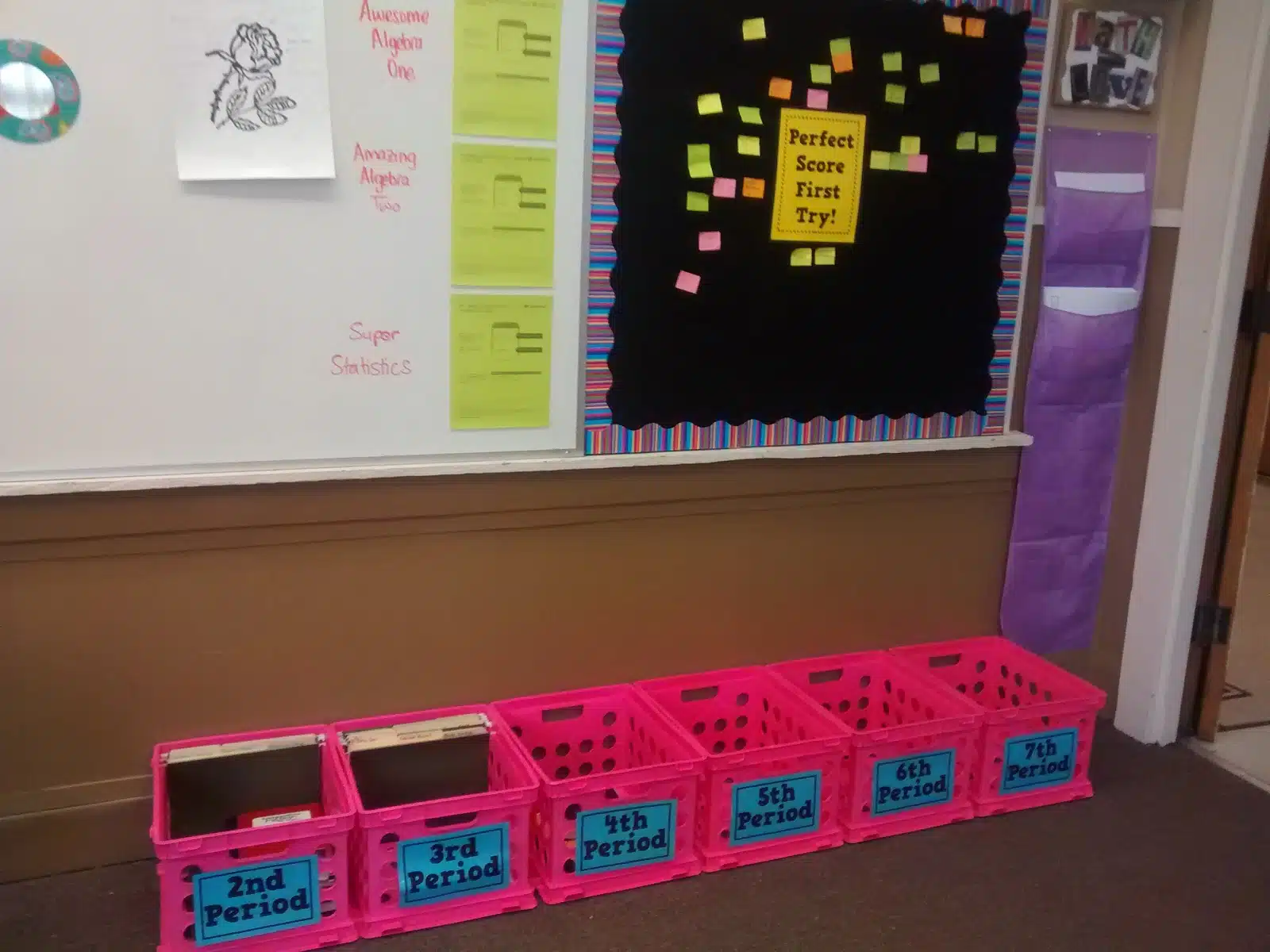
I printed the labels two to a page, laminated them, and cut them in half.
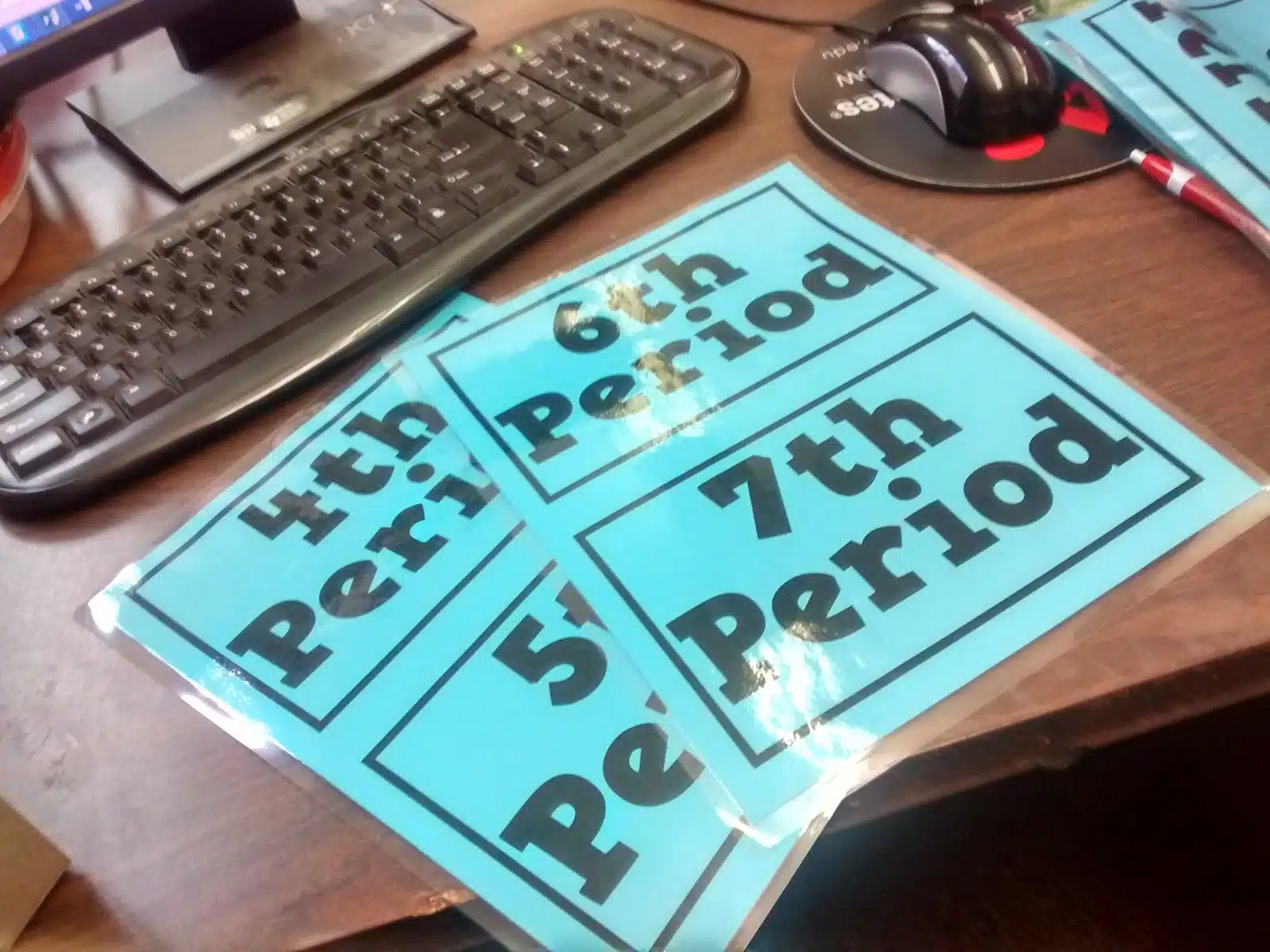
September 22, 2015 – Things Teenagers Say Volume 35
Happy Tuesday! I decided today is the perfect day to round up the latest crazy things teenagers have said in my classroom. There’s never a dull moment with them.

—
Student: What is their meat made out of in Australia?
Whole Class: [Shocked Silence]
Student: Well, I don’t know if they have cows. So, I thought they might make their beef out of something else.
—
Ms. Hagan is cooler than you. Don’t mouth her!
—
Do you have a separate credit card just for buying cat food?
—
I like to live dangerously. I play the Wii without the safety strap.
—
My life goal is to staple pudding to a tree.
—
A student blew a bubble with his gum and slapped his face to pop it. Here’s the conversation that ensued:
Me: Is that a normal thing to do?
Student: Yes. Are you telling me you’ve never done that?
Me: I actually can’t blow a bubble with gum.
Student: Whaaaat?!?
Me: It’s okay. I don’t actually like gum.
Student: You don’t like gum?!? That’s like saying you don’t like meat.
Me: [Awkward Silence]
Student: Don’t tell me that you’re one of those vegan people!
Me: Well, I can tell you that I’m not vegan. But, I am a vegetarian.
Student: [Awkward Silence]
—
For one of our Homecoming Spirit Days, we had Past vs. Future as the theme. Many students came to class dressed as babies. One girl even went as far as to wear an adult diaper on the outside of her clothing.
Student: I need to change my diaper. It ripped.
Me: Okay.
Student: But, I can’t just throw my diaper in your trash can. It would look weird if there was a diaper in your trash.
Me: There’s a trash can in the hall. You could throw it away out there.
Student: But, that would be weird if someone saw me throwing away a diaper in the hall.
Me: I don’t know what to tell you then. I’ve never had this problem before.
Student: I’ll put it in a Sonic bag in your trash so it doesn’t look weird.
—
Me: Everyday is a good day to do math!
Student: You need some hamburger or something in your life. Then, maybe you wouldn’t think like that.
—
Ms. Hagan, your hair is on my paper.
—
Student: Can I ask you a question?
Me: Sure:
Student: WHAT ARE THOSE??? [pointing to my shoes]
Me: Shoes?
Student: Oh…
Another Student: Wow, we didn’t think you’d have the courage to go through with that.
Me: I am so confused.
A third student: It’s a vine.
Me: That explains it. I don’t understand what your generation’s obsession with vines is, though.
Third Student: You should really watch this one. They go up to a police officer and point at his shoes because they are weird looking.
Me: Oh, does that mean you think my shoes are weird looking? I. Am. Offended.
Student: Shut up, guys. You’re going to get me in trouble. I think your shoes look just fine, Ms. Hagan.
Two minutes later..
Student: Oh my goodness, guys. She’s wearing Crocs. Why didn’t you say Crocs when I asked you what you were wearing? That would have been epic.
[For the record, they are Crocs dress shoes.]
—
Me: Mathematicians have nightmares about having radicals left in the denominator.
Student: Do they really?
Me; Yes.
Student: I know what my Halloween costume is going to be now. I am going to dress up as 2/Radical 7.
—
Because Ms. Hagan is a vegan, she will never experience the pleasure of eating a burger in the bathroom.
—
If I was a goat, could I still be in this class?
—
One student to another: I’m going to knock the slope out of you. That’s a math threat!
—
Student: Guys, I saved a life today!
[Dramatic pause.]
There was a big truck coming up the hill.
[Another dramatic pause]
So, I grabbed a turtle out of the road and put it in some random person’s yard.
September 27, 2015 – Missing a Bulletin Board
A few weeks ago, a student mentioned that she missed the bulletin board from last year with the different statements on it.
You know, this one:
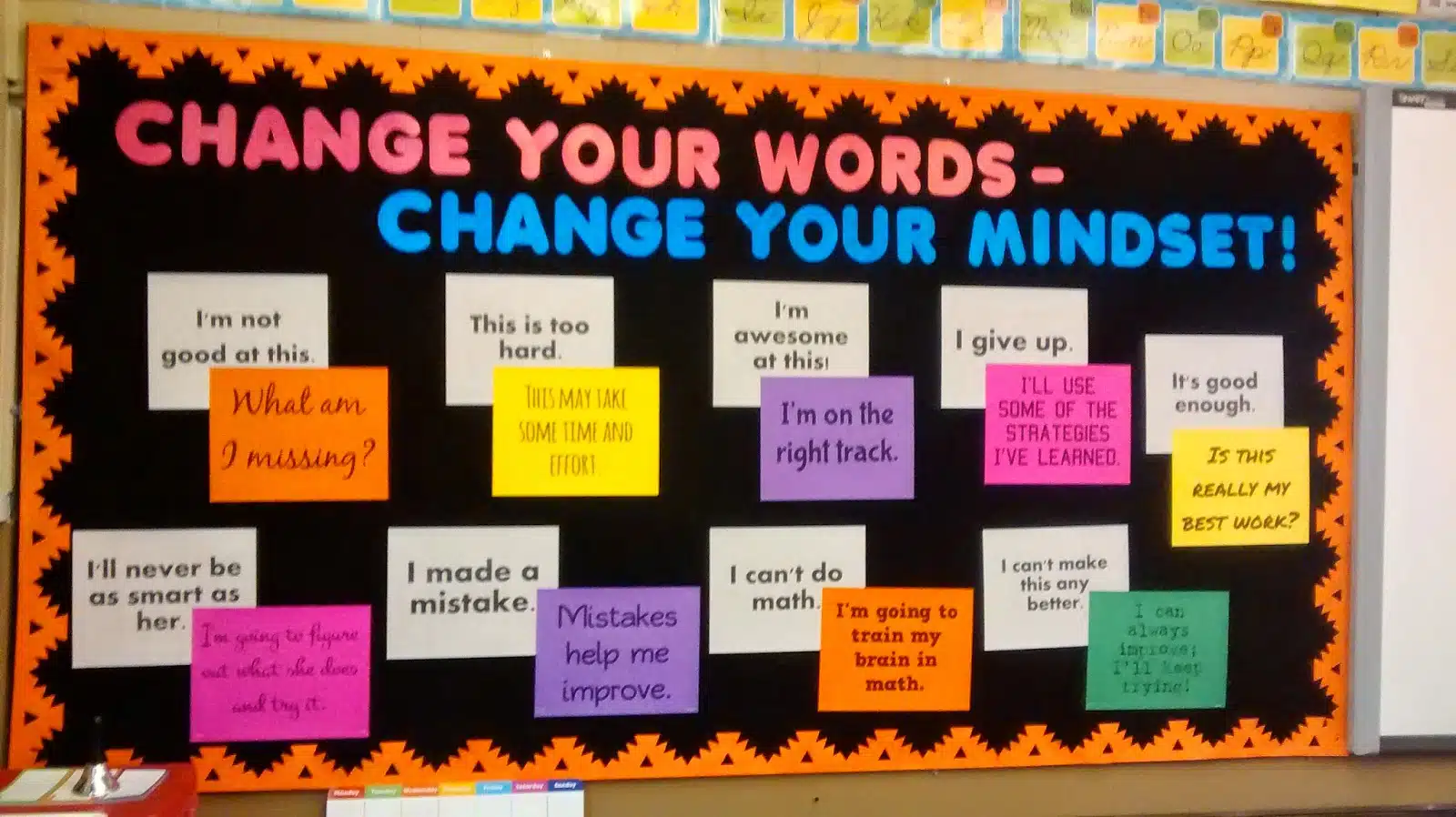
I saved this bulletin board for last to take down at the end of last year. It’s been the most impactful bulletin board of my teaching career. It wasn’t just pretty. It made a difference in my classroom. I used it to correct my students. And, my students use it to correct me and each other. It made us think about our words. It made us reflect on what those words were saying about us and our attitude at the moment.
Yet, I’m the type of person who likes to change things up every year. So, the bulletin board came down. And, I put “make a new growth mindset bulletin board” on my summer to do list. I looked for something I liked better, but I never found anything.
Classroom drama meant that I didn’t get into my classroom to decorate until a week before school started. Students arrived, and my bulletin boards were still blank.
As I taught classes, I found myself increasingly frustrated. One of my freshmen would announce “This is too hard!” I just wanted to point to the bulletin board and say “This will take some time and effort.” The same sentence I said so many times last year. I found myself still saying this, but it didn’t have the same impact.
As other teachers decorated their classroom, they kept tagging me on twitter with pictures of their new, beautiful bulletin boards. I was happy for them and sad for myself, all at the same time.
Friday, I started looking at my last blank bulletin board.
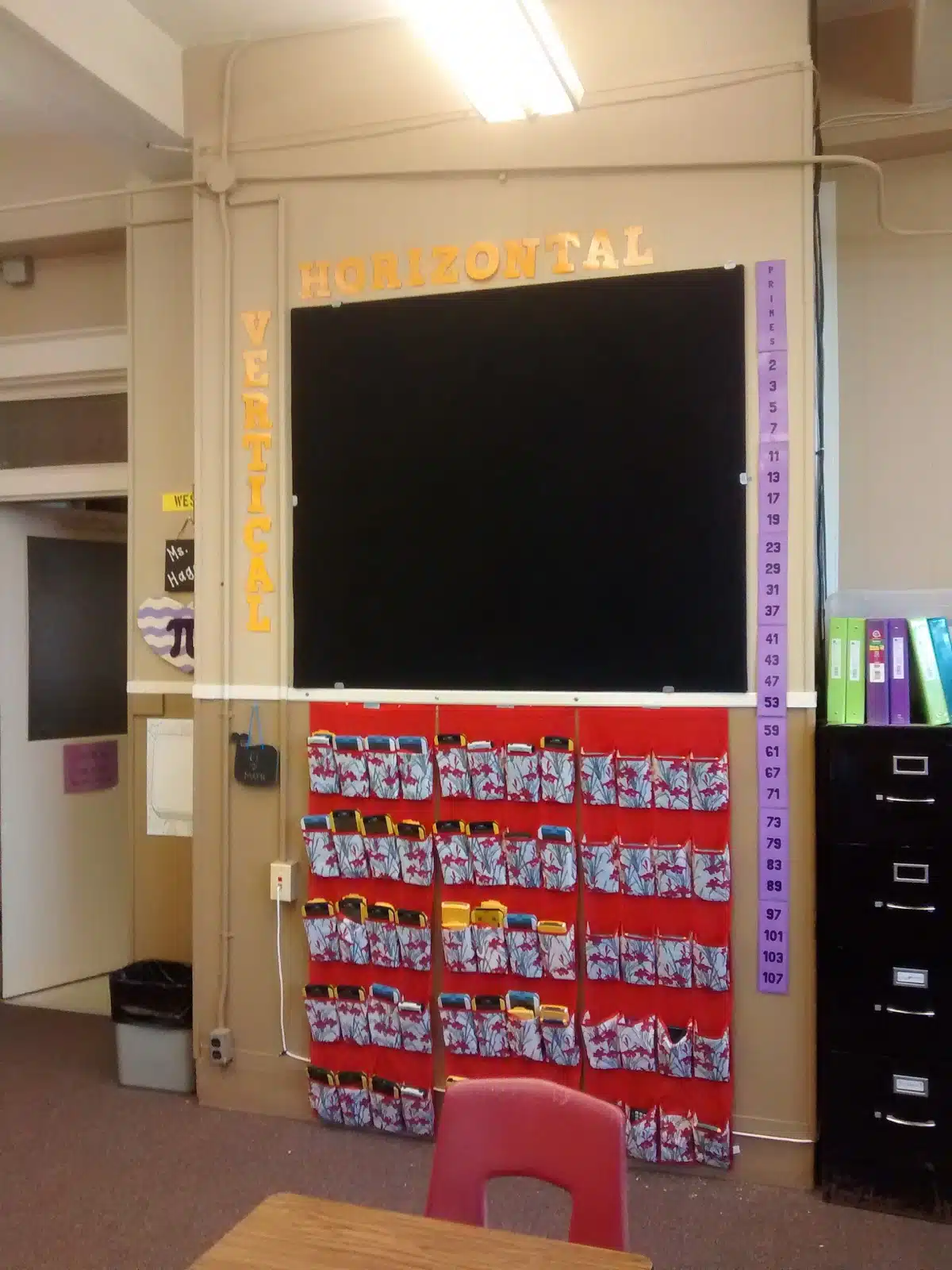
I still had the posters from last year’s bulletin board. The question was – would they fit in this smaller space? I got my last period aide to staple as many of them up as possible. All nine of them fit! There’s no room for the title, but I can live with this.
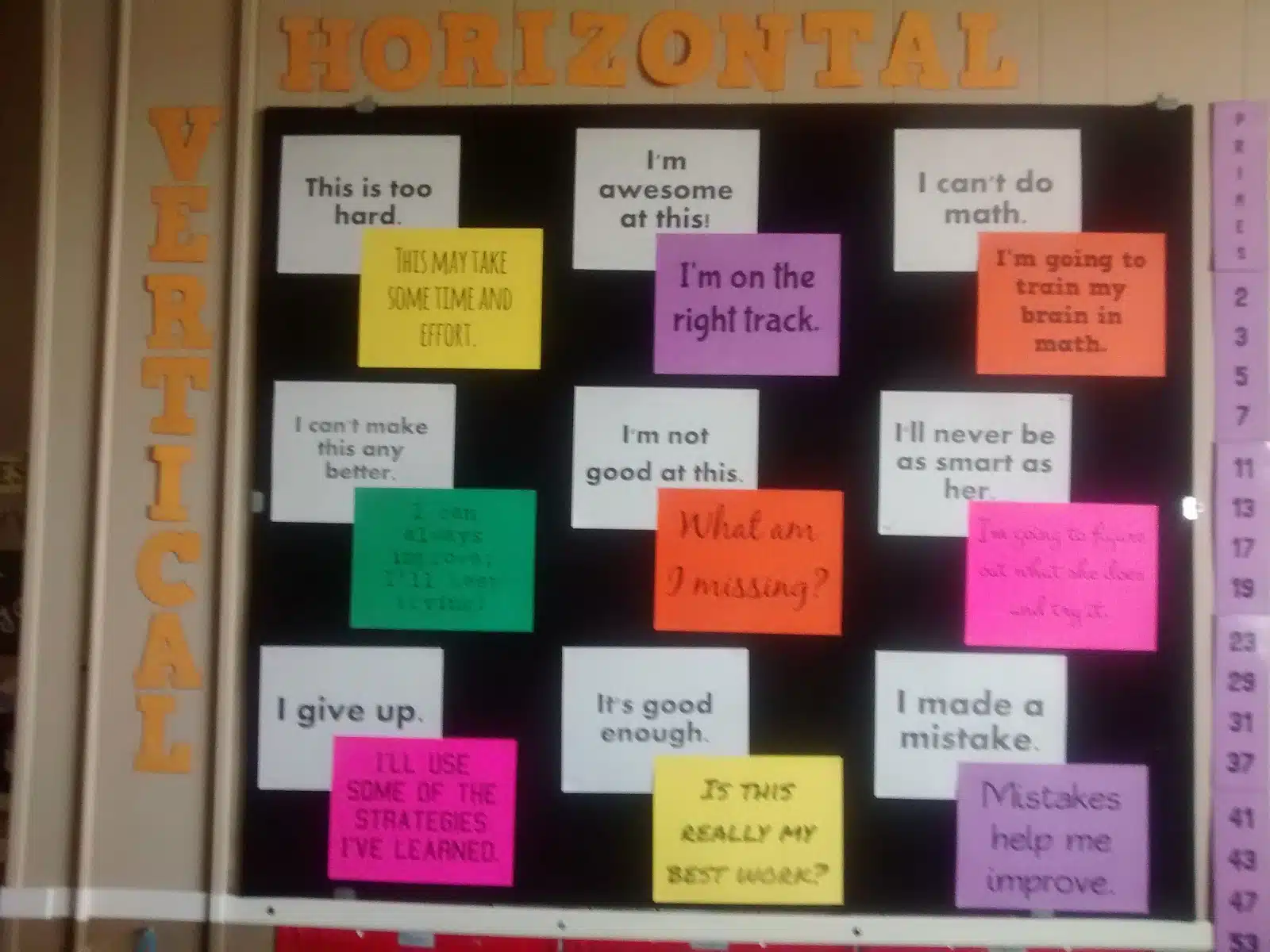
My classroom just feels so much more complete now.
Want the file to put this up in your own room? Check out this blog post.
September 28, 2015 – Homecoming Versus Spirit Week
My student council kiddos are always looking online for homecoming ideas from other schools, so I feel compelled to post our spirit days to help others out. We took the general idea for this week from another school and modified it to fit our student body.

This year, we decided to do a “Versus” week. Each day, we pitted the lower classmen against the upperclassmen to see who could come up with the best costumes. I typed up the days and printed them on 11 x 17 cardstock.
I decided to try something new this year and design an image for each day of the week for students to share on social media. I sent it out to my student council kids via Remind. I don’t know how many of them actually shared the image, but I hope some of them did.
At least, I had a lot of fun making these using Canva!

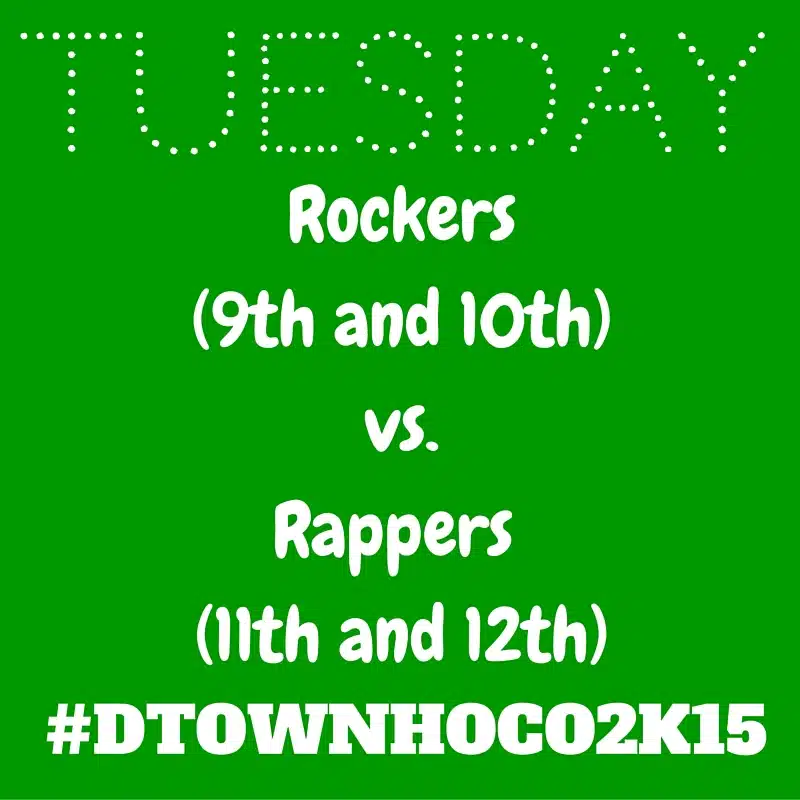
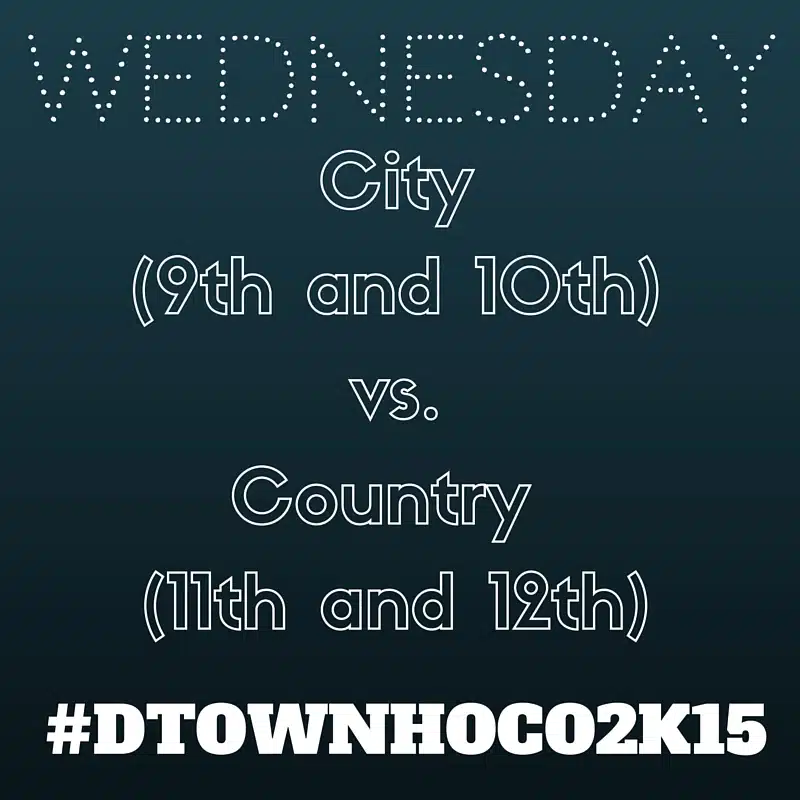
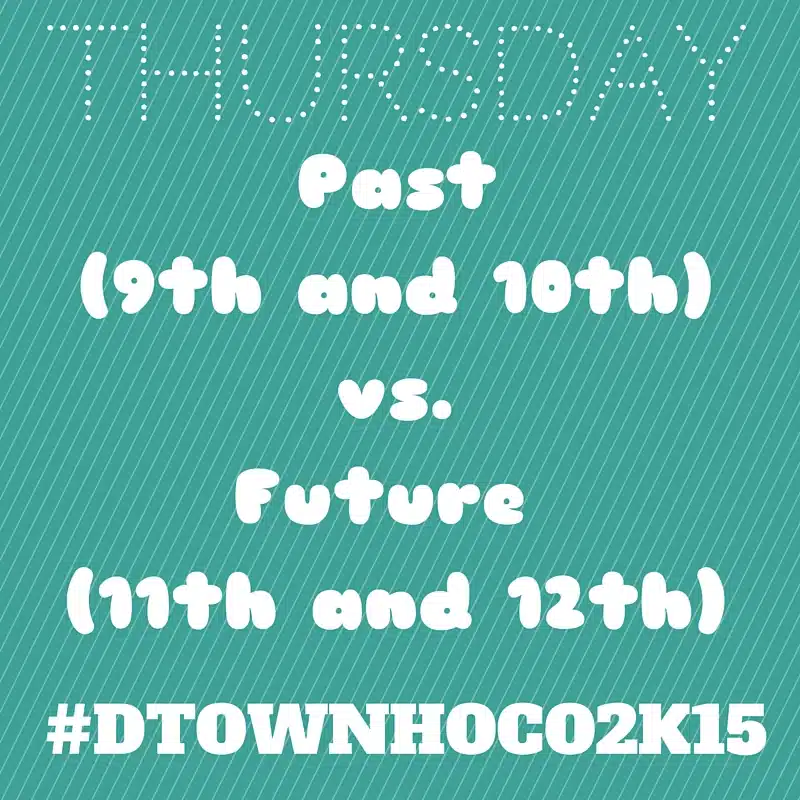

Homecoming ended up being cancelled due to a thunderstorm which was a bit frustrating. It got cancelled last year, too, due to the other school not having enough players to make a team. It’s hard to watch my kids work so hard on something and it end up falling through.
Our homecoming t-shirts turned out fab looking, though! Our design company always does such a good job.

September 30, 2015 – Making Notes for Next Year
We just finished our humongous review units in both Algebra 1 and Algebra 2. Algebra 2 had 9 skills. Algebra 1 had 8 skills. Note to self: Review units are a great idea to get student accustomed to SBG and the A/B/Not Yet Grading System. Further note to self: making the review unit this big was a big mistake. It’s taken forever for the 2-week deadline to set in to force students to fix their “not yets.” This means I currently have students who have not made an A or a B on a single quiz. This is not good. And, their grade still doesn’t reflect it.
Next year: 4 or 5 review skills in the review unit. Then, spread the other review skills out in the unit the are actually needed for.
To encourage students to come in for extra help, I typed up an “invitation” to spend time before school, after school, or at lunch with me. It’s actually not an invitation, but a mandate. Invitation sounds nicer, though.
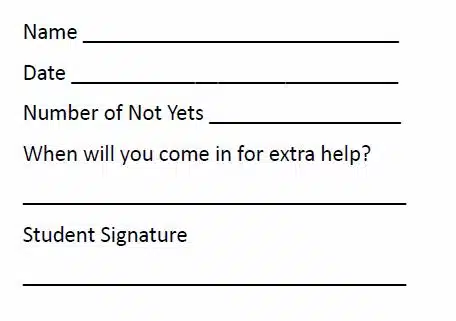
I printed them off on green paper and filled in the top three lines. I passed them back with graded quizzes. I think this was a wake-up call for my students. Ideally, they would be keeping track of this themselves or be checking our online gradebook. They do have a score tracking sheet in their notebook, but I’m having trouble motivating some of my students to use it.
I gave this invite to all students who had more than 3 not yets to fix.
Students signed and returned these. We’ll see how many actually show up. It’s at the point where I should be calling parents, but I don’t have time to call THIS many parents.
Note to self: Start handing these out WAAAAAAAAAAAAAAAY sooner next year. Don’t assume students will realize they need help and seek it out themselves.
I feel like this post has been pretty negative since I’m focusing on things I should change. So, I want to end with a positive. Having students self-assess at the end of the quiz has been amazing.
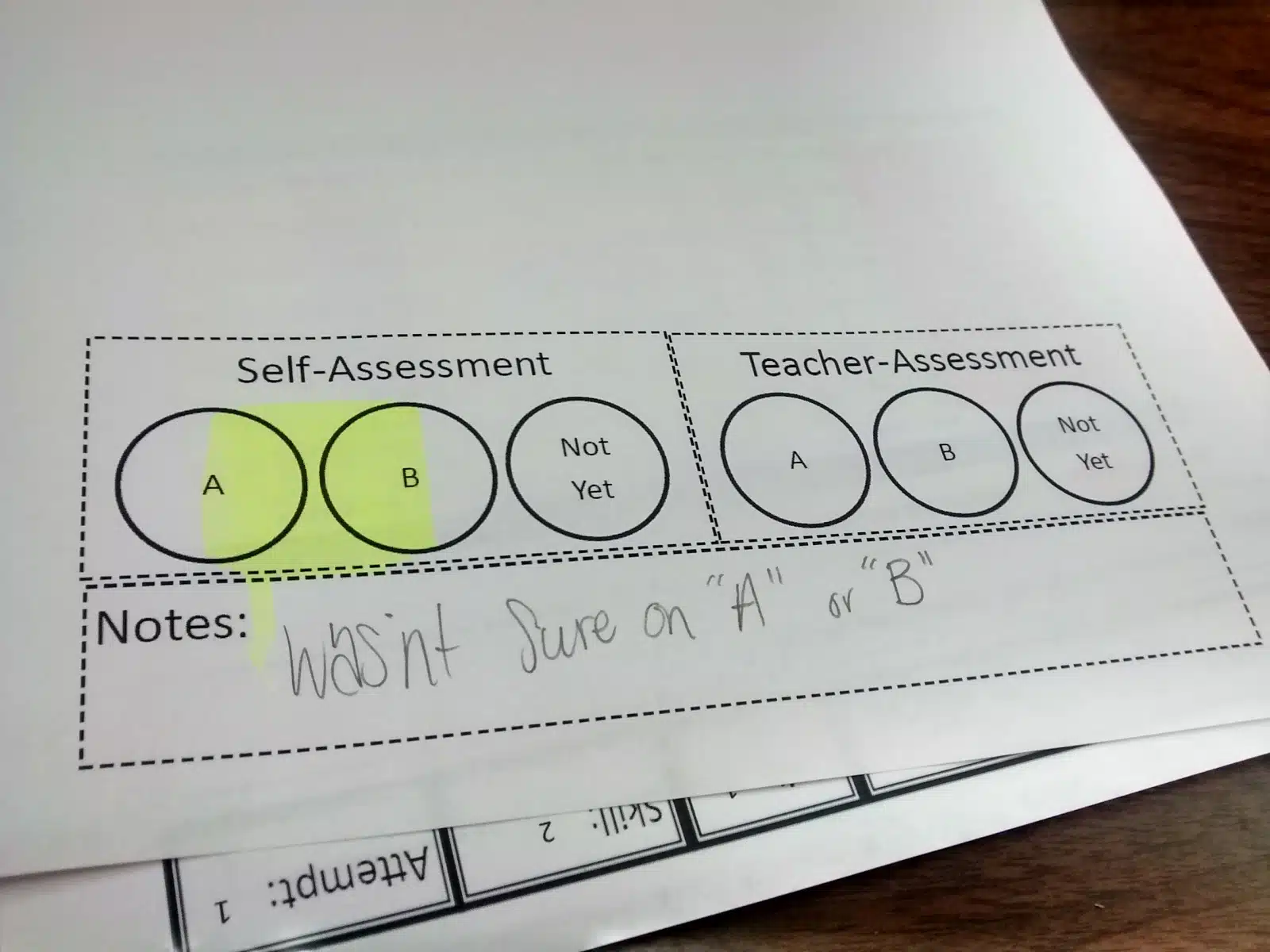
Though, I’ve noticed that many students fill out their self-assessment BEFORE they even take the quiz. Haven’t quite figured that one out…
October 3, 2015 – Calculator Hospital
Guys, I’m not the most organized person. I’m really not that organized at all.
My desk regularly looks like this:

Do you see those two calculators in the center of the picture? Students brought them to me because the screens were doing something wonky. I need to try and reset them to fix this. Or maybe they just need new batteries.
This happens all the time. I usually tell students to just give me the calculator and grab a different one. I set the calculator on my desk with the best of intentions of fixing it. A few days go by, and I start to forget why that calculator is sitting on my desk. In a desk cleaning spree, I will put it back in a calculator pocket.

My desk looks cleaner, but soon a student tries to use it again and the whole process starts all over again.
Not any more.
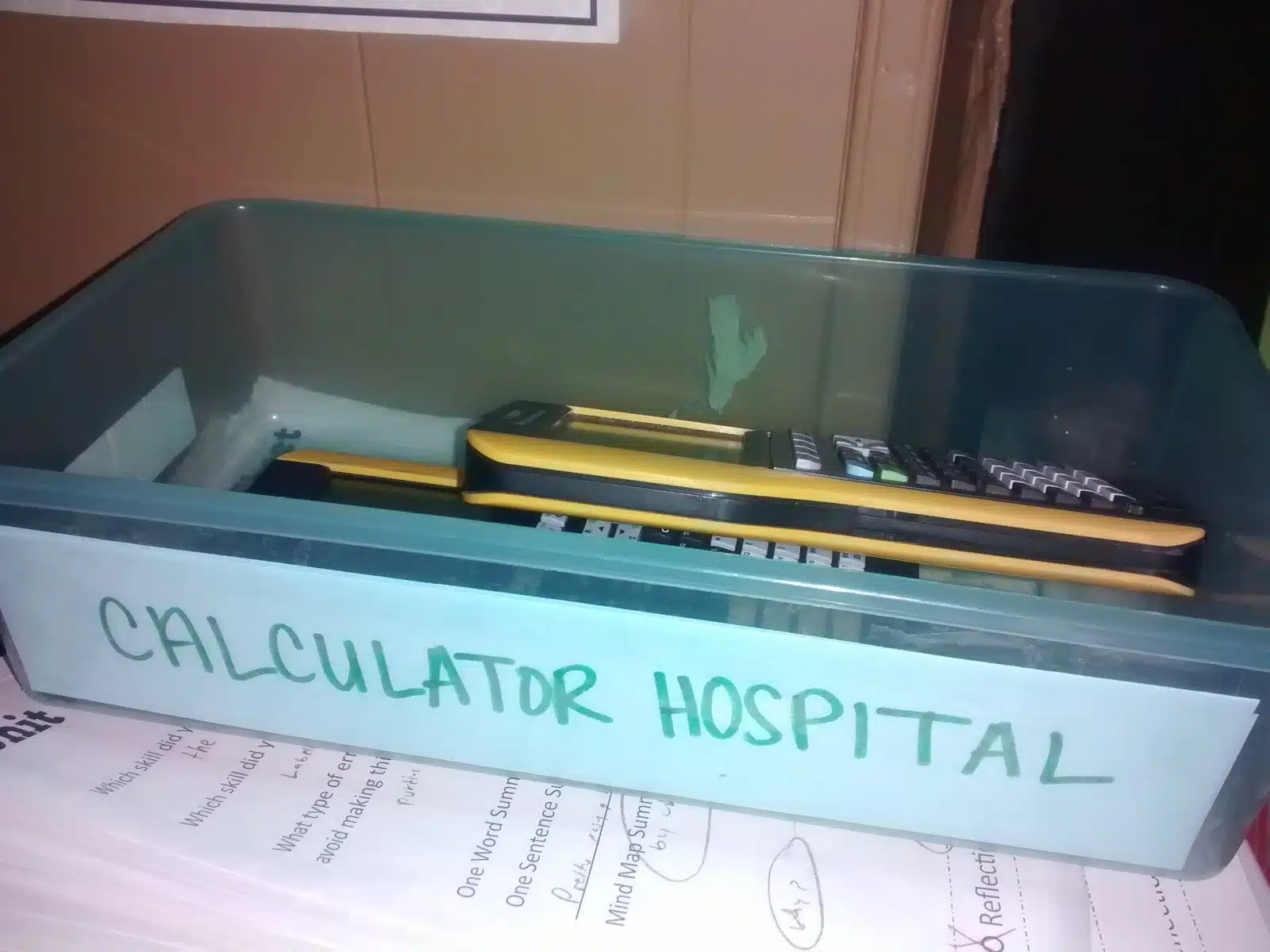
I took an empty plastic tub and labeled it “Calculator Hospital.” Dead/sick/dying calculators now have a designated place to go.
Now, why didn’t I think of this sooner???
Oh, and don’t worry. My desk looks much cleaner now. At least for a little bit…
October 12, 2015 – A Daily Problem
One of the first strategies I picked up as a student teacher was to write the date as a math problem. I started doing this as a first year teacher. My kids hated it. It especially frustrated them when they would ask the date and I would read the math problem off the board to them.
Last Christmas or so, I got a bit overwhelmed one week and never made the time to write the date on the board. And, I just kinda stopped. I didn’t mean to; I just got out of the habit.
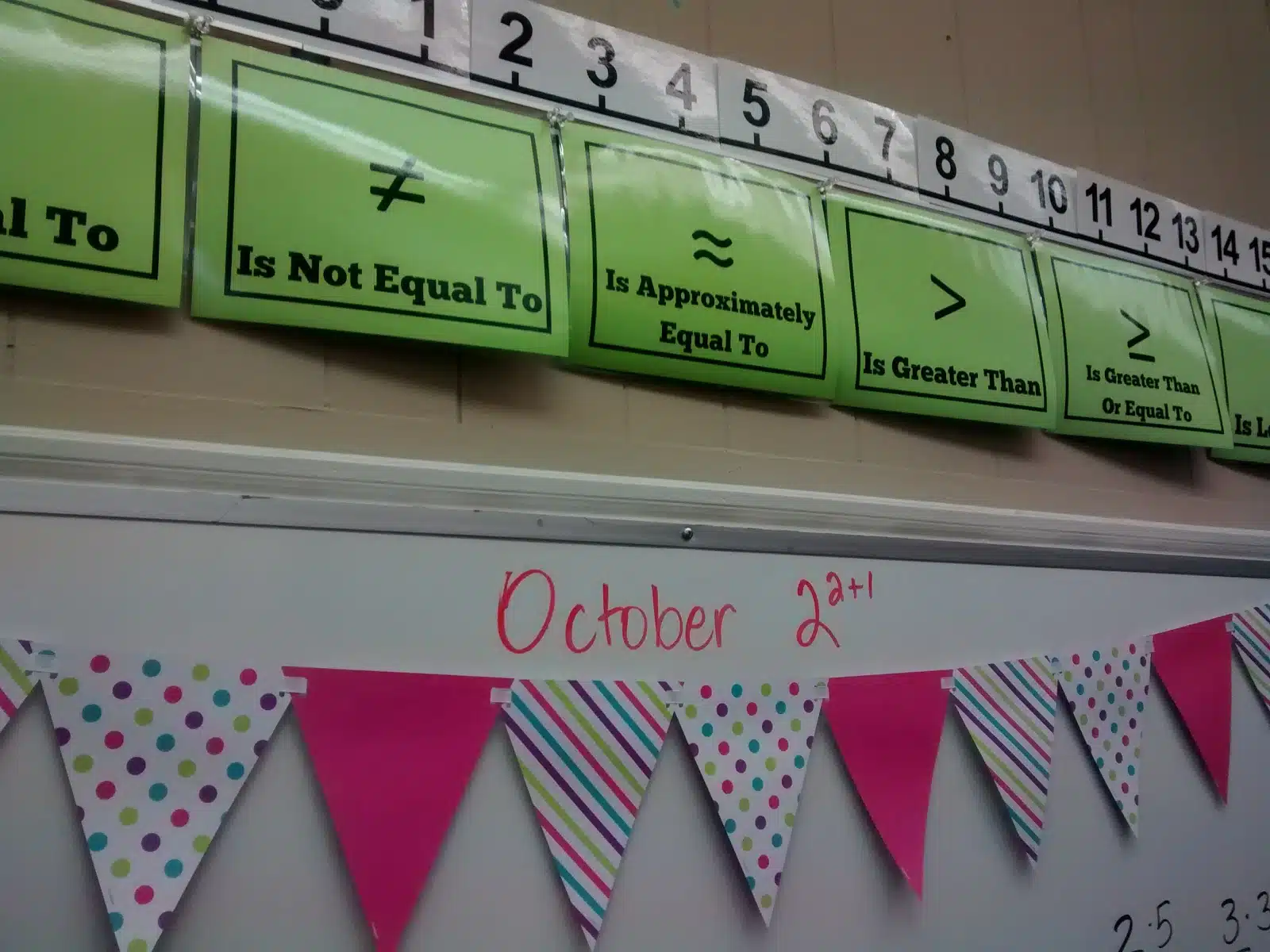
Well, I’m back at it. And, my students are not pleased. I couldn’t be happier!
The date in the picture above sparked a great conversation about whether the 2+1 needed to be in parentheses. I love when I can find extra little ways to make my students think!
October 17, 2015 – Students Notice
A student drew this flower on her integer quiz. I thought it was cute, so I snapped a picture of it using my phone before handing it back. When I handed back her quiz, she asked me if I’d noticed the pretty picture she had drawn me.
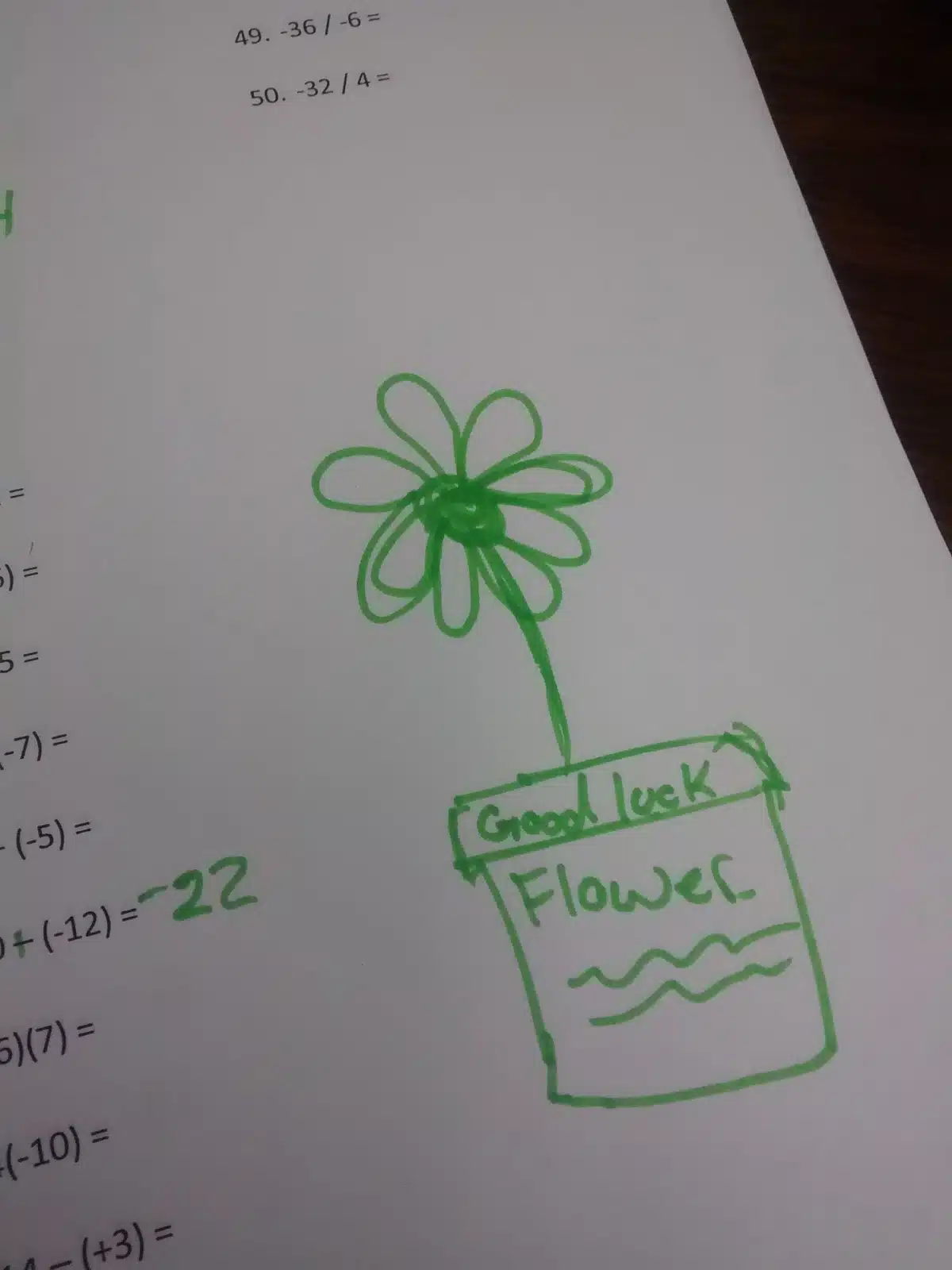
I was able to say I did. In fact, I even took a picture of it. She thought this was very cool. Students notice when we notice them and their efforts. We’re nine weeks into the school year, and I still feel like I don’t know all of my students on a personal level. Some of them are still just a name, a face, and a score in the grade book. I definitely need to work on this.
October 20, 2015 – Come Explore the MTBoS
Hi guys!
I know this makes two posts in one day, but I’m just too excited to wait until tomorrow to post this. So, you’ll just have to excuse this blogging faux pas.
I know I talk about the MTBoS a lot here on this blog. And, I realize that most of you fall in one of a few categories.
1. I love participating in the MTBoS by tweeting and/or blogging.
2. I love participating in the MTBoS by reading blog posts and leaving comments.
3. I don’t know what the MTBoS is, but I enjoy reading math teacher blogs.
If you’re in Category 1, I hope that you’ve already heard about the upcoming MTBoS Exploration and have signed up to be a mentor. Or, if you feel like you’re still getting your feet wet in the MTBoS, you can sign up to be given a mentor. A mentor’s job is to help people get acquainted with the MTBoS and answer any questions people might have about getting involved in blogging or twitter.
If you’re in Category 2 or 3, I want to encourage you to join in by starting a blog or twitter account. We’re really a friendly bunch of math teachers. And, we’d love to have you join us!
The sign up form is here for both mentors and mentees. Mentees will be paired up with mentors in December, and there will be a 4-week blogging initiation that starts in January. Get all the info here!
If you’ve ever thought about blogging before but have been scared off by the idea, here’s your chance to join in with a whole group of people doing the same thing at the same time with tons of support.
October 26, 2015 – Things Teenagers Say Volume 36
It’s been a while since the last things teenagers say, so I decided it was time to remedy that.

—
[About the A/B/Not Yet Grading System]
I hate the system, but I love the system!
—
You can’t be rich and be in college.
—
Student: Can I use the bingo chips on my quiz?
Me: Sure.
Another Student: That’s cheating! If I can’t use google, you can’t use bingo chips.
—
October 81st and a half? What kind of world do we live in?
[For the record, it was October 81 to the 1/2 power. But, my Algebra 1 students haven’t learned about that yet…]
—
Lions don’t keep secrets, and secrets don’t keep lions.
—
What’s a key? Oh, it’s that thing your mother gave me to her heart.
—
Student: Why do you have a sign about cats being carelessly killed?
Me: I don’t know…
Student: That’s no bueno.
—
Student: There’s someone knocking on the outside door. Can I go let them in so they stop knocking?
Me: Sure.
Student: [Leaves for 10 seconds tops before coming back] There’s no door!
[To understand this, you need to realize that my classroom is on the second floor. The door that was being knocked on was on the first floor.]
—
Student: Will you be here after school?
Me: I should be unless my landlord calls me about fixing my plumbing problem. It’s kinda important.
Student: You could solve it by just putting in an outhouse.
—
Isn’t a histogram when you can’t have kids?
—
Me: The line between the numerator and denominator is known as the vinculum. That’s a fun fact that you could share with people at a party.
Student: Do you want us to get beat up?
—
Quit your low self esteem!
—
This makes me want to commit mathicide.
—
Student: Are you going to tell us the answer to the puzzle if we don’t figure it out?
Me: Nope.
Student: But, this isn’t Petals Around the Rose. You didn’t make a promise!
—
Me: When we were talking about finding the center, we had to choose between mean and median. You’ve been dealing with those since back in elementary school. For spread, you’re going to have to choose between interquartile range and standard deviation. Now, we’ve never heard of those, right?
Student: Oh, we’ve been dealing with those since back in ‘Nam.
—
You got more glue sticks?!? I love life!
—
I’m a predator.
—
I miss this class. You kept us from knowing we were learning. In my other classes, it’s obvious and painful.
—
My goat friends are talking to me.
—
Would you like some epsilon salt on your pi?
—
Me: I don’t need you making pigeon noises.
Student: That’s a quail.
—
Take away her phone. I’ll give you $20 if you do it. Think about all the salad you could buy.
—
It’s funny how fast the time goes by when you’re doing math.
—
Isn’t Skillet metal?
No, it’s cast iron.
—
Me: Focus on your quiz!
Student: How can I focus on my quiz when I’ve got fingernails being flung at my face?
November 1, 2015 – Function Auction
This past week, my Algebra 1 students started Unit 3 which is an introduction to all-things Functions. Unit 4 is all about linear functions and graphing. So, Unit 3 is about how to represent relations, how to determine if a relation is a function, how to find the domain and range of a function from a table or a graph, and how to evaluate functions. It’s a nice change of pace from the weeks and weeks we’ve spent solving equations and word problems galore.
I ended up spending an entire 52 minute class period on representing relations. This frustrated me because I thought it would only be half a class period. But, you know how those things go sometimes… The next day, I introduced students to the definition of a function. We made a few examples and non-examples in class together. Now, normally when I would teach this lesson, my next activity would be a card sort where students sorted relations in to functions and not functions. In the past, this has always been super frustrating because too many kids just sit there and say they don’t know how to tell if something is a function or not. So, I decided to put the card sort off until the next day and find a practice activity to do to finish out the class period.
Five minutes before class started, I still wasn’t sure what this practice activity was going to be. I wasn’t super worried because I had a fall back option – mini dry erase board practice. But, I still hoped I’d think of something more exciting. At the last minute, I thought back to an activity I had done as a first year teacher – a solving equations review auction. I decided I could easily tweak this and make it into a function auction. Various relations would be put up for auction. Students would be placed in teams whose goal was to buy as many functions as possible at the auction.
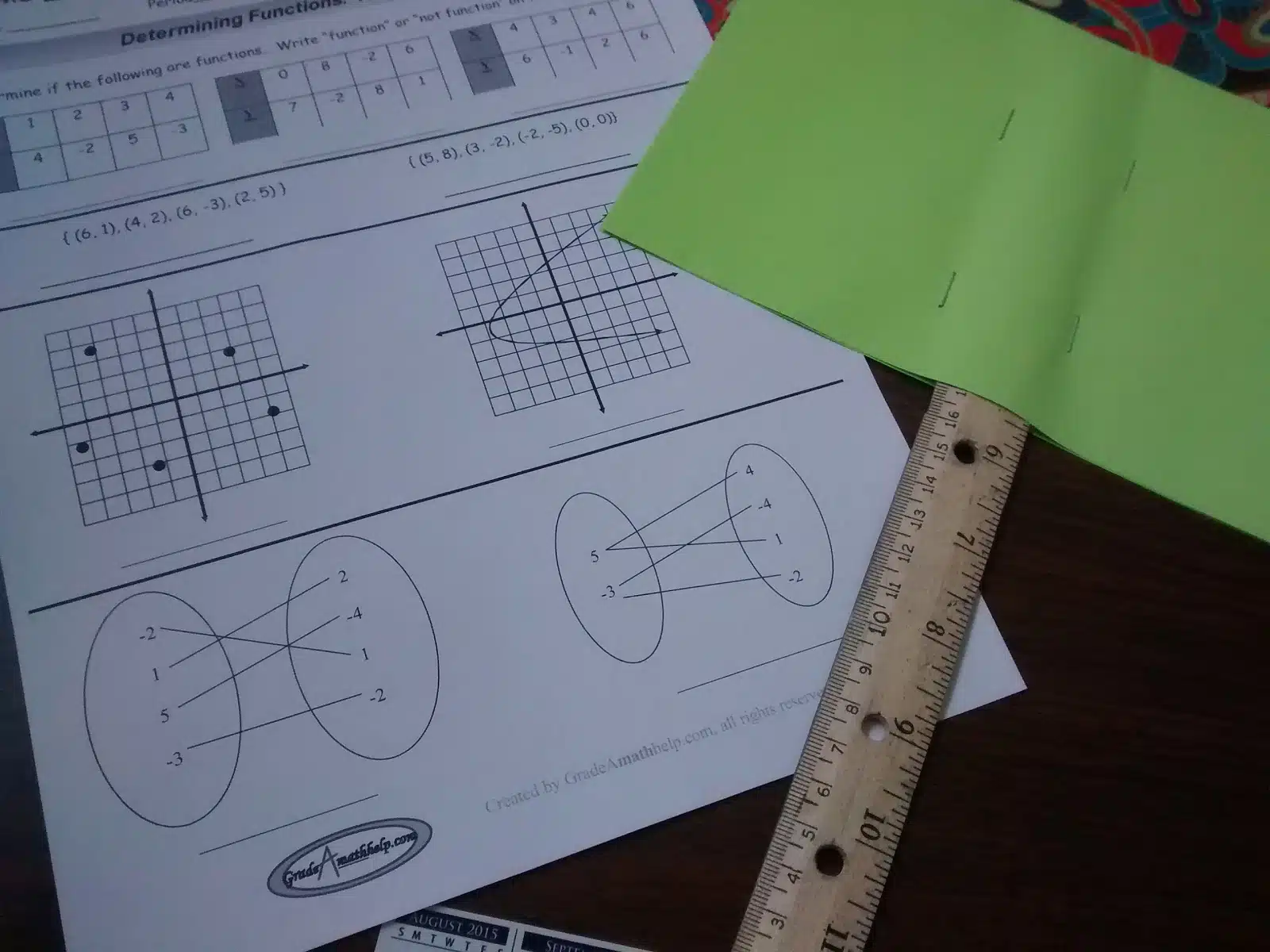
I quickly threw together some auction paddles using rulers, colored copy paper, and a stapler. It just makes the bidding so much more fun! 🙂
And, for an “auction catalog,” I printed of a worksheet from the internet. You could very easily make your own, but I like to do things at the last minute. I liked this worksheet because it had tables, ordered pairs, graphs, and mapping diagrams.
Since my desks are already arranged in groups of four, I made these into the groups for this competition. I explained that there would be an auction, and each team would be given $1,000. The team that purchased the most functions with their $1,000 would win candy.

I asked how many students had been to an auction before, and most had. I asked them if they knew what an auction catalog was. They didn’t, and several claimed cattle auctions don’t have those.
I passed out the “auction catalog” to each group, and I purposefully gave each group only one copy of the catalog so they would have to work together. Then, I gave them a few minutes to look over the “catalog” and decide on which lots they would be bidding on. It was so fun to walk around the room and watch the kids justifying their reasoning to each other as they discussed which relations they wanted to purchase. I think I got a lot more engagement out of my students by structuring the activity in this way than if I had just put the problems up one-by-one on the SMART Board.
After running the auction with my first Algebra 1 class of the day, I decided the activity needed a bit more structure to make the auction run smoothly and efficiently. I instituted a minimum opening bid of $50. And, I made it so each bid had to raise the previous bid by at least $20. This made things run much better for the rest of the day.
Before running this activity, I intentionally did not introduce my students to the vertical line test for determining if a graph is a function. It was fun to see several groups come up with the test on their own just based on the definition of a function having exactly one output for every input.
In two of the class periods where I ran this function auction, two groups had purchased the same amount of functions. Therefore, it’s probably important to come up with a rule for how to break ties. I like to declare the group with the most money left as the winner.
There was the fun-to-watch auction drama of groups not paying attention to what was being auctioned and bidding because they thought we were on a different problem, one member of the group raising the bid way higher than the other groupmates thought they should go, and the smug looks of the members of one group when they realize they are going to get the function for the opening bid of $50 because all of the other groups think it isn’t a function. Another favorite – a room silent enough to hear crickets when you ask for opening bids for a relation that isn’t a function. 😀 The kids came in the next day begging to have another auction. That’s what I call a successful, low-prep, high engagement activity!
December 8, 2015 – Looking at Radicals in Algebra 1
I’ve never really known what to do about teaching radicals in Algebra 1. Oklahoma’s Algebra 1 standards currently have students simplify expressions involving radicals in Algebra 1. This is not the same as simplifying radicals – that happens in Algebra 2.
In the past, I’ve taken several approaches. I either skip radicals altogether and tell students to type them in on their calculators come test time. Or, I go all-out and teach simplifying radicals, adding/subtracting radicals, and multiplying/dividing radicals. This year, I decided to just teach rationalizing and reducing. It’s better than just having kiddos type things in their calculators which teaches them nothing and just helps them pass the test. And, I’m not wasting time by teaching things that won’t be tested. My Algebra 1 students are already far behind, so time is at a premium. Plus, this is a high-stakes class. They must pass the end-of-instruction exam to be eligible to graduate. We are slowly but surely making progress, though.
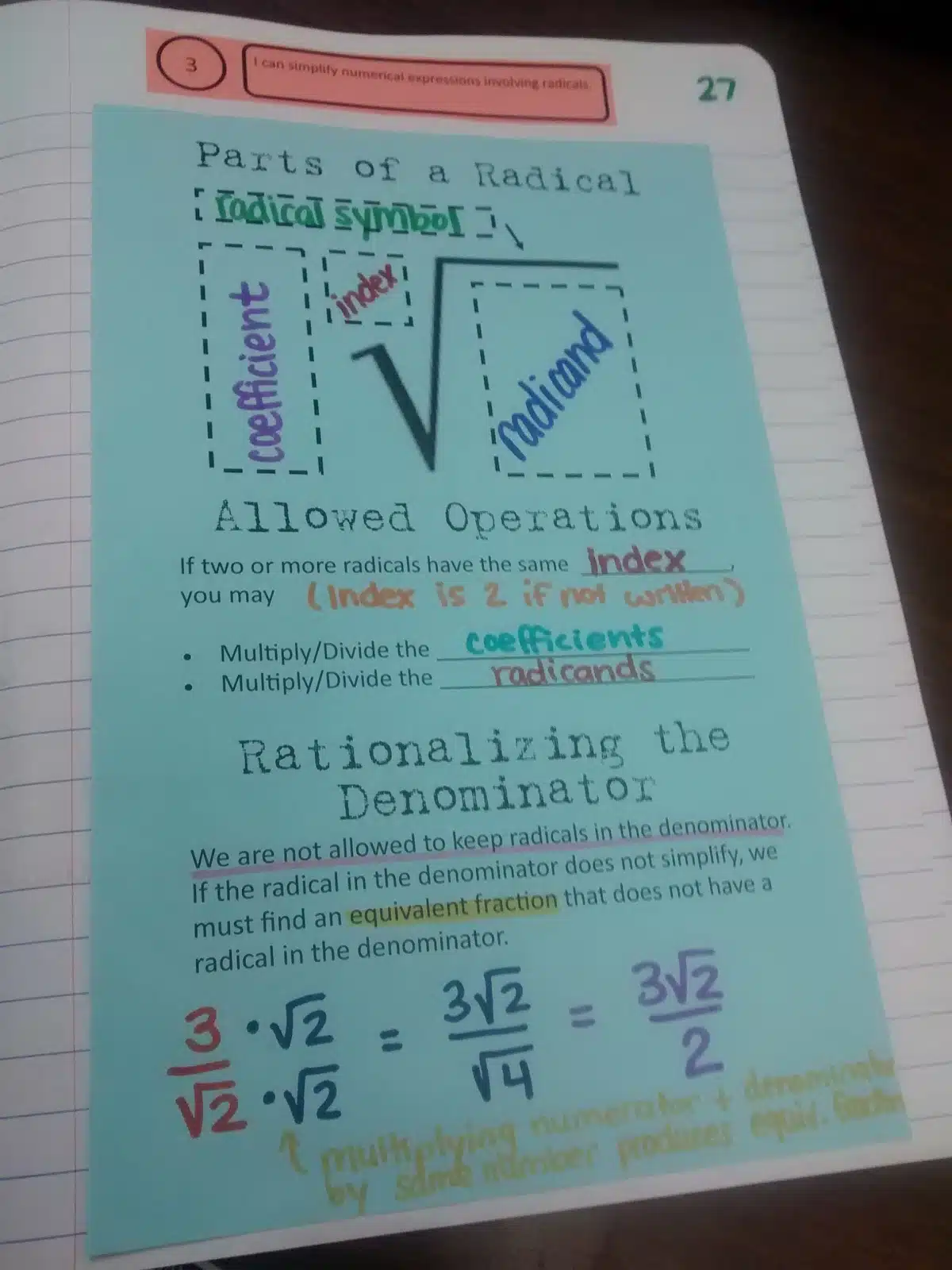
If you notice at the top of the page, this is skill 3 for the year. It directly follows order of operations/integer operations and fraction operations. I specifically taught it after fractions because I wanted to rely on the idea of equivalent fractions for teaching rationalizing the denominator instead of teaching kids to memorize the steps for how to rationalize.
In the past, I’ve been guilty of explaining rationalizing the denominator like this: “If we want to get rid of a square root in the denominator, multiply the numerator and denominator by the square root you are trying to get rid of.” The radicals magically disappeared, but I never explained to them how they should know how to do that. Of course, that strategy fell apart when there was a cube root in the denominator…
This year, I decided to take a different approach. I told them that our goal was to get rid of the radical on the bottom. Then, I encouraged them to think of a radical that could be on the bottom that would simplify. Now, what can we multiply the denominator by to make it into that radical?
This worked sooooooooooo much better. If students had a radical five in the denominator, they recognized that if it was a radical twenty-five that the denominator would reduce to five. Thus, they should multiply the numerator and denominator by radical five.
Some students caught on to the shortcut that I used to teach my students. Other students get out their square root chart and think through the process of what to change the denominator to each time. Either way, students are thinking about what they are doing instead of blindly following steps, and that has me so excited. Why has it taken me so long to figure this out???
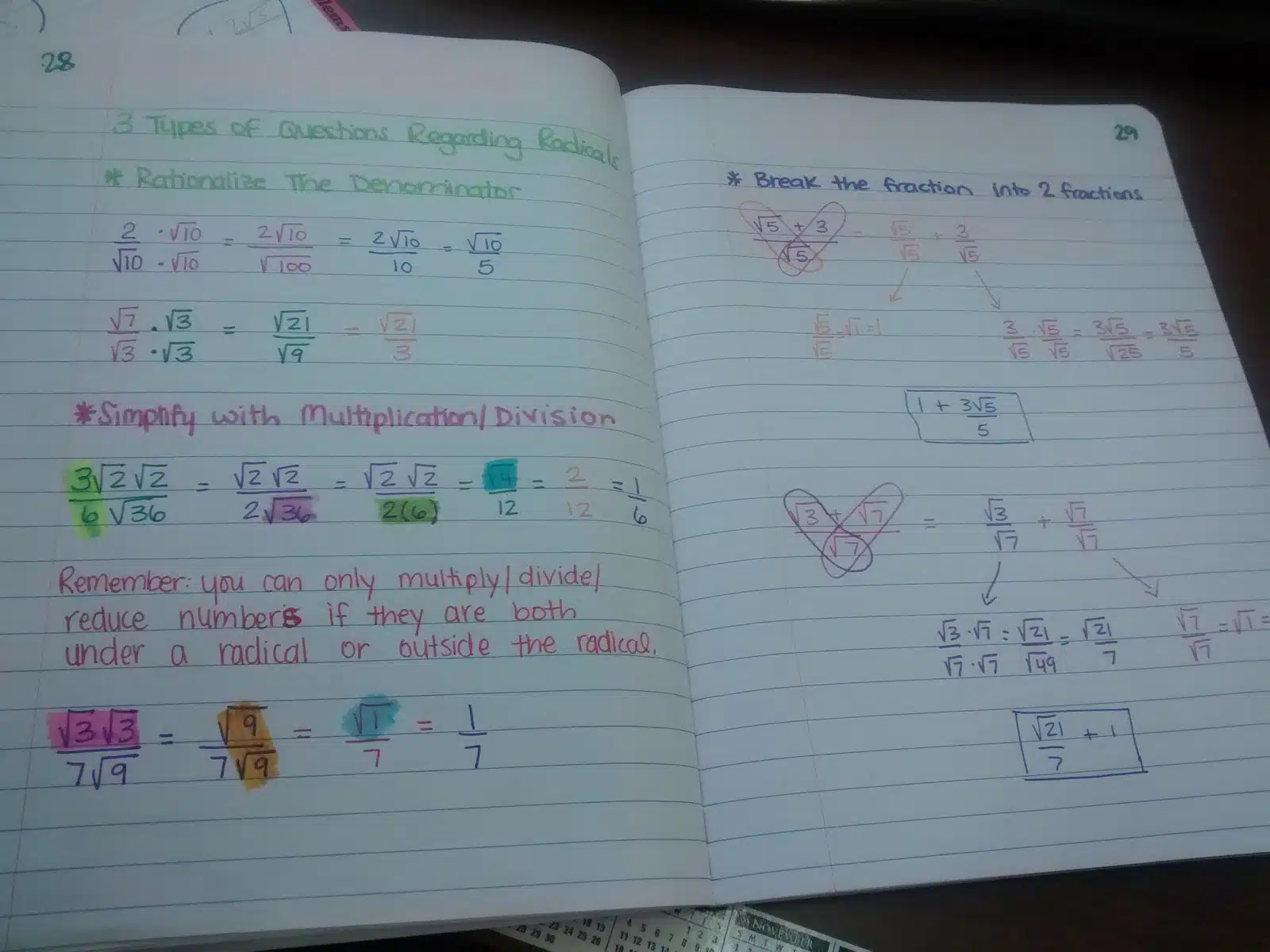
January 7, 2016 – MTBoS Blogging Initiative
I, Sarah Hagan, resolve to blog in 2016 in order to open my classroom up and share my thoughts with other teachers. I hope to accomplish this goal by participating in the January Blogging Initiation hosted by Explore MTBoS.
You, too, could join in on this exciting adventure. All you have to do is dust off your blog and get ready for the first prompt to arrive January 10th!
January 14, 2016 – A Day in the Life
Today, I present “A Day In The Life of Sarah Hagan.” Yesterday, I wrote down every single thing I did just for you. I know you’re just dying to know how I spend every waking moment of my day. Oh, you’re not? Well, I guess I did it for the #MTBoS 2016 Blogging Initiative, then.
This is long. You have been warned. If you make it to the end, I will be very impressed. I’m not sure my life is that exciting. But, in the interest of being comprehensive, here we go! Wednesday, January 13, 2016
4:45 a.m. – Alarm goes off. Hit snooze a couple of times.
5:00 a.m. – Finally drag myself out of bed to Skype with my fiance. Let’s just say American time zones and Australian time zones don’t always play nice with each other. We just remind ourselves constantly that it could be worse.
6:55 a.m. – End Skype call. Start getting ready. This means getting dressed, eating breakfast, brushing my teeth, packing a lunch, tidying up my house, and resetting the thermostat. I made waffles for dinner the previous night, so I just had to heat up a waffle in the toaster and make a glass of chocolate milk. I also took my last day of antibiotics for my sinus infection and pneumonia.
7:35 a.m. – Leave for school.
7:40 a.m. – Arrive at school.
7:44 a.m. – Arrive in classroom. Immediately turn on heater.
7:45 a.m. – Head to teacher’s lounge to put lunch in refrigerator. Talk to coworker who is making copies. Stand in front of heater in teacher’s lounge to warm up.
7:47 a.m. – Turn on computer and open up a million tabs in Chrome plus SMARTNotebook. Personal E-mail. Blog E-mail. School E-mail. Gradebook. Blogger. Tweetdeck. Box. Yeah, I think that’ll do for now.
7:49 a.m. – Get distracted by Tweetdeck.
7:50 a.m. – Send a text to the handyman my landlady uses to ask if the plumbers actually fixed my bathtub because it seems to still be leaking.
7:53 a.m. – A student stops by to ask a question about missing statistics work
7:54 a.m. – Answer two blog e-mails
7:56 a.m. – Get distracted by Tweetdeck. Again.
8:00 a.m. – First period starts with the pledge of allegiance and a moment of silence. I’m lucky to have planning period first hour to let me get stuff done and ready for the day. I don’t have a ton of stuff to get done today because I was on top of things the previous day!
8:07 a.m. – Make a SMARTboard file for the day with the needed supplies for each hour.
8:09 a.m. – Become very agitated that the time my computer is showing is wrong. Decide to change the computer time to the correct time to make recording all this stuff easier.
8:10 a.m. – Design a poof booklet for my students to use to practice finding x-intercepts and y-intercepts with their calculators.
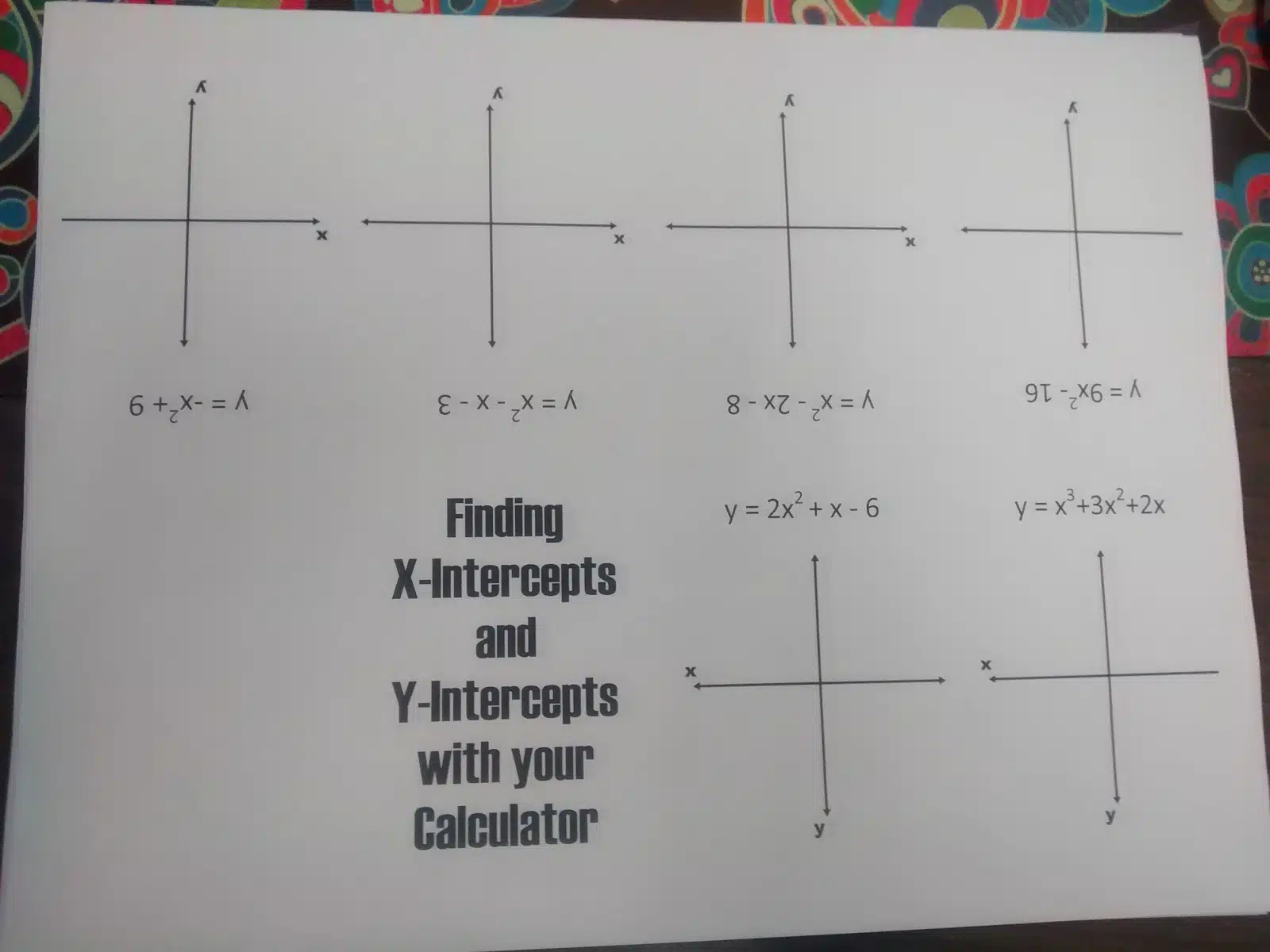
8:21 a.m. – Read texted reply to my plumbing issue. The plumbers did come yesterday. They took apart my faucet, realized they didn’t have the part it needed, and put it back together again. Should have it fixed by the end of the day.
8:22 a.m. – Type up a set of notes to instruct my students how to find the relative max/min of a function on their graphing calculator.
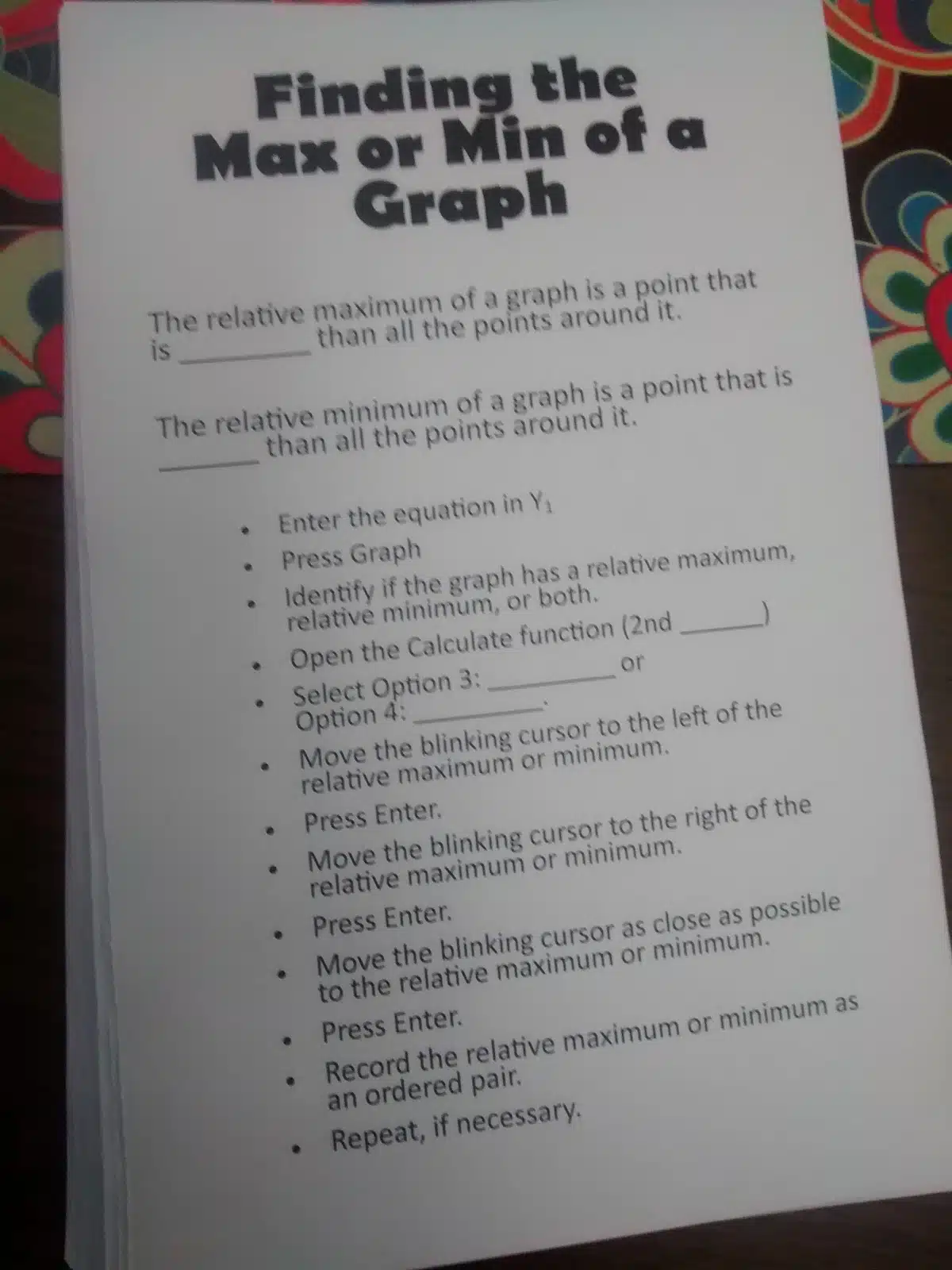
8:31 a.m. – Walk next door to the teacher’s lounge to collect my copies and use the paper chopper.
8:33 a.m. – Fix the green posters that will not stop falling down. Ugh.
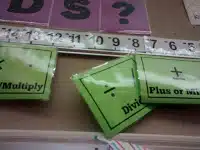
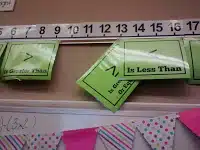
8:34 a.m. – Browse Twitter some more.
8:37 a.m. – Print Algebra 2 Quiz for tomorrow
8:39 a.m. – Decide I should make a poof book for my students to practice finding max/min using their calculator. This one goes together much faster than the last one!
8:43 a.m. – Back to the teacher’s lounge to pick up more copies. I’m so lucky in that my classroom is right next to the teacher’s lounge. I don’t have a printer in my room, so everything I print goes to the copy machine in the teacher’s lounge.
8:45 a.m. – A coworker stops in to ask how I am. We talk about how cold it is. Then, we discuss grad school since we are both working on our master’s at the moment.
8:47 a.m. – Put away all the copies I have made today (and yesterday) in their trays. Clean off my desk.
8:49 a.m. – Type up two post-it notes of “things teenagers say” from the past week. I write these on post-it notes as they happen, and then I transfer them to a blog post draft every few days.
8:51 a.m. – Make an answer key for yesterday’s Algebra 1 quiz.
8:53 a.m. – Bell rings to end first period. Turn on SMARTboard and greet students as they enter my classroom.
8:54 a.m. – During the passing period, I decide to try and get my Algebra 1 quizzes from yesterday graded for 3rd hour so I can pass them back.
8:58 a.m. – Second period starts. Walk my students through more graphing calculator practice. It takes my students almost all period to work through the six practice problems. Decide to put the quiz I had planned off until tomorrow. Tell myself that I need to be patient because learning how to use the graphing calculator is not simple.
9:50 a.m. – Passing period. I tell myself that I’m going to get some more quizzes graded. But, a student rolls in my room on her self-balancing scooter board (or hoverboard). She insists that I try it out. I refuse, at first. But, the student assures me that she will hold on to me, and I won’t fall. I hesitate some more. Then, she starts to list off all of the other teachers who have given it a try. By now, a crowd of students has gathered to watch me try. After a quick tutorial and a couple of failed attempts, I stand up on the scooter board. Not knowing what to do, I just stand there. Scared to death, I try to get off. But, this just results in me spinning around in a circle. The student instructs me that I am going to have to actually lift my feet off of the board to get off. I do this, and I am so thankful to be back on the ground!
9:55 a.m. – Third period starts. Algebra 1 works through a set of notes on writing the equation when given the x-intercept and y-intercept. Then, they take a quiz over writing equations given a table or two points. While students are quizzing, I take the chance to grade my fifth hour’s quizzes from yesterday.
10:47 a.m. – Passing period. I take advantage of this time to grade sixth hour’s quizzes from yesterday.
10:52 a.m. – Fourth period starts. My stats students work through running two simulations using a random number table. A bunch of students were absent the previous day when we learned how to do this, so it takes much longer than I intend. Originally, I had planned to have students do one simulation and then take their quiz. Half way through the first simulation, I realize my students are going to need another practice problem. So, I print off another practice problem while students are running their 20 trials on the first simulation.
11:44 a.m. – Lunch starts. I decide to grade yesterday’s quizzes from seventh period before I do anything else. Then, I follow my daily ritual of putting my lunch in the microwave, running to the faculty restroom, and then coming back to take my lunch out of the microwave. While I eat my lunch, I read blog posts in Inoreader and browse Twitter. One of my favorite lunch-time readings is FiveThirtyEight’s Significant Digits. It’s a daily (and often humorous) summary of the numbers in the news. This is probably bad to admit, but many days this is the only news I read.
12:00 p.m. – Start coughing incessantly. As kids start trickling in my room, they keep asking me if I’m okay. I insist I am, but I just can’t quit coughing. Decide to make a key for the Algebra 1 quiz my students are taking today.
12:15 p.m. – Set my trash can out in the hall for it to be emptied. Check a few students’ solutions to the 2016 Challenge.
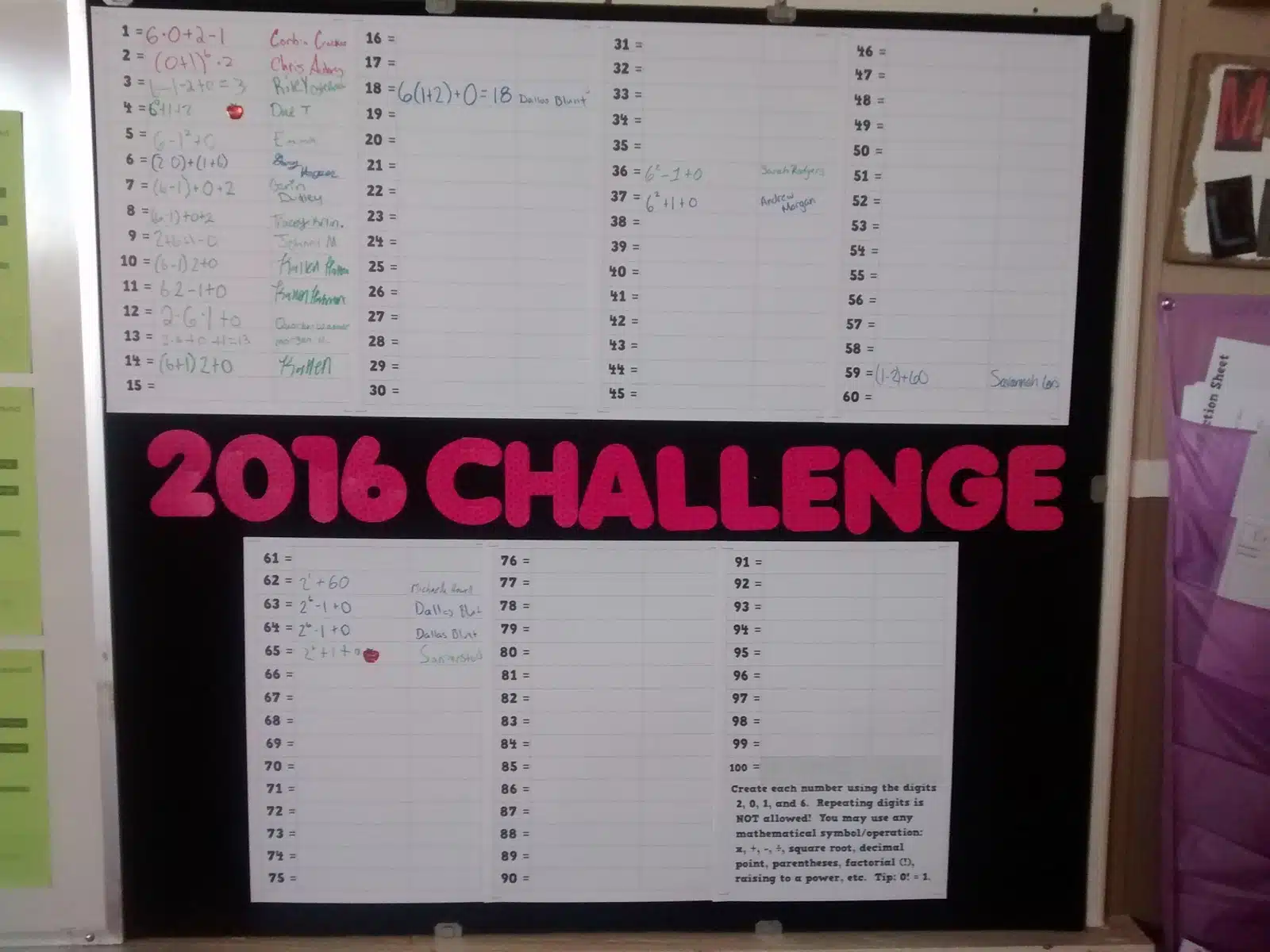
12:20 p.m. – Fifth period starts. Algebra 2 again. This class gets farther than my morning class. While students are taking their quiz, I grade some quizzes from third period.
1:12 p.m. – Passing period. This time, I make a key for today’s Algebra 2 quiz.
1:17 p.m. – Sixth period starts. Algebra 1. After students take their notes and are working on their quiz, I take advantage of this bit of extra time to send out my #Teach180 tweet for the day and tidy my desk. I go to throw a piece of trash away and realize my trash can is still in the hall. The student who is employed to empty the trash must not be here today because my trash can is still full. I take the trash liner out, tie it up, and set it in the hall. I bring my trash can back in and place a new liner in it.
2:09 p.m. – Last passing period of the day. One of my students who really struggled last semester is one of the last to leave. I take a moment to tell the student how impressed I am with how hard he is working this semester. I tell him that it makes me so happy to see him turning in quizzes covered in work instead of blank quizzes. This means I can show him exactly where he went wrong instead of not being able to give him any feedback at all since I can’t read his mind. I actually start tearing up while talking to this student. I really am so proud of him.
2:14 p.m. – Seventh period starts. I give my student aides a few jobs to do. This is my last Algebra 1 class of the day. While they are taking their quiz, I start writing my daily blog post. Today’s blog post was about x-intercepts and y-intercepts.
3:06 p.m. – Last bell of the day rings. As soon as the last student leaves the room, I lock the door and head down the hall to the special education classroom. I’m supposed to be part of an IEP meeting that started at 3:00 p.m.
3:24 p.m. – The meeting wraps up. I head back to my room to finish the blog post I started earlier.
3:30 p.m. – Send an e-mail to the blood drive coordinator re: potential dates.
3:36 p.m. – Forward a STEM Day e-mail to my colleagues with an explanation that I won’t be at work that week due to my wedding, but I think our students would love it if one of them took it on.

3:43 p.m. – Reply to a kind e-mail from a coworker who is thanking me for having my students write letters. She received some lovely notes from students, and she treasures the feedback.
3:46 p.m. – Print the next three Algebra 1 quizzes.
3:48 p.m. – Time for an afternoon snack!
3:51 p.m. – Send an e-mail confirming that the Tulsa Zoo will be visiting our Public Library tomorrow for Story Time. I’m in charge of this. Hopefully, we have a bunch of kids show up!
3:52 p.m. – Prepare Algebra 1 notes for tomorrow. Students are required to interpet the meaning of the slope and y-intercept of a graph or table. I decide to modify some notes from the previous year.
4:26 p.m. – Pick up my copies from the teacher’s lounge.
4:28 p.m. – Make a to-do list before heading home.
4:31 p.m. – Shut down my computer. It’s crazy how many files I can open in the course of a single day!
4:34 p.m. – Leave school.
4:42 p.m. – Pull in my garage at home.
4:43 p.m. – Check the mail.
4:44 p.m. – Stand in my bathroom for awhile while I inspect the job done by the plumbers. My bathtub is not leaking. That is a good sign! Turn on the water. Turn off the water. It leaks. Keep standing there, waiting for it to stop leaking.
4:49 p.m. – Send my fiance a message to see what he’s up to. Climb under my electric blanket for a few minutes to get warm.
5:02 p.m. – Wash a sink full of dishes from the previous night’s waffle making experience. My dishwasher doesn’t work well, so I just wash all my dishes by hand. It’s not fun. Though, my fiance convinced me to start wearing gloves while I wash dishes. I think it makes it slightly more fun, and my fingers don’t get all wrinkled. The best part is I can pull the gloves off when I’m done and have dry hands.
5:31 p.m. – Go through the day’s mail. Decide what to keep and what to throw out. I ended up throwing it all out.
5:33 p.m. – Put on a load of laundry. When my hot water tank started leaking this past weekend, I put down a bunch of towels to catch the water. They now need to be washed.
5:36 p.m. – Take a few minutes to read some blog posts and visit Twitter.
5:44 p.m. – Start writing this “A Day In The Life” post.
6:49 p.m. – Rotate laundry.
6:52 p.m. – Decide I should probably do some more dishes. I’ve been putting them off for ages. I also decide to eat a little something for dinner. The mixed nuts I snacked on after I got home were not going to be enough. I wasn’t really in the mood to cook, so I ended up heating up another waffle in the toaster. So what if I’ve had waffles for 3 out of the last 4 meals…
7:20 p.m. – Time for a shower.
7:37 p.m. – Check Twitter again. Think I’m obsessed?
7:43 p.m. – Decide I should probably answer a few more e-mails. Click on an e-mail that says I’ve been tagged in a post on facebook. Get distracted by facebook. Spend the rest of the evening browsing the internet. To do list forgotten.
9:20 p.m. – Bed time.
January 15, 2016 – Things Teenagers Say Volume 37
Time has gotten away from me, and I’ve been neglecting to fill you in on the crazy things teenagers say in my classroom. Sorry about that!

—
Student 1: Do old people hiccup?
Student 2: I don’t think they do. I’ve never heard an old person hiccup.
Student 1: I’m going to google it. “Do old people hiccup?”
Student 2: Why don’t you look for videos of old people hiccuping on Youtube?
Student 1: [Searches Youtube] All I can find is videos of babies hiccuping. I don’t think old people hiccup.
—
Student playing Scattergories: “I put ham, but I don’t think ham is a dairy product.”
—
Math bought the alphabet like Dish bought DirecTV.
—
Oooh! I love the distributive property! I eat the distributive property on my pizza every morning.
—
It hurts me when you read these out loud.
—
Student: Oh man! I wish I was a goat so bad.
Me: Why?
Student: Then, I could do goaty things.
—
You need to tweet about the wrong-doings of your students.
—
Vegans just pretty much eat chips. And bananas.
—
I don’t want to pay attention. I want attention to pay me.
—
Why don’t you go gurgle some peanut butter?
—
You type very quickly. You’ve got that blogger’s touch.
—
Student: Once you get married, can we call you President Carter?
Me: No.
—
No offense. But, I was really hoping you weren’t going to be here yesterday so we could finish the movie.
—
Guys, after Ms. Hagan gets married, we’re going to have to call her Mrs. Hagan.
—
Poker is just Yahtzee with cards.
—
If you ain’t a Justin Bieber fan, get out of my life!
—
Student: Are you clearing your throat to get our attention?
Me: No. I have a frog in my throat.
Student: But, you’re a vegetarian.
—
Student 1: Did you really bring a blanket in here?!?
Student 2: Yes.
Student 1: I had to stop what I was saying just to address the fact that you brought a blanket to school.
—
Someone said my shirt looks like “Homeless meets Where’s Waldo?”, but I like it.
—
If the graph looks like an EAR, it’s not linEAR.
—
Student 1: If the heat isn’t back on tomorrow, I’m going to stay home under my blanket and watch facebook.
Student 2: Watch facebook?
Student 1: All facebook is anymore is videos. You practically just watch facebook.
January 18, 2016 – The Long Awaited Announcement
So, some of you have been asking me a very specific question lately. And, I’ve been ignoring you. Sorry ’bout that. It wasn’t that I didn’t want to answer; I just didn’t think it was my news to share. But, now that my fiance has let the cat out of the bag on his own blog, I figure I can share it with you guys here, too. 🙂
Let’s backtrack.

In August, I blogged about the fact that I am going to marry my best friend and fellow MTBoS member, Shaun Carter. In December, we attended his (successful!) visa interview at the US Consulate in Sydney, Australia. I kinda let you guys know about this in a January update because we were able to finally set a wedding date after the visa was approved. I say “kinda” because I was intentionally vague in that blog post in regards to who exactly was getting a visa…
Now that Shaun has blogged about the fact that he’s moving to America SOON, I can let you all know that Shaun is moving to Oklahoma. He has left his maths teaching job of six years, moved out of his house, and gotten rid of almost everything he owns to move to the United States and marry me. I’m so blessed to be marrying an amazing guy who is willing to take the scary step of moving to the other side of the world to be with me. I’m looking forward to a lifetime of grand adventures with this handsome guy. We’re so excited to see what God has in store for our future. God has already shown us that He is capable of far more than we ever thought possible. He brought together two people from opposite sides of the globe. Two people who have a passport or think they’d ever need one. One of those people (me!) had never even been on an airplane. (For the record, I’ve been on a grand total of 20 airplanes in the last ten months.) God has been teaching us both that our “comfort zones” are self-imposed and have no bearing on His will for our lives. And, from personal experience, I can say that stepping out of my comfort zone has been an exciting, amazing, and fruitful adventure.
I also want to let you know that Shaun has started a new blog to chronicle his move to America and the start of our life together. He has named it “Dropping the S” since his job title will soon be changing from “maths teacher” to “math teacher.” He’s still keeping his teaching blog, but he wanted to create a space to keep his family and friends in Australia updated with what we’re up to in America. If you’re interested in the more personal (and less math-y) side of our lives, you’re welcome to follow along, too! You can read his first post here.
January 19, 2016 – My Favorite: Coordinate Plane Geoboards
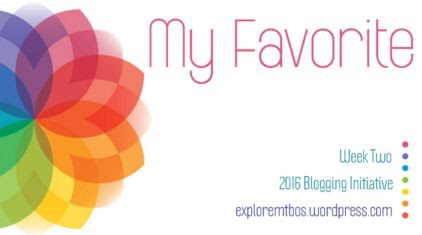
Today, I want to share my favorite new way to help struggling students with graphing linear equations. At the end of last year, I was asked to provide a list of resources I would like in my classroom. One of the things I asked for was coordinate plane geoboards. I asked for twelve of them, thinking that each pair of students could share. Now, I’m regretting that because I wish I had enough for every student to have their own.
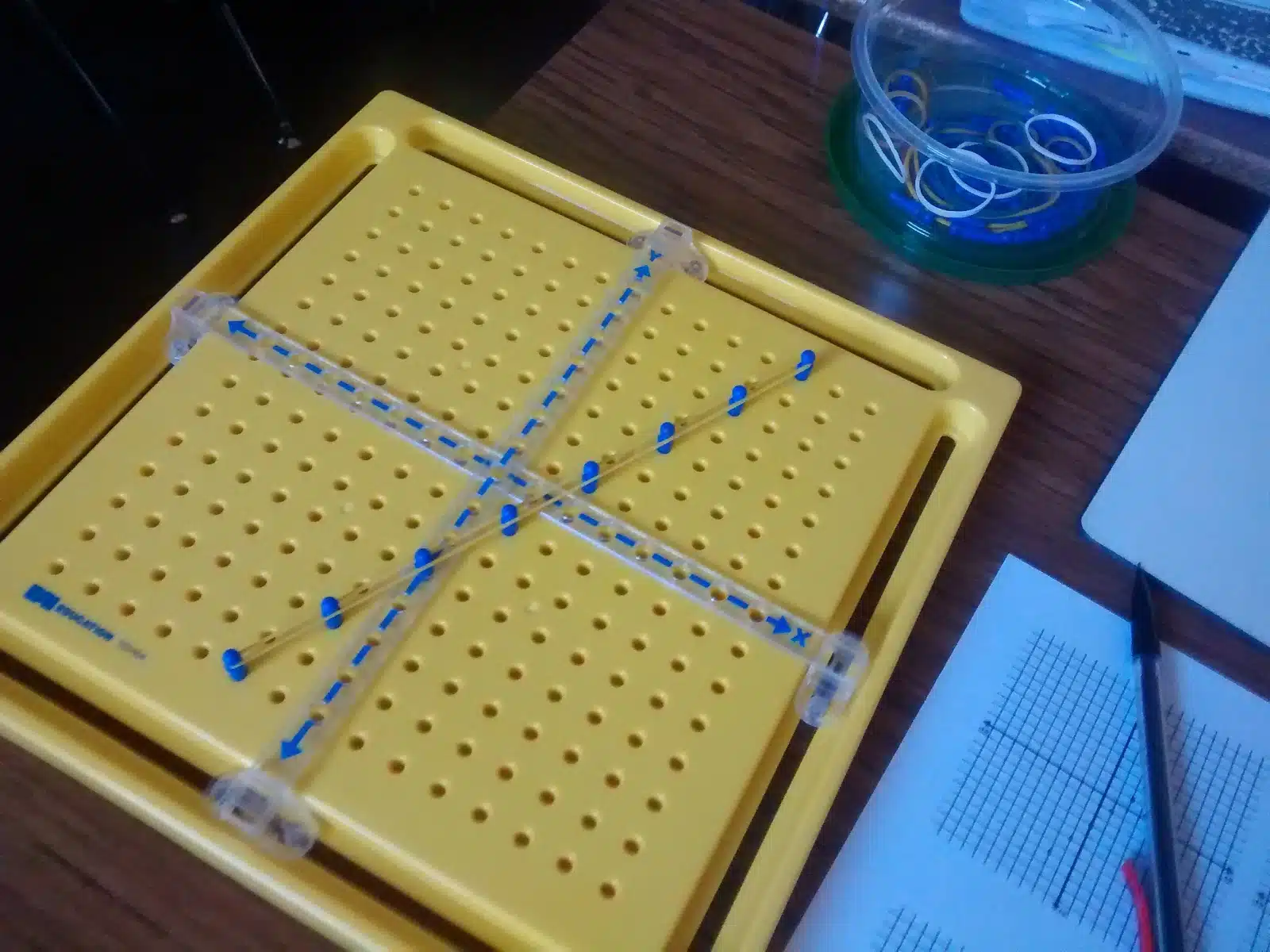
These have been AMAZING. My kids have really enjoyed using them, and so many of the problems I’ve had in the past haven’t been an issue this year.
Since I started teaching, I have always had a few kids who would “graph” by plotting the y-intercept and drawing a random line through it. Guess what? You can’t do that with a geoboard. You have to have at least two pegs to make a line which means they HAVE to use the slope to find another point!
I also used to have students who would mess up on their slope and not realize it. For example, they would go up two and right one at one point instead of up three and right one. The line looks *almost* right, and usually, they would be fine with this. With the rubber bands, my kids know that if all the pegs are in the right spot, the rubber band will lie smoothly. There have been so many times when a kid has asked for help because the way the rubber band is laying has told them that something isn’t quite right with their graph.
Since the x-axis and y-axis are movable, not all of my kids have graphs that look exactly the same. This leads to some awesome conversations that I never had when I just let my kids graph their lines on the dry erase boards. It also means my students can graph equations that wouldn’t be possible to graph on our dry erase boards. I love watching them move the x-axis and y-axis as they work. It gives me hope that when they get to Algebra 2 that changing the window on the graphing calculator won’t seem so weird.
Now, these boards do present a few problems. You can’t graph fractional intercepts. Instead, we just have to graph the other points and check that the rubber band does cross the axis at the appropriate place. I warned my kids the first day we used these that the first time someone shot a rubber across the room that we would put them up, and I would hand out a packet of graphing worksheets instead. This seemed to do the trick. I never had anyone flick a rubber band (to my knowledge). I did get hit by a rubber band once, but it was a complete accident. I bought cheap containers (5 for a dollar) at Dollar Tree to store the rubber bands and pegs in. This helped A LOT, but I still had to pick up a lot of blue pegs out of the floor.
February 2, 2016 – Oklahoma PD Opportunity
Hi guys! If you’re a math teacher in Oklahoma, I want to let you know about an exciting professional development opportunity that’s coming up. Best news: it’s free!
It’s for Pre-Algebra, Algebra 1, and Geometry teachers, and it will be held at Oklahoma Christian University on February 27, 2016 from 9 am – 12:30 pm. You’re going to need to follow the directions in the flyer and RSVP by February 19th.
I’ve been to several workshops put on by this group, and they are AWESOME! I sadly can’t attend this year since it’s at the same time that Shaun’s family will be in the country for the wedding. But, I can guarantee you will walk away with tons of ideas to use in your classroom!

February 3, 2016 – Make Someone’s Day
I spilled hot chocolate on myself this morning, and I thought to myself that it was probably a sign it was going to be one of those days. I got to work this morning, dropped off my lunch in the teacher’s lounge, turned on my computer, and scurried to the restroom to try and remove the signs of the hot chocolate from my blue blouse.
When I got back to my computer, I noticed that I had just received an e-mail. My principal had nominated me for a teaching award. Instantly, my day had brightened! Did my principal have to do that? Definitely not. If I decide to submit an application for this award, it’s going to mean more work for him.
So, I want to send you on a little mission today. Do something to make someone’s day today. It doesn’t have to be big. It doesn’t have to take a lot of time. It doesn’t have to cost anything.
Write a note to another teacher. Go out of your way to have a conversation with someone you don’t normally get to talk to. Compliment someone. Invite someone to eat lunch with you.
I’m so thankful for those who have gone out of their way to make me feel special lately. My principal nominated me for an award. My amazing coworkers threw me a wedding shower yesterday afternoon, and my church family threw me a wedding shower on Sunday. I woke up to a short DM this morning from a blog reader who wanted to thank me for the resources I post. Another Oklahoma math teacher sent out a tweet yesterday encouraging people to read my blog.
Making someone else’s day might just help make your day. 🙂

February 5, 2016 – Basketball Homecoming Spirit Week: Song Edition
Basketball Homecoming is this Saturday. So, that means this week has been Spirit Week. My student council kids decided to go with a “Song Week” this time around.
They’ll probably get mad at me for posting this, though. When they were doing research for spirit week ideas, they just kept finding all the spirit weeks they’ve done in the past that I’ve blogged about… How do I know this??? One of them mentioned me in this tweet: “So frustrating trying to look up new spirit weeks and then finding what you’ve already done, posted by your famous teacher @mathequalslove”
Each day of the week has song lyrics that coordinate with the day’s theme.
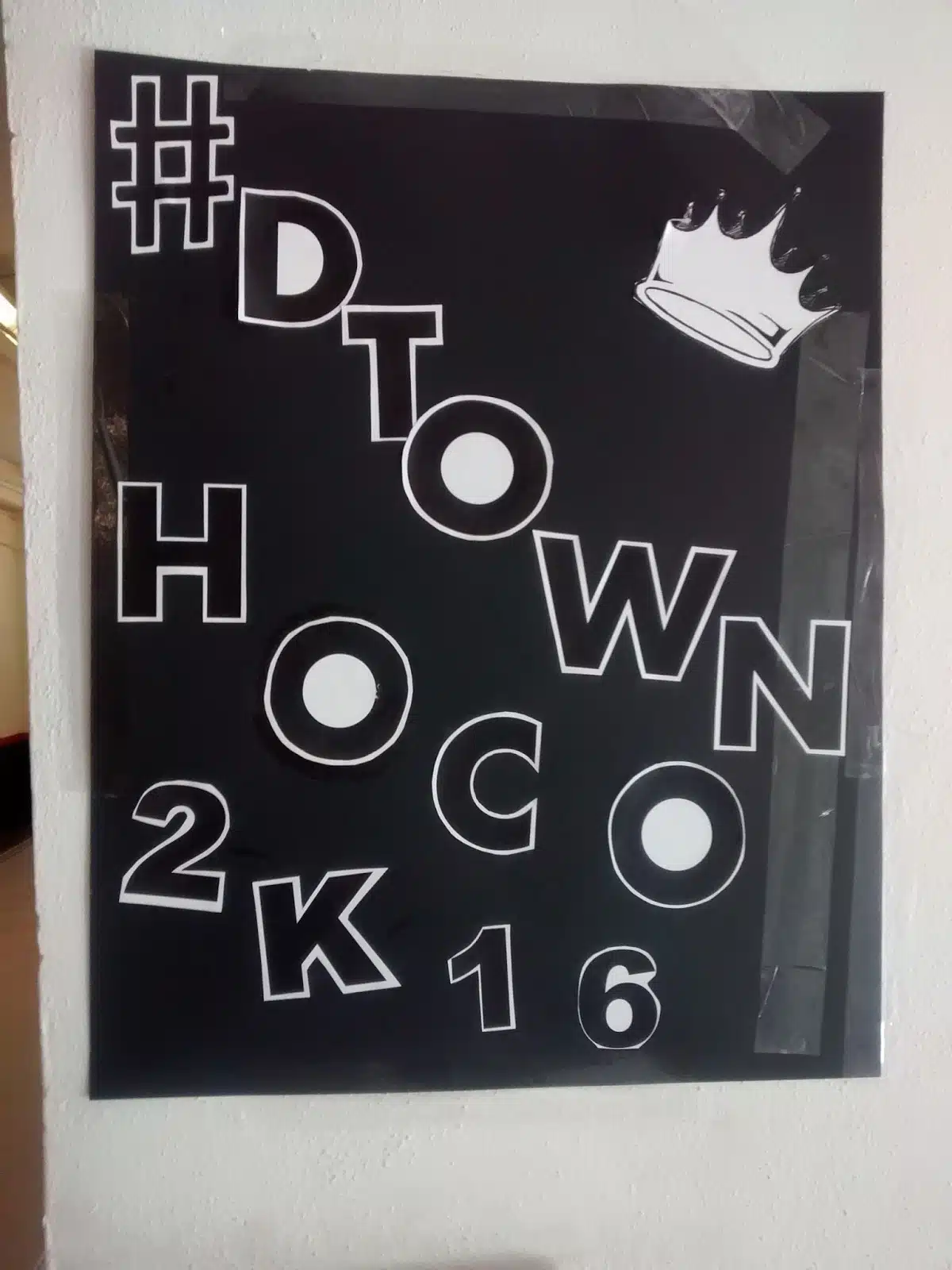
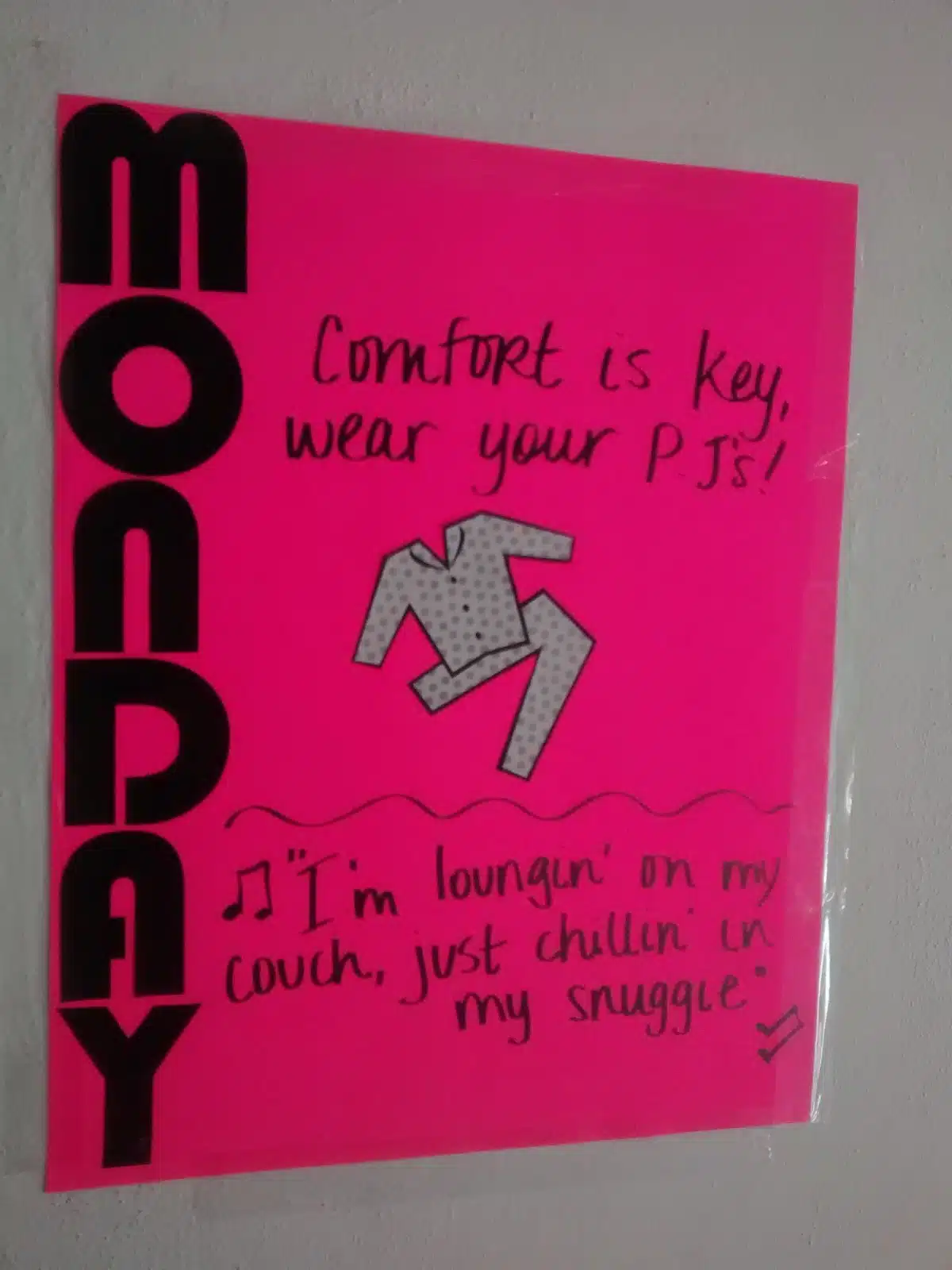
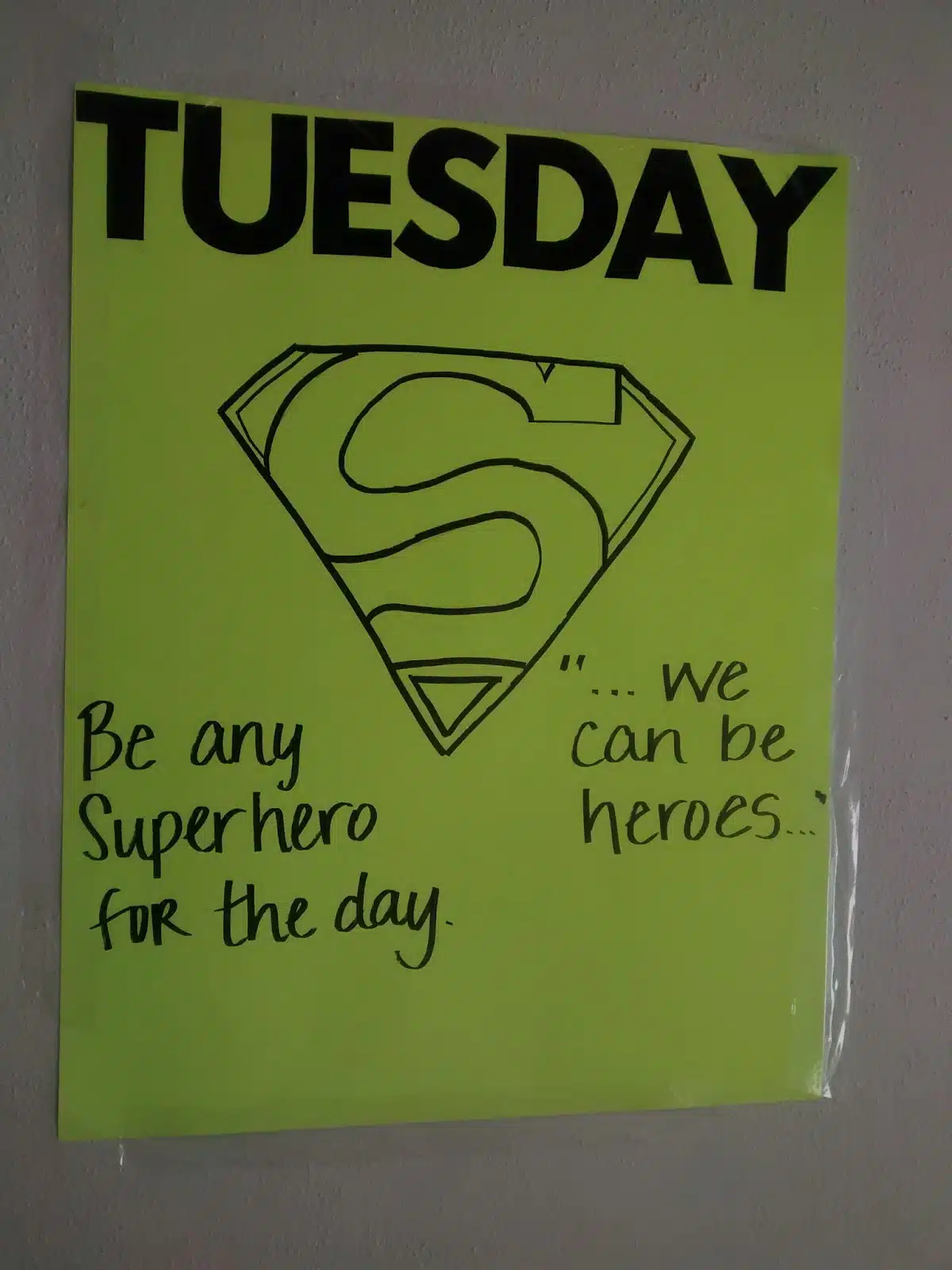


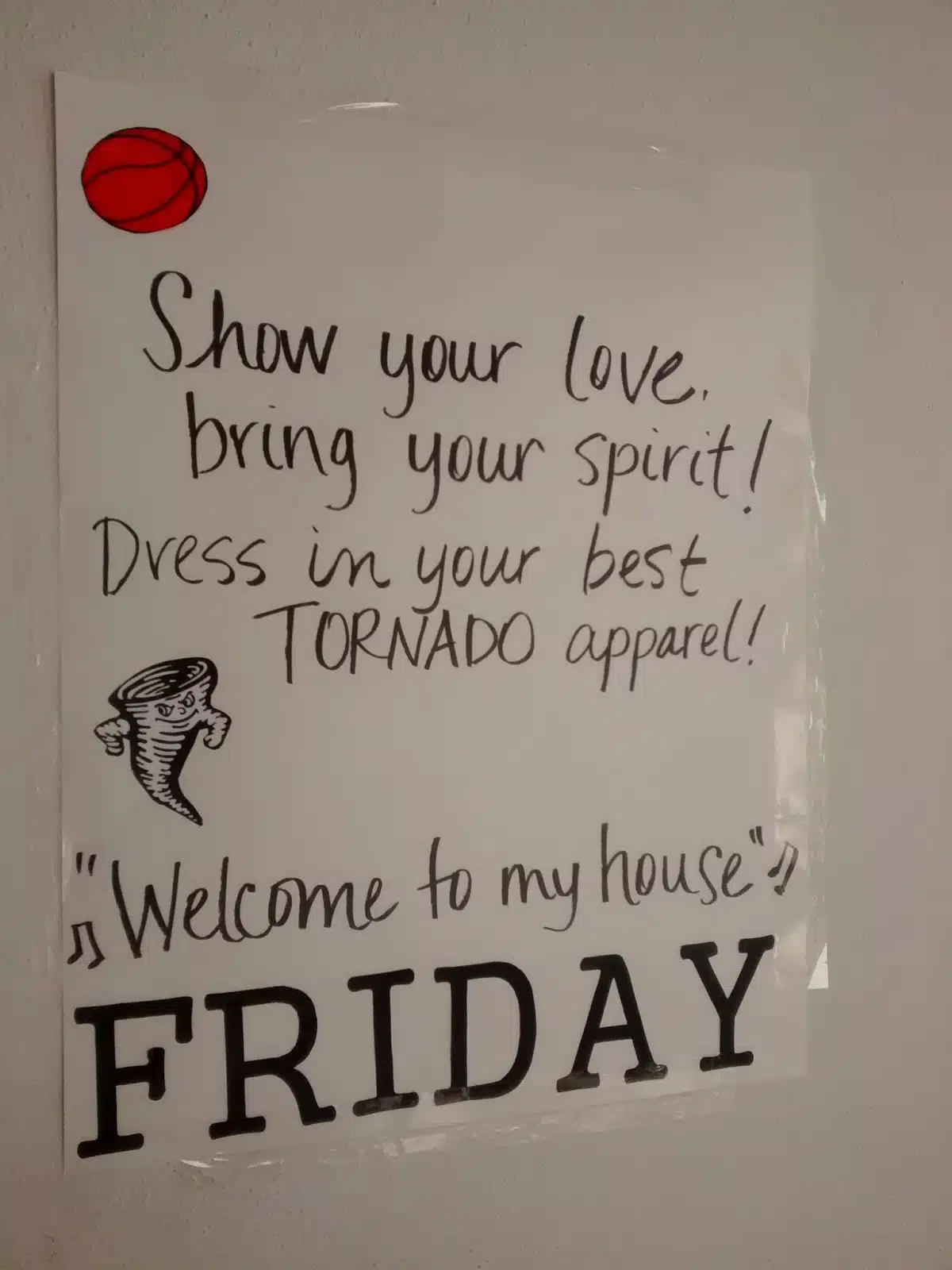
March 23, 2016 – Introducing Mrs. Carter
Hi all!
It’s been a while since my last post, but I promise I have a good excuse this time. The BEST excuse. Yes, this is my obligatory “I got married!” post. Shaun and I said “I do” on Saturday, March 12th. Both being math teachers, we would have preferred a March 14th wedding since it’s Pi Day and all, but we decided we didn’t want to wait any longer than absolutely necessary to marry our best friend.
I was blessed to be able to take off the week before our wedding to do last minute preparations. And, then we were able to enjoy our honeymoon on Spring Break. This week has meant back to work which has been a challenge after being off for two weeks. But, my kiddos have been great. They were eager to see wedding photos and ask a million (awkward) questions. Of course, I wouldn’t expect anything less!
Thank you all for your well wishes!
Mrs. Carter
P.S. Here are a few pictures to give you all a peek at our day. <3
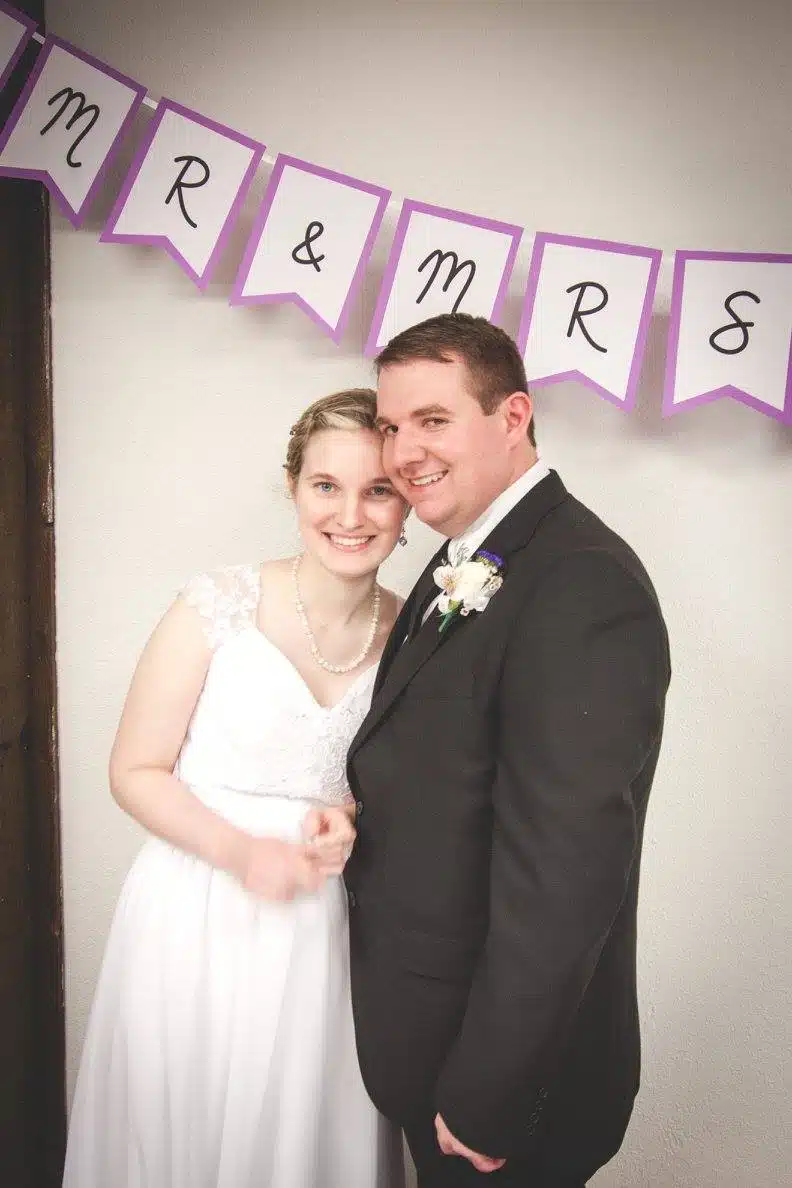
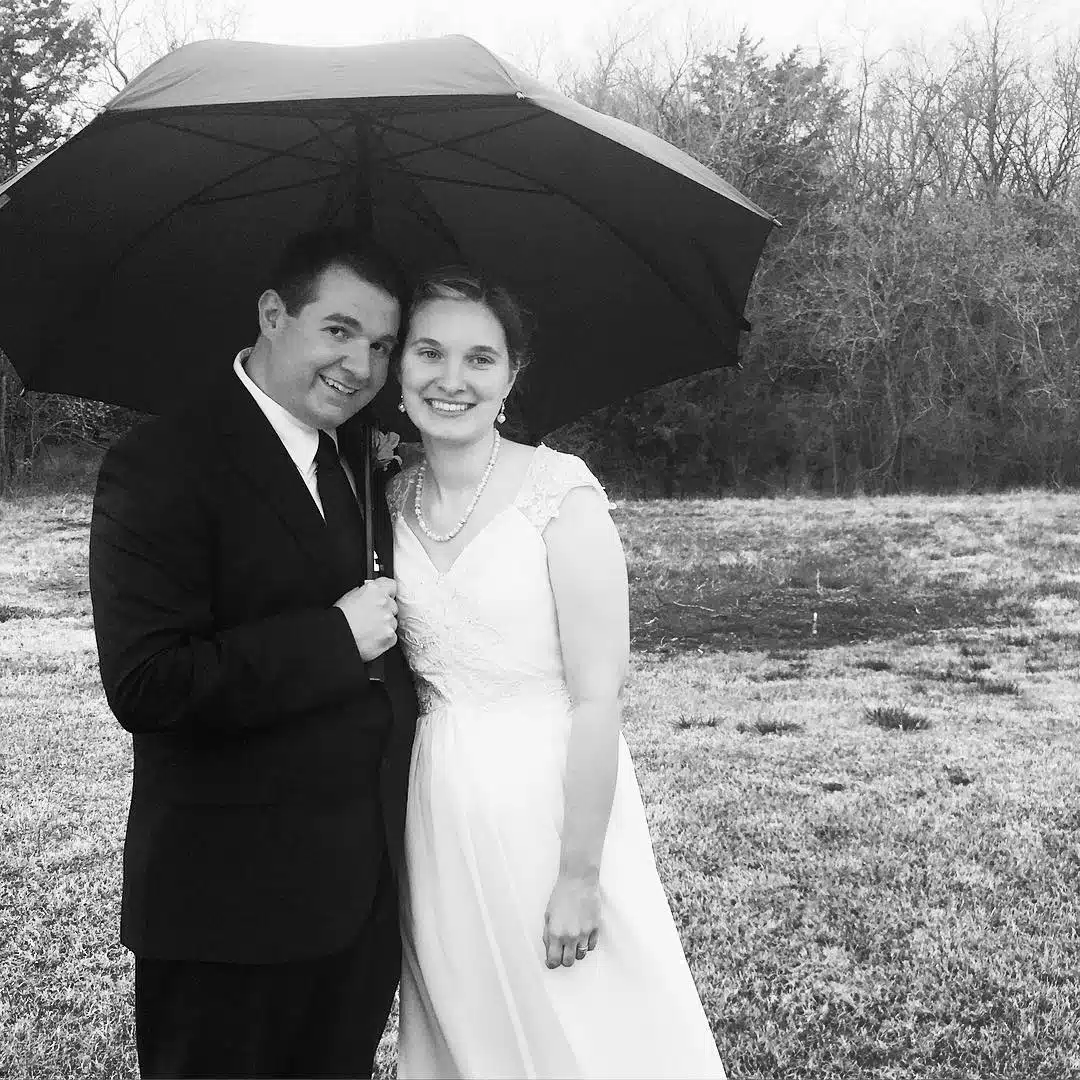
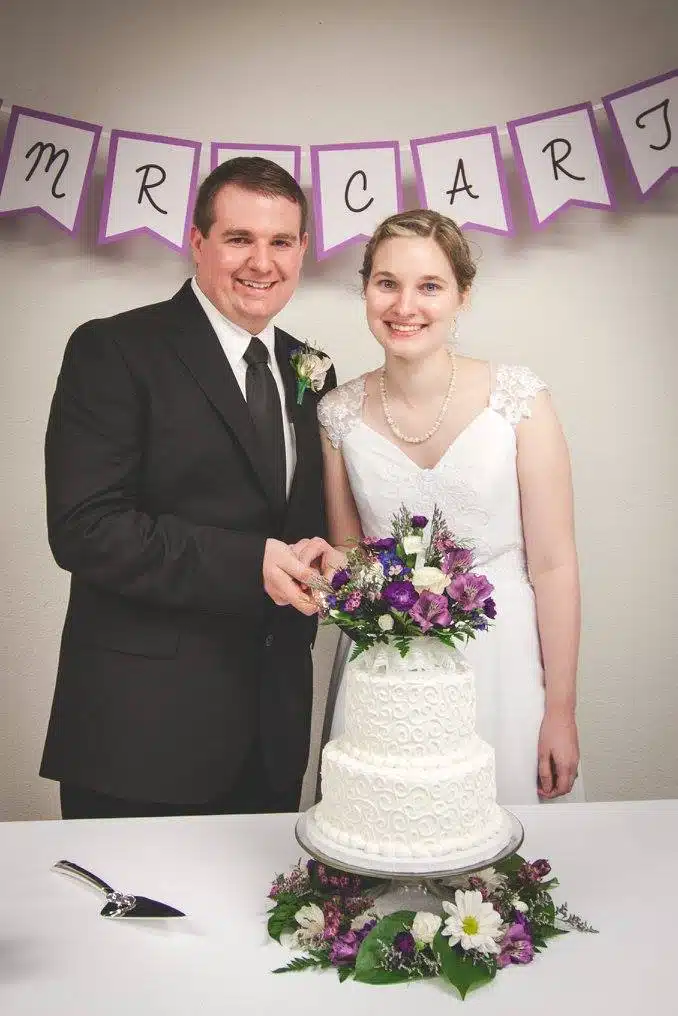


March 26, 2016 – A Name Change Contest
Changing your name is hard work. I’ve had to visit the tag agent to update my driver’s license and the social security office to update my social security card. Those weren’t that bad except for the fact that the social security office got my address wrong, so it required two visits. I’ve spent hours of my life at the bank and credit union as the employees try to find the right sequence of button punches to make changes to my account. Having a husband from Australia hasn’t exactly made me the favorite bank customer… I’ve even sent off paperwork to change my voter registration and passport. Then, there’s all the phone calls to various companies. Phone calls where AT&T tries to convince me that it will be easier to change my name in their system if I upgrade my internet speed and change my cell phone service to them and sign up for DirecTV. Right…
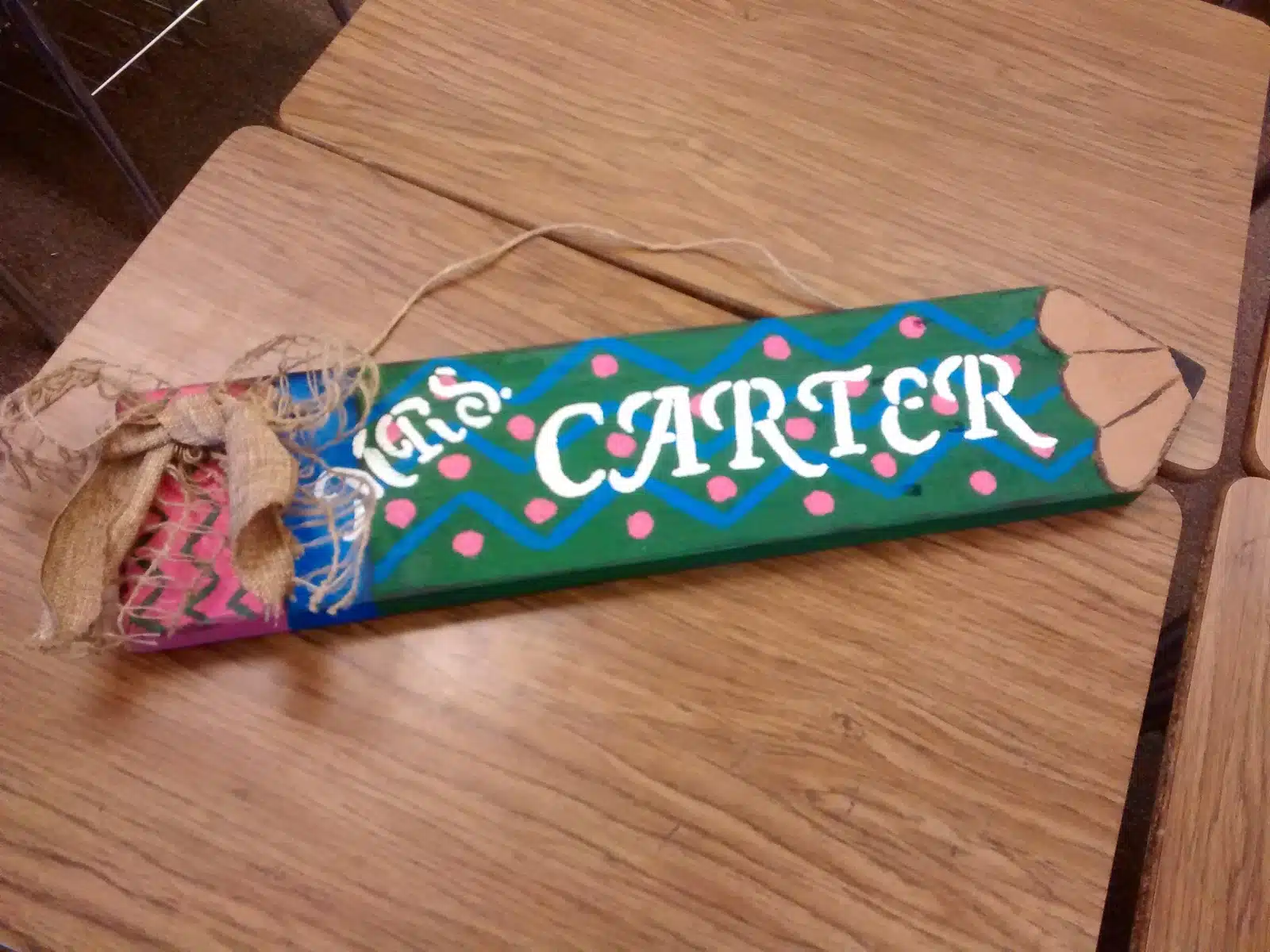
The hardest adjustment has been for my students. They said good bye to me before Spring Break as Ms. Hagan, and now I’m Mrs. Carter. It isn’t the end of the world if a student calls me Ms. Hagan. After all, that has been my name for 26 years of my life. However, I would like to encourage my students to call me by my new married name. I guess it’s just part of the excitement of being married. 😀
Therefore, I devised a little contest between my classes. I didn’t announce the contest. I didn’t explain the rules. I don’t answer any questions when students ask.
It started by writing 2nd period through 7th period on the dry erase board. And, each time a student says “Ms. Hagan” instead of “Mrs. Carter,” a tally mark goes on the board. Sometimes I write them right away. Other times, I keep a mental tally in my head and write them down when I get a chance.
Here’s the start of Day 1 as Mrs. Carter:
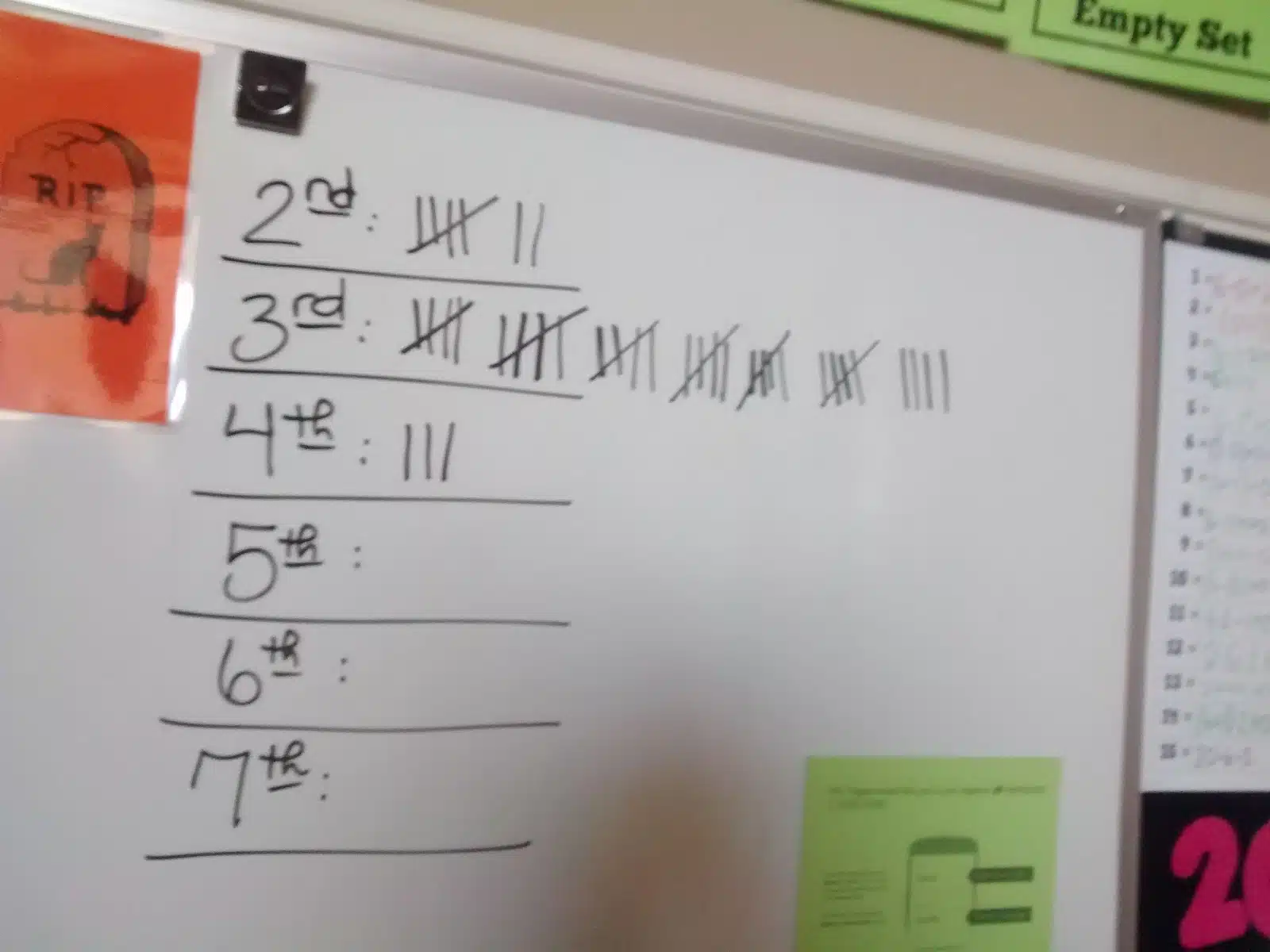
End of Day 1:

At the start of each day, the tallies get changed to numerals so new tallies can be added on.
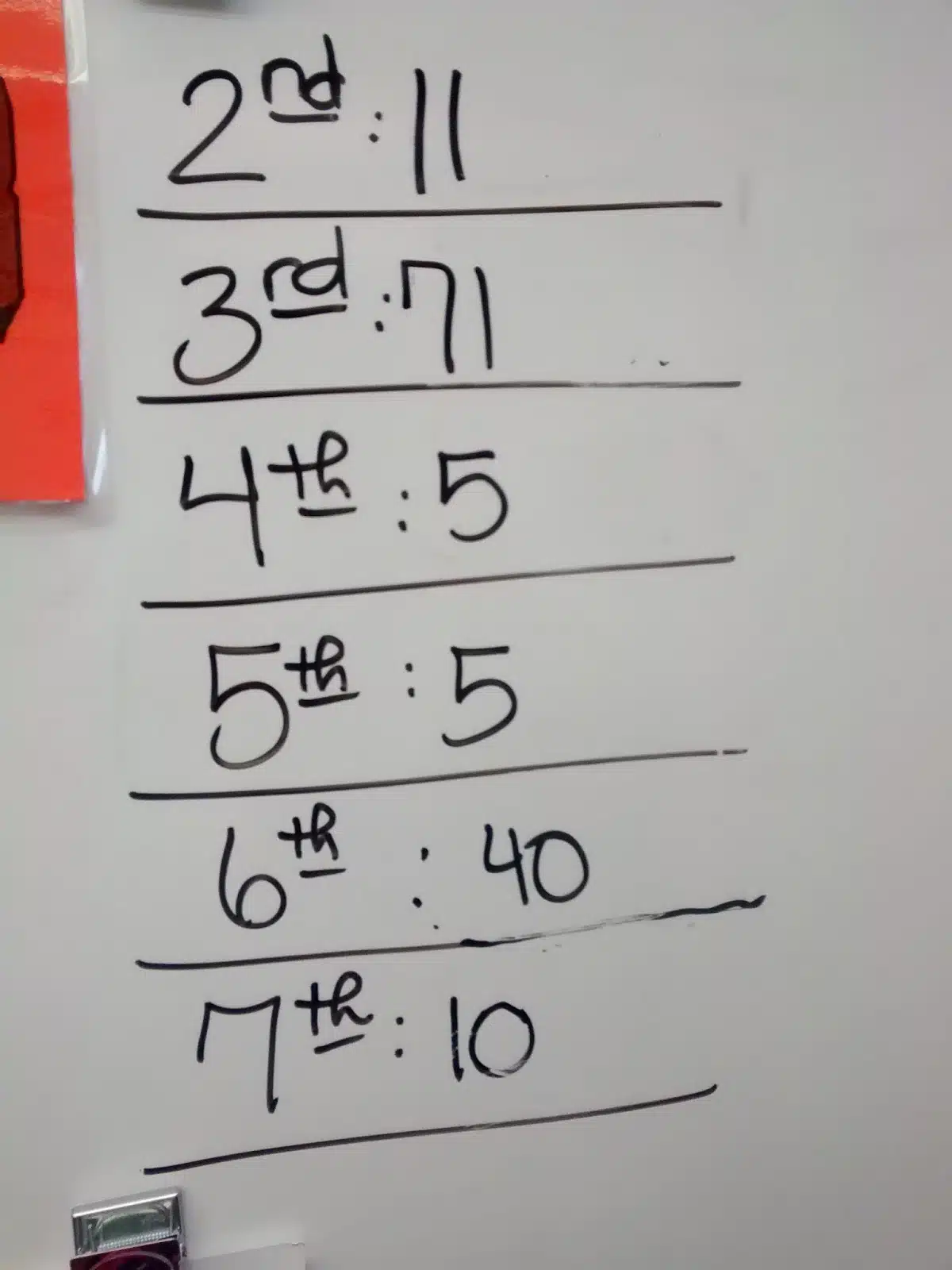
End of Day 2:
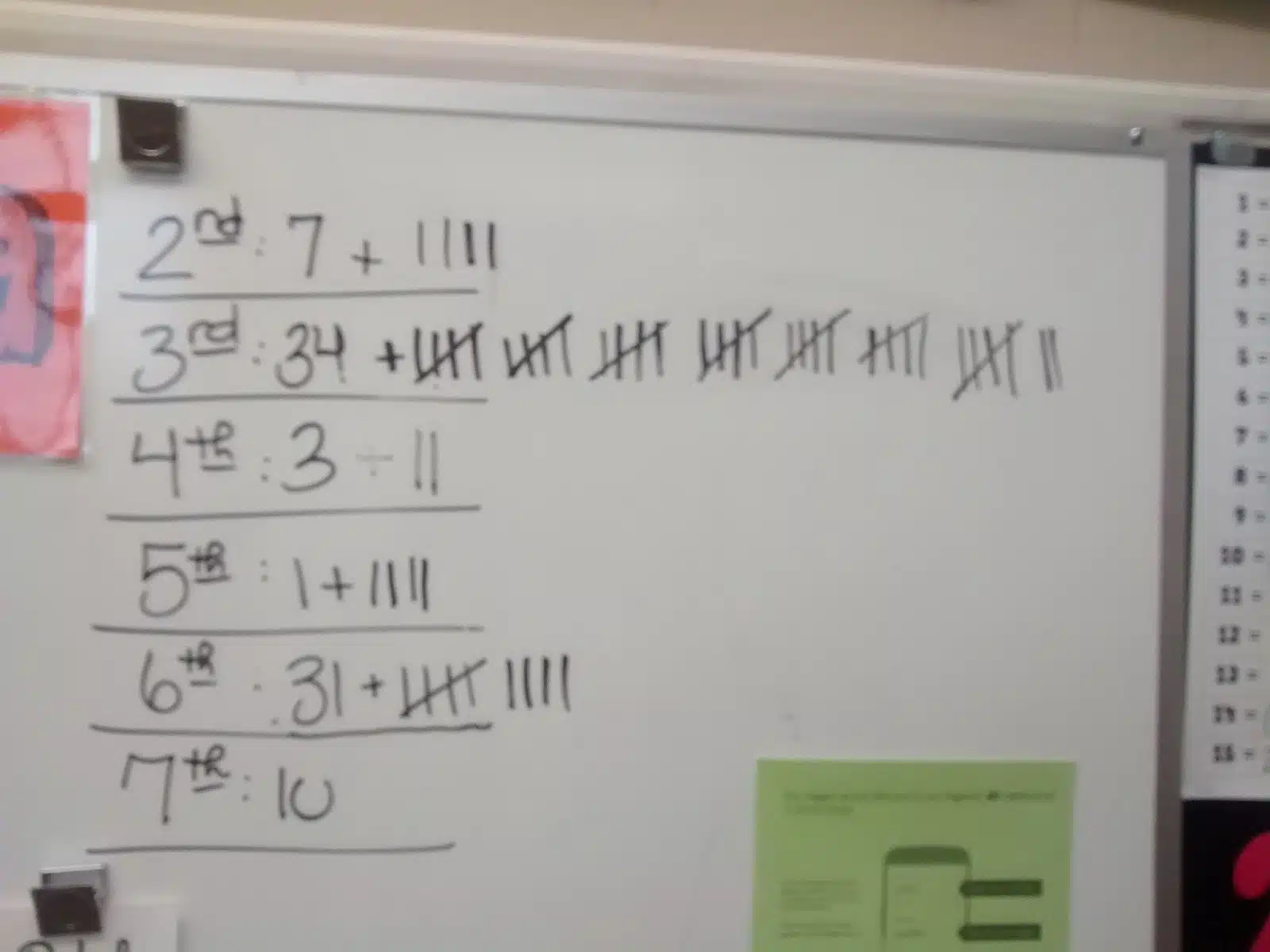
As the days go on, the number of tallies added are decreasing. So, I guess that’s a good sign. 🙂 The funny thing is that the students think I get mad every time I make a tally. Really, it’s just amusing to me. And, I’m realizing that my students say my name more times a day than I ever realized! 3rd, 6th, and 7th periods are freshmen (Algebra 1). They are obviously struggling the most. Or, I guess you could say they think the goal of the game might be to get the most points. 😉 My 2nd and 5th periods are Algebra 2 (sophomores, juniors, and seniors). My 4th period is Statistics (juniors and seniors). I expected my upper-level classes to have the most trouble since some students have had me all four years of high school. But, they seem to be doing the best at remembering. Hagan has become known as the “H-Word” that students are continually warning other students not to say. There’s talk that there might be a prize for the class with the lowest score, but that has yet to be determined. 😉
March 27, 2016 – Things Teenagers Say Volume 38
It’s been quite a while since the last Things Teenagers Say. My students have been getting antsy for me to post a new one, so here it is!

—
Why does my infinity symbol look like a pizza?
—
Me: Sorry, I’m a germophobe.
Student: Hey! Germs have feelings, too!
—
Student: Are you a germophobe? You’re always using hand sanitizer.
Me: I don’t know who has touched that before, and I don’t want to get sick. Just think, the person sitting in your desk last hour could have had a cold.
Student: I think you just turned me into a germophobe!
—
Starting over in relationships is awkward.
—
Student 1: I didn’t know you worked at [a steakhouse]. Does that mean you could cook me a mean sirloin?
Student 2: Uh…
Student 1: That was a test. I like my sirloin nice.
—
Student 1: I really want to know if I’m still going to be listening to Drake when I’m 80.
Student 2: You won’t be able to hear when you’re 80.
—
Is -1 times -1 kind of an awkward positive?
—
Student 1: We need to have a jam session.
Student 2: [Explaining] It’s where you make jelly in groups.
—
I don’t have tighty whities. I have Fruit of the Loom Boxer Briefs!
—
The woman takes the man’s name. It’s in the Geneva Convention.
—
It’s satisfying how thick our notebooks are!
—
You can love someone and cheat on them. A lot of people think you can’t, but you can.
—
Student 1: For a rich guy, he sure had a bad haircut! [Pointing to a poster of Einstein]
Me: Was he rich?
Student 1: He did invent the light. He had to be rich.
Me: Einstein didn’t invent the light bulb. Class, who invented the light bulb?
Student 2: Benjamin Franklin?
Me: No.
Student 3: Thomas Jefferson?
Me: No.
Student 4: President Eisenhower?
Me: Definitely not.
Student 5: I think his name was Thomas.
Me: Yes…
Student 5: Thomas Edison!
Me: Yes! Thomas Edison invented the light bulb.
—
I’d eat my baby if I was starving.
May 3, 2016 – Things Teenagers Say Volume 39
Even if I haven’t been blogging lately, I have been keeping a blog post draft with the crazy things my students have been saying.
So, here you have it: Volume 39!

—
Student 1: Do you like to fish?
Me: No.
Student 1: Have you ever kissed a catfish?
Me: Noooooooooo.
Student 1: Have you ever kissed a spoon bill?
Me: Noooooooooooooooooooo.
Student 2: A spoonbill? That’s the fish you can use to spank your children.
—
Pterodactyl has an x in it right? I think the x is silent.
—
If you need more sanity, just use some hand sanitizer.
—
After making a pillow in FACS class:
If I’d lived back in the day, I wouldn’t have been able to pick enough cotton to make me a pillow.
—
I don’t let anyone follow me on Instagram unless I know them or they’re a really hot guy.
—
Why does “fridge” have a “d” in it but “refrigerator” doesn’t? What happens to the “d?”
—
Incest isn’t illegal. It’s just frowned upon.
—
Student 1: My dad is using up all our data!
Student 2: He’s watching cat videos.
—
Student 1: How do you keep your shoes clean?
Student 2: I try not to let people step on them.
—
After discovering that you can faceswap on Snap Chat with images in your camera roll:
I’ll never have to put on make-up again. I’ll just faceswap with myself on a day where I was wearing make-up.
—
What if Ms. Hagan goes home and listens to Norwegian death metal?
—
If you had a fuel pump, I’d let you borrow my spare tire.
—
Are you speaking in Da Vinci’s code?
—
When students try to rap:
Ms. Hagan’s class is very ghetto.
She likes picking flowers in the meadow.
—
Zookeepers make the best boyfriends.
—
Is it “Go Fish” or “Goldfish”?
—
While playing a card game that is often called the abbreviated form of a not so nice phrase:
This game is just a bunch of sinning. Lying is a sin, and that’s what we’re doing! We need to pray!
—
Student: Mrs. Carter! Did you know that you are Caucasian?
Me: Yes…
Student: Well, I just found out last hour that I’m Caucasian. —
May 5, 2016 – Math-y Jewelry from Kokoba
I love math. Obviously. I also love jewelry. Awesome things happen when those two categories overlap. Today, I want to introduce you to one of my lovely blog readers who inspires me with the way she can combine math and jewelry to make something beautiful. Meet Katherine. You can find her on twitter, her blog, and her etsy store which is filled with math, physics, chemistry, and biology jewelry.

A while back, Katherine e-mailed me and offered me a piece of math-y jewelry in exchange for mentioning her etsy store on my blog. I visited her blog to see her work and was instantly impressed. But, I got sidetracked and never ended up responding to her offer. Thankfully, she let me know it was a long-standing offer, and I could take her up on it whenever I was ready. As Shaun and I were planning our wedding, we knew we wanted it to reflect our personalities and interests. We ignored my students’ suggestions of having a 3.14 tier cake and a kangaroo ring bearer. As silly as their suggestions were, my kids were on to something. For us, math really did equal love. Though, as much as we both love math, we weren’t keen to decorate our wedding with equations or anything… I thought about Katherine’s offer and wondered if she could design a necklace I could wear with my wedding dress that was based on the digits of pi. When I reached out to her, she took the idea a step further and offered to incorporate Australian opals into the design since Shaun is from Australia. We’d brainstormed ideas to incorporate Australia into our wedding somehow, but we had failed to come up with anything that didn’t seem cheesy. So, this Australia connection was perfect for us. (Truth be told, we didn’t stop there. We also had Tim Tams for wedding favors.) I told her I was looking for something classy, and she definitely outdid herself. Thanks Katherine for helping make my wedding day incredibly special!

Here’s a close-up picture. Can you find the digits of pi?

If you need help finding the digits, Katherine has an awesome page on her blog about how she incorporates different numbers into her jewelry designs. Visiting Katherine’s Etsy shop gives you loads more of beautiful, number-based jewelry to choose from.


Those are all from the math section. But, Katherine does science jewelry, too! Check out this gorgeous bracelet that features the Newtonian Constant of Gravitation.

This beautiful necklace features Avogadro’s Number.

If you don’t see anything that catches your fancy, Katherine also does custom designs. She can design a piece of jewelry around any number which you find significant.

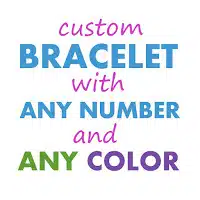
Katherine was an absolute pleasure to work with, and I definitely recommend her work!
May 6, 2016 – Piles of Paper
It’s been a weird school day so far. It’s the last Friday of the year. Monday will be our last full day of school, and Tuesday will be a half day with half of the morning taken up by an awards assembly. More students than I can count have decided it’s not even worth coming to school anymore. Or, they came to school, realized hardly anyone was here, and decided to go back home. It doesn’t help that the seniors have declared today “senior skip day.” Oh, and I can’t forget the students who are out of class to help move our high school classrooms to the middle school for next year.
I printed off a word search to keep the handful of students I have in each class period occupied. Every word in the puzzle starts with an E. Yes, I’m mean like that. Yesterday, when most of the school was gone for baseball regionals and a biology field trip, we played Sara VanDerWerf’s 5×5 game. While my students have been word searching, I’ve been keeping busy. Cleaning out my inbox. Making a summer to-do-list. Working on my action research project that’s due on Sunday.
I’m surrounded by stacks of paper, and I think I’m starting to understand how some of my students feel. I’ve got stacks of journal articles I printed off as potential sources for my research paper. I’ve got another pile of old rough drafts of my research project. I *think* I can get rid of these, but something is telling me to hold on to them until I graduate. Then, there are the stacks of pre-tests, questionnaires, permission slips, post-tests, retention-tests, and other paperwork generated by doing research. Oh, and I can’t forget the sample papers and pages and pages of tips on writing from my professors.
Do you know what I want to do more than anything else?
#1 Graduate with my master’s degree.
#2 Print off my final research project and bind it using the Arc System from Staples (a new obsession of mine).
#3 Admire the product of almost two years of hard work.
#4 Throw away all the piles of paper collected in the process of writing this paper.
Occasionally, I will have students who will talk about how they can’t wait until the school year is over so they can throw away their interactive notebooks or set them on fire or destroy them in some other way that makes me want to fall to my knees and cry. (Not all students feel this way, of course. I have other students who take their notebooks with them to college. I have students who claim their notebook is a prized possession, and they are going to keep it in their hope chest.) I’ve never understood their desire to destroy their notebook. Until now.
Grad school has been an interesting journey. I wouldn’t describe it as “fun.” It has been a lot of hard work and long hours (and will continue to be so for the next week)! It wouldn’t say it revolutionized my teaching practice. But, it did force me to look more critically at what I do in the classroom. It taught me how to design and carry out a research project. I read scholarly journal articles and published research that I probably wouldn’t have ever taken a glance at before. Grad school has stretched me, and I’m thankful for that. I’m also thankful it’s nearly over!
May 13, 2016 – Hello Summer + A Peek at my New Classroom
I was doing pretty well with the #MTBoS30 challenge, then life happened. Still, I’ve blogged more this May than I have in a while, so I’m counting it a success. So, let’s recap.
* I submitted my action research project and a powerpoint presentation summarizing my research which was my last task to do before graduating with my master’s this Saturday. The husband and I will watch my seniors graduate Saturday morning, and then we’re road-tripping it to Arlington, TX so I can graduate Saturday evening. Hope to share my research on the blog soon!
* I finished my fourth year of teaching. The last few days were weird. Very few kids actually came to school. One kid brought a baby raccoon he had rescued. This is, by far, the coolest/weirdest creature I’ve ever had in my classroom!

* I survived this year’s senior prank. While I don’t approve of trashing the school (I am such a rule-follower), I did find the door decoration they left for me amusing.
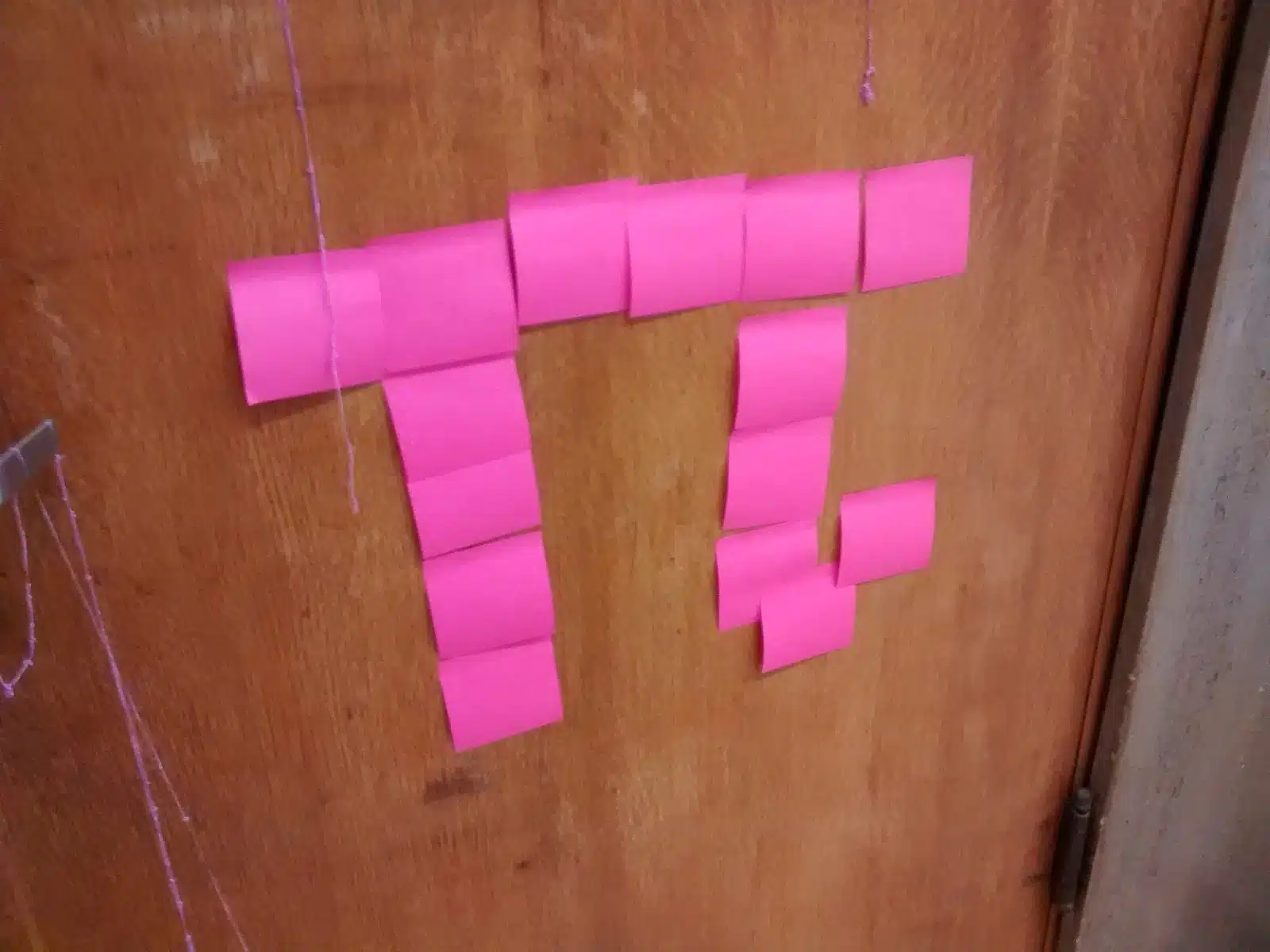
* I packed up my classroom of four years in a million boxes. My superintendent said I haven’t been teaching long enough to generate this much stuff.
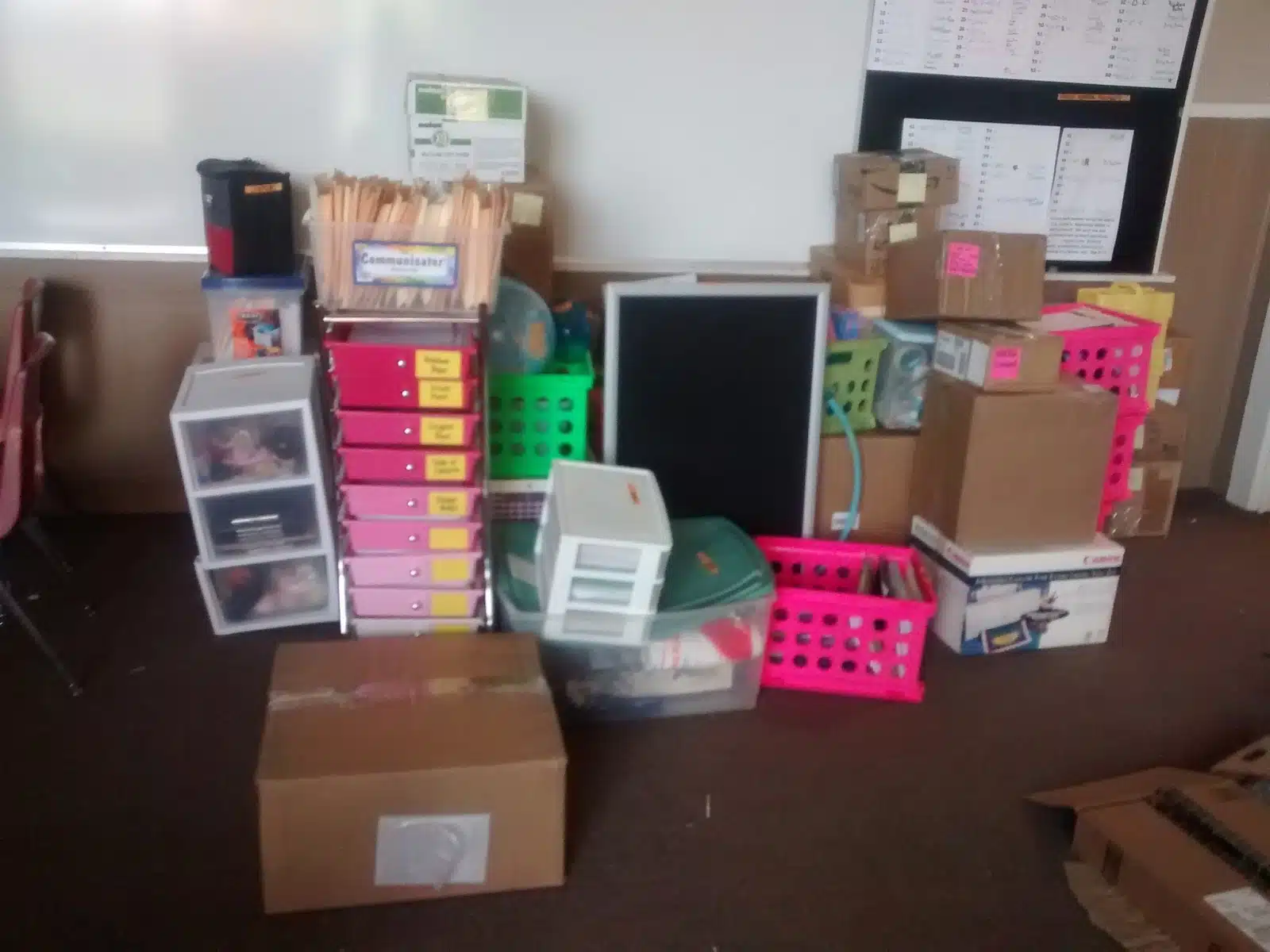
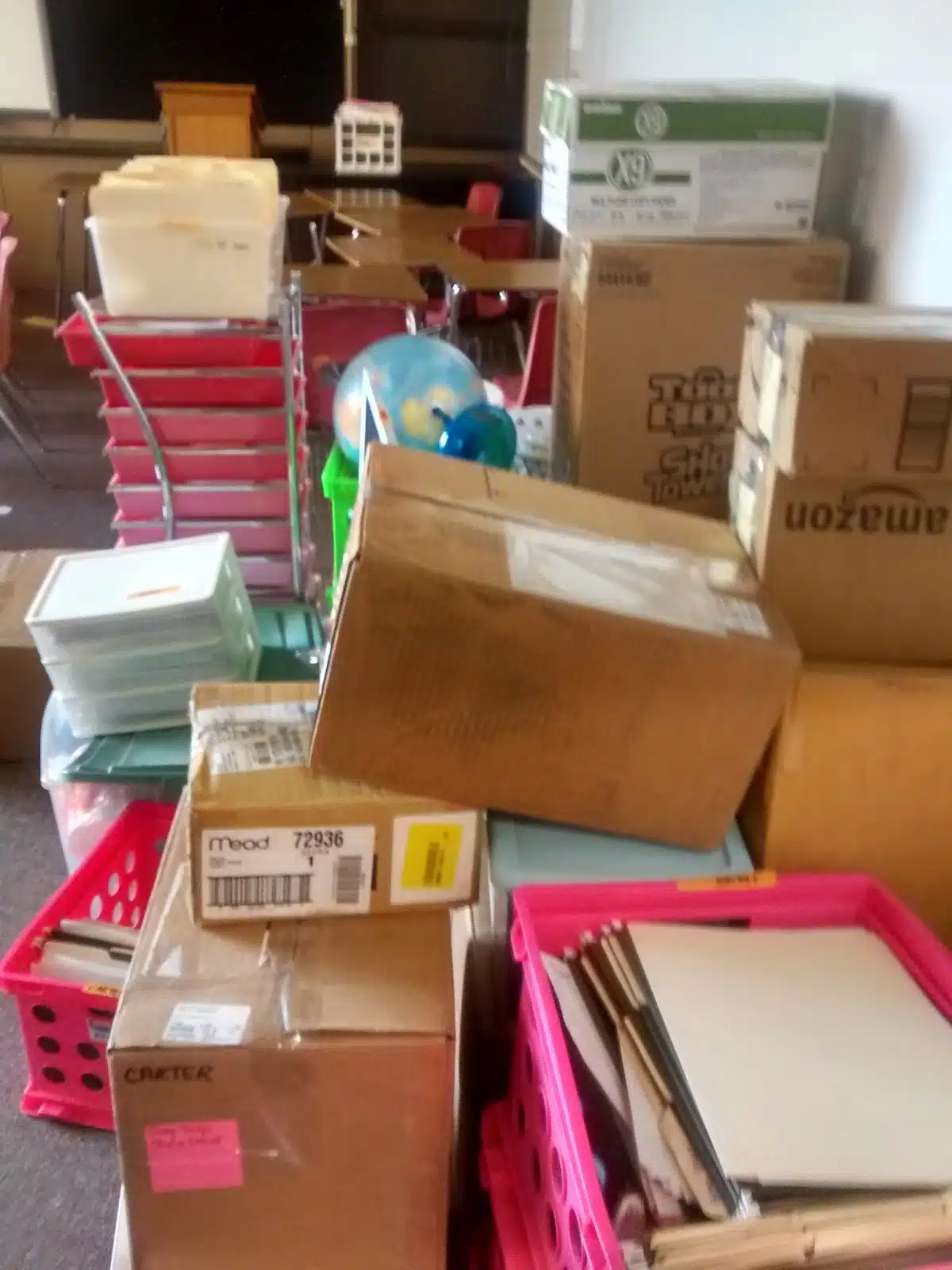
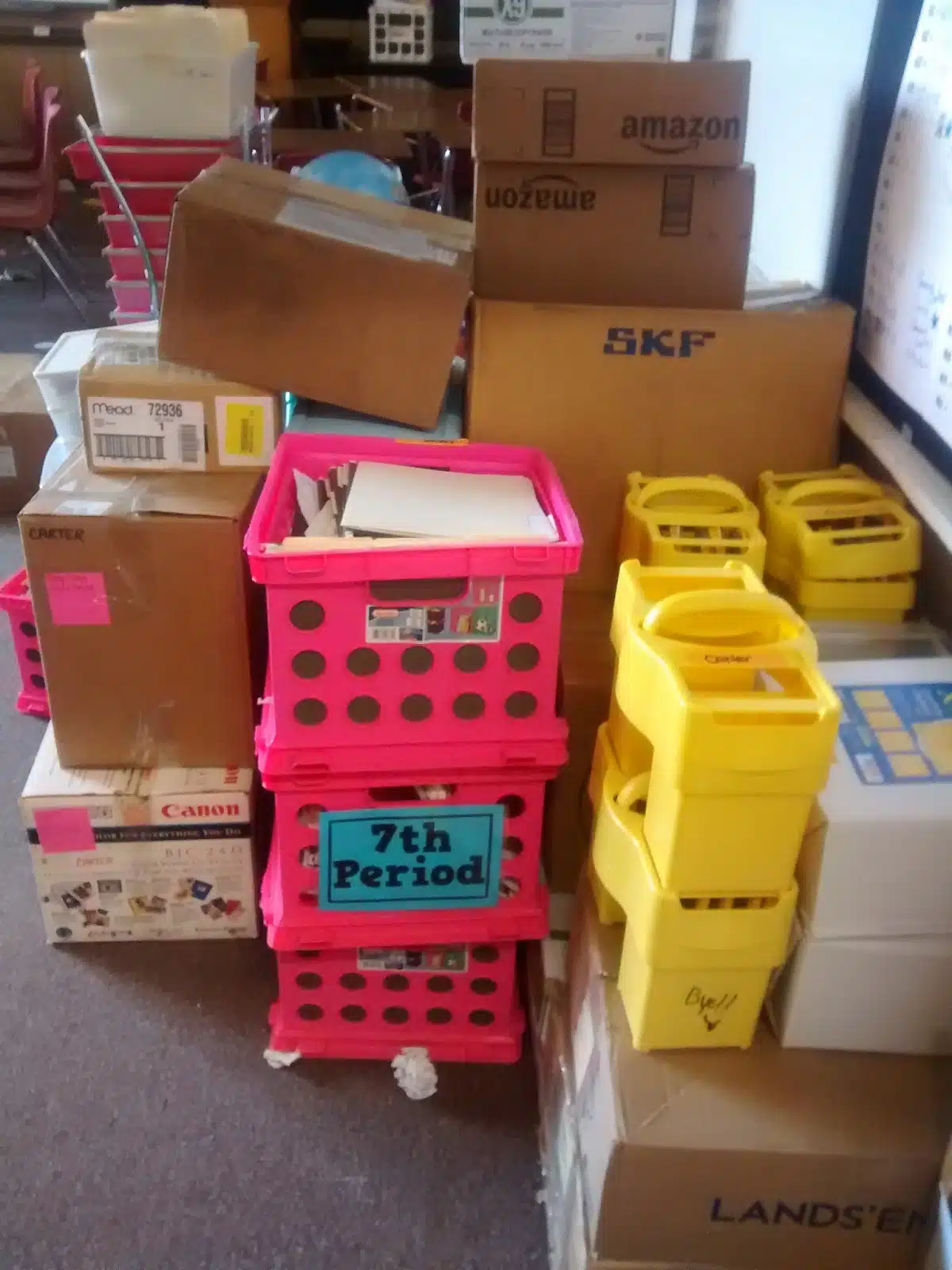
* I unpacked my boxes of classroom stuff in my new classroom. I’m still teaching high school math, and I’m still teaching in Drumright. Due to a 1.3 billion dollar shortfall in the State of Oklahoma’s budget, school funding is being cut drastically for next year. Many of the surrounding districts have been forced to go to a four-day school week next year to cope. Our school board chose to consolidate our middle school and high school into a single building in lieu of going to the four-day school week. Since the middle school is approximately 6 years old and the high school is almost 100 years old, it made sense to move the high school to the middle school. To help accomodate the high school at the middle school, we also had to move the 6th grade to the elementary school.
Here are pics of my new classroom. Want to know what I’m most excited about? Cabinets, cabinets, and more cabinets! My old classroom had zero storage. I had to rely on filing cabinets, a storage cabinet, and crates to store everything. I still got to bring all those things from my old room, but I have an entire wall of storage.
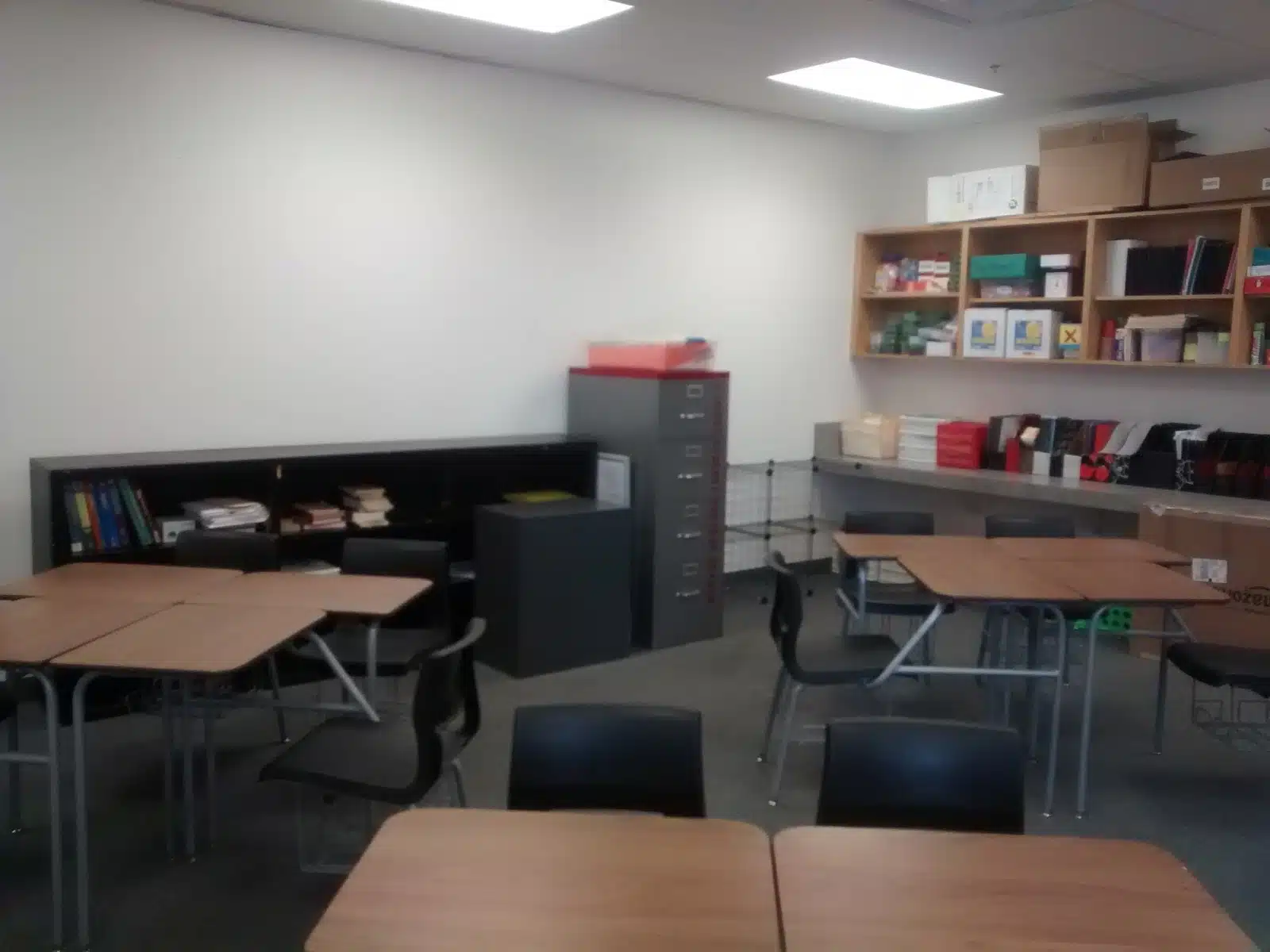
At the moment, I’ve just stuck stuff on the shelves and in the cabinets randomly. They’re coming to clean the carpets in a couple of weeks, so my main goal was to get everything out of the boxes. Paranoid me is still afraid they’ll ask me to change classrooms for some reason, so all my moving boxes are sitting on top of the cabinets at the moment. I promise they’ll be gone before school starts. (And, there are a lot more boxes there than it looks like. My husband painstakingly stacked as many smaller boxes into larger boxes as he could.)
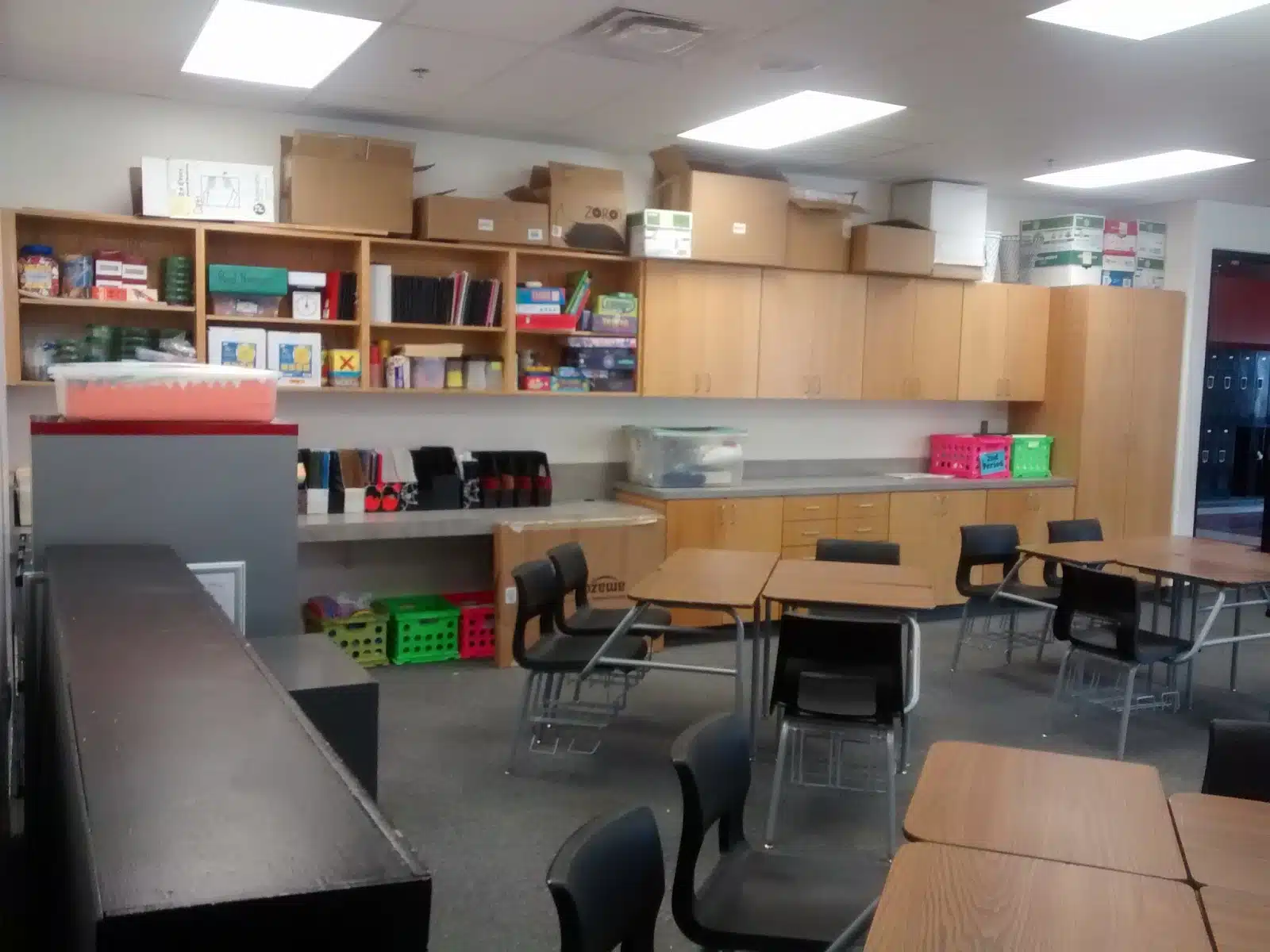
I’m also SUPER-excited about the counter-top. It’ll be perfect for organizing copies for the week!
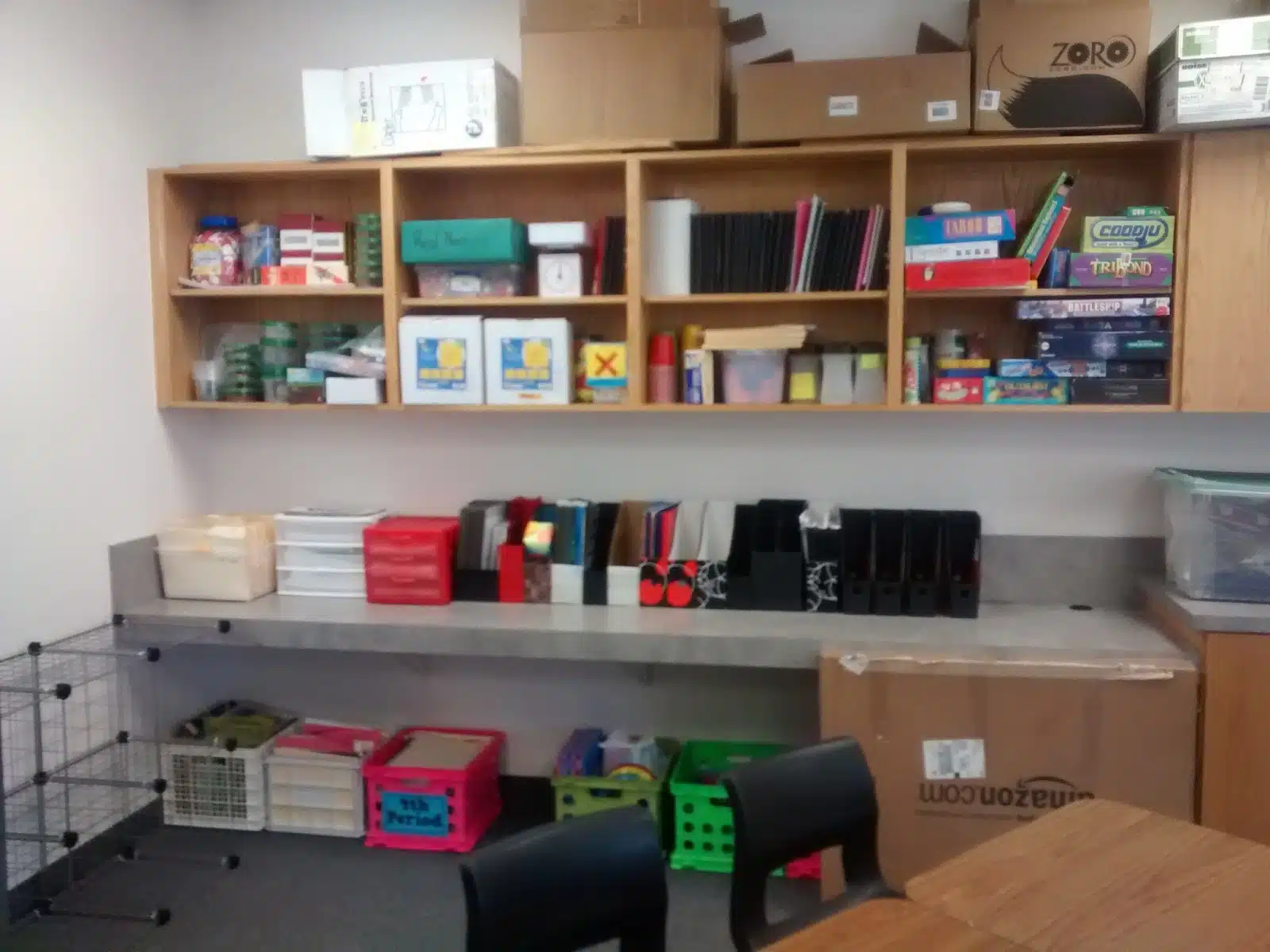
I’ve got a window I need to sew some curtains for this summer. First, I need to make a to-do list for this summer!
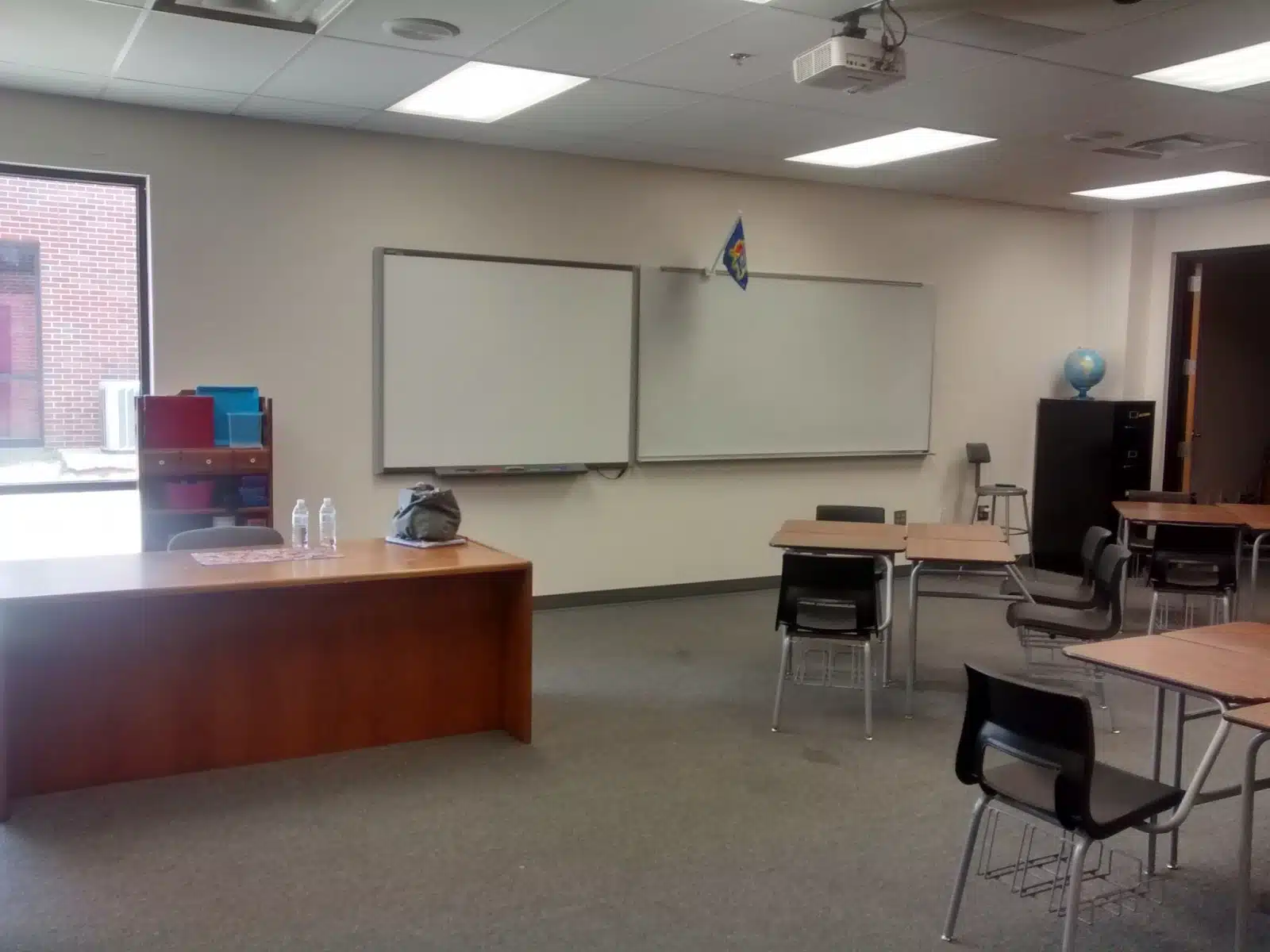
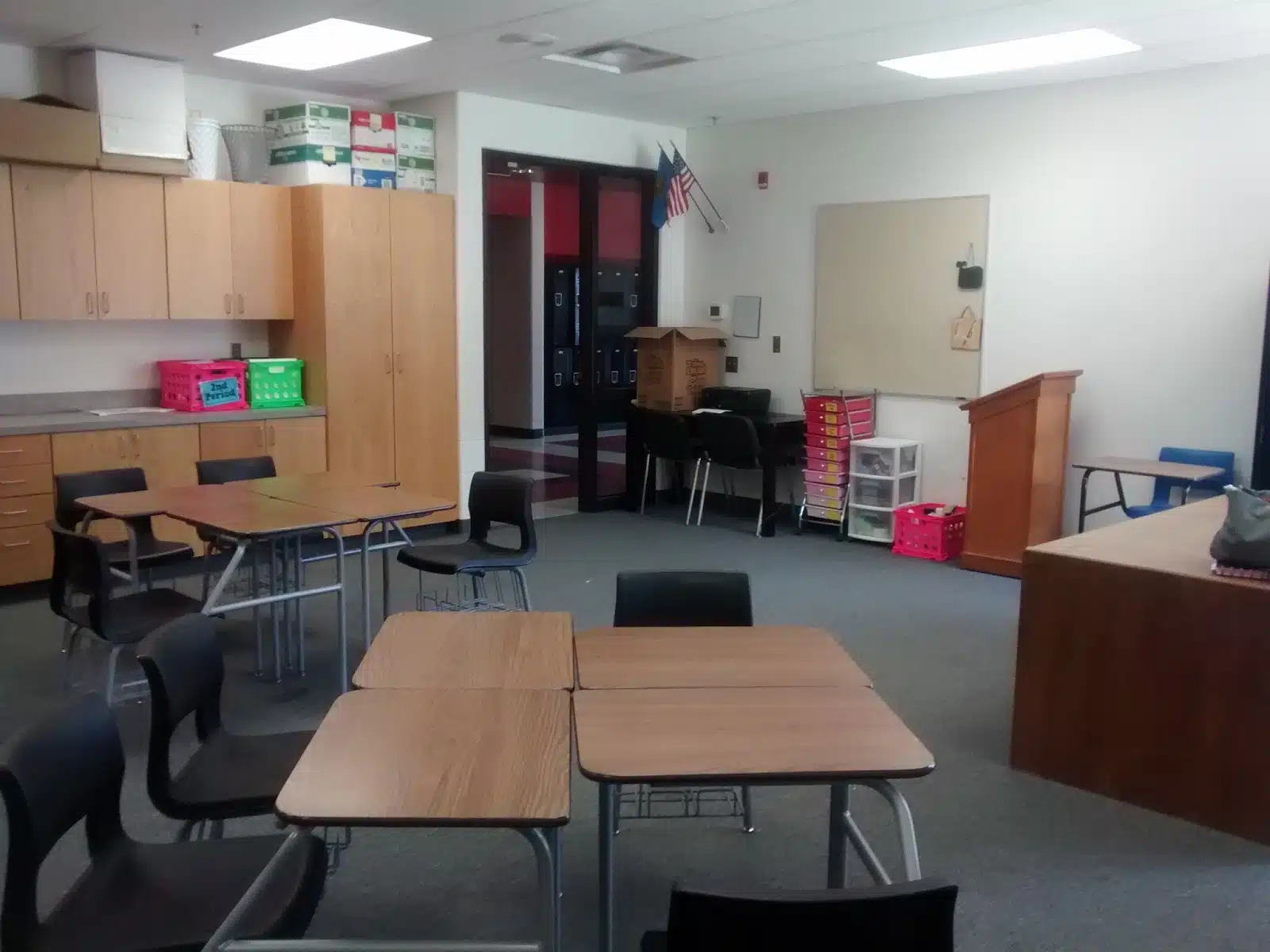
I’ve got two doors in my classroom. One leads to the hall. It’s shown above. The other door leads into the other math classroom. It’s shown below. I also need to make curtains to keep students looking from one math classroom to the other.
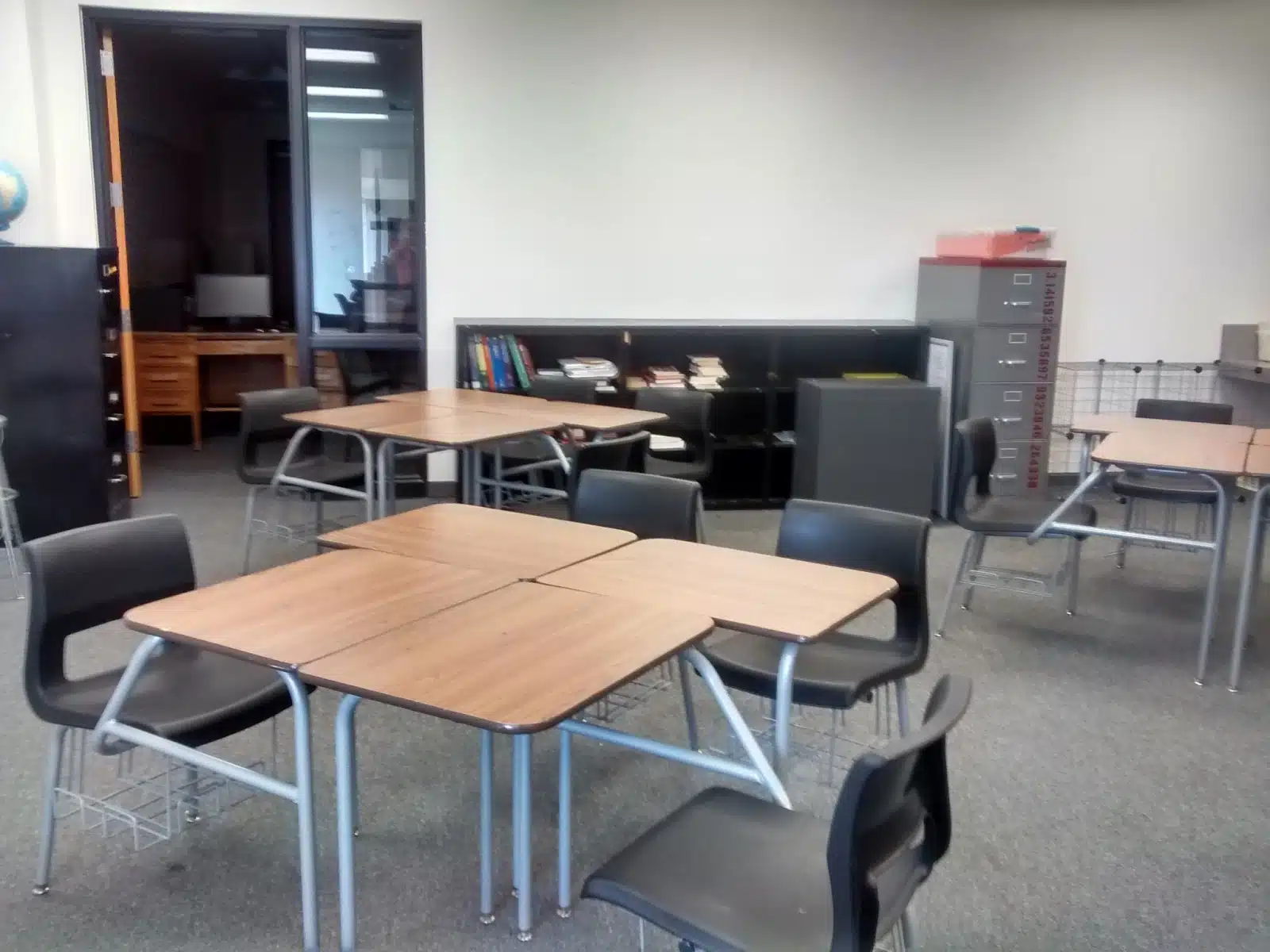
I’ve got a lot of decisions to make about decorating my classroom this summer. In my old classroom, I had a giant dry erase board that my parents bought me off craigslist and some bulletin boards they made me. I need to figure out which of these can be moved to my new classroom.
Then, you know me. I have to make new posters and decorations for next year, too.
Super-looking forward to sharing finished classroom pics come August!
May 16, 2016 – Things Teenagers Say Volume 40
Now that school is out for summer, it’s time to post the last few remaining things teenagers have said. I know you must be feeling incredibly sad right now as you come to the realization there won’t be another installment until school starts back up again in August.

—
I used to have a thousand followers on Instagram. Then, I got a girlfriend.
—
Photogenic means you’re ugly in photos, right?
—
Student 1: I’ve got this in the bag!
Student 2: In your hobo sack?
—
While playing cards:
Student 1: Look at her deal! She could be a dealer!
Student 2: My mom used to be a dealer.
Student 3: A crack dealer?
Students 1 and 2: NO!!!!!!!!
—
Student: You put a strawberry in a cantaloupe. Can you imagine that?
Me: [Confused Silence]
Student: Speechless!
—
Mrs. Carter has options. She can move to Australia if Donald Trump becomes President.
—
Student 1: What are we doing in here today?
Student 2: Playing a game.
Student 1: Is it fun?
Student 2: You get majestic stickers if you win. They’re amazing!
—
It smells like a department store in here.
May 20, 2016 – Master’s Graduation
Can I just say that being finished with my master’s degree is an awesome feeling? It feels weird not logging on to Blackboard every single day to see if grades are posted or if someone has left a comment on my discussion post. Of course, I am still logging on every day to see if my last class has been posted to my transcript. I already know what grade I got; I just want to be able to order my transcript so I can apply for a new teaching certificate with my married name and new degree on it!
Saturday, my husband and I drove to Texas so I could walk across the stage at the University of Texas – Arlington. Since all of my classes were online, I wanted to do something to make my degree seem more real. What could be more real than walking across a stage in front of thousands of people I’ve never met before? My parents, sister, and great-aunt also made the trip to watch me graduate. Given that these are the people who have listened to me complain about every single deadline and assignment, it was only fitting that they be there to see me finish.

Shaun actually beat me to blogging about my graduation. So, you can read more about our road trip adventures to and from graduation here.
The most challenging/frustrating/satisfying part of my master’s program in curriculum and instruction was my action research project. We were asked to consider an issue we saw in our school and design a research project to investigate it. I chose to focus my research on the remediation of integer operations since it is an area where my students struggle each year. Specifically, I decided to compare the impacts of two different forms of integer remediation: use of the number line model and use of memorized rules.
If reading educational research is your kind of thing, I’ve shared my entire research project here.
June 1, 2016 – Crowd-Sourcing Favorite Practice Structures
I had a twitter conversation with Kathryn Freed yesterday that reminded me of a project I want to do this summer.
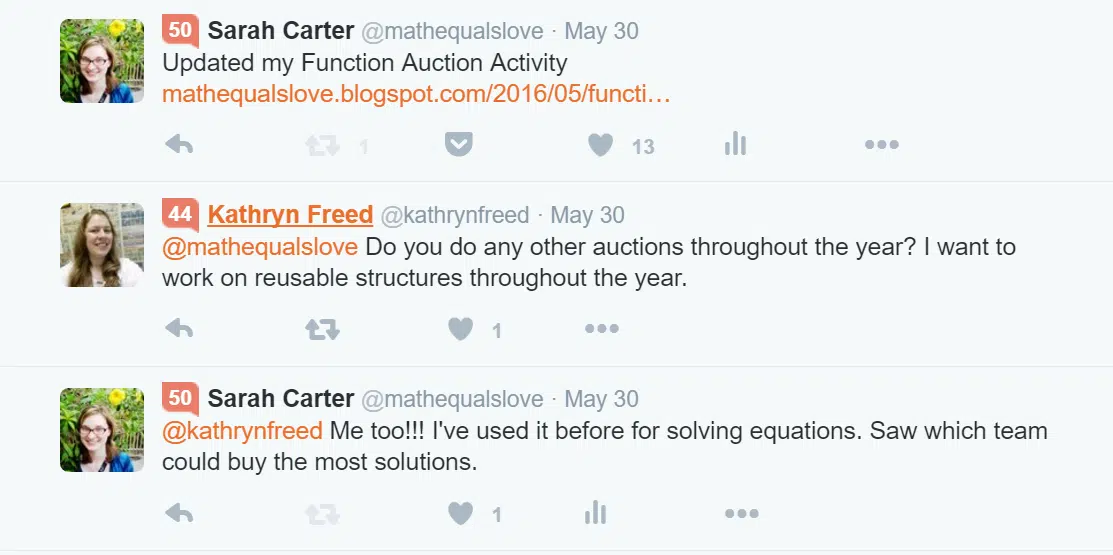
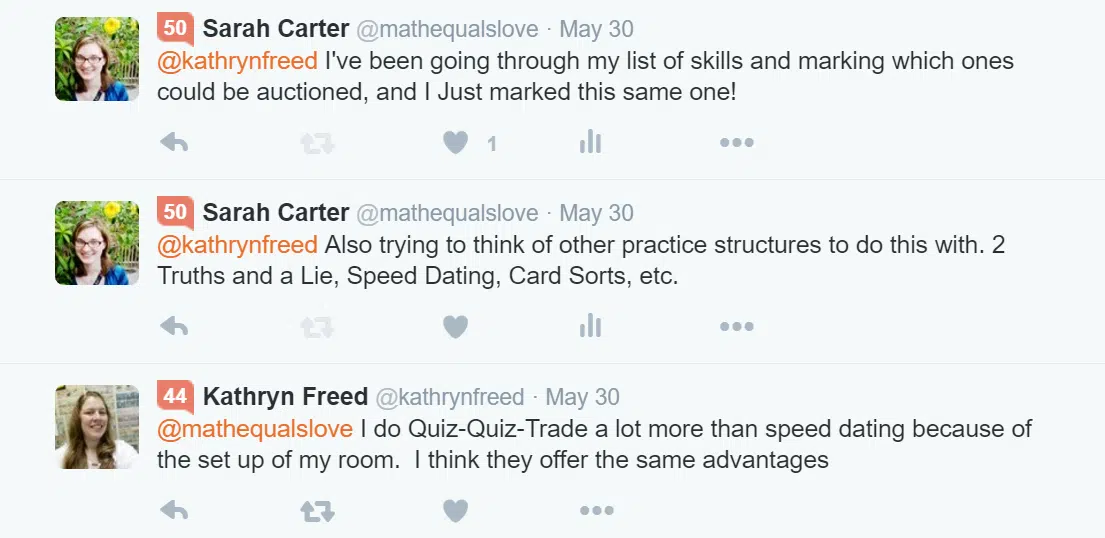
I want to come up with as comprehensive as possible of a list of practice structures that can be used in the math classroom. Then, when I’m (or you’re) looking to create an activity for a particular skill, my (or your) brain doesn’t have to work quite as hard to come up with an idea!
I’ve tried to come up with my own list before, but I know that if we work together, we can come up with a better list than any of us could individually. When I was trying to make my own list, I started wondering about what sorts of categories these practice structures could be sorted in.
Here’s the categories I came up with. For each category, I’ve listed a couple of practice structures that popped to mind. For some of them, it’s hard to judge exactly which category a practice structure should go in. For example, a card sort can be done individually, with a partner, or in a small group. So maybe the categories are arbitrary?
Competitive Whole-Class Activities
- Solve Crumple Toss
- Bingo
- Etc.
Non-Competitive Whole-Class Activities
- Speed Dating
- I Have…Who Has?
- Etc.
Partner/Small Group Activities
- Add Em Up
- Row Games
- Etc.
Independent Practice Activities
- Tarsia Puzzles
- Card Sorts
- Etc.
Want to help by sharing your favorite practice structures? I’ll compile the results (complete with links and descriptions) in a page on my blog for you to reference in the future.
June 6, 2016 – Summer List
Now that it’s June, I’m realizing that I need to set some goals for what I want to accomplish this summer before it’s suddenly August and the back-to-school frenzy begins.
Next week, Shaun and I are keeping busy with math-y things. We’re attending our local math teachers’ circle’s summer immersion workshop Monday-Wednesday. I’m excited for a chance to spend a few days talking math and working through challenging problems with other math teachers. The workshop is at a beautiful retreat, so the scenery will be a treat as well. Plus, the fact that I get to do things like this with my husband is awesome.
On Friday of this week, we’ll be attending the OCTM (Oklahoma Council of Teachers of Mathematics) Summer Conference. I’m looking forward to attending presentations and picking up creative ideas to implement in my classroom next year. I’ll be sure to blog about any awesomeness I pick up!
Another big plan for this summer is to take a trip. Following our wedding, Shaun and I spent a few nights in Oklahoma City (about an hour away from Drumright) with plans to take a “summer honeymoon” once school was out. We’ve confirmed that we still want to take this trip, but we have no idea where we want to go. We *think* we want to keep driving to a minimum, but we also like the idea of spending some time at the beach. Living in Oklahoma means these are quite contrary to one another. So, if you have any great vacation ideas, leave a comment below!
What else do I want to accomplish? I think I’ll resort to a list now since I titled this post “Summer List” and it’s just turning out to be a collection of paragraphs.
* Complete SBG skill lists for each subject I’m teaching next year. [Algebra 1 is done!]
* Write all my quizzes for each subject I’m teaching next year. I did this for Algebra 1 and (most of) Algebra 2 last summer, and it was a HUGE life saver.
* Of course, both of these hinge on this: Figure out what subjects I’m teaching next year!
* Put together a custom planner for next year. [Already in the works!]
* Start reading more! I love reading, but grad school got me out of the habit of reading regularly (unless you count reading educational journal articles about integer operations.) If you have any great book recommendations, I’ll take them, too. Please. [I’m keeping a pinterest board of my recent reads.]
* Decorate and organize my new classroom.
* Put together as comprehensive as possible of a list of practice structures for the math classroom.
* Finish changing my name with the handful of places I haven’t yet.
* Keep blogging regularly. This should encourage me to keep thinking about ideas for the upcoming school year.
* Work on getting into better shape. I downloaded the Runkeeper app last week. And, Shaun has agreed to go running with me. Okay, it’s more like 95% walking, 2.5% running, and 2.5% whining that I’m sooooooooooo out of shape. We went run/walking for the first time on Saturday. It was tough. I complained. A lot. But, I know it’ll get easier the longer I stick with it. A couple of years ago, I made a list of goals that included running a 5k. At this point, I just want to feel more fit and be able to run for more than a minute without collapsing.
* Organize/Declutter my house. After living by myself for almost four years, the process of combining households after marriage has been interesting. I want our house to feel more like “our house” than “my house that Shaun’s moved into.” I think Shaun might appreciate some more closet space, too. 😉
* Try out new recipes. During the school year, I tend to fall back on cooking the same old favorites. I’m always bookmarking new recipes to try. I want to actually try them now! Some recent new recipes I’ve tried: Quinoa Taco Meat, Moist Chocolate Cake (SOOOO good in two layers with homemade whipped cream between and on top and sprinkled with crushed oreos), and Cheesy Vegetarian Chili Mac. There’s also the fact that Shaun got a bread maker for his birthday, so we’re learning how to use that. So far, he’s made a 2 lb loaf of white bread and a 1.5 lb loaf of cinnamon raisin bread. It’s tempting to just eat fresh bread for every meal of the day.
* Come up with a system for keeping up with housework. This has NEVER been a strong suit of mine. I’m a list person, so I think I need to come up with a list that tells me what to do when. Then, hopefully I’ll actually keep up with it. I think I need a list that tells me what to do every single day, what to do once a week, what to do once a month, etc.
I’m sure there’s a zillion things more I want to do this summer. Okay, I’m positive there is. I’m the girl that has a six page long to-do list word document on her computer. But, I doubt you want to hear about my plans to finally getting around to framing my undergraduate diploma and my plans to finally put together wedding photo albums (and an album I bought to commemorate our one-year dating anniversary…)
I’m thinking that I will revisit my progress on these goals at the beginning of July and August to reflect on how I’m doing.
What’s on your summer list?
June 7, 2016 – Math Teachers’ Circle Takeaways #1
Today was the first of three days of my local math teachers’ circle’s summer immersion workshop. Picture a room full of 30 elementary, middle, and high school teachers plus a smattering of university professors in a room exploring challenging problems together. This is my second year attending, and it is an absolute blast.
We had breakfast, two morning problem solving sessions, lunch, and an afternoon problem solving session. The topics we explored today were pentominoes and divisibility, cryptography, and something called polygon differencing.
My goal with this post is to share a couple of my take-aways from today. We had to take a pre-workshop survey, and one of the questions asked about what we felt were our strengths and weaknesses as a mathematics teacher. I listed teaching students to problem solve as a weakness. With this in mind, I kept a page of ideas throughout the course of the day.
Developing Norms
One of my favorite things we did was de-brief after the first session on pentominoes. We were asked to take out a sheet of paper and answer two questions.
1. What characteristics describe a good group member?
2. What characteristics describe a good problem solver?
We took our answers to these questions, shared them in our groups, and then compiled a top 3 list for our group. Then, we compiled our group lists into a set of norms.
Since I am planning to have students work in groups this coming school year, I think I’d like to do some problem solving activities the first few days and develop a set of norms at the same time. These norms could then be posted for students to reference throughout the school year.
Now, I just need to figure out what sorts of problems I want to pose to my students.
Round Robin Strategy
Another thing I quickly took note of as soon as we did it so I wouldn’t forget was a round robin strategy for sharing within our groups. The facilitator provided us with our first problem and told us to work on it independently for 10 minutes. No discussing with tablemates at all. Then, after the timer went off, she announced that we were going to do a round robin. How she approached the round robin really appealed to me. Instead of asking everyone to share what they had come up with, she asked each person to go around the circle and (in less than a minute) share how he/she had originally approached the problem. We weren’t supposed to share what we had discovered in the ten minutes we had been working on the problem. We were only supposed to share our initial thoughts. It was very interesting to hear where everyone in the group had started. This provided insights into how others were thinking that normally wouldn’t be shared because they weren’t polished/proved/or even right.
When I just ask students to share final answers without how they got there, I’m doing a disservice to my students. This reminds me of the book Making Thinking Visible which I read in early 2013. I pulled it back out this week and started it again.
Looking forward to sharing more takeaways soon!
June 11, 2016 – Math Teachers’ Circle Takeaways #2
Originally, I’d planned to blog after each day of the math teachers’ circle summer immersion workshop. But, it turns out that driving one hour to the workshop, spending eight hours doing and talking math, and driving one hour home makes for a satisfying but exhausting day!
Giving Rules is Tricky
On the second day of the workshop, we were introduced to a game known as The New Eleusis. The game was shared by Martin Gardner in Scientific American, but he did not invent the game. We were given an 11 page handout including rules of the game, but our facilitator said he would demonstrate how to play the game so we wouldn’t have to read the rules packet. We were invited to join around one table where we would watch a game and learn the rules of the game.
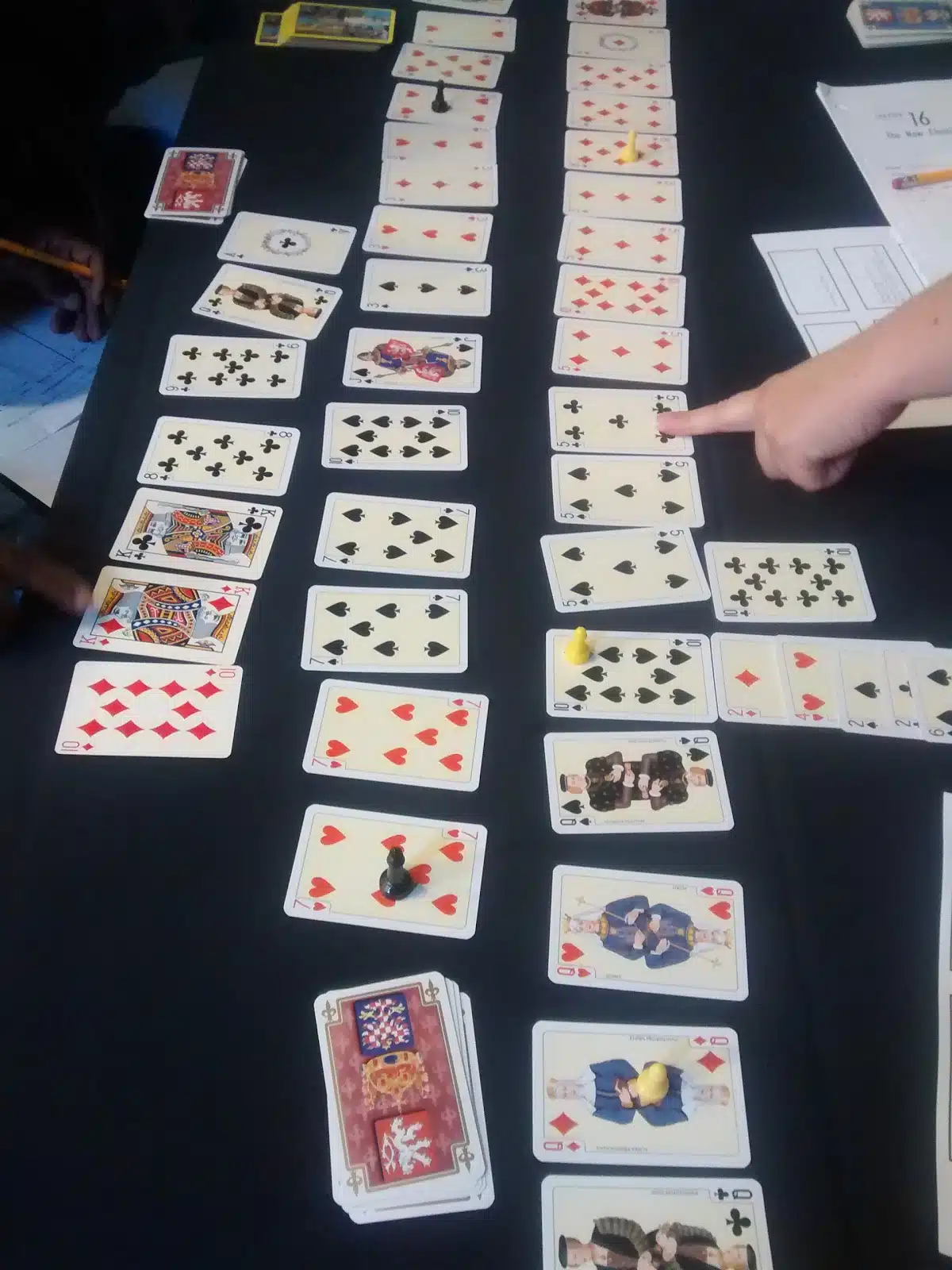
The first thing I noticed is that I get very frustrated when I’m given a bunch of rules to learn, but I don’t get to practice them right away. Trying to see over other people’s heads to watch a game that was going on is NOT the same as getting to play the game myself. How often do I do this to my students, though? I give them steps to solve a problem, then we talk about those steps, we write those steps down, and then maybe finally they watch me do a problem following the steps. They must feel exactly like I did while watching others play this game. Another thing that was great food for thought for me was the fact that group we were watching started playing the game without knowing all of the rules. The facilitator had the first person in the group play a card without telling them what type of card they should play. As game play progressed, more rules were given out. Starting to play a game without knowing all of the rules made me feel very uncomfortable. I’m still not sure how this applies to the classroom environment, though. The game turned out to be fun and challenging, but it took soooooooooooooo long to learn how to play the game that I’m not sure it is worth it. John Golden has created a version of Eleusis called Eleusis Express that makes the game shorter and easier to play and understand. I haven’t played this version yet.
Don’t Fill in all the Blanks
At the workshop, we were given a list of problem solving strategies in the back of our folders. The first thing I noticed was that not all of the problem solving strategies were filled in. In the past, I’ve been quick to hang up a list of problem solving strategies on the wall or on a bulletin board. What I should really be doing is letting students develop their own list of problem solving strategies. As students use different strategies, we should post them in the classroom as a reminder.
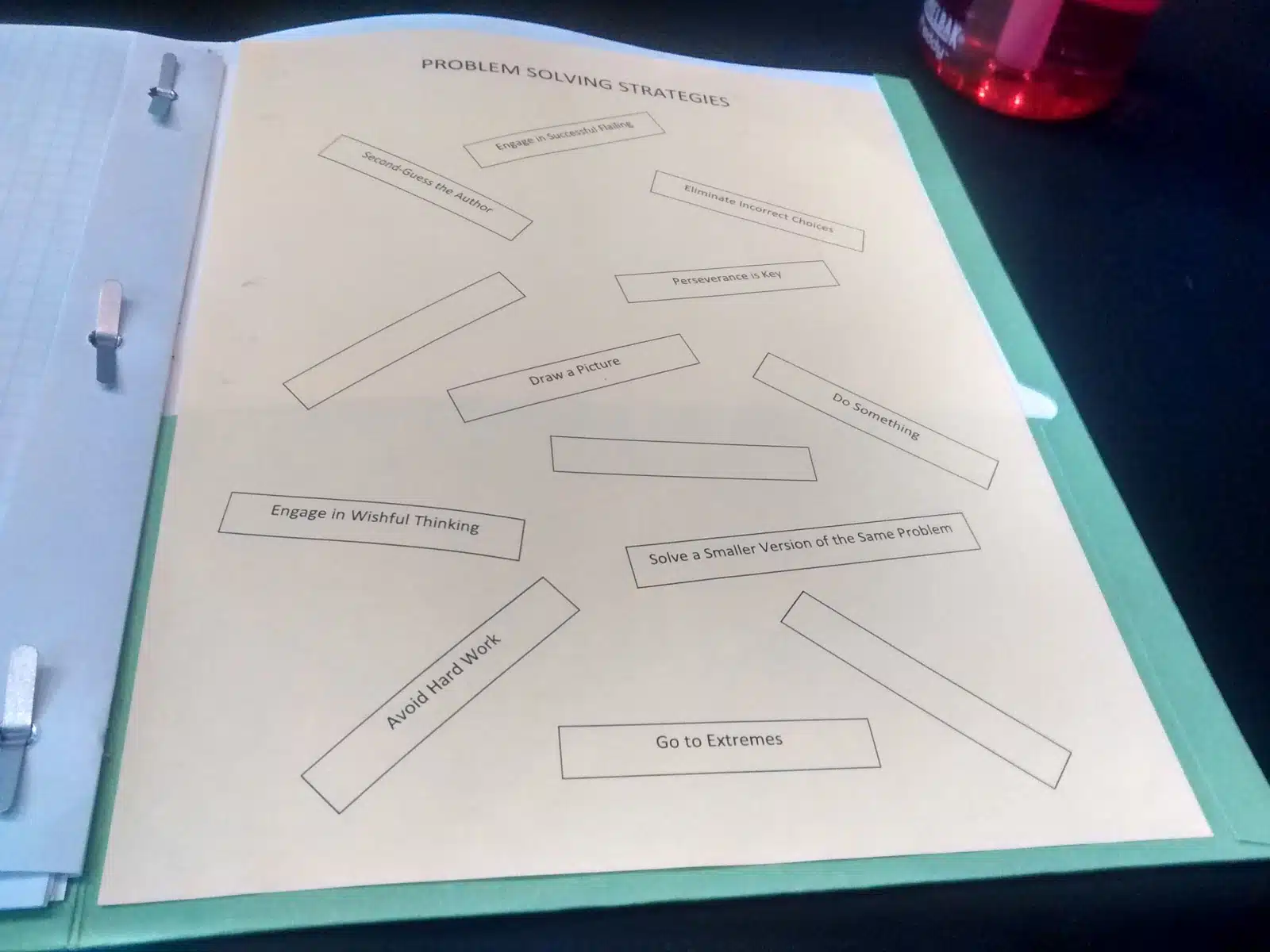
Let Students Create Their Own Examples to Test Conjectures
The first activity we did with the Four Color Theorem was to try and color a map of the western United States with as few colors as possible. I thought the use of pieces of chopped up colored card stock was brilliant with this activity! Of course, we had to ignore the east coast since it was too small for our small pieces of paper. Our facilitator said he uses giant posters of the entire United States when using this activity with kids so can still used the small pieces of paper.

This was a fun activity, but the twist I really liked was when he asked us to take a ruler and draw our own maps to color. We had to start by drawing five lines randomly from edge to edge on our paper. Then, we figured out the fewest number of colors we could use to color the regions. Then, we addeded a sixth line and repeated.
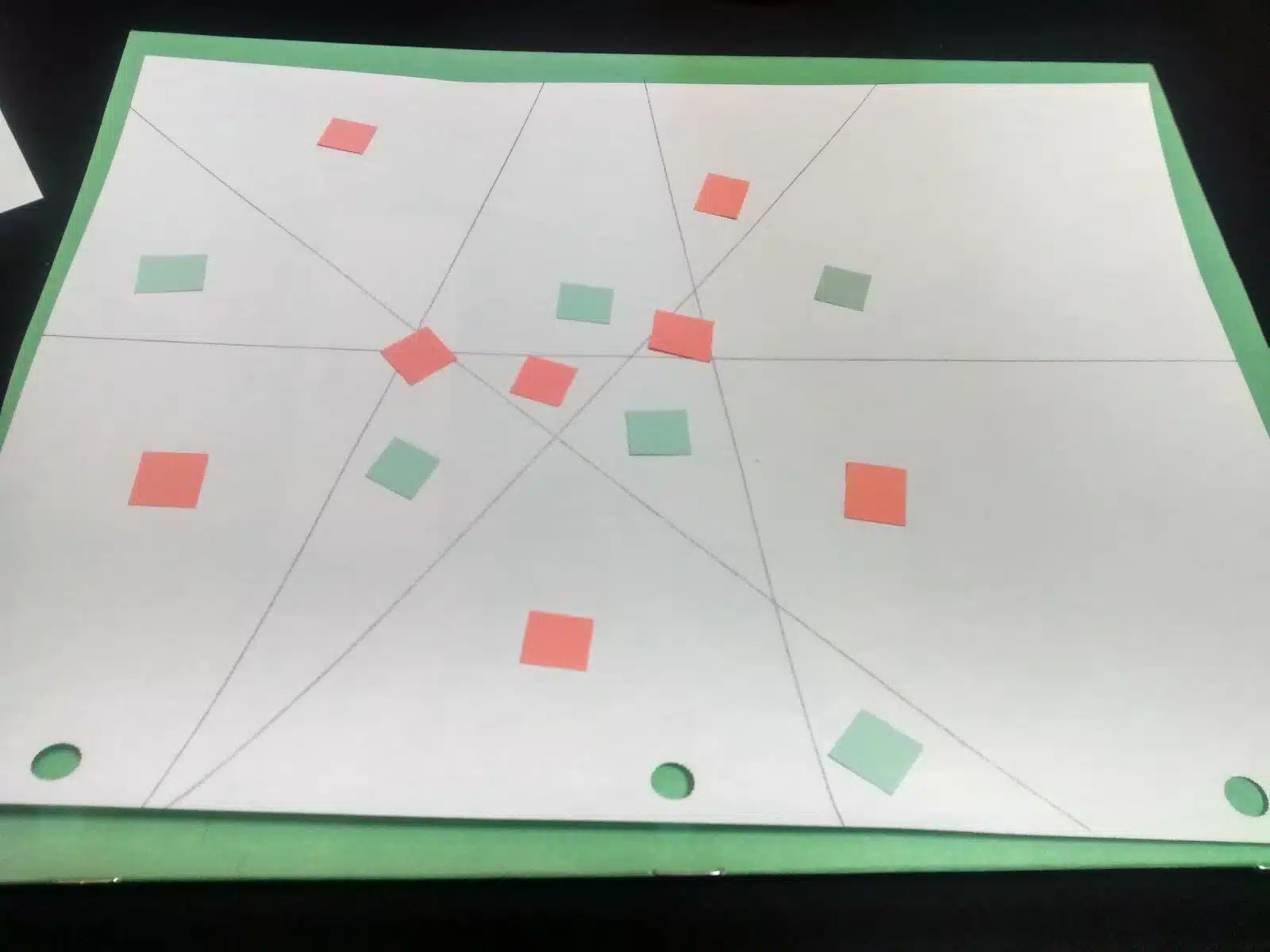
I think I do a lot of activities like the first map in my classroom. I don’t do enough activities were I let my students test the conjectures on their own examples as in the second map.
Life is Better with Pi Shaped Cookies
No further explanation necessary.
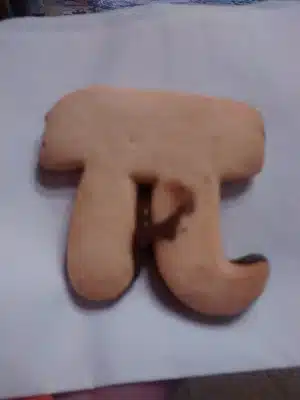
June 16, 2016 – OCTM Recap: High Yield Geometry Routines
Last week, Shaun and I were able to attend the Oklahoma Council of Teachers of Mathematics Summer Workshop at OSU-Tulsa. We attended some great sessions, and I’ve decided that the best way to not forget what I learned is to blog about it! Over the course of the next few weeks (months?) I want to write a blog post about each session we attended and what I think were the major take-aways.

The first session we attended was on high yield geometry routines, and it did not disappoint! The idea of a “high yield routine” interested both of us, and we think Shaun will be teaching geometry next year.

Dr. Utley wasn’t able to be there, but John Weaver did an excellent job demonstrating and engaging us in the high yield routines. He recommended the book High-Yield Routines from NCTM. When I looked it up after the conference, I was sad to see it was directed at K-8. I haven’t purchased it (yet) because of that reason. Is anyone familiar with it to know if it can be applied to high school?

First, we heard a bit about what high yield routines lead to in the classroom.
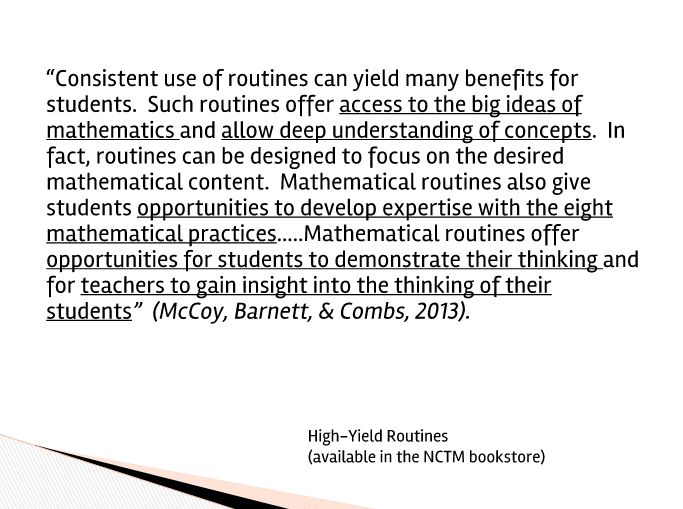
Here were my main take-aways (as told by the furious notes I was taking during this session!)
- High yield routines must be used early and often to be most effective.
- High yield routines should be used in class from day one.
- High yield routines offer access to the BIG ideas of math.
- High yield routines offer a deep understanding of concepts.
- High yield routines should be used to build your classroom environment.
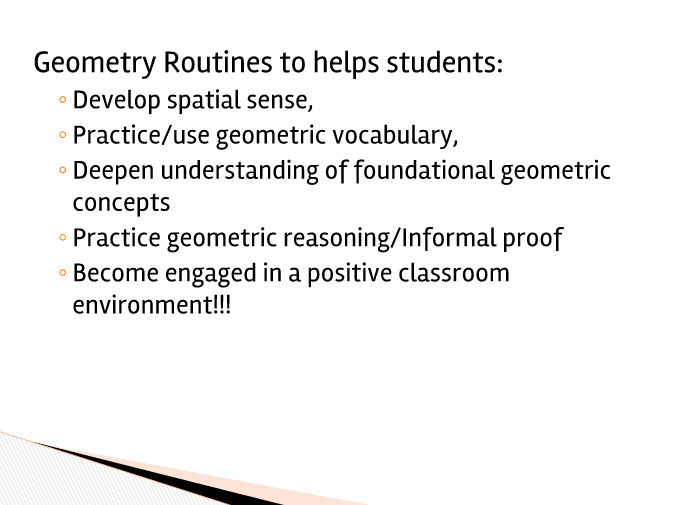
John also made an analogy that I found very thought provoking:
Estimation is to Algebra as Spatial Sense is to Geometry.
My first instinct was to think that we don’t do that much estimation in algebra. But, then I got to thinking about how I get SO frustrated when my students arrive at an answer without checking to see if their answer is even reasonable. I need to have my students do more estimation. I need to build this into my classroom as a routine.
In regards to vocabulary, I especially liked John’s quote: “Vocabulary is the hill I’ve chosen to die on.” I need to do a better job in my classroom of ensuring that students both value and use proper vocabulary. I haven’t done a word wall in a few years, so I’m wondering if this should be part of my initiative again?
Okay. Enough of my random thoughts for things I need to do a better job of next year. Are you ready to learn about these high yield geometry routines?
This idea is based on the book Quick Draw by Grayson H. Wheatley. The teacher’s job is to flash an image on the screen for three seconds. Then, when the image disappears, the teacher tells students to “draw what you saw.” It sounds simple, but seeing it unfold in person was powerful. I looked over at Shaun’s notes after we did our first Quick Draw activity, and he had written “Do this!!!”

Here are some much more detailed directions:
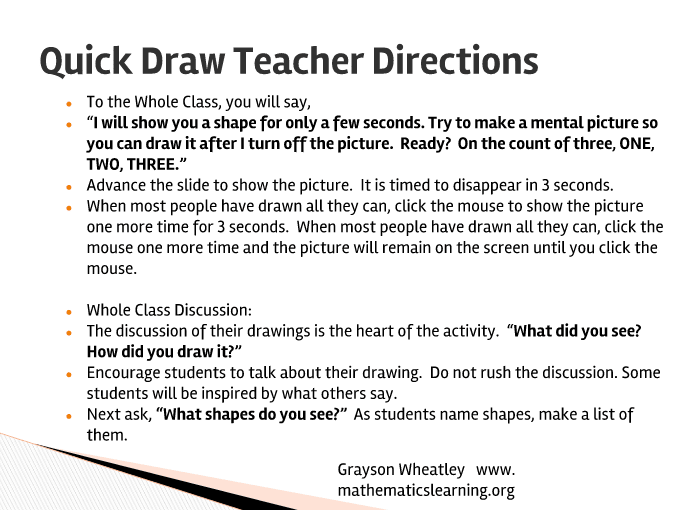
Here’s the first quick draw image we were asked to draw:
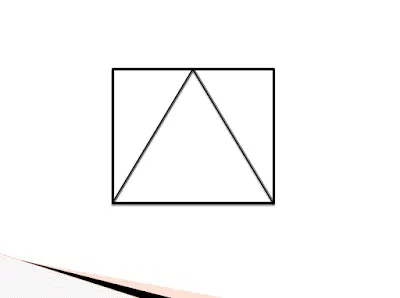
After seeing it on the screen for 3 seconds, I was able to easily draw it in my notes. I didn’t need the extra 3 seconds to look at it again. Instead, I just sat there thinking “How in the world could I use this in algebra class?”
What really got my attention was when John started asking people to describe what they had saw and drew. The things I was hearing others describe was not what I saw at all! I had seen a square with a triangle inside it that had a vertex at the midpoint of the top line on the square. Other people were describing how they had seen an equilateral triangle with two right triangles formed from the sides of the equilateral triangle. When I realized that different people can see the same image very differently, I began to see even more potential for using this in the classroom!
One more thing about the equilateral triangle thing – this led to an awesome discussion about whether the surrounding shape was a square or a rectangle and if we could prove it. So much math talk about of a simple one minute task!
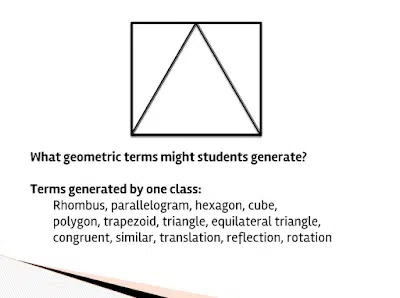
So, I’m sitting in this workshop feeling kinda silly because I should have realized that different people might see the same image differently. Then, we do another one:
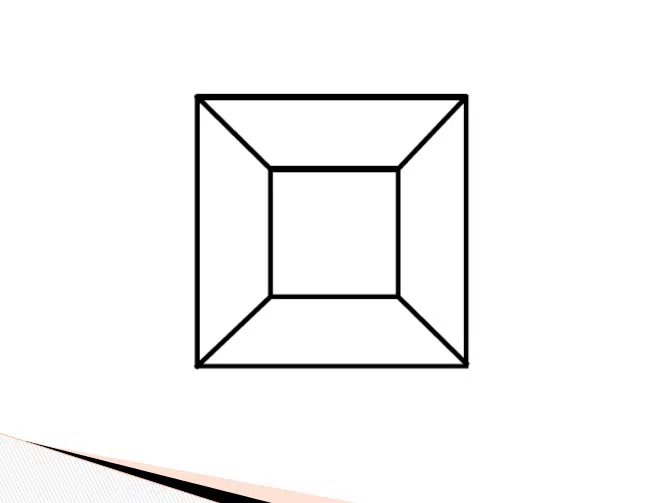
Again, I’m able to draw it easily on my paper. I see a small square inside a larger square with straight lines connecting the vertices of the small square to the corresponding vertices of the larger square. Then, the facilitator starts asking others to describe what they saw. I’m blown away when others start describing seeing 3-D objects. One lady saw a “room.” Another lady saw a truncated pyramid. Yet another person saw a lamp shade.
The book Quick Draw has a collection of these images to use. Here is a sampling:
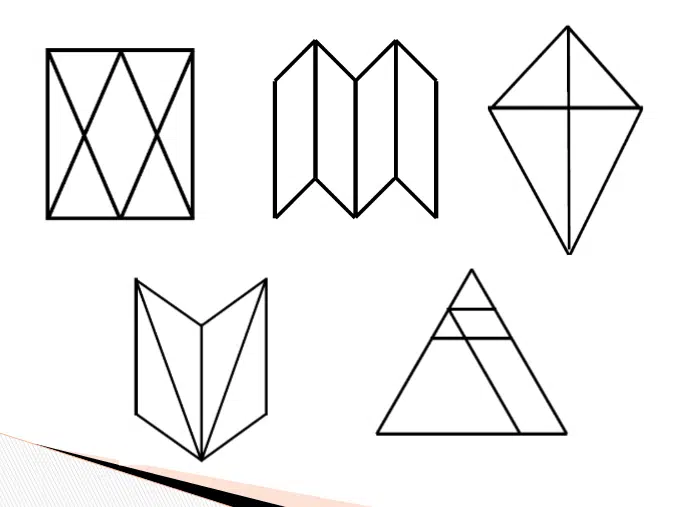
And, here were some of the benefits of this high yield geometry routine:
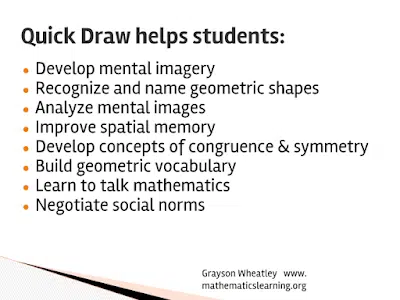
I did some searching online and found a few more sources of quick draw images if you want to try them out in your classroom before investing in the book.
- A summary of Quick Draw by the author featuring:
- Journal Article Including Several Quick Draw Images
- NCTM Article About Quick Draw
I was so impressed with how much geometry vocabulary and math talk came out of this simple routine. I can definitely see how this is an activity that can be used throughout the year to gauge how students’ vocabularies and spatial senses are developing.
After discussing Quick Draw, two tweaks to the activity were suggested:
1. Have students construct the image on a geoboard. This would make it easier to discern between squares and rectangles.
2. Instead of asking students to describe what they saw, have a student describe to the teacher how to draw the image on the board.
Quick Build
We also talked about a variation of Quick Draw known as Quick Build. When we had entered the room where the workshop was, we had been given a set of 5 snap cubes. We were all immediately curious about what the snap cubes might be used for.
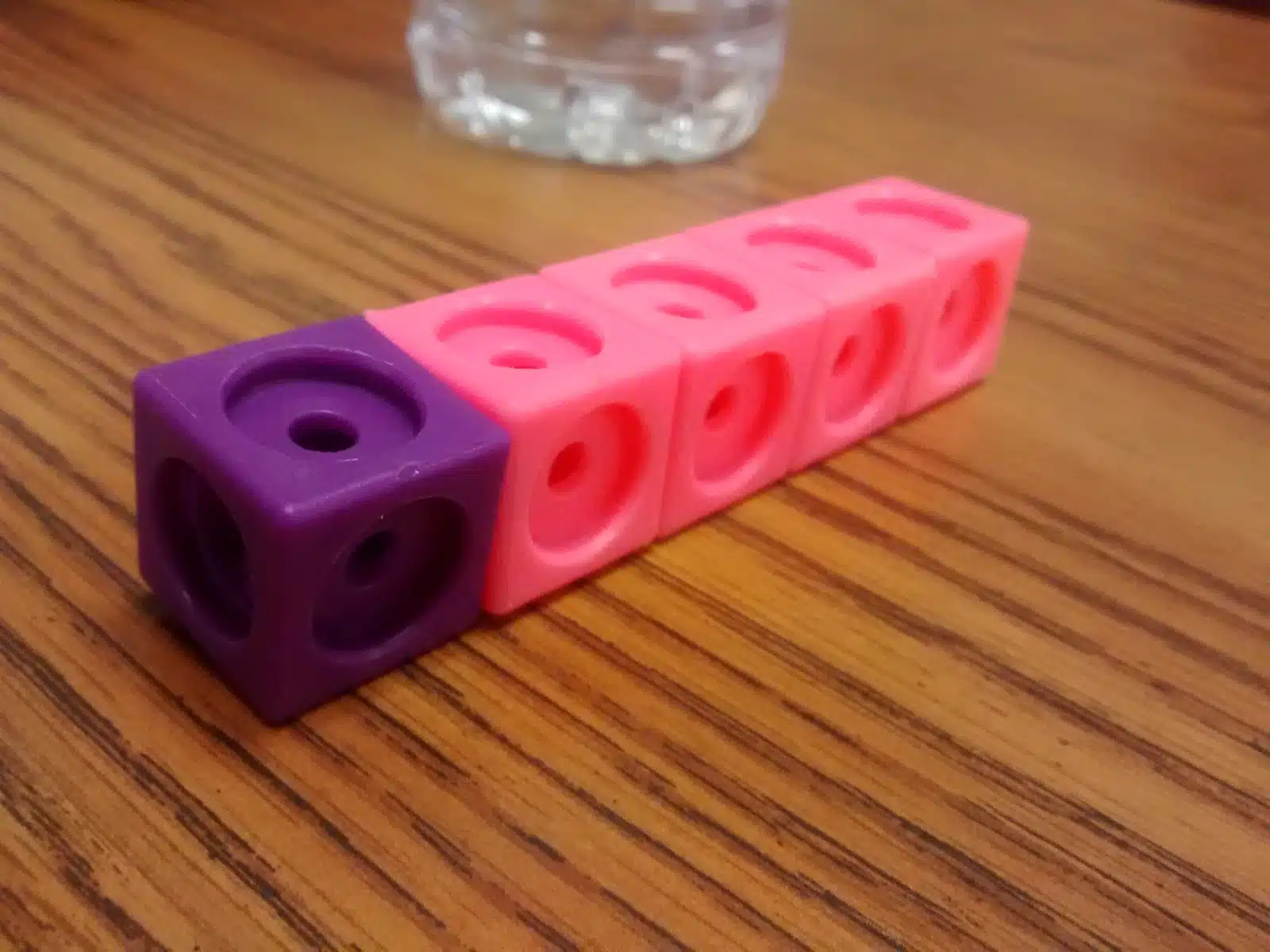
Here’s the type of image that would be shown to students during a quick build session:
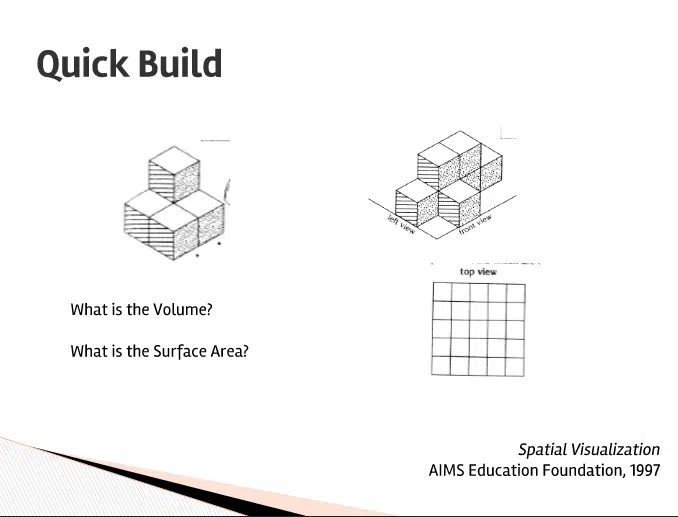
Just like with Quick Draw, the object (or picture of it) will be shown to students for 3 seconds. Then, it will be taken away so they have a chance to draw it/build it. Show students the image for another 3 seconds for them to fix their drawings.
You have several options with Quick Build:
- Have students recreate the 3-D figure using Snap Cubes
- Have students draw the 3-D figure using Isometric Graph Paper
- Have students draw the “top view” of the figure.
- Have students determine the volume of the figure.
- Have students determine the surface area of the figure.
I’m sure there are many other options, but these are the only ones we discussed.
Fold-N-Cut
I’m really sad I didn’t think to take any pictures of this activity while it was being presented. So, I’ll try to explain it to the best of my ability.
Hold up a sheet of paper to your students. Fold it in half with the top edge of the paper coming down to meet the bottom edge of the paper. Whenever you do this activity, the fold should always be at the top.
Take a pair of scissors and cut the folded paper. Our facilitator cut a triangle off one corner, a square out of the bottom, and a quarter-circle out of another corner.
Then, it was our turn.
Draw what the paper would look like when it was unfolded.
We repeated the activity with a paper that had been folded into fourths.
We were warned to NOT ask students to share strategies with this activity. Some students will discover that they can simply draw what the folded paper looks like and then perform a reflection/rotation of that image to end up with what the unfolded paper will look like. While this is awesome, once students start doing this the activity will lose a lot of its charm.
Where’s Polygon
Another activity we discussed was called “Where’s Polygon.” I’ve included the instructions from the presentation below, but here’s the general gist of it.
Display a blank coordinate plane for students to see. At the conference, this was done with a document camera. If you have access to a projector, you could use different colored dry erase markers on the board. If you have a SMARTBoard, just project the coordinate plane on there.
Before beginning, have a specific polygon in mind – exact coordinates!
Your color coding will feature four colors. One color for points outside of your polygon. Another color for points inside of your polygon. Yet another color for points on the edge of your polygon. And, a final color for the vertices of your polygon.
As students call out ordered pairs, color them accordingly. This continues until all the vertices of the polygon are found.
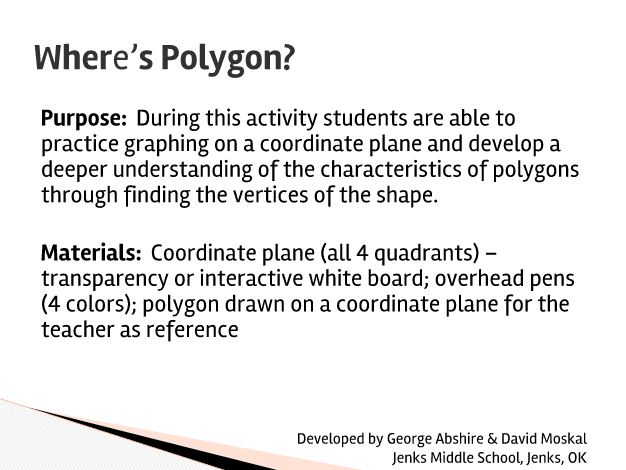
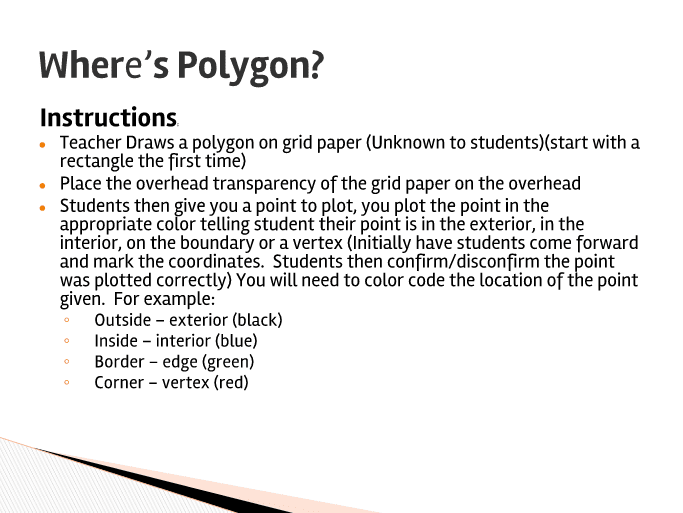
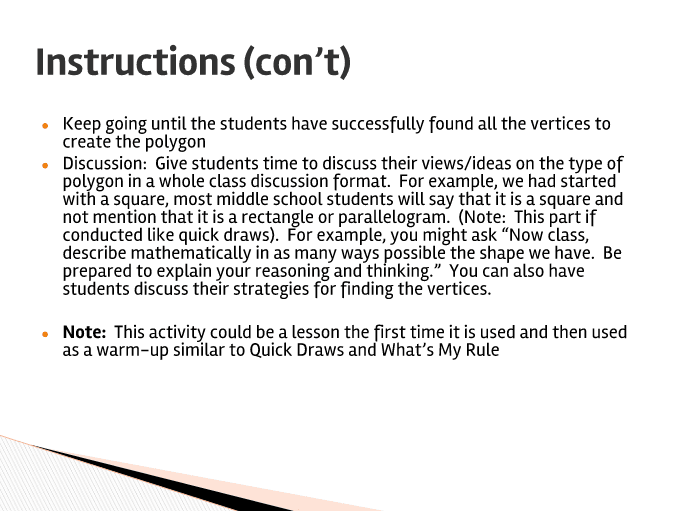
Now that circles have moved to the Oklahoma geometry standards, I think it would be fun to throw a circle into this activity to see how students react. Of course, a circle isn’t a polygon, so that would be a bit mean… I see such potential for this routine to grow with students throughout geometry class.
Guess My Rule
This activity pulls from an awesome problem found in Michael Serra’s Discovering Geometry text. Students are given a set of images that are examples of widgets and a set of images that are non-examples of widgets. Then, they are asked to determine if other images are or are not widgets.
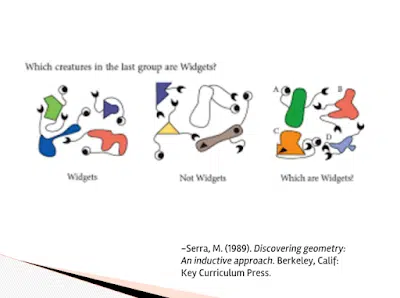
Next, we saw how we could use polygons to make our own problems like this.
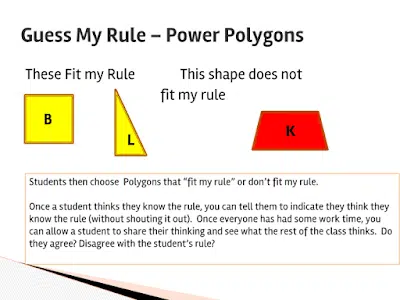
Sadly, I never got to figure out what John’s rule was because we ran out of time.
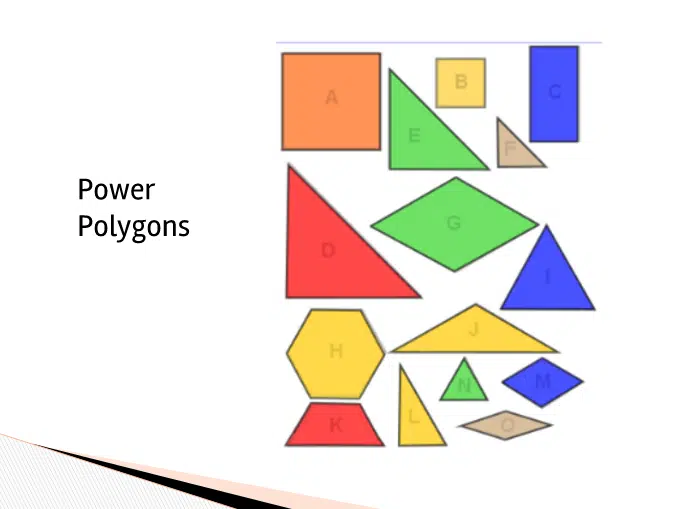
There were a few more routines in the presentation that we didn’t get a chance to get to, so I’m afraid I don’t have all of the details. There were slides for them in the original presentation, but I had trouble filling in the missing pieces myself. You can find the entire presentation here (open the folder titled High Yield Geometry Routines).
June 17, 2016 – Function Activities from CPM Workshop
Today I’m sharing some fun function activities. This is my second blog post recapping sessions Shaun and I attended last week at the Oklahoma Council of Teachers of Mathematics Summer Conference. Be sure to check out my previous post on High Yield Geometry Routines!
The second session we chose was called Fun Functions by CPM.

Here are the function activities we learned about.
The Bug Problem
We began the session by checking our understanding of what a function is. I took a picture of the PowerPoint slide, but it didn’t come out readable at all. So, you’ll have to put up with my re-creating the slide in Microsoft Paint…

I was shocked at just how many teachers in the room voted that this was most definitely not a function. Then, I started thinking about what my students would say if I gave them this question. The thought was not pretty. My kids need to know more about functions than just the vertical line test!
Function Machines
The first activity we did was to order function machines.
Here were our four functions:

Of course, they were printed on function machines and laminated for durability. (And, for the record: laminated papers are really hard to photograph in a bright classroom!)
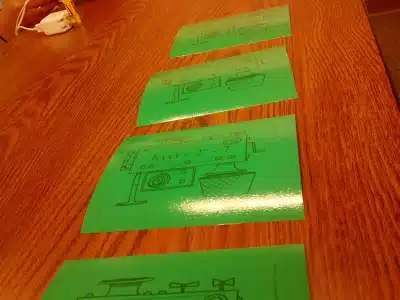
CPM has posted these function machines as a free PDF on their website if you’re interested.
Our task was to arrange the functions so that when a 6 was dropped in the first function machine that the last machine’s output would be 11. This led to some good conversation in our group about which functions couldn’t be last.
CPM also has a PDF version of this activity with an easier set of functions that I ended up using with my Algebra 1 students. I blogged about my experience with this function machines activity.
Silent Board Game
Next, we moved on to an activity called silent board game.
When we entered the room where the session was held, this laminated sheet was taped to the wall:
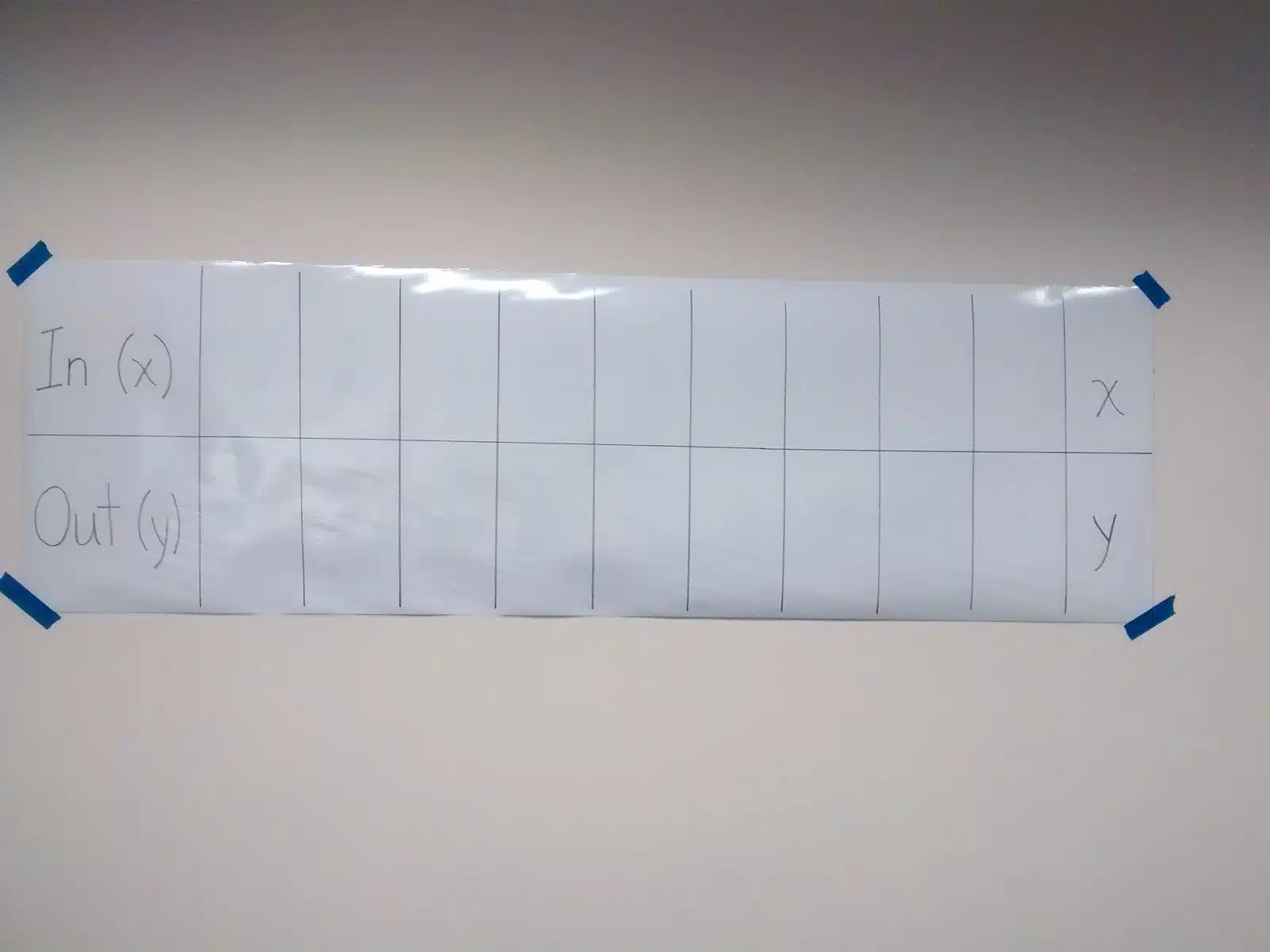
The idea is that the teacher puts up an incomplete input/output table.
Here’s the one we used in our session:

I got this image from page 8 of this file from CPM that features several pre-made Silent Board Game tables.
As we played the game, I realized it truly was a silent board game. The facilitator would hold up her dry erase marker until someone raised their hand. Then, she would hand them the dry erase marker. They would walk to the board and fill in an output value. If the output value was correct, there would be silence. If the output value was incorrect, there would still be silence. But, the teacher would walk to the board and erase the incorrect value.
This continued until the board was filled. Then, we moved on and silently filled in the rule for the function and the functions’ growth rate.

I’m honestly not sure how this activity would play out in my classroom. Would my students stay silent and engaged the entire time???
One participant in the session suggested a tweak to this activity: have a graph where students plot each point after adding it to the table. This could help students see if the function was linear, exponential, etc.
Function Walk
After the Silent Board Game, it was time to get out of our seats and do a function walk. Our facilitator suggested that this was a great activity to get students outside. If doing it outside, she suggested that we could draw the axes of our coordinate plane with chalk.
Since she works for CPM and does this presentation frequently, she had taken two rolls of ribbon and written the values on them to serve as axes. I thought this was quite ingenious!

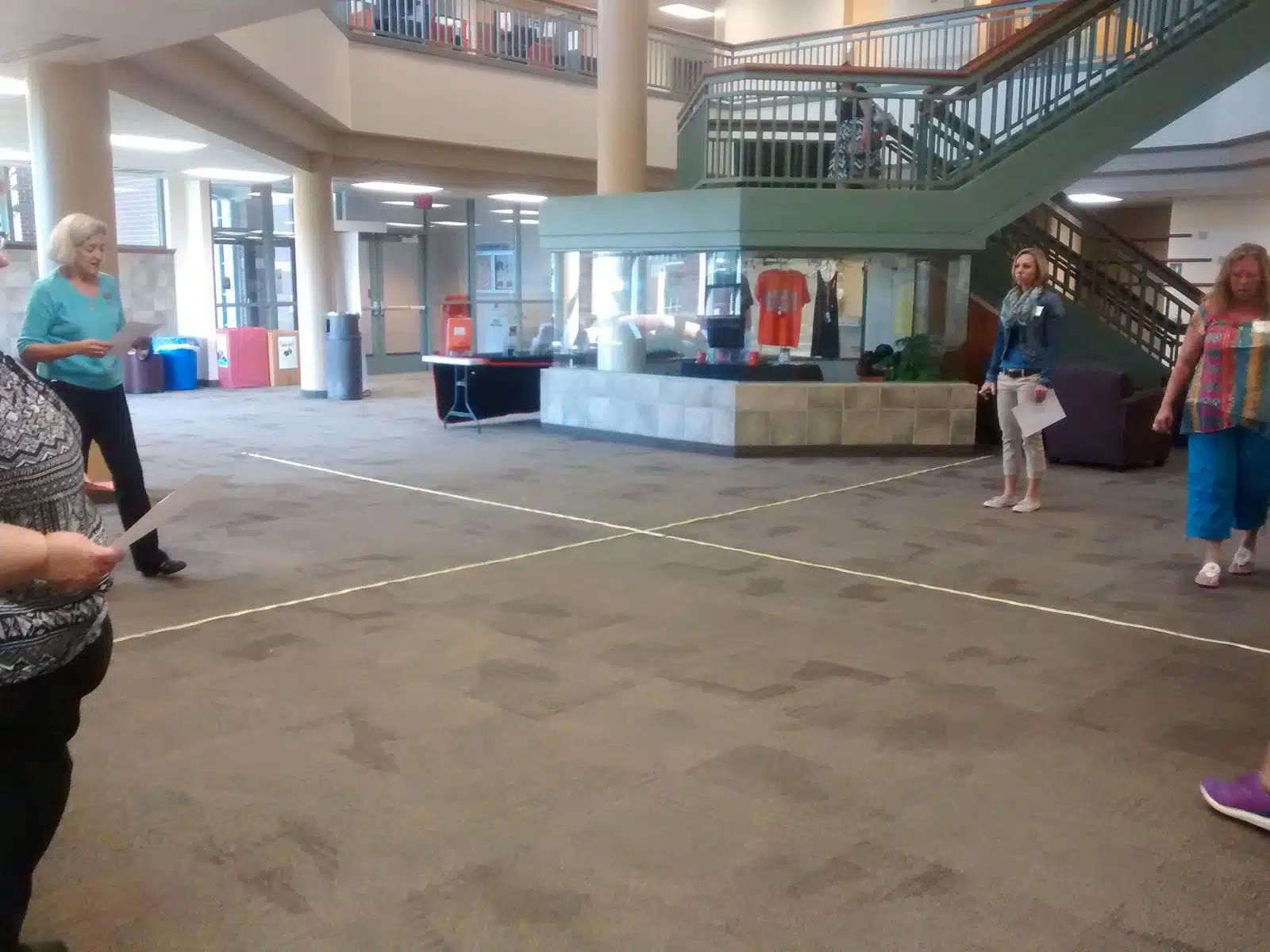
We were each given a laminated index card with an input value filled in. Different people received different colored index cards. I was in the red group.
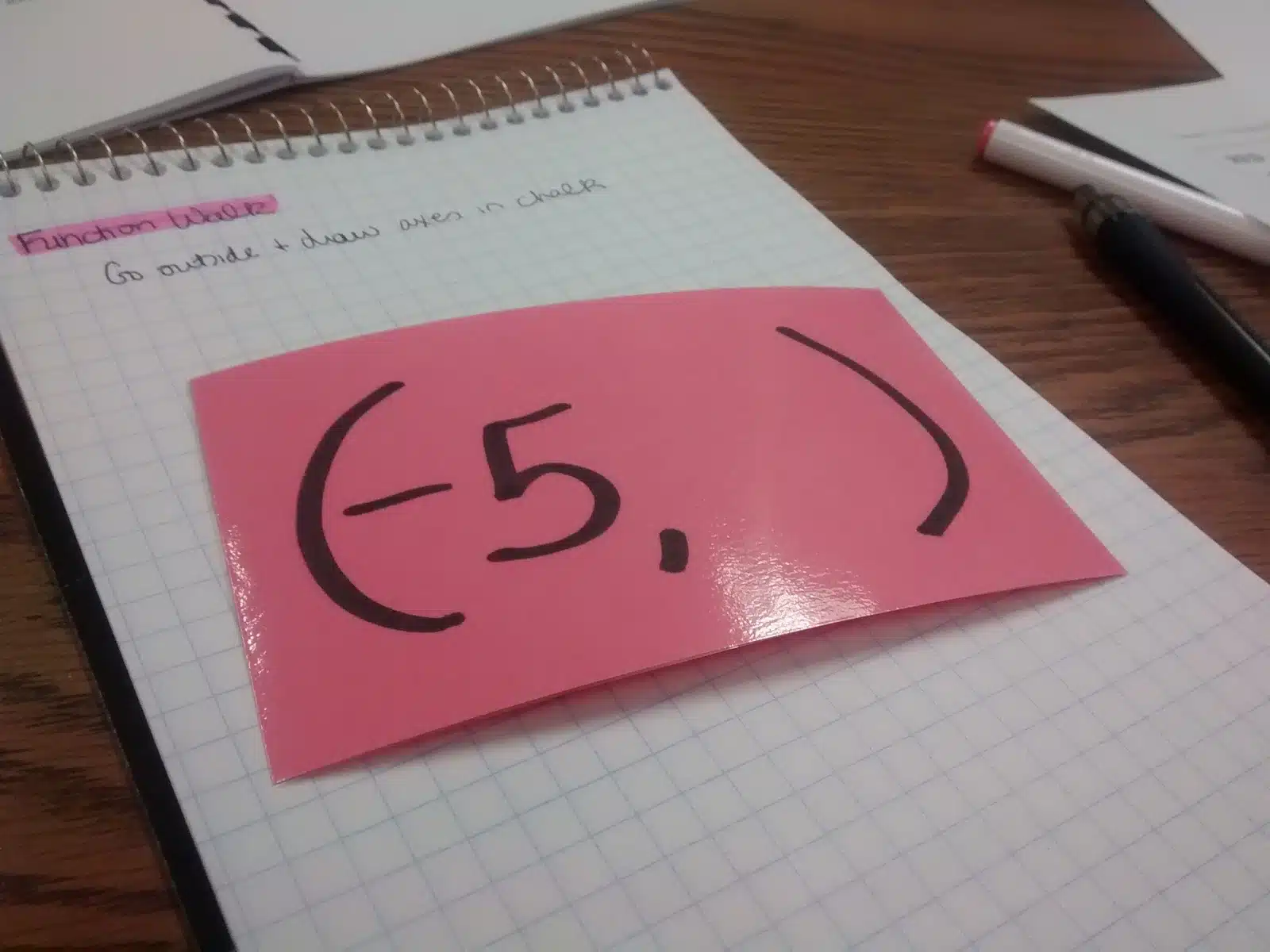
The purpose of the color-coding became clear when we got our handouts. As a person with a red card, I would be helping to graph the equation y = 2x + 1.
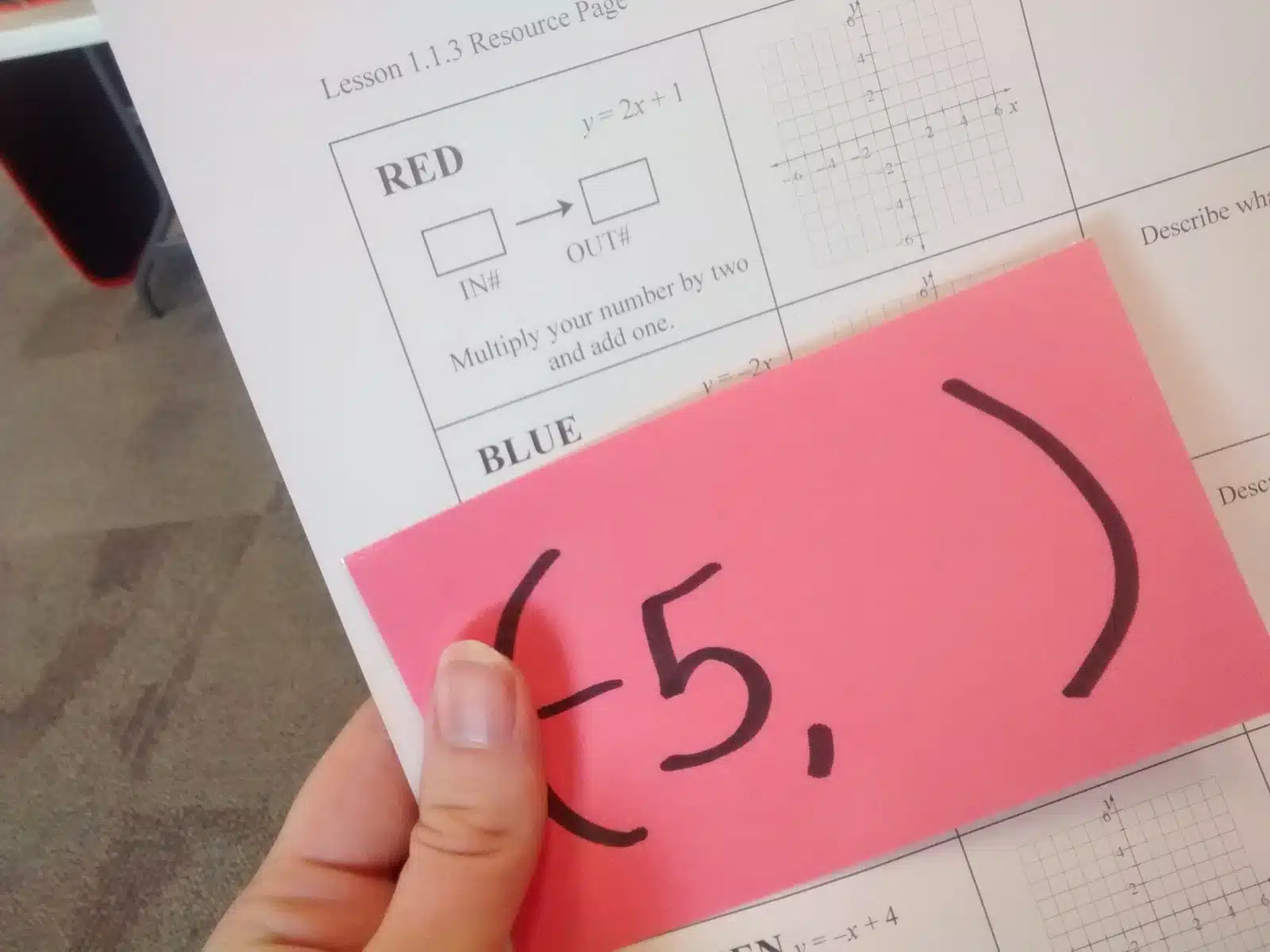
We took turns graphing different functions.
Here’s my spot on the x-axis before we moved to our appropriate spots.
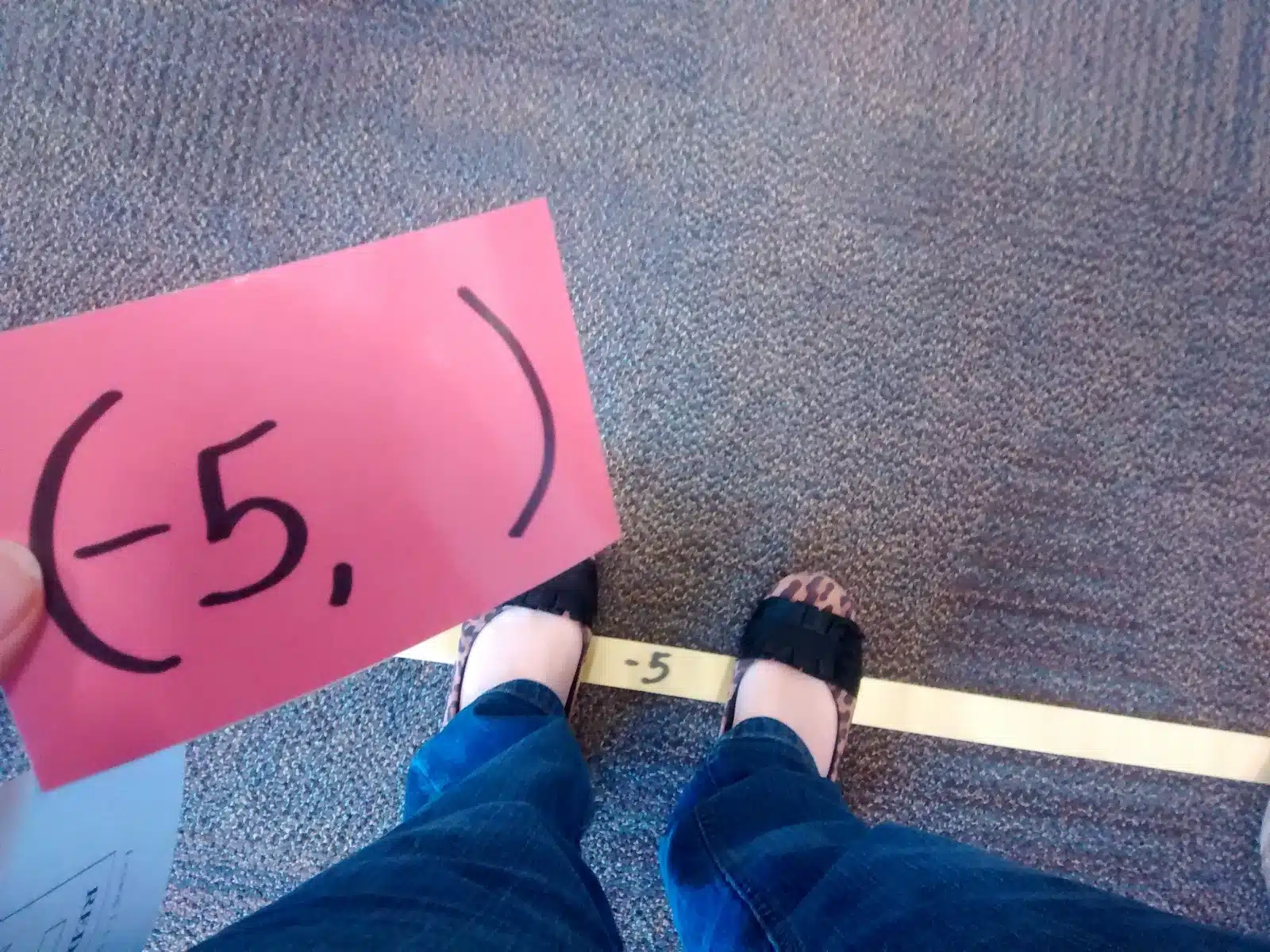
And, here’s a picture of the rest of the red group in action:
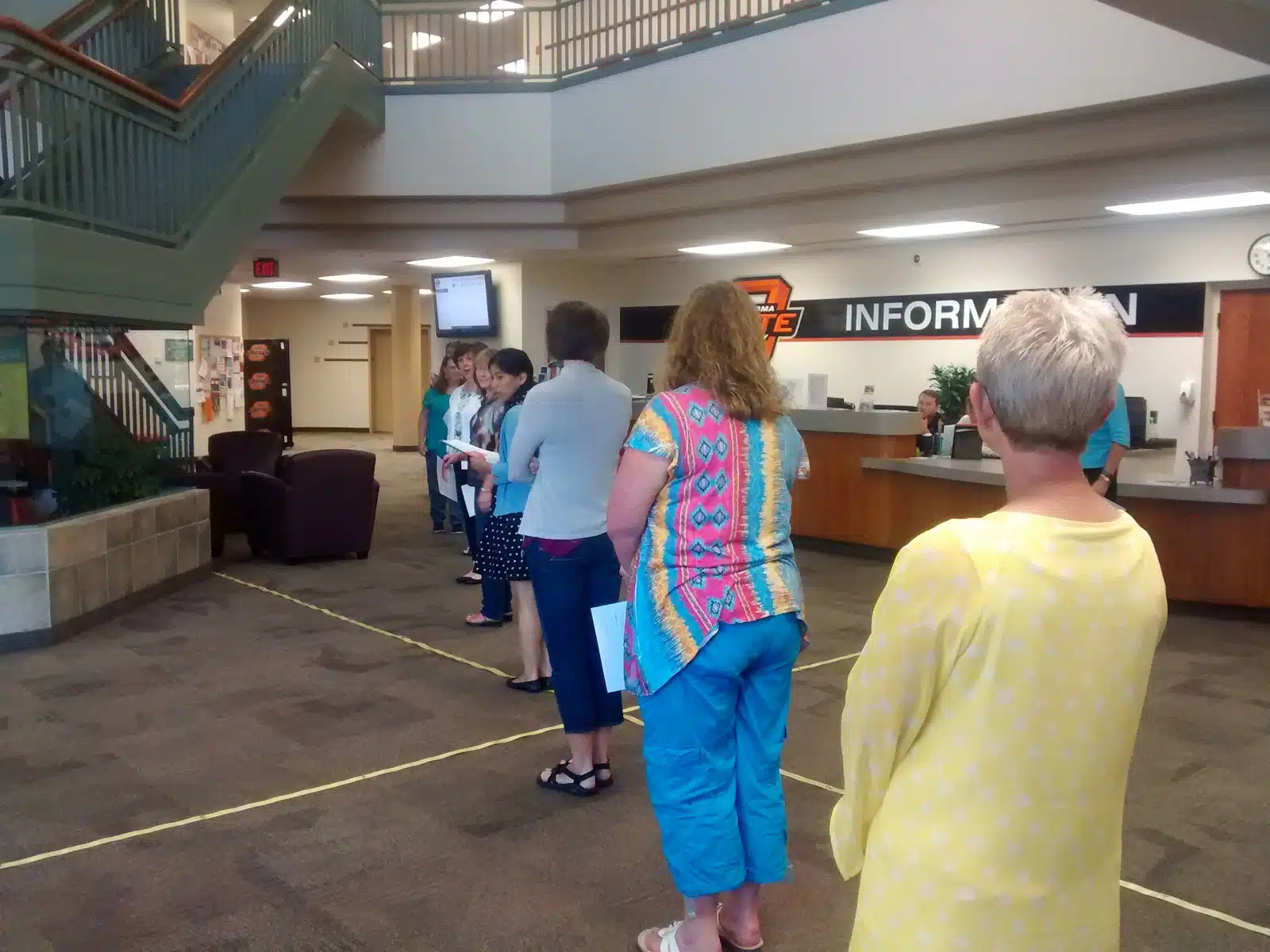
I like the idea of doing this sort of kinesthetic graphing activity with trig functions!
Link to Download All Function Activities from the Fun Functions Session
There were several other function activities in the handout that we didn’t get to. A copy of the handout for this presentation can be found here.
June 18, 2016 – 15 Ideas for Taking the Practice Out of the Worksheet
For the past few days, I’ve been recapping various sessions that Shaun and I attended at the Oklahoma Council of Teachers of Mathematics Summer Conference. So far, I’ve recapped High Yield Geometry Routines and Fun Functions. Today, I want to share what I learned from a session called “Taking the Practice Out of the Worksheet” by Judy Schwarz (her name is misspelled below). There are SO many good ideas in here! Apologies in advance for the picture overload that this post is sure to become!

I guess I didn’t read very carefully because I didn’t realize this was a geometry session. Thankfully, even though a lot of the ideas are for geometry, they can be modified for any math classroom. The facilitator just happens to teach geometry, so that’s what form most of her ideas are in.
If…Then Posters
The first idea that Judy shared was to have students make “If…Then” posters at the beginning of the school year. She said she often has students do this before they’ve ever even talked about conditional statements. If I remember correctly, she usually has students complete this as homework. But, if you have access to a stack of magazines, you could even have students do it in class during the first week.
Here are some examples of if…then posters she brought to show us:

And, here are my interpretations:
If you eat spicy food, you need to brush your teeth.

If you own a lot of dogs, you have to buy a lot of dog food.

If you get caught drinking and driving, you will end up in jail.

The facilitator said she hangs these up around the classroom for instant decorations. Then, when they begin the unit on conditional statements, she has students work problems from the posters made by their students instead of from the problems in the textbook. Students will have to pick a poster from the room and write the converse, contrapositive, etc. By starting with real-life examples, students are more engaged. Eventually, they do move on to the problems in the textbook.
I love this idea, and it kinda makes me sad I’m not teaching geometry…
Stump The Teacher
Next, Judy shared an activity she uses occasionally with her students: Stump the Teacher. It goes as follows:
- Give students a textbook section to read. Set a timer.
- When the timer goes off, the teacher closes his/her textbook.
- Students take turns asking the teacher questions that could be found in that textbook section.
- If a student is able to stump the teacher, he/she gets a small prize. (Judy says she gives 1 point extra credit when a student is able to stump her.)
- After the teacher feels like she has an idea of the students’ understanding of the concept based on their questions, the tables are turned. Now, the students close their textbooks and the teacher starts calling on students to answer questions.
This activity gets students reading and re-reading as they try to formulate questions to ask. Students need to think about what the main ideas of the lesson are and what common sources of errors might be. The teacher makes sure to pull out important ideas not brought up by students when it is his/her turn to ask questions.
A quick google search led me to another more thorough explanation of this activity.
I don’t use textbooks in my classroom, so I’m not sure how I’d apply this structure to my classroom. If I could find an interesting article that relates to a topic we are studying, I might could see myself using this structure to ensure that students actually read the article. Hmmm…
Top Ten List
At the end of a chapter or unit, have a students make a list of the top 10 things they learned. This could be done as a homework assignment, or you could give students a few minutes in class to complete.
Then, put students in groups. They must each read their top ten list to the group and compile a top five (or top three) list that is agreed upon by all members of their group.
Judy claims that this simple activity gets kids talking about math and justifying their answers. The discussion helps kids really concentrate on what the key ideas of the unit were.
Remember my interactive notebook dividers for next year? I’m already thinking about replacing the bit with the pretty picture to be a place for them to record their top ten list.
Around the World
This is an idea I’ve used in my own classroom, but I’ve always referred to it as a “Scavenger Hunt.”
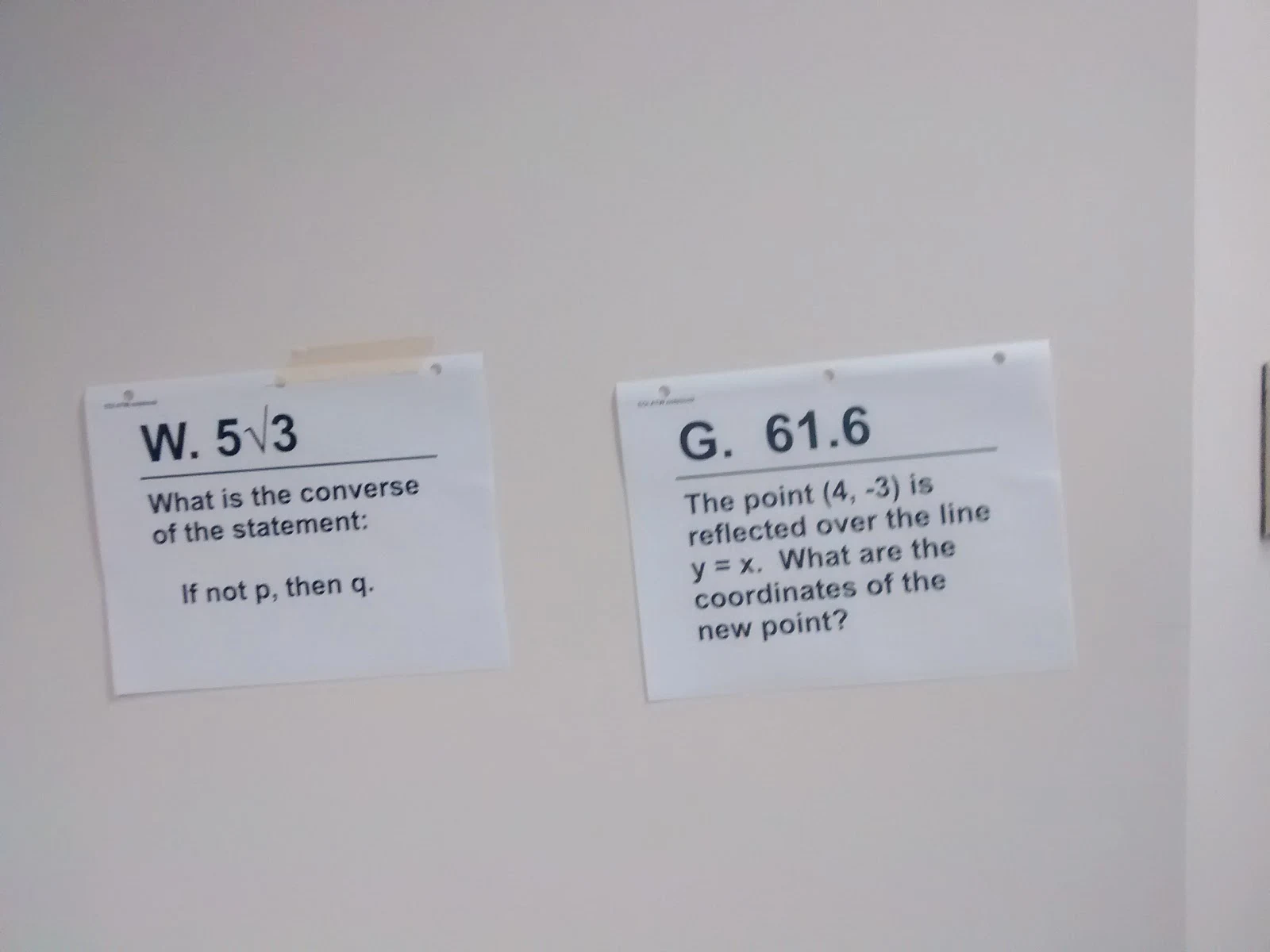
Sheets of paper are placed around the classroom. Each sheet has a problem and an answer (to a different problem.)
Students choose one poster to start at. After working out the solution to the problem on that poster, they search the other posters for the poster containing the appropriate answer. Then, they solve the problem on that poster. This process continues until you circle back around to where you started.
Picasso Polygon Portrait
Students are given a set of requirements of what must be in their self-portrait. Students MUST use a ruler when completing the project.
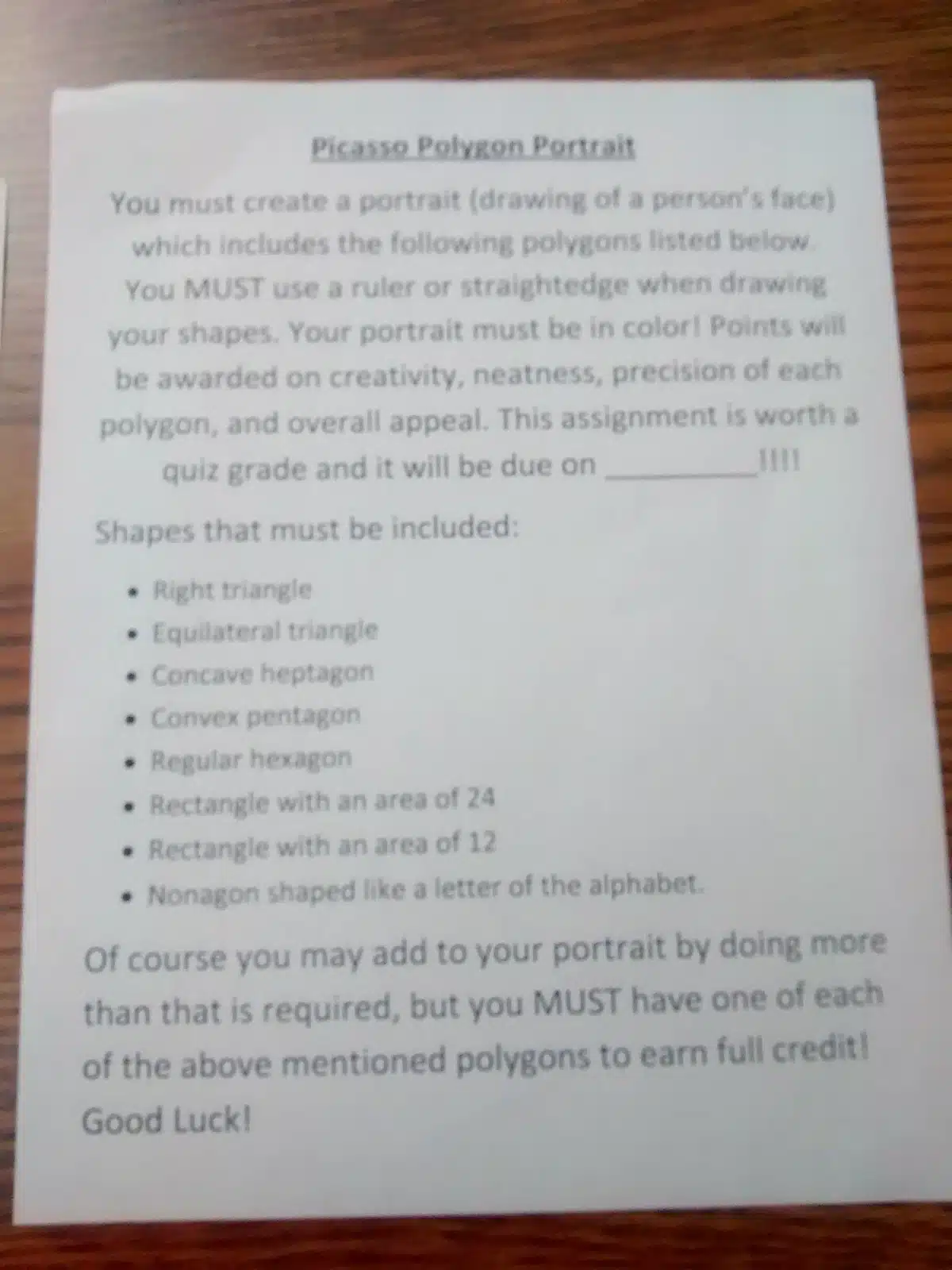
Here’s what a finished portrait looks like:
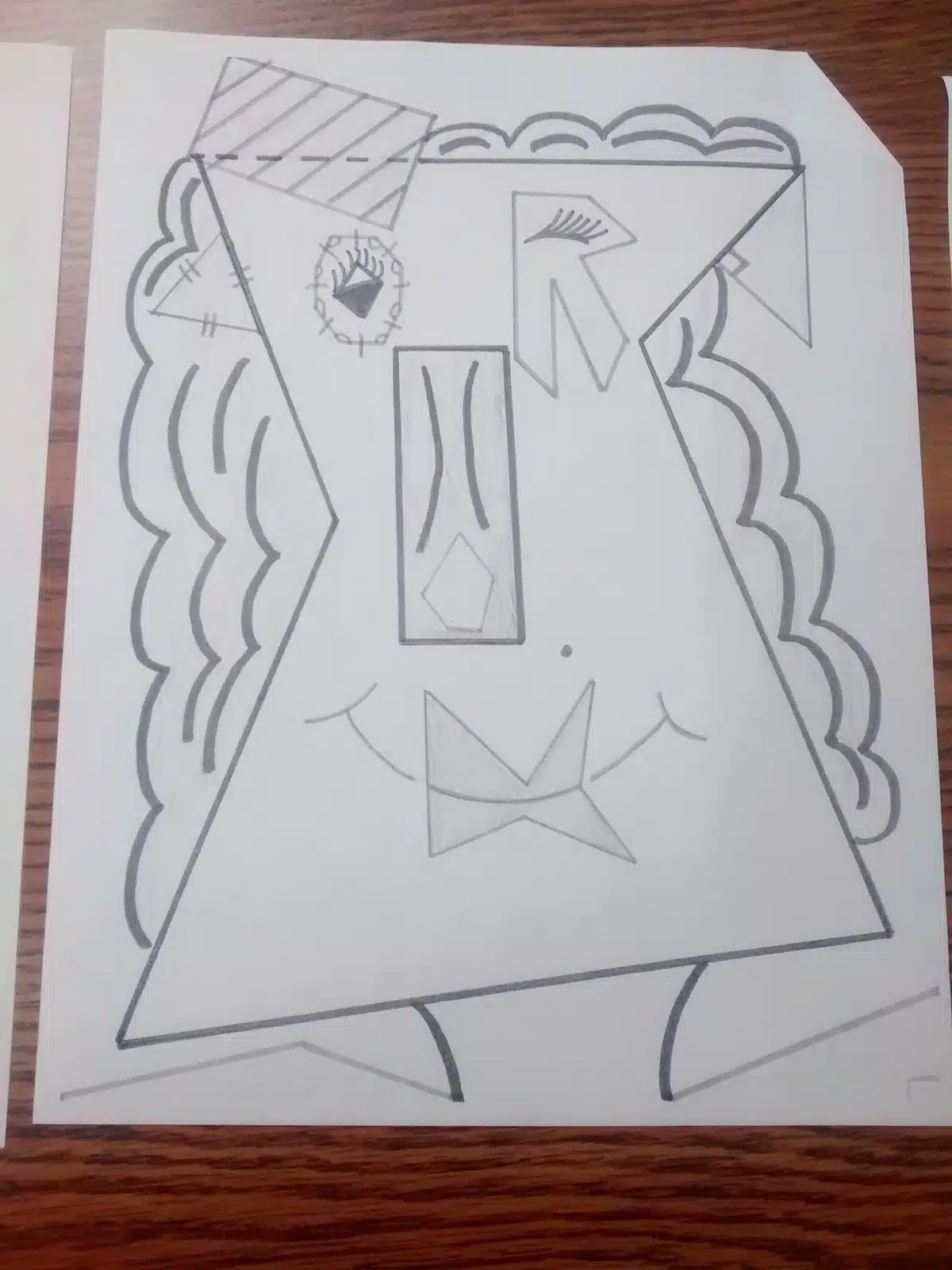
Students peer grade each other’s projects using a rubric.
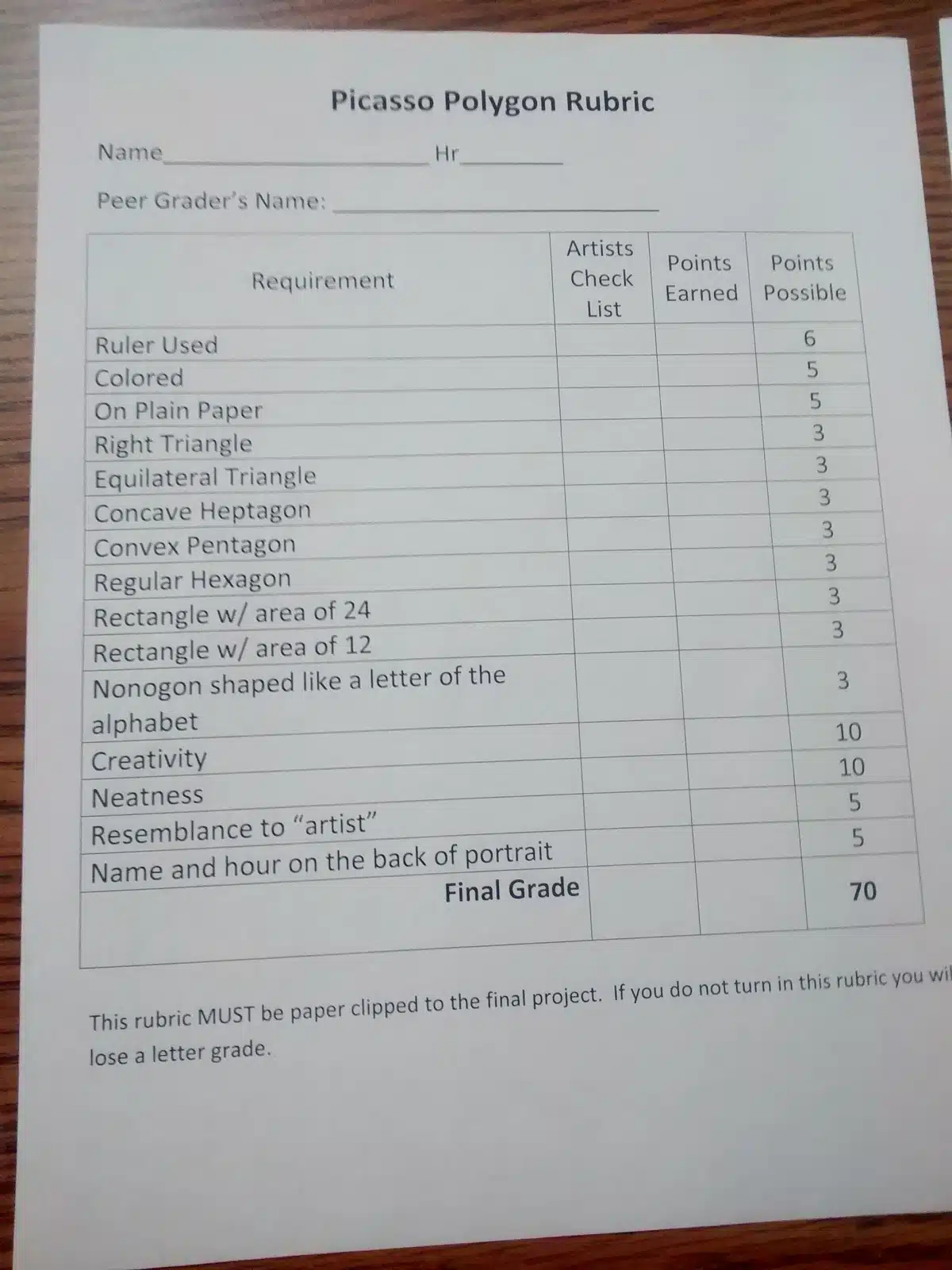
I really liked Judy’s explanation of how she has her students peer grade each others’ projects. She takes up all of the projects, shuffles them, and hands them back to students to grade. She makes sure that best friends aren’t grading each other’s work. Students use a copy of the rubric to grade another student’s project. When students are done grading, they take the original project and the rubric and deliver it to the student it belongs to. Each student looks at the rubric and decides if they agree with the grade they have been given. If a student disagrees with the way they have been graded, they take a colored sheet of paper and staple it to the top of the project with why they disagree with the grade the other student gave them. When the teacher is entering grades, he/she just need to double check the projects that have colored sheets of paper on top.
Leap Frog
The next activity we did was called Leap Frog. This was a review game that was totally new to me. That’s always exciting to experience at a conference!
Each student is given a deck of cards. This will be their answer bank. Judy suggested printing each deck on a separate color of paper. If this isn’t feasible, have the first set of students who use each deck write their initials on the back of each card. Then, if a card gets dropped in the floor during clean-up, it can easily be reunited with its friends.
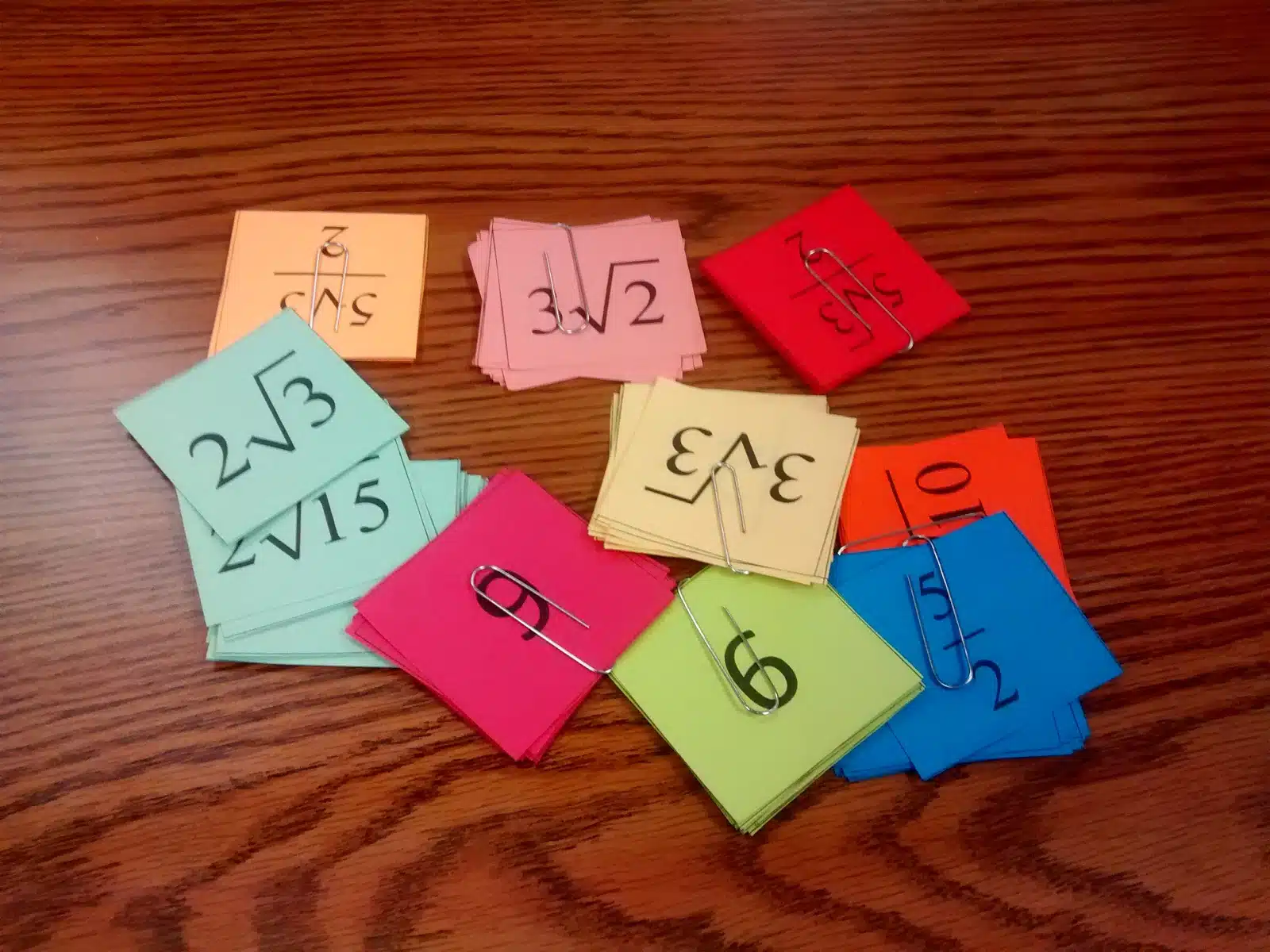
Students arrange their desks in a circle, and each student lays out their deck of cards.
We played Leap Frog around two rectangular tables. This worked, too.

A problem is projected on the board.
When a student figures out the answer (or what they think the answer is) they grab the answer card and hide it so none of their neighbors can see.
When time is called, each person compares the answer card in their hand with the answer card in their neighbor’s hand. The teacher announces the correct answer. Everyone returns their answer card to the deck in front of them. Those students who got the answer correct stand and rotate desks to the right.
The goal of the game is to be the first student to make it all the way back to where you started by “leap frogging” over other players.
The facilitator said she has used this with great success with her Pre-AP Geometry classes. I can definitely see the competitive nature of this activity working for more advanced students. But, I’m not sure if I’d want to use this with my Algebra 1 classes. I can see my IEP students getting very, very frustrated. My trig and statistics classes, on the other hand, would probably have a lot of fun with this.
Some of the audience members expressed that making up a deck of cards was too much work, and they suggested having students write their answers on a dry erase board.
One other concern I have with this activity is that I think it might be a tad bit too easy for students to cheat. I was sitting right next to Shaun, and it would have been very easy to just wait for him to pick up his answer and pick up the same answer. Of course, students can cheat with many review games by just looking at what their neighbors are doing. I guess the only person they are punishing is themselves.
The last few things we did during the hour-long workshop was to circulate between three tables with more ideas of practice activities that don’t involve just doing a worksheet. Each table had a sheet explaining each activity. Instead of trying to put each activity into my own words, I’m just posting the picture I took of each sheet.
I ended up creating a leap frog activity of my own involving exact values of trig functions.
Sorting Activities

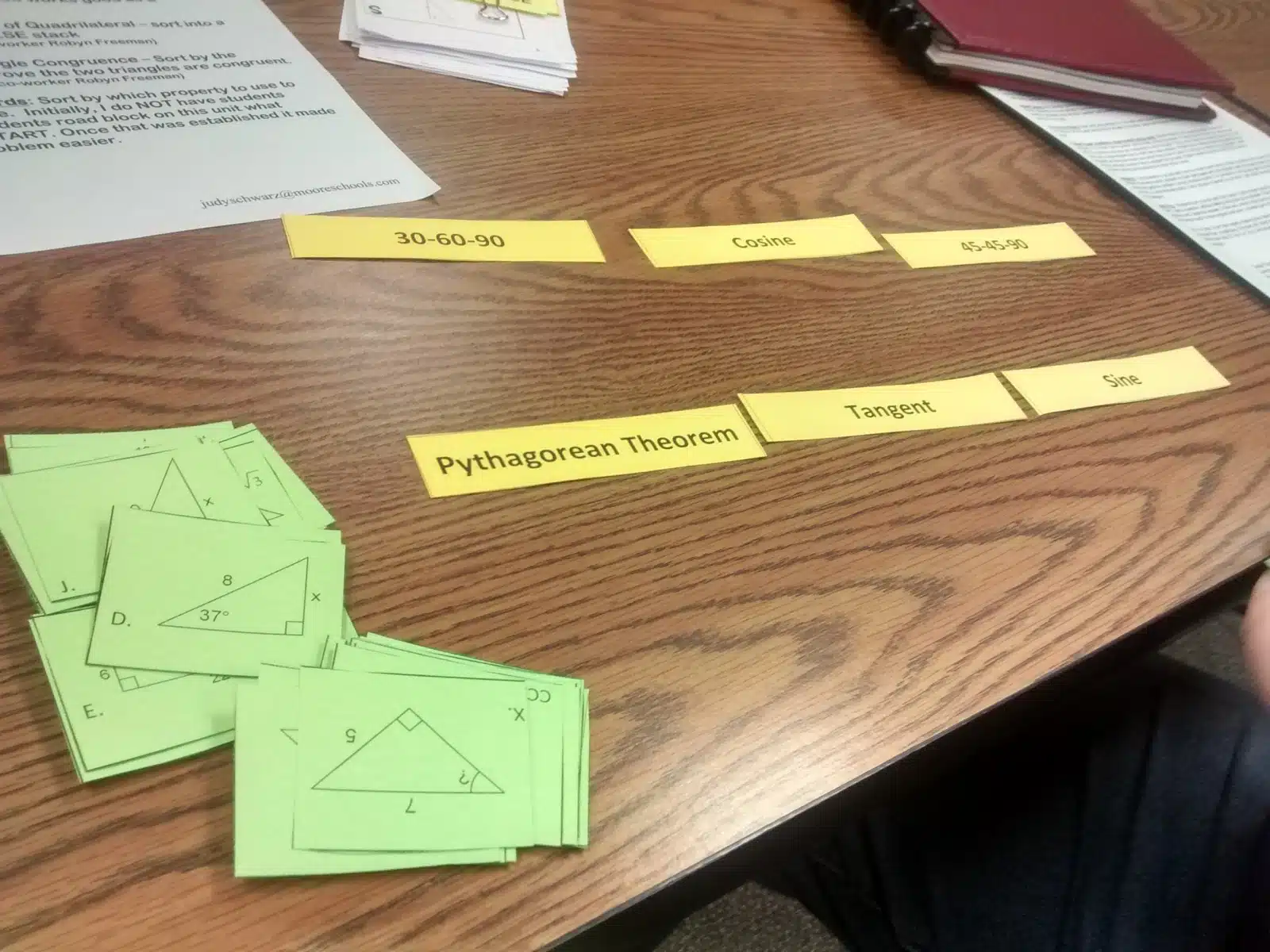
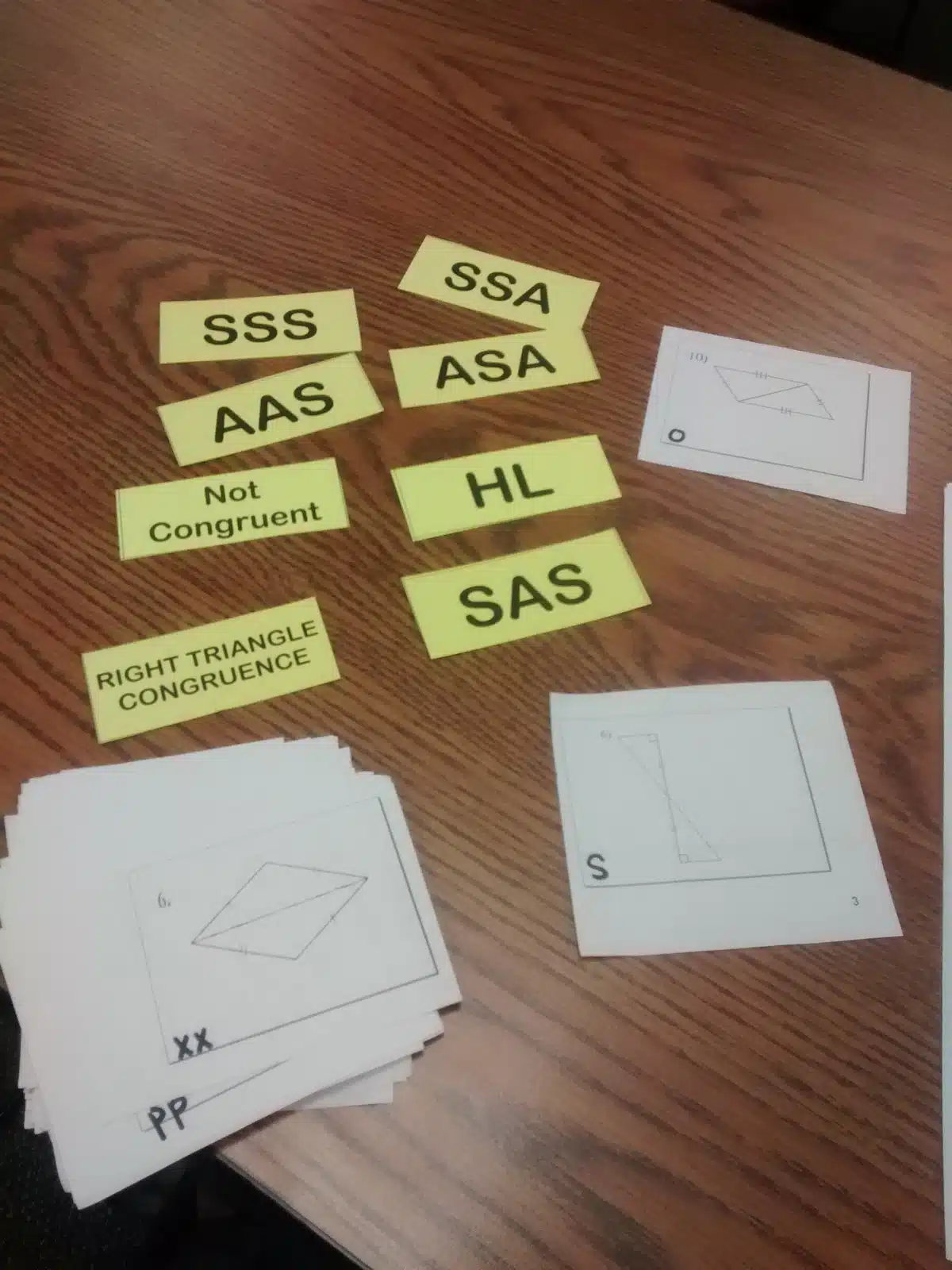
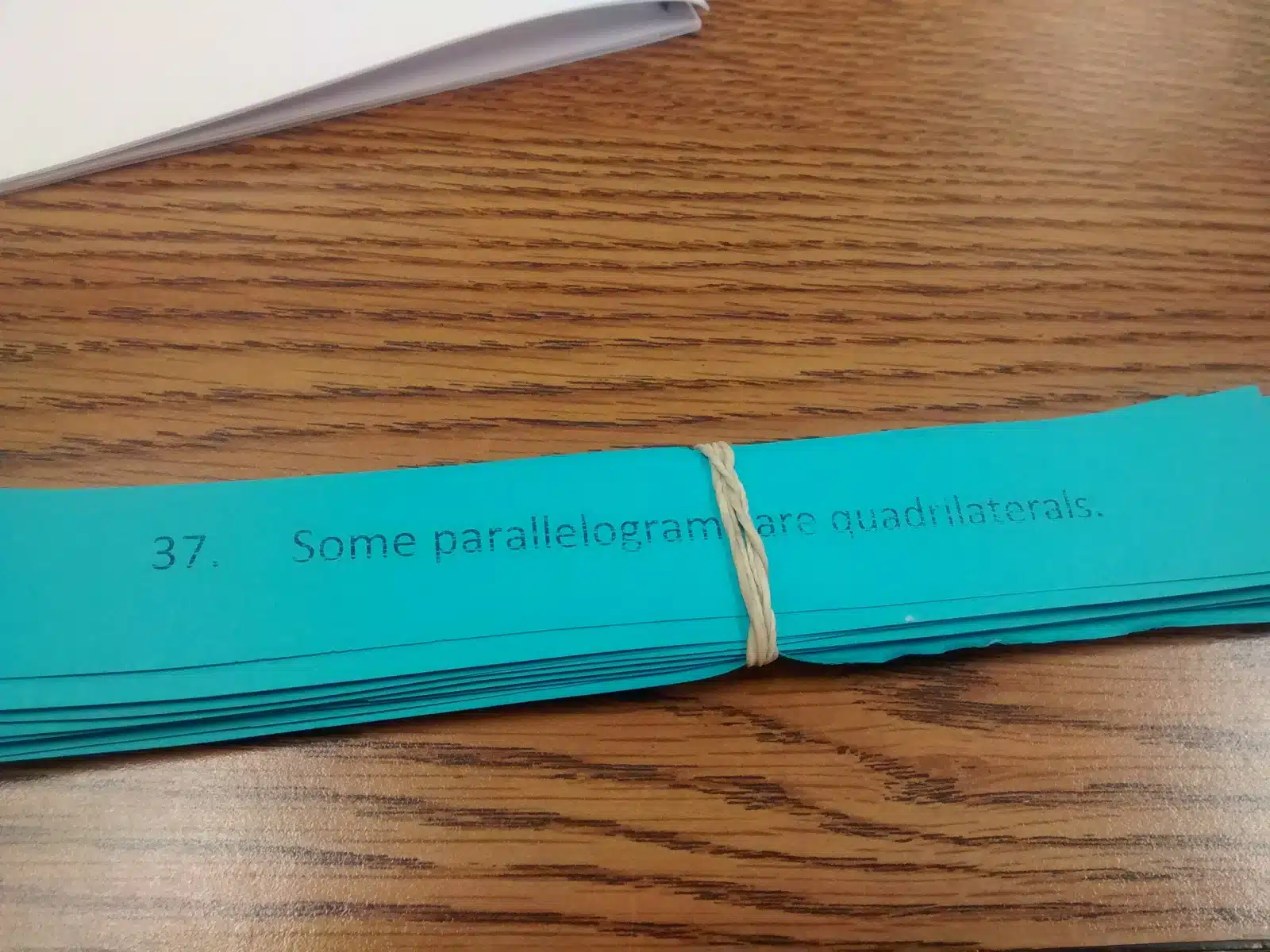
Self-Checking Activities

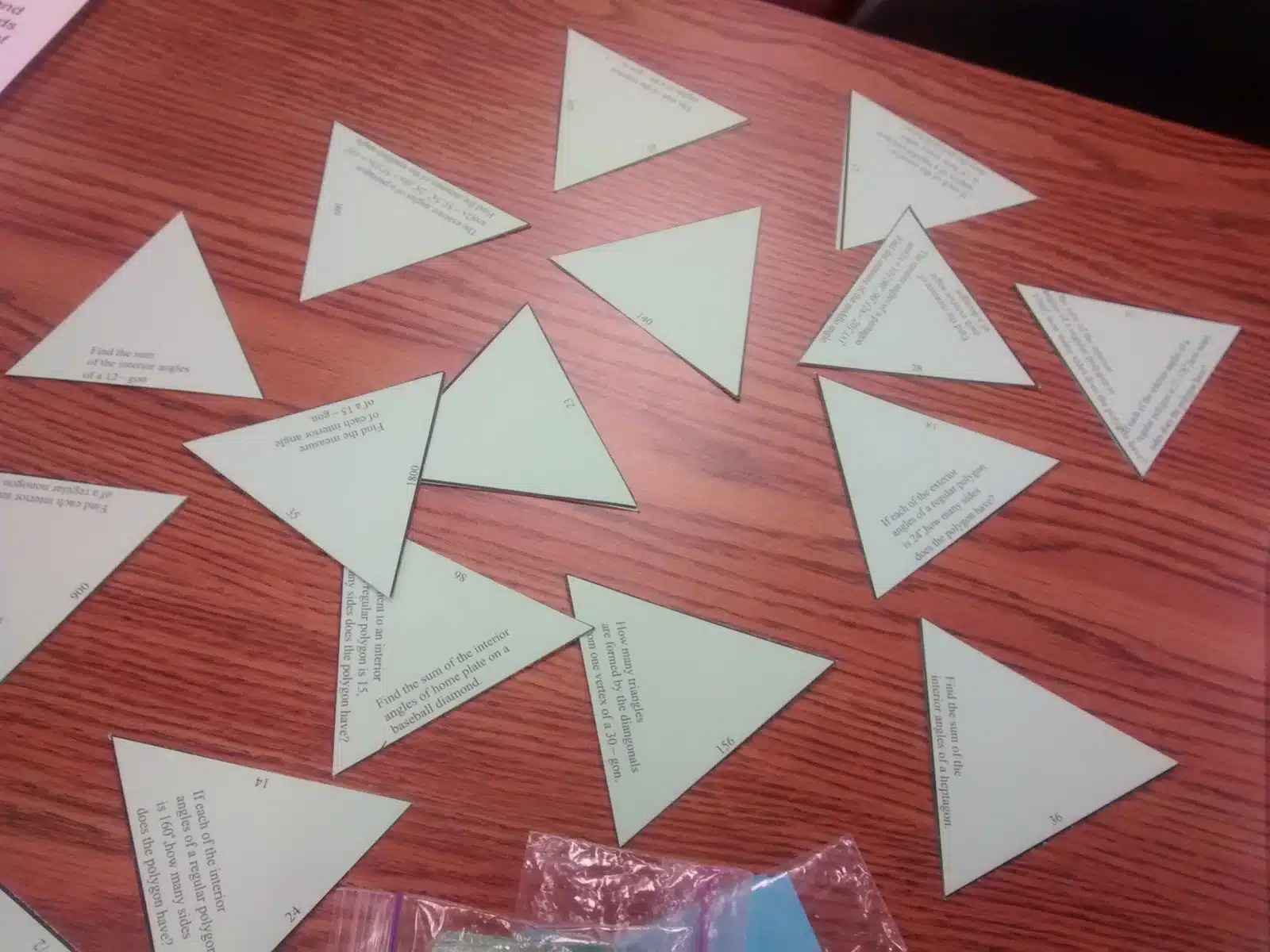
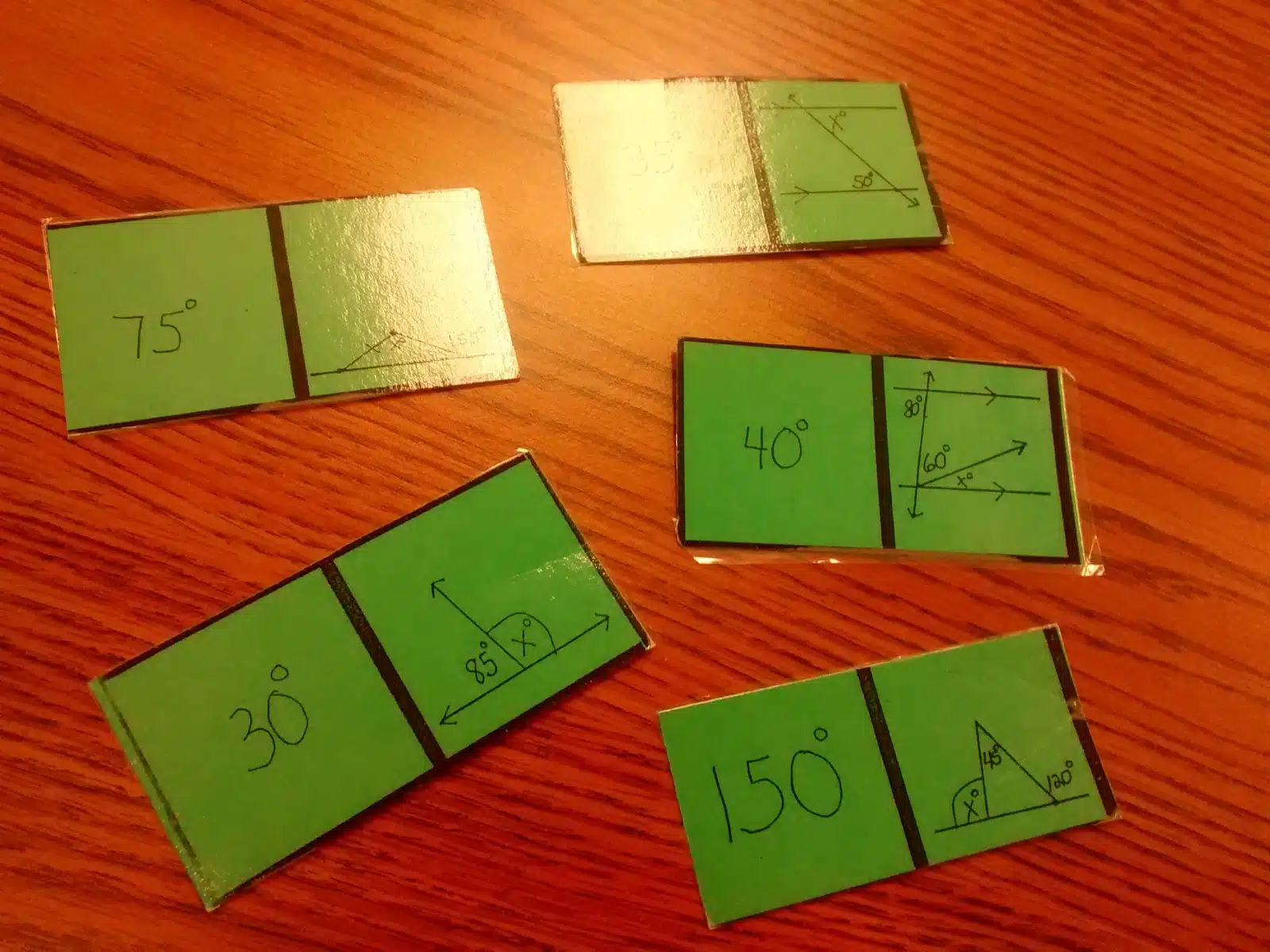

Miscellaneous Activities
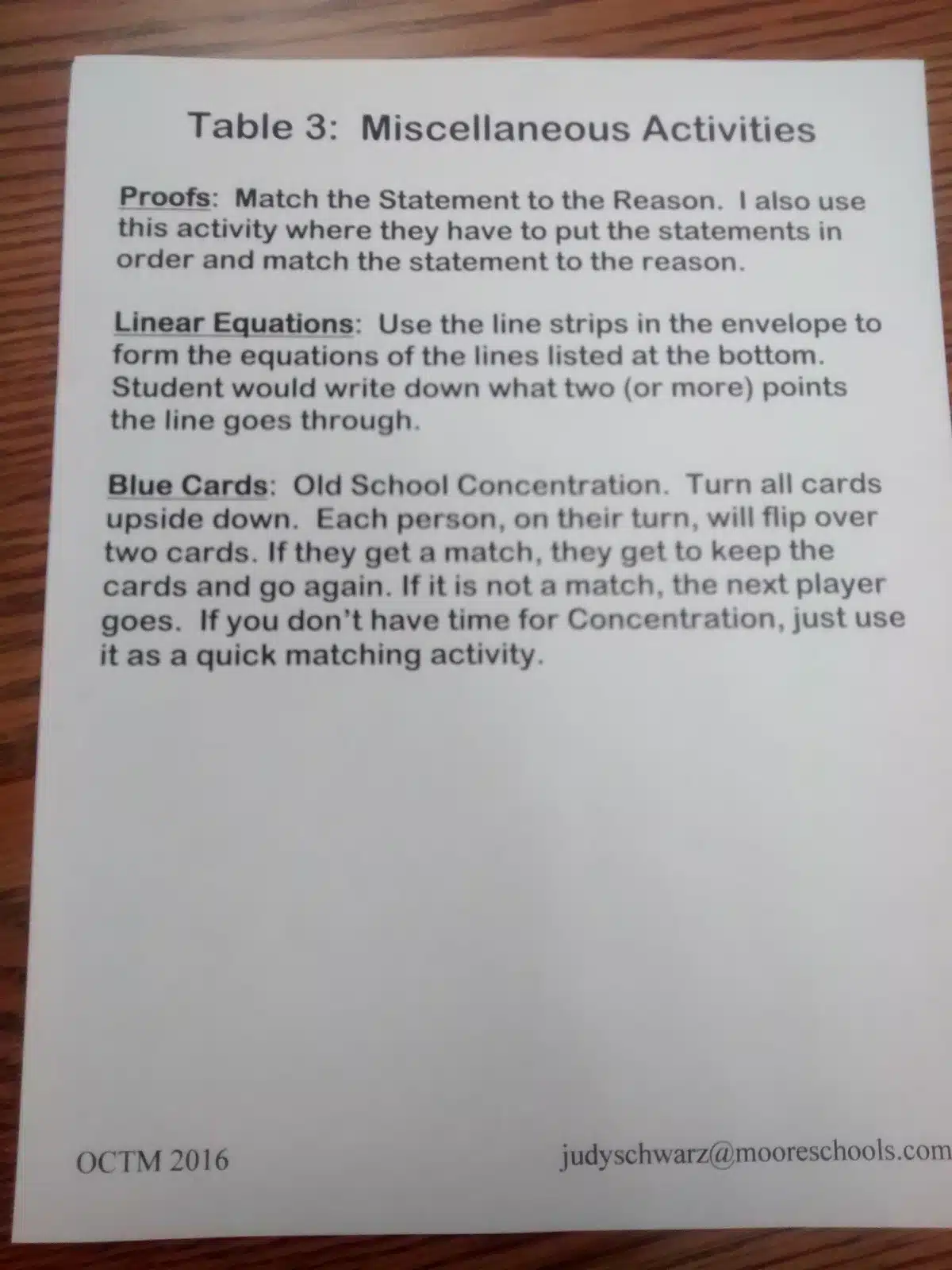

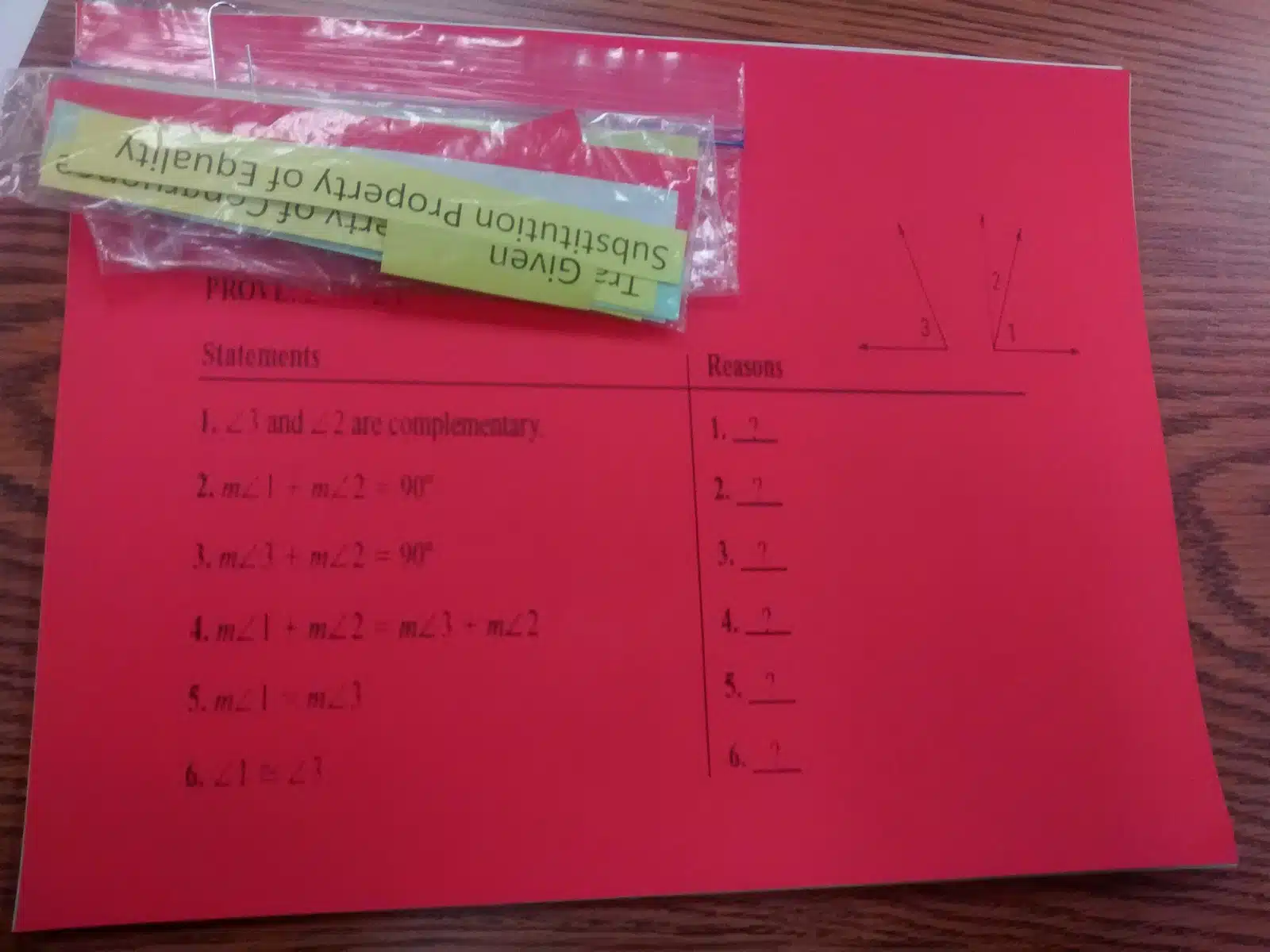
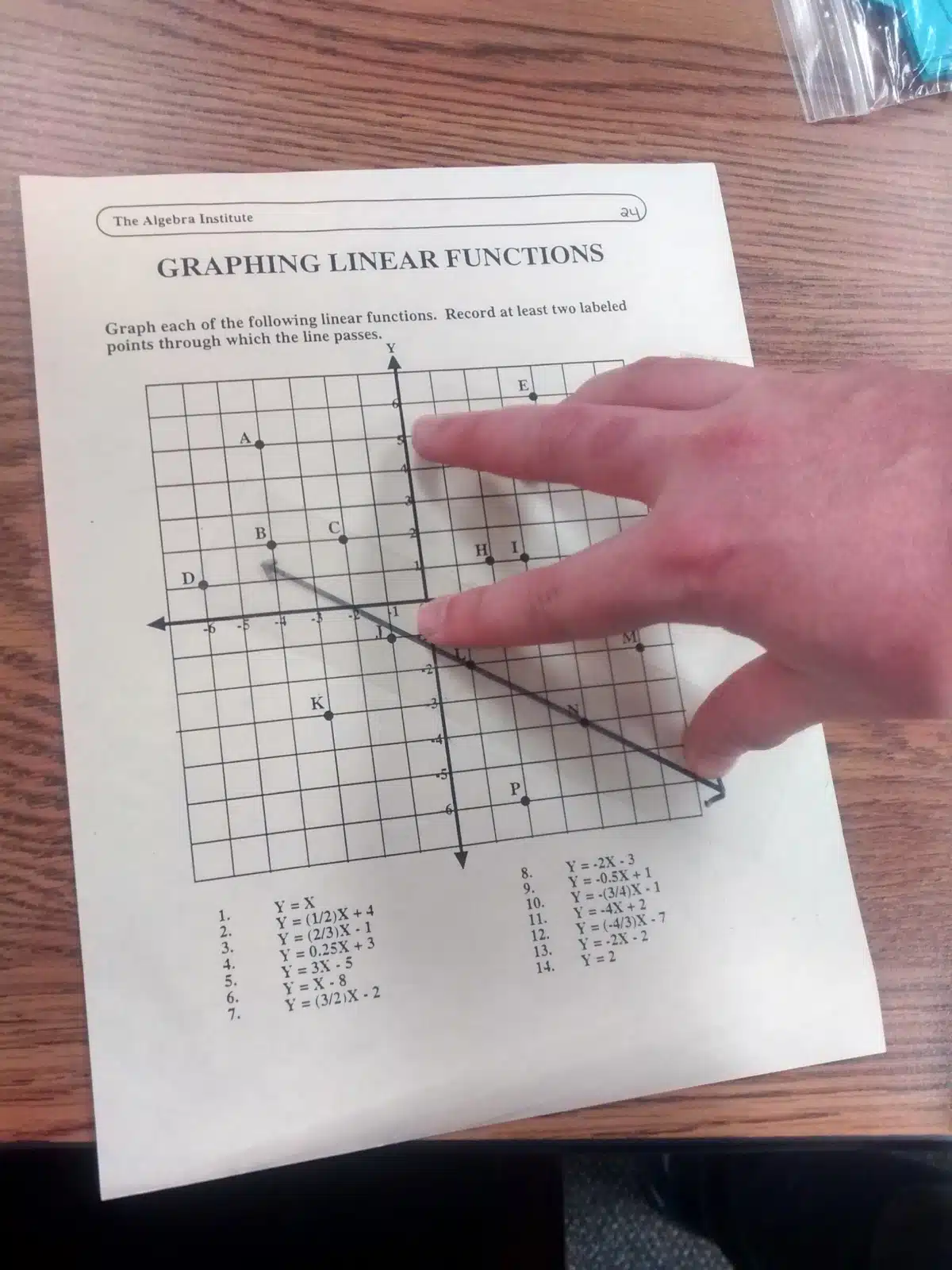
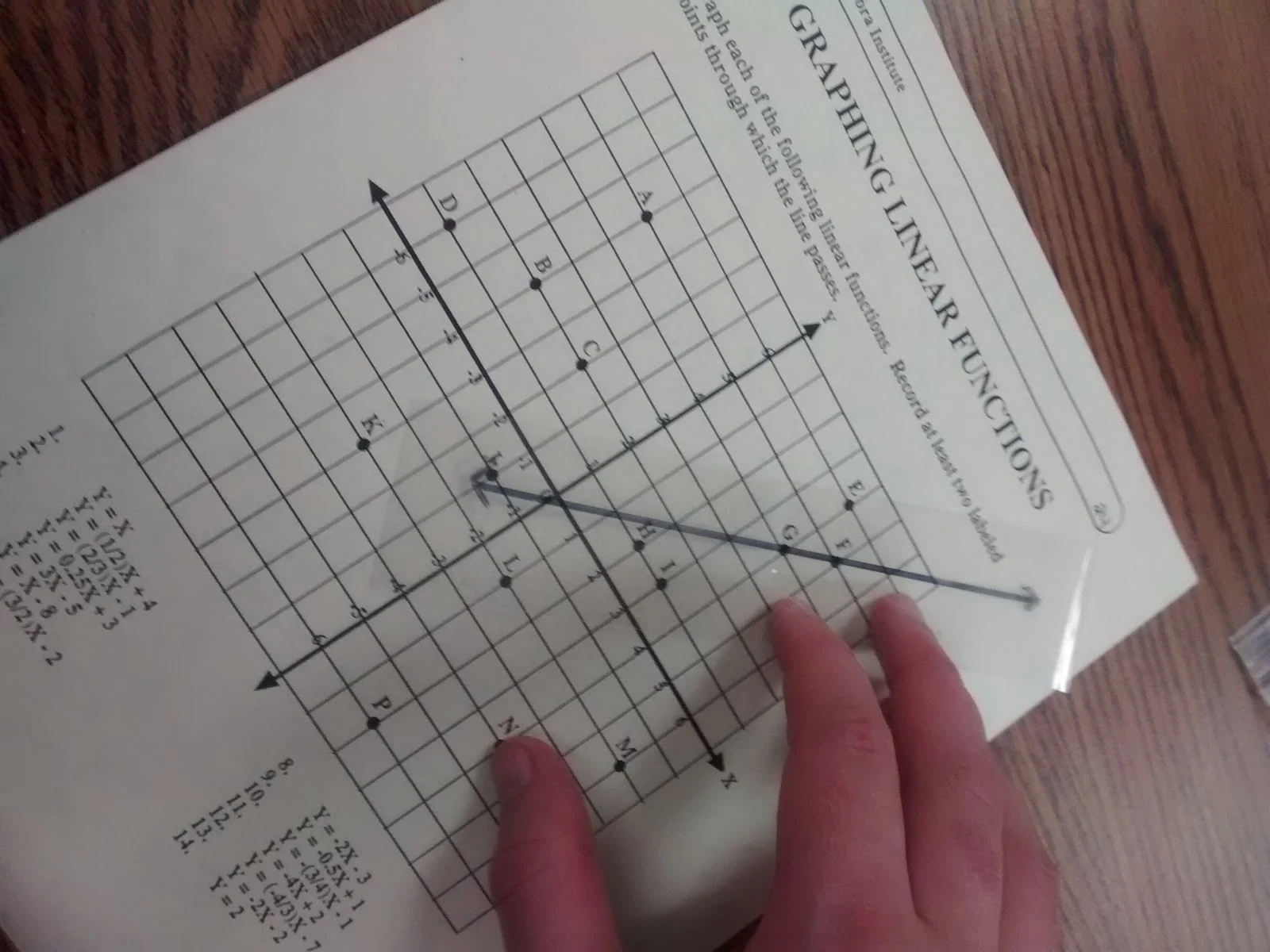
I really liked having the line on a transparency where students could just move it around. I thought this was super clever!
And, that’s a wrap. This was such an awesome session to attend!
July 3, 2016 – Summer List – June Progress Update
Can you believe it’s already July?!? I’m not entirely sure where this summer is going. Shaun and I just got back from our vacation earlier this week, so I thought it was time to post an update regarding my progress on my Summer To-Do List.

As for our vacation, we decided to head to Branson, MO for four nights followed by four nights in Little Rock, AR. It was nice to get away and play tourist for a little over a week. Plus, Shaun got to double the number of US states he has visited. We also thoroughly enjoyed not having to worry about dishes, laundry, or other household chores. I’d also say we didn’t think any about school, but that would be a blatant lie. I took my recently purchased copy of Designing Group Work: Strategies for the Heterogeneous Classroom by Elizabeth Cohen with us along with two highlighters, and I completely devoured the book on vacation.

A couple of years ago, I had decided to implement groupwork in my class. I made posters for group norms and group roles, but I never actually ended up following through on it. Sure, my students sat in groups, but they weren’t doing real group work.
I had thought that I wanted to do groupwork because it would be beneficial for my students. Reading Designing Groupwork showed me why groupwork is actually effective. And, it showed me how tricky it is to pull off effective groupwork.
The best thing about this book is that it doesn’t just stop there. It gives specific things you can do with your students to teach them how to work effectively in groups. I’ve already decided one of these activities is going to be my first day of school activity. But, more on that in another blog post!
Let’s get back to the point of this post: updating how my summer is going. As I mentioned earlier, Shaun and I enjoyed a lovely vacation. Shaun has been recapping our vacation on his Dropping the S blog. So, if you’d like to see pictures and here about some of our adventures, check them out here. How’s the rest of my Summer List going?
SBG Skill List and Quizzes for Each Subject Algebra 1 skill list is done, but I’m currently in the process of revamping it based on a presentation I attended at the Oklahoma Council of Teachers of Mathematics Summer Workshop. I still don’t know what other classes I’m teaching… No progress whatsoever on the quiz front. I am happy to (finally) announce though, that my husband will be joining me as a math teacher at Drumright next year! This has been such a hard secret to keep!

Make a Planner for Next Year DONE! I still need to blog about my planner, but here’s a sneak peek:

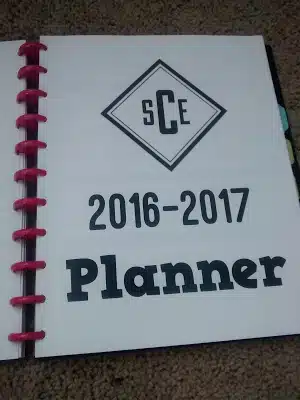

Read More In June, I read one novel and listened to three audiobooks. This isn’t a lot compared to how much I used to read, but it’s a definite improvement over how much I had become used to reading because of grad school. My favorite read (or listen) of the month was Made to Stick by Chip Heath and Dan Heath. Don’t confuse this book with the much-loved by the MTBoS, Make It Stick: The Science of Successful Learning by Peter C. Brown.
The focus of this book was to determine what makes some ideas catch on and be remembered when plenty of others die. The book discussed the stickiness of ideas in the classroom which I found very interesting. After I finished listening to the book, I kept finding myself thinking things like “That’s definitely adding to the stickiness of this idea.” Then, I felt guilty about getting sidetracked from the point the pastor was trying to make on Sunday… Here’s a PDF overview of the 6 traits of sticky ideas. If you want a sneak peek, the Heath Brothers have posted Chapter 1 for free on their website. They have also posted a 13 page PDF extension of the book on their website titled, Teaching that Sticks. This shows how each of the principles shared in the book can be applied to the classroom. If you’re a fan of Malcolm Gladwell’s books, I think you’ll really enjoy this read!
Decorate my new classroom My first task I attempted toward this was buying curtains for my new classroom. There is a huge window right behind my desk that I would like to cover up. Upon measuring the window, I found that it was approximately 90″ high. The typical curtains that you buy at the store are 84-85″ high. Looking at the curtains hung by other teachers, most of them have a 5-ish inch gap at the top or bottom of the window which I am trying to avoid. I found some 90″ curtains on Amazon and ordered them. It was sold as a “pair” of curtain panels. A bunch of the reviews said that even though it was sold as a “pair” they only received a single curtain panel. However, plenty more reviews claimed to have received a “pair.” I took a gamble and ordered them. What did I receive? A single curtain panel. I contacted Amazon, and they refunded my money with the instruction that I could keep the curtain panel I had received. Of course, I could order another one and have a “pair,” but another review said they had done that and the dye lots had not matched. So now, I possess one curtain panel. That is the sum total of my progress on decorating. So much still to be done!
Compile a list of practice structures Thank you all for helping me with this project! I have received some awesome submissions, but I am struggling to find a way to organize them that really makes me happy. I’ve tried several different formats and given up on all of them. Hmm…
Finish Changing My Name I still need to work on this…
Keep Blogging Regularly I feel like I was doing a good job of this BEFORE we went on vacation. Now that we’re back, I need to work on this some more.
Exercise More Shaun and I hiked a lot while we were on vacation. Now that we’re back home, I need to find a way to find a way to fit fitness into our regular routine. Yesterday afternoon the weather was nice, so I convinced Shaun to join me for a short walk around our neighborhood. We made a loop that RunKeeper tells me is 0.51 miles. Part of my problem is it gets soooooo hot and muggy that I don’t want to be outside at all.
Declutter the House On Father’s Day, we had lunch with my parents and grandparents. I was able to take the bags of clothes I had decluttered from my closet to my sister to see if there was anything she would like. Other than this, I haven’t made much progress.
Try New Recipes I haven’t cooked much of late because of our vacation. But, I did make One Pot Roasted Red Pepper Pasta last month that turned out really well. On our last Aldi trip, I picked up a jar of pesto that I didn’t really have any specific plans for. I used that to make some pesto pizza rolls with onions, mushrooms, black olives, and leftover roasted red peppers from the pasta experiment. Other than the fact that the wax paper wanted to stay stuck to the dough, they were so yummy! Also of note, I made my first loaf of bread in the bread maker. Since the bread maker was Shaun’s birthday present from his family, he read the manual and has been the bread machine expert. After we got back from vacation, I decided to bake a loaf of bread by myself while he was mowing the lawn. I’m happy to report that it was a success! I also made a new-to-me dish (as in I knew it existed as a dish but I’d never made it before) without a recipe the other day. I made vegetarian chili in my cast-iron skillet and topped it with cheesy-corn-and-jalapeno cornbread. Shaun declared it a very American dish!
Come Up with a Housework System I downloaded a “Habits” App to my phone that I’ve been using to try and build habits. I’ve been tracking things like making the bed, doing a daily load of laundry, washing the dishes, flossing, taking my multi-vitamin and pro-biotic, sweeping the kitchen, swishing and swiping the bathroom, and reading my Bible. I wasn’t sure how motivated I would be by the check mark system, but I think it’s definitely working! I’ve gone from being a person who regularly thought “I should floss. Oh, I’ll do it tomorrow.” to a person who has flossed 22 days in a row. Of course, it’s not magical. My “best streak” for doing the dishes is 2 days in a row. And, my daily goal of sweeping the kitchen has occurred a grand total of 4 times. But, progress is being made! — Oh, and one other exciting thing happened in June: My diploma for my master’s degree showed up in the mail!
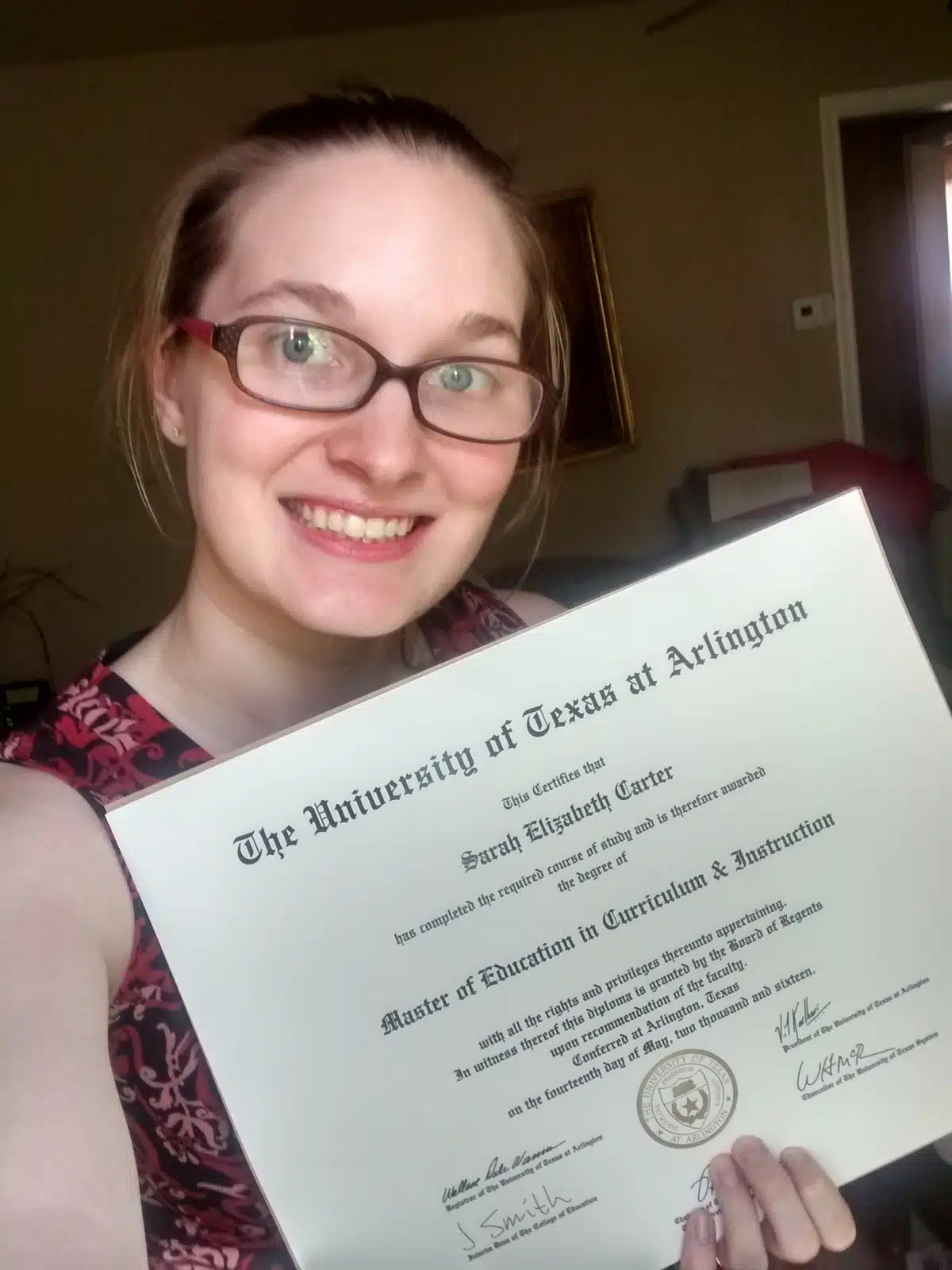
July 15, 2016 – ReadThree – Crime Scenes, Cubic Meters, and Trigonometry
Earlier this summer, I read Pam Wilson’s Read Three posts. Her goal was to find three new math teacher blogs to read and pick a favorite post from each to blog about. I enjoyed reading her posts and thought to myself that I should try this myself. Then, I kinda forgot about it.
Yesterday, I clicked on a name in tweetdeck that I didn’t recognize and quickly saw that this person had a blog I also didn’t recognize. Soon, I was reading and ran across an awesome post. This reminded me of Pam’s posts. (Okay – in all honesty, I had to go back to her blog and figure out what she had called her posts!)
So, here’s my first #ReadThree adventure. To find new math blogs to read, I’m scrolling through the twitter profiles of people I follow to look for new-to-me blogs. _____
Clara Maxcy blogs at The 30th Voice. She’s been blogging since 2013, but I only somehow just happened on her blog. The post that stuck out to me the most (probably because I’m teaching trig again next year!) is titled Murder Mystery Solved with Trig!
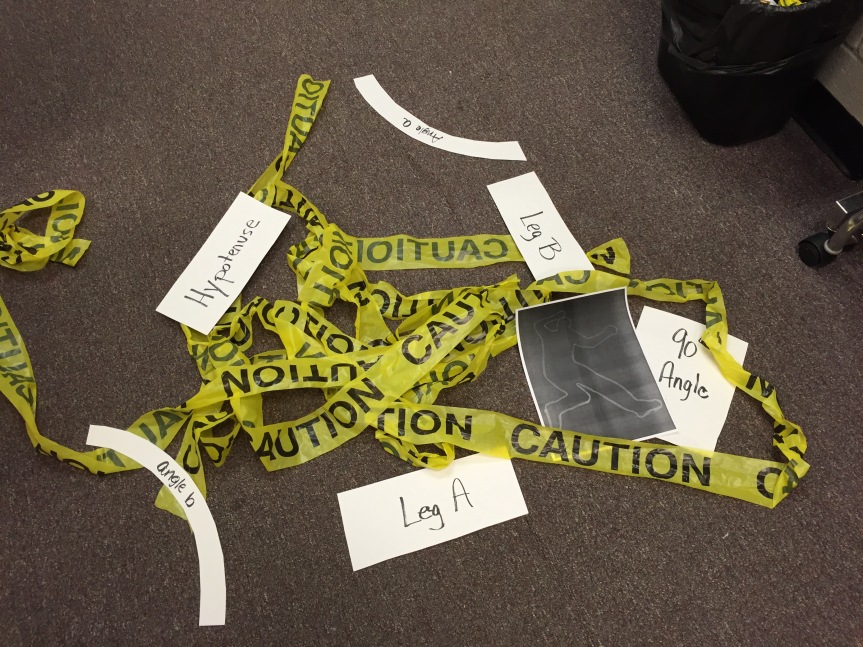
I love that this activity gets kids up and moving and talking about trig. The pieces you see amidst the caution tape are given to students before the murder mystery begins and they are asked to reconstruct the triangle. How brilliant is that?!? Then, the students are asked questions like “Who is opposite of Angle A?” I also love how this activity emphasizes that a single leg can be both the opposite leg and the adjacent leg under different circumstances. I definitely want to incorporate an activity like this in my trig class this year. Now, off to see if Amazon sells caution tape… _____ Mardalee Burwitz blogs at Math-n-Science=WAHOO! As I was scrolling through her blog posts, a picture of some students with a bunch of meter sticks caught my eye.

Mardalee’s students were solving a textbook problem where the answer was a cubic meter. Her students were wondering just how big a cubic meter was. Her students built a model of a cubic meter to help their fellow students picture it. My students have always struggled with square and cubic units of measurement. This has always frustrated me. But, now I’m realizing that I’ve never used that as an opportunity to show my students the difference between an inch, a square inch, and a cubic inch. I definitely want to do something like this next year! Here’s the link to Mardalee’s full explanation.
My last new blog for the day is John Rowe‘s How I teach maths. Guess what post stood out to me first? Yup. Another trigonometry post. I guess it was the title of his post that first caught my eye: The Best Worksheet I have ever Rewritten. In this post, John takes a few basic trigonometry problems and completely turns them on their head. Instead of asking a question, John gives his students four answers and asks them to come up with the questions that could be answered that way.
This type of problem

becomes

So much more thinking going on here. And, I can’t wait to try this out in my own classroom!
I have to say that this turned out just as fun as I thought it would be! So, be on the lookout for more #ReadThree blog posts in the future!
July 18, 2016 – New Name Poster
I’ve had the same sign outside of my classroom for four years now. In fact, it was one of my first classroom creations as a first-year-teacher.
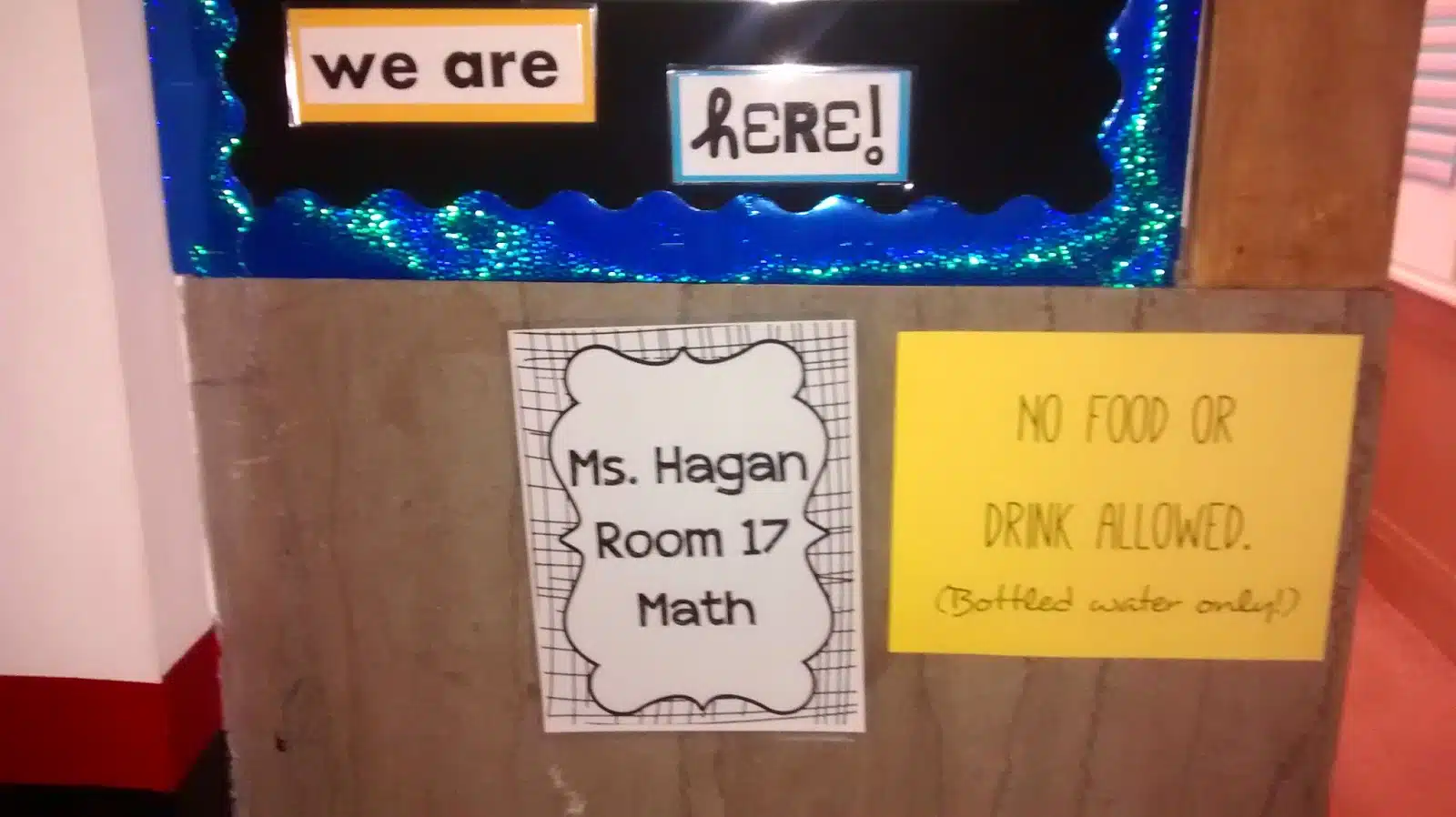
The problem is 1) I am no longer Ms. Hagan and 2) I no longer teach in Room 17.
A new classroom and new school building means it’s time for a new name sign outside my classroom!
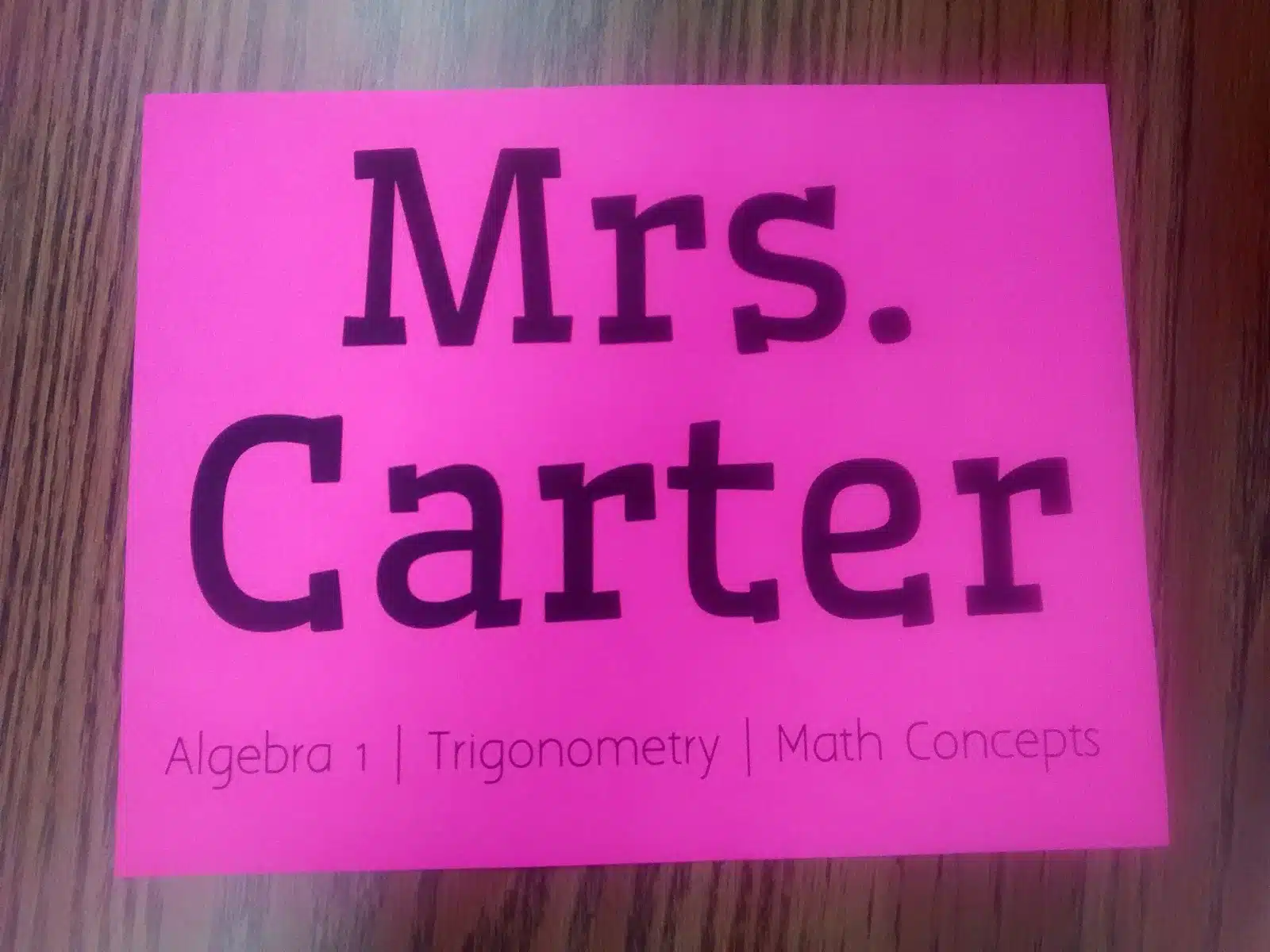
Here’s the picture I took pre-lamination. It’s already hanging outside my classroom door next to my new math-y welcome posters, but I forgot to take a picture before leaving school.
Oh, and by the way, this makes me realize that I haven’t announced on my blog what I’ll be teaching next year yet. I have 3 sections of Algebra 1, 1 section of Trigonometry, and 2 sections of Math Concepts. Math Concepts is a class we’re creating for our 9th graders who have not demonstrated that they are ready for Algebra 1 yet. I’m super excited to teach this new-to-me class because it means we can really sloooooooooooow down and focus on the basics of algebra without the stress of “covering” all of the standards.





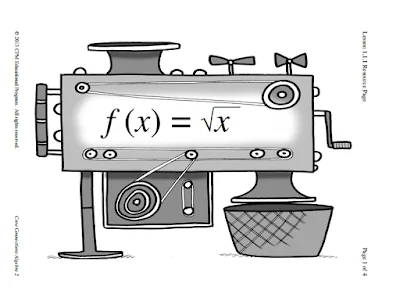
Unknown
Thursday 10th of September 2015
I just received my order of snap cubes to do Hotel Snap with my 6th grade students. I totally understand!!!
Sarah Carter (@mathequalslove)
Monday 14th of September 2015
I'm soooooo excited!
poppy56
Thursday 10th of September 2015
Wow love these.....I have some but what a treat!
Sarah Carter (@mathequalslove)
Monday 14th of September 2015
A definite treat!
big life in a tiny town
Sunday 6th of September 2015
I am going to Barnes and Noble today to see if they have the Kagan Algebra 1 book. Cross your fingers!
Sarah Carter (@mathequalslove)
Monday 7th of September 2015
Hope you find a copy!
Leah Ardis
Sunday 6th of September 2015
Oh my goodness! I want those conic sections! Ha. And a mini review or post about how you used lessons with that cooperative learning algebra 2 book would be great.
Sarah Carter (@mathequalslove)
Monday 7th of September 2015
I know! I'm so excited to use them! I'll add the cooperative learning idea to my list of things to blog about!